

Argentina in March
Home > Blog > Argentina in March
Argentina is one of the most popular countries in South America to visit on holiday, with a range of exciting modern cities, beach destinations and rugged natural landscapes. Whether you’re visiting for the food, the wine, the tango or the hiking opportunities, there’s so much to discover up and down this brilliant part of the world.
The seasons in Argentina are opposite to those in the northern hemisphere, so March sees the end of summer and the start of autumn arrive in the country. This makes it a brilliant time of the year to visit; the weather is warm but not too humid, the crowds are thinning out and the seasons are starting to change in a riot of beautiful colour.
Jump to…
Reasons to Visit Argentina in March

- March is the start of the shoulder season for tourism in Argentina, so things won’t be as busy or as expensive across the country when you visit
- One of the most interesting cultural festivals in Argentic, the Carnival of the Devils, often takes place at the start of March and is a fascinating traditional event
- Temperatures across the country are in the low twenties and offer ideal conditions for enjoying the landscape and getting out into Argentina’s countryside
Weather in Argentina in March

Argentina is quite a large South American country, and therefore the climate across its different regions does vary quite a bit. The north of Argentina remains quite subtropical in March, although humidity is starting to drop as autumn progresses, whilst the south of the country starts to get cool and dry quite rapidly. Central Argentina is just coming out of its wet season in March, whilst the Andes mountains and surrounding landscape in the west are very dry and mild.
Temperature
The average high temperature in the northern city of Buenos Aires is 26°C in March, with an average low of only 18°C. In the southern Patagonia region, the average high is 24°C and the average low is 11°C, and temperatures in the central parts of the country tend to be even hotter, with average highs of around 28°C.
Sea Temperature
The average sea temperature on the northern coast of Argentina is around 22°C in March, and many people begin to venture out into swimming in the sea in these refreshing conditions. Further down the country, the sea is only around 14°C which most swimmers will find too cold, especially since the air in the south of Argentina is cooler in March as well.
Clouds and Rainfall
There are between 7 and 9 days of rain on average in Argentina in March, with wetter conditions expected in the north and western parts of the country. Rain showers can last for a couple of hours so it is strongly recommended that you bring an umbrella or waterproof coat with you to Argentina so you aren’t caught totally unprepared.
Sunshine Hours
There are around 7-8 hours of sunshine across Argentina every day in March, with cloudier conditions expected in the north of the country and clear skies more common in the south. Sunrise is usually just before 7 am and sunset ranges from 7.30 pm to before 7 pm as the days get shorter.
Where to go in Argentina in March

Buenos Aires
Often referred to as ‘the Paris of the South’, Buenos Aires is the most famous city in Argentina and a brilliant place to base yourself for a holiday. The weather conditions in March are perfect for walking around and sightseeing as temperatures aren’t too high and chances of rain are decreasing as the month progresses, meaning you can get out and about as much as you like.
Highlights of Buenos Aires include the central Plaza de Mayo, the artistic streets of La Boca and the impressive presidential building known as Casa Rosada. You can also venture out to smaller coastal towns and cities from Buenos Aires and enjoy days at the beach before returning to your accommodation and taking your pick of the city’s nightlife.
Mendoza is the name of both the province and the capital city that are found in the west of the country. The region is best known for its vineyards and wine production, and March is one of the most beautiful times of the year to visit the area and enjoy its produce.
There are many opportunities for wine tasting sessions and vineyard tours in Mendoza in March, particularly if you visit at the start of the month when the annual grape harvest festival is celebrated. The mild weather during the month is also great for those who want to get out into the countryside, whether that’s on a hike, a bike ride or even a tour on horseback.
Things to do in Argentina in March

Explore the Andes
Whilst most travellers won’t be prepared for a full-on trek across the entire Andes mountain range, you can still enjoy smaller hikes through the deserts, around the lakes and up the sides of the numerous peaks that line the western side of Argentina. The weather in the Andes in March is warm and pretty dry, providing ideal conditions for more gentle strolls as well as proper hikes for visitors who like a challenge.
Visit the Glaciar Perito Moreno
The Glaciar Perito Moreno is one of the most stunning natural attractions in all of Argentina, found in the Parque Nacional Los Glaciares. This glacier is changing and growing every day, and its impressive scale is unlike any other phenomenon you’ll have ever seen. Make sure to bring your camera!
Find Culture in Córdoba
If outdoor adventure isn’t really your scene, or you just need a break from intrepid expeditions, then the city of Córdoba is a great place to go and enjoy some of the finest culture in Argentina. With a huge array of galleries, a thriving cinema scene and plenty of independent shops and markets, this is a brilliant place to come and broaden your mind and enjoy some of the best art and produce in the country.
Crowds & costs
The peak season for tourism in Argentina is between November and February when temperatures are high and the weather is perfect for spending time outdoors. March is the first month of the shoulder season so you can expect the country to still be a bit busy, but things should die down as April approaches.
Prices for accommodation and travel won’t be as low as they are in the off-season for tourism in Argentina, but they also won’t be as high as they have been during the country’s summer months. It’s a great time of the year to explore the more rural parts of Argentina, where you’ll also find a lot more peace and quiet than in the cities and towns.
March festivals & events

Carnival of the Devils
Held in the north-west city of Tilcara in the Jujuy Province, the Carnival of the Devils is an ancient traditional festival that is usually celebrated at the end of February or the start of March. Stemming from the belief that it is the devil who inhabits the sun that fertilises the earth, the carnival is a ritual celebration of thanking Mother Earth and giving her offerings so that she continues to provide.
The Carnival celebrations begin in an ancient cluster of rocks, where the people of Tilcara pass around a devil effigy to symbolise fertilising the earth. There is a procession of men all dressed up in devil costumes through the streets after this ceremony, followed by nine days of events and activities until the figure of the devil is buried.
Mendoza’s Grape Harvest Festival
The province of Mendoza is Argentina’s biggest wine-producing region, and the start of autumn marks the beginning of the grape harvesting season. Whilst harvest usually begins at the end of February, the official festival to celebrate the produce usually happens at the start of March each year, and has been held for centuries.
Events of the wine festival usually include a religious ceremony to bless the fruit that has been gathered, the election of a harvest queen from every Mendoza district who then take part in a parade, and a huge final celebration that involves live music, dance and food. And of course, you can expect the wine to be flowing freely throughout the festival, so if you’re something of a connoisseur then you won’t want to miss this!

Frequently asked questions about Argentina in March
What season is it in argentina in march.
Argentina is a country with four distinct seasons that occur at opposite times to those in the northern hemisphere, and March falls within the Autumn of the country. Weather conditions are cooling down from the summer months and there is still a chance of some rain, although this is less likely in the south.
What is the coldest month in Argentina?
July is the coldest month of the year in Argentina, with June following as a close second. Temperatures during these winter months are usually between 5°C – 8°C and snow is common in some parts of the country.
Argentina is a brilliant holiday destination because of the range of experiences on offer to every traveller, whether you want wild adventure, to relax on the coast or to enjoy the modern culture of cities like Buenos Aires. Visiting in March is ideal if you’re not too bothered about the summer heat and instead want to see the best of the country’s scenery and enjoy getting outdoors and soaking up the range of stunning landscapes.
Want to find out more about the top destinations in America to visit in March? Read our guides to LA and Panama , or take a look at our rundown of Where to Go in March .
Related posts

The 100 Best Mexican Restaurants in the USA, According to Instagram

The Best Honeymoon Destinations in May

The Best Honeymoon Destinations in December
Some of the links on this page are affiliate links, which means we can earn a small commission when our visitors click on them. This helps us to keep our content free and accessible for everyone, but you’ll never be charged for engaging with them.

About Contact Blog

© 2020-2024 The Travel Aisle


Things to do in Argentina in March
Navigate forward to interact with the calendar and select a date. Press the question mark key to get the keyboard shortcuts for changing dates.
Navigate backward to interact with the calendar and select a date. Press the question mark key to get the keyboard shortcuts for changing dates.
Looking for a different month?
March is a good time to visit Argentina .
Argentina has plenty to offer for visitors of all ages and interests. In this article, we tell you the top things to see and do for your March trip to Argentina. Get inspired by the events, activities, attractions, and experiences unique to March. We’ll let you know where to explore events based on your interests, whether that’s food, culture, art, music, sport or others.
Table of contents
- Experiences
- Attractions

Best events and things to do in Argentina in March
Top experiences in march, holidays in argentina in march.
- Ramadan Start ( March 1 )
- Carnival / Shrove Monday ( March 3 )
- Carnival / Shrove Tuesday / Pancake Day ( March 4 )
- Memorial Day ( March 24 )
Other notable holidays
- Day of the Veterans ( April 2 )
- Passover Eve ( April 12 )
- Good Friday ( April 18 )
- Sixth Day of Passover ( April 18 )
- Easter Sunday ( April 20 )
- Action Day for Tolerance and Respect between People ( April 24 )
- Labor Day / May Day ( May 1 )
- National Day/May 1810 Revolution ( May 25 )
- Commemoration of General Don Martín Miguel de Güemes ( June 17 )
- Flag Day ( June 20 )
- Independence day ( July 9 )
Best attractions for Argentina in March

What's the weather like in Argentina?
It depends on when you visit! We've compiled data from NASA on what the weather is like in Argentina for each month of the year: see the links below for more information.
- Weather in Argentina in January
- Weather in Argentina in February
- Weather in Argentina in March
- Weather in Argentina in April
- Weather in Argentina in May
- Weather in Argentina in June
- Weather in Argentina in July
- Weather in Argentina in August
- Weather in Argentina in September
- Weather in Argentina in October
- Weather in Argentina in November
- Weather in Argentina in December
Explore nearby places
- Ataliva Roca
- General Acha
- Jacinto Arauz
- Eduardo Castex
- Trenque Lauquen
- General Pico
- Coronel Suarez
- Villa Ventana
- Sierra De la Ventana
- Saldungaray
- Bernardo Larroude
- General Daniel Cerri
- General Villegas
- Bahia Blanca
- Coronel Pringles
- Rio Colorado
- San Carlos de Bolivar
All related maps of Argentina
- Map of Argentina
- Map of Macachin
- Map of Ataliva Roca
- Map of Santa Rosa
- Map of Carhue
- Map of Guatrache
- Map of Toay
- Map of Puan
- Map of General Acha
- Map of Guamini
- Map of Jacinto Arauz
- Map of Pigue
- Map of Eduardo Castex
- Map of Trenque Lauquen
- Map of General Pico
- Map of Coronel Suarez
- Map of Tornquist
- Map of Villa Ventana
- Map of Victorica
- Map of Pehuajo
- Map of Sierra De la Ventana
- Map of Saldungaray
- Map of Bernardo Larroude
- Map of Medanos
- Map of General Daniel Cerri
- Map of General Villegas
- Map of Bahia Blanca
- Map of Coronel Pringles
- Map of Rio Colorado
- Map of San Carlos de Bolivar
- Map of Puelches
Argentina throughout the year
- Argentina in January
- Argentina in February
- Argentina in March
- Argentina in April
- Argentina in May
- Argentina in June
- Argentina in July
- Argentina in August
- Argentina in September
- Argentina in October
- Argentina in November
- Argentina in December

- Itinerary + map in one view
- Live collaboration
- Auto-import hotels and reservations
- Optimize your route
- Offline access on mobile
- See time and distance between all your places
Weather in Argentina in March
Book your individual trip , stress-free with local travel experts
- roughguides.com
- South America
- Travel guide
- Itineraries
- Local Experts
- Travel Advice
March brings a gradual cooling to Argentina , and with it comes changing landscapes. Whether you seek warm northern adventures or the tranquility of Patagonian autumn, here’s our guide to the weather in Argentina in March, with tips from our local travel experts .
Discover Argentina in March
What about crowds and costs in march, best places to see in march, planning your trip to argentina, best things to do in march, events and festivals in march, tailor-made travel itineraries for argentina, created by local experts.

10 days / from 2650 USD
The Great Lakes and Glaciers of Argentina
Experience the great outdoors, Argentina-style! Marvel at jaw-droppingly beautiful Patagonian landscapes, walk the shores of deep-blue lakes guarded by snow-capped mountains at Bariloche, explore the stunning Perito Moreno Glacier – experience all of this, and much more, with this unique trip!

13 days / from 3180 USD
From Chile to Argentina, across the Andean Lakes
Travel from Chile to Argentina across the stunning Andean Lakes, also known as the Lakes District. Beginning in Santiago, you will travel to Puerto Varas, in Chile, and then across the lakes to Bariloche, Argentina, taking in the stunning mountain scenery, before ending your trip in Buenos Aires.

14 days / from 1933 USD
An adventure across three countries: Brazil, Argentina & Uruguay
A trip filled with history, culture and nature spread out over three beautiful and unique countries, Brazil, Argentina and Uruguay. Visit some of the most stunning sites, like the Sugar Loaf Mountain, Iguazu Falls and UNESCO World Heritage site Colonia del Sacramento, during this 14-day trip.
Tailor-made trips for Argentina
March in Argentina means a transition from the warmth of summer to the crisp coolness of autumn. This can be a great time for outdoor activities and city exploring if you come prepared for the changing climates.
Benefits of visiting Argentina in March
When planning a trip to Argentina in March, the advantages and disadvantages are contingent on your preferences and the kind of experience you're seeking. Here are some benefits to take into account:
You’ll get to see the autumn colors
If you choose to visit Argentina in March, you'll be treated to the beauty of autumn colors. As the season changes, the landscapes transform into a palette of warm hues, creating picturesque backdrops.
In March, you can stroll through the charming streets of cities like Mendoza and Bariloche , and be surrounded by falling leaves and vibrant shades of red and gold.
You can take part in the wine harvest
March is the prime time for wine harvest activities in Argentina. This is a great time to explore the renowned vineyards of Mendoza, Salta , or Cafayate, where the grape harvest is in full swing.
While here, you can take wine-tasting tours, witness the winemaking process, and try for yourself the exquisite flavors of Argentina's world-class wines. The harvest season adds a lively atmosphere to the wine regions.

9 de Julio Avenue at night - Buenos Aires, Argentina © Shutterstock
It’s a great time to see wildlife
In March, Argentina beckons wildlife enthusiasts with its diverse ecosystems and abundant fauna. March offers an excellent opportunity for wildlife watching, with many species becoming more active.
Spot penguins on the shores, marvel at whales off the coast and observe a variety of bird species in their natural habitats. Argentina's diverse and thriving wildlife makes March an ideal month for an unforgettable nature-centric adventure.
Taking a holiday this March? See our guide to the best March destinations .
Downsides of visiting Argentina in March
Visiting Argentina in March has some distinct advantages, such as milder temperatures and fewer crowds compared to the peak summer months. However, there are still some downsides to consider:
The weather can be unpredictable
March marks the end of summer and the beginning of autumn in Argentina. While temperatures are generally milder, the weather can be transitional, and you might experience variability. In some regions, you could still encounter warmer days, while others might see cooler temperatures.
Not as lively as summer
If you were hoping to experience the vibrant summer festivals that often take place in Argentina, some of these may have concluded by March. However, there could still be cultural events and festivities happening, depending on the specific dates of your visit.
Not sure when to travel? Arm yourself with info on when to go to Argentina around the year.

The weather in Argentina in March is great for exploring Mendoza © Shutterstock
March marks a transitional period in Argentina's weather, with various regions experiencing shifts in temperature and climate.
Temperatures and humidity
Here is the weather in Argentina in March, categorized by geographical region:
North Argentina
In March, northern Argentina experiences a gradual change from the tropical warmth of the summer months. In the northern provinces like Salta and Jujuy, March temperatures range from 20°C to 30°C (68°F to 86°F).
Humidity levels start to decrease, ranging from 30% to 50%, making this region increasingly suitable for outdoor exploration.
Central Argentina
Central Argentina also sees a transition from warm to milder temperatures in March. Cities such as Cordoba and Mendoza in central Argentina experience temperatures between 15°C to 25°C (59°F to 77°F).
Humidity levels continue to decrease, ranging from 40% to 60%, creating a mild and less humid climate.
Southern Argentina
Southern Argentina is even cooler in March. Southern regions like Bariloche and Neuquén see temperatures ranging from 10°C to 20°C (50°F to 68°F) in March. Humidity levels remain relatively low, fluctuating between 20% to 40%.

The weather in Argentina in March is great for seeing changing leaves © Shutterstock
Temperatures around Buenos Aires
In March, Buenos Aires experiences a pleasant transition from summer to autumn. Daytime temperatures are still relatively warm, around 20°C to 30°C (68°F to 86°F), allowing for enjoyable outdoor pursuits. Humidity levels decrease in the summer months, ranging from 50% to 70%
Temperatures in Patagonia
Patagonia , situated in the southern part of Argentina, sees a shift towards cooler temperatures in March, ranging from 5°C to 15°C (41°F to 59°F). Humidity levels remain relatively low, ranging from 20% to 40%, as the region enters the autumn season with its iconic landscapes.
March in Argentina is the end of summer, and this leads to a gradual decrease in crowds. While some destinations will still see a large number of tourists (especially if you plan your trip for early March), the overall atmosphere becomes more tranquil.
Accommodation and travel costs remain moderate over March. For those who are budget-conscious, this is a great time to take advantage of the weather in Argentina in March but also to save some money by skipping the peak-season expenses.

Fitz Roy mountain near El Chalten © Shutterstock
Here’s our selection of the finest places to include in your travel plans to take advantage of the weather in Argentina in March:
Bariloche and the Lake District
Surrounded by stunning lakes and snow-capped mountains, Bariloche and the Lake District are especially beautiful in autumn when the foliage turns various shades of red and orange.
Known for its vineyards and wine production, Mendoza is a great destination in the fall. The grape harvest season, or "vendimia," takes place in March, offering a unique and vibrant atmosphere.
Salta and Jujuy
Located in the northwest of Argentina, these provinces boast incredible landscapes, including colorful mountains, canyons, and traditional Andean villages. The weather is pleasant during autumn, making it an excellent time to explore the region.
Considering visiting Argentina in March? Dive into our inspirational Argentina itineraries to start planning your perfect trip.

Tierra del Fuego, Patagonia, Argentina © Shutterstock
Excited for an Argentine adventure? Opt for our tailor-made trip service , and eliminate the need for extensive research on your dream vacation. Count on us for planning and booking; our journeys, thoughtfully crafted by local travel experts, can be completely customized to match your preferences.
- Wild Patagonia (13 days): Explore Argentina's diverse offerings, from the vibrant Buenos Aires to the untamed beauty of Patagonia, featuring glaciers, tango, barrios, artisan towns, and gaucho ranches.
- Argentina: Tango and Glaciers (13 days): Explore Buenos Aires for tango and culture, visit Iguazú Falls, and venture to Patagonia for adventure, glaciers, and endless horizons.
- The Great Lakes and Glaciers of Argentina (10 days): Experience Argentina's stunning outdoors, from Patagonian landscapes to Bariloche's lakes and the awe-inspiring Perito Moreno Glacier.
Or browse our other Argentina itineraries for more inspiration.
March is a great time to explore Argentina, here’s our pick of the best things to do during your trip. For more inspiration, see our guide to the best things to do in Argentina.
Visit the Andean Northwest
March offers an excellent opportunity to explore the Andean Northwest of Argentina. From the colorful mountains of Purmamarca to the colonial architecture of Salta City, the Andean Northwest is known for its captivating landscapes, charming villages, and vibrant culture.
Discover the Iberá Wetlands
Ready for a wildlife adventure? Don’t miss the Iberá Wetlands, one of the world's largest freshwater wetlands. This biodiverse ecosystem in northeastern Argentina comes to life during March, providing a prime opportunity for birdwatching, boat tours, and encounters with unique flora and fauna.
Discover the natural beauty of marshes, lagoons, and grasslands while contributing to the conservation efforts of this ecologically significant area.

The weather in Argentina in March is great for seeing wildlife © Shutterstock
Hike in El Bolsón
March beckons outdoor enthusiasts to El Bolsón, nestled in the Andes of Patagonia. This charming town is surrounded by stunning landscapes, including pristine lakes and lush forests. Take advantage of the milder temperatures to hike the scenic trails, such as those in the nearby Lago Puelo National Park.
Explore Ischigualasto Provincial Park
Journey back in time by exploring Ischigualasto Provincial Park, also known as the Valle de la Luna (Valley of the Moon), in March. This UNESCO World Heritage Site showcases a unique lunar-like landscape with fascinating geological formations and ancient fossils.
Relax in Rosario
Cap off your Argentine adventure by relaxing in the vibrant city of Rosario . Nestled along the Paraná River, Rosario offers a blend of cultural attractions, riverside parks, and lively urban vibes. In March, enjoy the comfortable weather as you explore the city's historical sites, stroll along the waterfront, and sample the local cuisine.

Things not to miss: Cave of the Hands, Argentina © Shutterstock
Here are some of the events and festivals you can experience in Argentina in March:
Festival Nacional de Tango
March in Buenos Aires unfolds with the passionate rhythms of the Festival Nacional de Tango. Celebrated in the birthplace of tango, this event pays homage to Argentina's iconic dance and music genre.
Tango enthusiasts and performers from around the world converge in Buenos Aires to showcase their artistry through mesmerizing performances, dance competitions, and musical concerts. The Festival Nacional de Tango captures the essence of this cultural treasure
Fiesta Nacional de la Vendimia
General Alvear in Mendoza hosts the Fiesta Nacional de la Vendimia in March, extending the celebration of the grape harvest beyond the festivities in the province. This event amplifies the cultural significance of viticulture, featuring traditional dances, grape-harvesting rituals, and the coronation of the Harvest Queen.
Fiesta Nacional del Tomate y la Producción
San Pedro, Buenos Aires, bursts with flavor in March during the Fiesta Nacional del Tomate y la Producción. This festival celebrates the region's agricultural prowess, particularly the cultivation of tomatoes.
Indulge in a variety of tomato-based dishes, enjoy lively street parades, and participate in agricultural exhibitions - the Fiesta Nacional del Tomate y la Producción is a vibrant showcase of local farming heritage and culinary delights.
Fiesta Nacional del Kiwi
Gaiman in Chubut comes alive with the Fiesta Nacional del Kiwi in March, celebrating the region's bountiful harvest of this exotic fruit. The festival features Kiwi-themed events, agricultural exhibitions, and vibrant street parades.
You can enjoy the unique flavors of local Kiwi products and immerse yourself in the festive atmosphere that characterizes Gaiman during this lively celebration.
The Rough Guides to Argentina and related travel guides
In-depth, easy-to-use travel guides filled with expert advice.

Travel advice for Argentina
From travel safety to visa requirements, discover the best tips for traveling to Argentina
- Eating and drinking in Argentina
- How to get to Argentina
- Getting around Argentina: Transportation Tips
- Travel Tips Argentina for planning and on the go
- Best time to visit Argentina
Find even more inspiration here

written by Dre Roelandt
updated 12.03.2024
Dre Roelandt is originally from the United States but lives and works in Berlin, Germany. Dre is a freelance writer and artist with a passion for travelling. They are an in-house Content Editor at Rough Guides.
Ready to travel and discover Argentina?
Get support from our local experts for stress-free planning & worry-free travels.
- Travel advice
- Argentina Tours
- Argentina Travel Guide
- When to Visit Argentina
Argentina in March: Great Wines and Lovely Outdoors
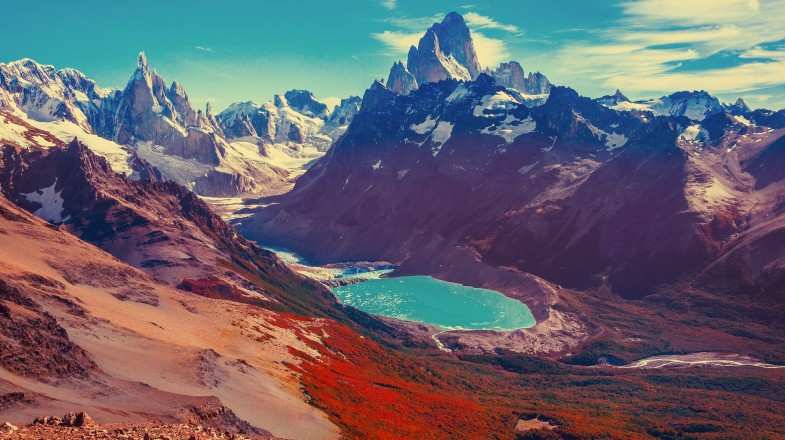
- 1.72K views
- ~ mins read
From the cosmopolitan capital of Buenos Aires to national parks in Patagonia , peak-season crowds gradually start decreasing in March. However, the early autumn month is still warm and conditions are favorable for venturing out to a variety of destinations across Argentina. Walk with the Penguins in Punta Tombo, visit Iguaza Falls , or go glacier trekking in Patagonia ; a trip to Argentina in March ensures a great time for those looking for a calmer travel experience.
- Salvatore T.
Argentina Weather in March

The weather in Argentina is usually warm with bright, long days. However, the weather can take a turn for the worse with heavy rainfalls in different parts of the country.
In Buenos Aires, the temperature hovers between 22°C to 24°C, with lows around 16°C and occasional highs hitting 26°C. Precipitation is moderate, with an average of 10-days of rainfall over the month.
The weather is chillier further south. In Patagonia, temperatures average around 8°C to 12°C but can go as low as 4°C, especially if it rains. Heavy downpours are common in places like Ushuaia , the southernmost city in Patagonia.
For in-depth information, check our guide on the best time to visit Argentina .
Weather in Argentina in March - Rainfall and Temperatures
Why visit argentina in march.

March in Argentina is the start of the shoulder season. Visitors during this time can enjoy warm weather and witness both cultural and natural attractions while avoiding large tourist crowds.
- Affordable rates: With the end of the high season, the bookings start dropping from late February. This can mean lower flight prices and more affordable accommodation — particularly if you rent a vacation home.
- Fewer tourists: March is an ideal time to visit Buenos Aires , Cordoba, and Bariloche. You can go around these tourist attractions, which are usually crowded during high tourist months.
- Wine tours: Wine-producing regions like Mendoza and San Juan offer plenty of opportunities for immersive experiences this time of the year. Book a wine tasting session or tour local vineyards in Argentina .
- Outdoor sightseeing: March is the period of foliage change and offers a stunning view of nature. Planning outdoor activities may take a little effort due to unpredictable weather but if you don’t mind occasional rain, visit Los Glaciares , Iguazu, or Quebrada del Condorito National Parks to enjoy some breathtaking sights.
Where to go and what to do

With the end of the tourist season, the busy life in Argentina starts slowing down in March. Nonetheless, there is still an abundance of activities in Argentina for travelers.
- Buenos Aires: March is a great time to explore some of the best galleries, museums, and delightful restaurants before Argentina’s capital city starts entering winter slumber. The Museum of Fine Arts, comprising a massive collection of Latin American and Argentine exhibitions, is a must-visit destination for art connoisseurs. You may also travel southward to Córdoba. This city is renowned for art galleries, and artisanal markets offer a unique charm you won’t experience anywhere else in the country. Explore the bohemian Güemes Neighborhood, attend the handcrafts fair in The Paseo de Las Artes or book a tour to Jesuit Estancias on your trip to Cordoba .
- Perito Moreno Glacier: Los Glaciares National Park in the Argentine Patagonia region is well-known for outdoor recreations. This UNESCO World Heritage Site in the Southwest of Santa Cruz Province attracts a large number of visitors throughout the year. However, you can avoid the crowd and embrace the picturesque view of the famous glaciers if you embark on a trip to this region during March.
- Carnival of the Devil: Held in Tilcara, this harvest festival stemming from the belief that a devil living in the sun fertilizes the earth presents a unique perspective to the celebration. The 9-day-long festival draws a large crowd to witness the carnival.
For more options on where to go, check out our guide on the best places to visit in Argentina .
What to bring

Rain isn’t uncommon in Argentina in March, so at least one waterproof top and a pair of waterproof shoes are a must. If you’re further planning a trip involving multiple outdoor activities, consider bringing a warm waterproof top and sturdy shoes with a good grip. Solid and reliable outdoor gear that can hold up against rapid weather changes is also a must if you’re planning to camp/hike around the national parks.
March offers a thriving cultural scene and plenty of activities without all the downsides of the high season. While unpredictable weather may put certain hinges on your plans, a 10-day tour of Argentina is a suitable period for camping and hiking in major attractions. The outdoors, quite possibly, offer the best views of Argentinian nature during the year. Thus planning a perfect trip around the country can be crucial in determining the quality of your holiday in Argentina in March. To ensure you cover maximum grounds, check our guide on how many days to spend in Argentina to craft an ideal itinerary for your trip.
If you need assistance planning around the peculiarities of the season, reach out to our local travel experts for a custom trip to Argentina . You can also browse our trips to Argentina in March for instant inspiration.
Other Related Articles: Argentina in February Argentina in April
Related Articles
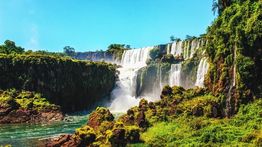
Best Time to Visit Argentina
Argentina’s breathtaking beauty extends acros... read more
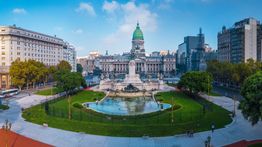
Argentina in January: Warm Weather and Great Outdoors
Are you planning to visit Argentina in Januar... read more
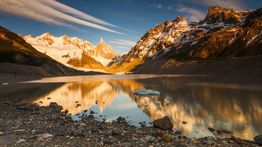
Argentina in February: Better Outdoors and Local Festivities
February is among the best times to plan a tr... read more

Argentina in April: Autumn Foliage and Fine Wine
As the vibrant fall foliage blankets the Arge... read more
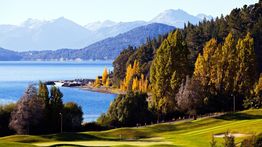
Argentina in May: Shoulder Season Adventures
With an eclectic mix of cultures and ethnicit... read more

Argentina in June: City Tours and Skiing
Bustling streets and crowded attractions acro... read more
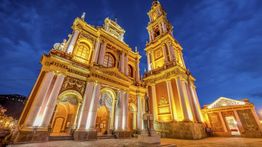
Argentina in July: Bustling Mountains, Quiet Cities
July falls in the middle of the winter season... read more

Argentina in August: Weather, Tips & More
Most people either visit Argentina between No... read more
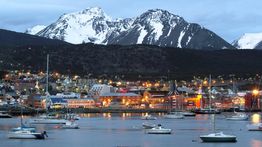
Argentina in September: Calm Before the High-Season
The advent of spring adorns the Argentine lan... read more
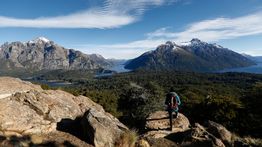
Argentina in October: Witness the Marvels of Spring
October offers the last chance to take advant... read more
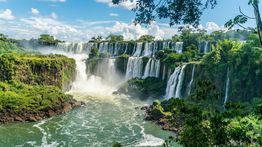
Argentina in November: Warm Weather, Clear Beaches
Warm November weather in most parts of Argent... read more
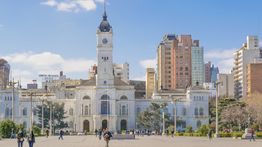
Argentina in December: Summer in Southern Hemisphere
Summer in Argentina emerges as spring transit... read more

Patagonia in January: A Sneak Peak Into Summer
A trip to Patagonia in January places you rig... read more

Patagonia in February: Travel Tips for Summer
With mild temperature, low rainfall, and long... read more
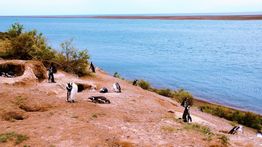
Patagonia in March: Weather, Tips & Wildlife Adventure
With vivid reds and yellows of autumn set aga... read more
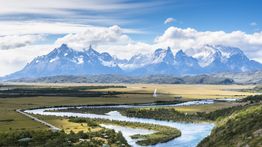
Patagonia in April: Weather, Tips & Fewer Crowds
Autumn is at its peak in Patagonia in April, ... read more
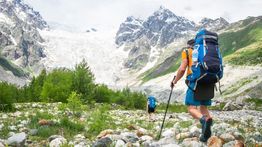
Patagonia in May: The Thrill of Adventure & Beauty of Weather
With shorter days and chilly weather, Patagon... read more
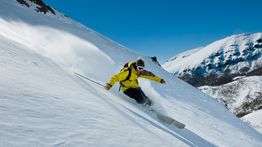
Patagonia in June: The Arrival of Winter
Snow starts settling in Torres del Paine, and... read more
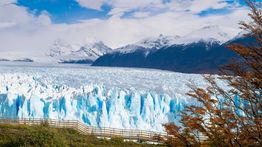
Patagonia in July: Travel Tips for Winter
If you are fond of skiing, an outdoor enthusi... read more
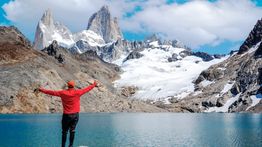
Patagonia in August: Winter Season Adventures
With snowy landscapes, abundant snow sports, ... read more
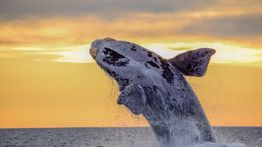
Patagonia in September: All You Need to Know
With winter still in touch and spring creepin... read more
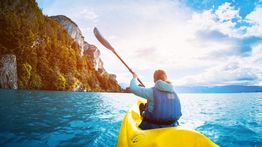
Patagonia in October: Weather, Tips & Spring Blossoms
As spring peaks in Patagonia in October, snow... read more
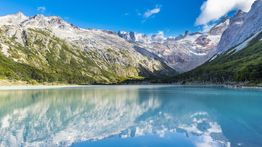
Patagonia in November: Weather, Tips & Festivals
Patagonia in November is awash with springtim... read more

Patagonia in December: Weather, Tips and More
With an abundance of sunshine, pleasant weath... read more
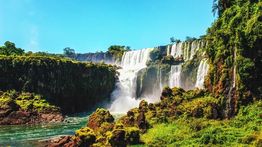
Summer in Argentina: Sun-Kissed Adventures & Warm Weather
With its rich cultural heritage, breathtaking... read more
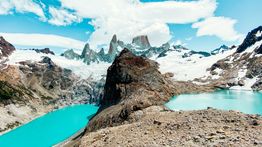
Patagonia in Winter: Weather, Destinations, and Travel Essentials
Temperatures drop and a pristine blanket of s... read more
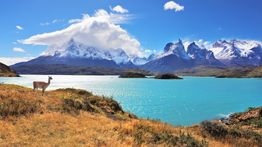
Summer in Patagonia: Discover the Magic of Warm Weather
Nature and wildlife come alive in Patagonia d... read more
Related Categories
- Argentina Travel Advice
- Best Argentina Treks
- How Long To Stay In Argentina
- Top Argentina Attractions
- What To Do In Argentina
- When To Visit Argentina
- Where To Go In Argentina
- Previous Post

Popular Destinations
- Europe Tours
- Everest Base Camp Trek
- Italy Tours
- Spain Tours
- Canada Tours
- Sri Lanka Tours
- Chile Tours
- Antarctica Tours


Argentina Destinations: 22 Incredible Places to Visit in Argentina (You Didn’t Know Existed)
Posted on Last updated: March 16, 2023
If you’re planning a South America trip, it may be difficult to decide on which places to visit in Argentina . I know that I was actually unfamiliar with the pure scope and extensivity of Argentina destinations before my trip. But after ending up spending over two months there, I can attest that Argentina is one of the most incredible, varied, naturally gorgeous, culturally diverse, and culinarily incredible countries on earth.
I worked my way through all the things to do in Argentina from Patagonia in the south, to Buenos Aires in the east, to the Iguazu Falls in the north, to Salta and Jujuy in the west. I didn’t even plan on spending too much time in Argentina, but now I can happily say it’s my favorite country on Earth.
Argentina truly has everything – from cold and alpine rocky mountains, to barren wine country, to amazing European-esque cities, to thick jungle, to the most colorful highland desert landscapes you’ll ever see. With each new Argentina destination, my mind was blown more and more until I decided that it truly couldn’t get any better – this was one of the most amazing countries on earth.
Want to read more about Argentina? Make sure to check out the posts I have linked below and also my Complete Argentina Bucket List here.

Places to Visit in Argentina: Destinations in the South
Here are the best places to visit in Argentina’s south, a mostly mountainous, chilly, and scenic region including Patagonia.
Known as the “End of the World,” Ushuaia is the adventurous gateway to Antarctica and the southernmost city in the Americas. Flights and cruises to Antarctica will all leave from here, the closest point to it that you can get.
Ushuaia understandably gets very cold in the southern hemisphere winters, and is well-known for islands full of penguins, incredible mountainous scenery, colorful houses, and Tierra del Fuego National Park.
Ushuaia Things to Do
- End of the World Train
- End of the World Museum – Learn Indigenous Culture
- Tierra del Fuego National Park Trekking
- Martillo Island Penguins
- Beagle Channel Cruise
Ushuaia Places to Stay:
- Compare prices on Ushuaia Hotels or Ushuaia Hostels .

El Calafate
El Calafate is another adventure hub of southern Patagonia, and is an important stop on any Argentina itinerary. It’s the best known for the Perito Moreno glacier, which is easily the most incredible glacier I’ve ever seen.
However, it’s also a great hub for day trips to other viewpoints, Torres del Paine National park in Chile , boat tours through different arms of glacier lakes, a few other glaciers, and some gaucho-run ‘estancias’ out in the remote mountain desert.
El Calafate Things to Do and Where to Stay
For info on all tours from El Calafate, what to do, and where to stay in town, check out my guide to El Calafate tours.
El Chalten is a smaller mountain town three hours north of El Calafate also known also for its adventurous activities. It is namely known for a world-famous and mind-blowing hike to Laguna de Los Tres with a view of Mount Fitz Roy , a dramatic and jagged almost-other-worldly view.
The town is small and quaint, with scenic landscapes all around, the possibility for river rafting and rappelling, and kayaking, too.
What to Do and Where to Stay in El Chalten
For all the info on what you can do and where you should stay in El Chalten, check out my classic Patagonia itinerary below, which outlines a two-week itinerary through Argentinian and Chilean southern Patagonia. Book transfers between Argentina destinations in advance on bookaway.
Bariloche is one of the most popular holiday places to visit in Argentina. It has options for both the backpacker and the traveler who has a bit more disposable income, if you know what I mean. There are luxury resorts all over the place, and nice restaurants to complement the high-end mountain and lake views.
Things to do + Where to Stay in Bariloche
I have included Bariloche and the 3 destinations below this in my “ Northern Patagonia Itinerary ,” in which I highlight the best things to do and places to stay in each destination.
In short, Bariloche is known for some other incredible hikes up to jagged and carnivorous peaks, a famous bike ride around a national park and mountain lakes (with stops at a few different breweries!), for its incredible chocolate, and skiing in the winter.

Villa La Angostura
Villa La Angostura is a hidden gem I discovered while backpacking through as many Argentina destinations as I could. It’s another tiny mountain town full of restaurants and souvenir shops, and has an absolute winner of a hike that was one of my favorites in South America.
Down near Puerto Angostura (just outside of the main town), there’s a huge peninsula with a hike along its backbone. It presents incredible views of the lakes and water on either side of it, and is surely a great spot in Patagonia.
Things to do + Where to Stay in Villa La Angostura
I also elaborated on Villa La Angostura in my Northern Patagonia Itinerary, with lots more details on the hike and where to stay. Check it out here.
El Bolson is like a mountain hippie town, full of eco-lodges, crystal-ridden craft markets, and nature lovers. Like many places in Patagonia, there are lots of incredible hikes to do here as well as markets and shops in town.
Things to do + Where to Stay in El Bolson
Check my Northern Patagonia itinerary, linked below, to read more in-depth about what to do and where to stay in El Bolson and the towns surrounding it.
San Martin de Los Andes
San Martin de Los Andes is a larger Patagonian town than all the rest described here, situated at the northern edge of Patagonia and on some beautiful lakes (surprise, surprise).
Up at this end of Patagonia there are more volcanoes, and there are quite a few in the region of San Martin that you can visit (or you can cross the border into Chile and check out the active V olcan Villarrica in Pucon).
Things to do + Where to Stay in San Martin de Los Andes
Other than that, it’s like a little skiing town with beautiful hikes surrounding it. As with the past 4 places to visit in Argentina, check my Northern Patagonia itinerary for more specifics on what to do and where to stay in each.
Places to Visit in Argentina: Destinations in the Center
Here are some places to visit in central Argentina that you should have on your radar.
Mendoza has to be one of your Argentina destinations if you are making a trip. That is, only if you love wine! Mendoza is known to be the home of Malbec, and actually also has some other incredible wine varietals made in its three different wine regions at the base of the Andes Mountains.
Things to do + Where to Stay in Mendoza
Other than wine tasting, which is a given, Mendoza is actually also a hub to many other adventures.
- River Rafting Adventures
- Visiting Geothermal Spas
- Andes High Mountain Tours
- And of course, wine tasting! There are many different tours.
Check out the wine tasing tour I did in Mendoza here for more information.
Cordoba is one of the most central places to visit in Argentina and a good stopover hub between Mendoza and Salta/Buenos Aires. It’s quite an industrial city, but that doesn’t mean that there’s not much to do! I stayed with a good friend in Cordoba for a weekend and really enjoyed myself. Check out this 2 day Cordoba itinerary if you aren’t sure what to do!
Things to do in Cordoba
- Explore the Town Center + Museums, or take a city tour
- On weekends, check out the street market and trendy bars downtown
- Visit La Cumbrecita
- Really though, there have been tons of conspiracy theories of aliens existing in these Sierras – specifically Capilla del Monte. There have been reported crop circles, mysterious beings, and more… check this article for more!
Where to Stay in Cordoba
Compare the best hotels in Cordoba and hostels in Cordoba here.
Rosario may not always be on the tourist trail, but as a happening student city and one of the most populous in the country, it cannot be left out when naming places to visit in Argentina.
Rosario has a happening bar, club, and food scene, rich history, plenty of museums and historical monuments, parks, markets, theaters, beaches, and a lovely waterfront along the Parana river.
Things to Do in Rosario
- Go kayaking in the Parana River
- Take a city bike and explore the city
- Visit some of the best clubs in the world
Where to Stay in Rosario
Compare Rates for Hotels in Rosario and Hostels in Rosario.
Catamarca (San Fernando del Valle de Catamarca)
It may not be the biggest tourist city, but Catamarca is an interesting Argentina destination just the same. Within the town of San Fernando del Valle de Catamarca (which is the capital of the province of Catamarca), you can find interesting religious monuments, parks, amazing food, and plenty of bars.
However, the biggest appeal in Catamarca may come from its mountains. The city is in a sort of valley surrounded by high mountains and volcanoes, some even exceeding 6,000 meters! This means that climbing and mountaineering are popular activities in this area.
Things to do in Catamarca
- Mountain climbing and hiking
- Many religious festivals throughout the year
- Fiambala Hot Springs
Where to Stay in Catamarca
Compare prices for the best hotels in Catamarca .

Places to Visit in Argentina: Destinations in the East
Here are some popular destinations in Argentina on the east side, from the capital to some smaller coastal cities.
Buenos Aires
Well… duh! Buenos Aires is the capital of Argentina, the “Paris of Latin America,” one of the economic centers of South America, and one hell of a bustling city. I totally fell in love with its food, culture, nightlife, and pulse, and I can’t wait to go back.
This is the main of all Argentina destinations, and the place to come to try the classic Argentina foods- parilla steaks, incredible pizza, alfajores cookies, dulce de leche, and more recently, craft beer.
Buenos Aires has a tangible energy that is apparent in all who live there. Whether at bustling nightclubs, speakeasy bars, street art-covered alleyways, hole-in-the-wall restaurants, and busy shopping malls, Buenos Aires really has it all – it’s a very livable city, and of course visit-able as well 😉
Tigre Delta
When in Buenos Aires, one of the coolest places to visit in Argentina is the Tigre Delta. You can sail here from Buenos Aires on a day tour and see another summer destination for Argentinians. Read more about it and more awesome Buenos Aires Tours here.
What to Do and Where to Stay in Buenos Aires
Since I wrote an entire 6000+ word guide to Buenos Aires, I’m going to go ahead and send you over to that my Buenos Aires guide to learn ALL about what to do, where to stay, what tours to take, and where to go, eat, and party in Buenos Aires. Enjoy!

Mar del Plata
Mar del Plata, or “la Plata,” is where Porteños, as people from Buenos Aires are called, tend to vacation (that is, if they aren’t ferrying across to Uruguay!). There are massive expanses of beaches and great parties in the summertime, and oftentimes some of the best festivals in South America.
What to do in Mar del Plata
Mar de Plata is a great weekend destination to relax at the beach, visit museums or water parks, or take a day trip from Buenos Aires.
Where to Stay in Mar del Plata
Compare prices for Mar del Plata Hotels here or Mar de Plata hostels here.
Puerto Madryn
Puerto Madryn is technically still in the Patagonia region although it’s on the complete opposite (east) coast of the country to other popular Patagonian destinations. It’s got beaches for the summertime, but the most appealing thing about it is its wildlife. There are many Puerto Madryn excursions that will take you to beautiful points of interest and wildlife.
You can whale watch here, and more excitingly actually scuba dive with playful, twisting and turning sea lions. I’ve seen some incredible videos of people paddling through a sea of hundreds of them flitting about through the water – it’s pretty incredible, really. The Peninsula Valdes is also an incredible place to visit.
Things to do in Puerto Madryn
- Whale watching tours
- Visit nearby nature reserves and the Valdes Peninsula
- Scuba Dive with Sea Lions
- Penguin Colony Visit

Places to Visit in Argentina: Destinations in the North
Northern Argentina should now be forgotten as it has a truly different landscape than anywhere else in the country.
Puerto Iguazu + Iguazu Falls
In the northwest corner or Argentina, you’ll find a completely different vibe than anywhere else in the country: a humid, dense jungle! At that, it’s a jungle that borders the largest waterfall system in the world. How’s that for appealing?! I still remember when I got off the plane from freezing Buenos Aires to a pleasant 27 degrees C (about 80F) and was completely stunned.
Puerto Iguazu is a small town that borders two rivers – one that separates it from Brazil, and one that separates it from Paraguay. It’s got a much deeper indigenous culture than a lot of Argentina.
I personally think that the Brazilian side of Iguazu Falls is the best, but I recommend visiting the Argentinian side (pictured) of course while you’re here so you can get the best of both worlds!
What to do + Where to Stay in Puerto Iguazu/Iguazu Falls
I also wrote another entire post detailing what to do in Puerto Iguazu, how to visit Iguazu Falls from both the Argentinian and Brazilain sides , and where to stay.

Places to Visit in Argentina: Destinations in the Northwest
Northern Argentina should now be forgotten as it has some of the truly most incredible places to visit in Argentina. Here are the places you need to know about.
This is a province in Argentina’s northwest with lots of treasures to be found. Jujuy city is the capital of Jujuy province, which along with Salta is rich in indigenous culture and incredible landscapes and highlands. The next few destinations below are all in Jujuy province.
Tilcara + Humahuaca Gorge
Humahuaca and Tilcara are small dusty desert towns inside the UNESCO World Heritage site, the Humahuaca Gorge. Tilcara is well known for having the best preserved Pucara, or fortress, used by the pre-hispanic peoples before the Incas. Humahuaca has incredible culture, shopping, and history.
There are many other points of interest along the Humahuaca Gorge that are detailed in my Quebrada de Humahuaca post , as well as a booking link for the tour I did if you are interested. It’s best known for the incredible mountain landscapes with yellow, pink, red, and green that look like they were painted!

Purmamarca is home to the ‘Cerro de Siete Colores,” or the Hill of 7 Colors. And let me tell you – it’s probably more than seven colors! It’s one of the most spectacular places to visit in Argentina and is a great place to find indigenous souvenirs, too. There are lots of places to stay in Purmamarca, or you can see it as part of tours I will link below.
Where to Stay in Jujuy
To read more about Jujuy province and different Argentina destinations in the north, see my Guide to Northern Argentina’s Salta + Jujuy Provinces .
Salta is the capital of the Salta province, which is directly next to its slightly greener counterpart, Jujuy. There are similarly colorful desert landscapes and incredible road trips here through gorges and salt flats.
Salinas Grandes
The Salinas Grandes are technically half in Salta and half in Jujuy, and are a massive expanse of salt flats that are still used for extractions to export salt. They’re one of the lesser-known Argentina destinations. But, they’re amazing just the same, and much easier to get to than Uyuni in Bolivia!
You can get to them via Purmamarca and some incredible mountain roads in the Jujuy region, or via a Highway 51 road trip through the El Toro Gorge.
San Antonio de Los Cobres – Tren a Las Nubes
The Tren a Las Nubes is definitely one of the most unique things to do/ places to visit in Argentina. It’s one of the highest altitude train rides in the world at over 4200m elevation, and goes through some watercolored highlands and a magical viaduct.
To get to the train you drive the same road trip linked above, and ride the train at the end. Read more about my experience here !
Although within the Salta province, Cafayate requires its own description because it’s by far one of the top places to visit in Argentina. Cafayate is Argentina’s ‘other’ wine region, producing high altitude (just over 1500m) wines and specializing in a white wine varietal called Torrontes.
The ‘Cafayate Wine route” is a trail of dozens of wineries in the region that you can link together into a big wine tour (over a while, of course!). But, the special part about Cafayate is that there are at least a dozen wineries within walking/biking distance of the main town. Lots of people rent bikes to ride between the closer ones (and there are 4 in town you can walk to!).
Not only is there tons of amazing wine, but there are hikes, cheese farms, and other incredible nature in Cafayate as well. Read my 3-day Cafayate Itinerary here.
Quebrada de los Conchas
The Quebrada de Las Conchas is an area of outstanding natural beauty that falls on the road between Salta and Cafayate. There are almost impossible-looking rock formations in unnaturally bright colors, and it’s all-in-all simply amazing. Read more about how to visit in my post above.
Well, there you have it! Which of these places to visit in Argentina have you been to? Are there more Argentina destinations I should add to the list? Let me know in the comments!

Don’t forget to pin these places to visit in Argentina!
Classic Patagonia Itinerary: 2 Weeks of Hiking and Adventure
Wednesday 24th of October 2018
[…] Argentina Destinations You Didn’t Know Existed […]
Two Week Northern Patagonia Highlights Itinerary: Bariloche to Pucon - Adventures & Sunsets
Quebrada de Humahuaca Tour: Daytours4U Humahuaca Gorge Road Trip
[…] Places to Visit in Argentina (You Didn’t Know Existed) […]
Guide to Visiting Northern Argentina: What to See in Salta and Jujuy
Cafayate Argentina: 3 Day Itinerary with Adventures + Lots of Wine
Privacy Overview

The 25 Best Places to Visit in Argentina: For Hikers, Sightseers and Wildlife-Lovers Alike
By Author Steph Dyson
Posted on Last updated: 24th January 2024
Argentina, one of the popular gateways to South America, plays host to some of the southern hemisphere’s most dramatic landscapes: think vast, millennial-old glaciers, historic bodies of water, and the weather-chiseled ridge of the Andes Mountains separating it from its neighbor, Chile.
But Argentina isn’t just a place defined by its natural magnificence.
It’s also home to one of the most bewitching capital cities – an unmissable destination for foodies and football lovers alike – as well as curious Welsh settlements, chaotic colonies of animals, and sunkissed vineyards producing world-class wines.
I’ve had the fortune to explore practically the entire country, traveling slowly along the length and breadth of Argentina as part of multiple trips spanning a couple of months in total.
Off the back of that research, here are what I consider to be the best places to visit in Argentina.
Click to navigate this article:
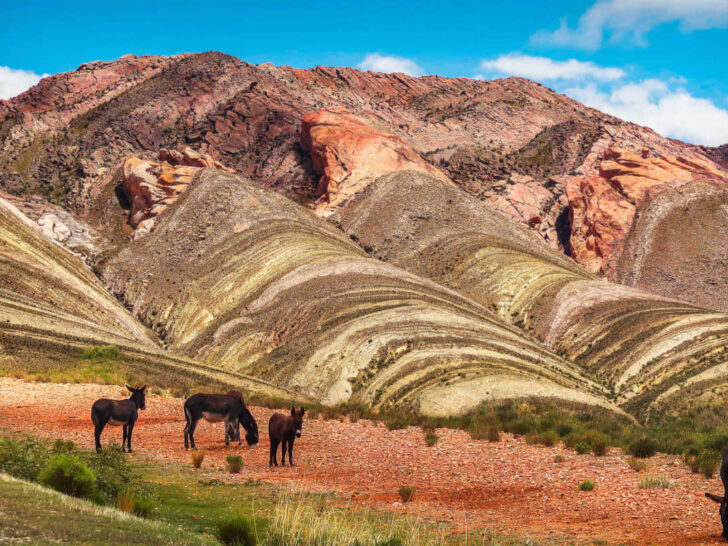
Northern Argentina
1. track rare wildlife in the world’s second-largest wetlands, the esteros del iberá .
Home to the world’s second-largest wetland in the world, the Esteros del Iberá (Iberá Wetlands), are a remote, pristine, and hugely important ecosystem in Argentina.
Comprising a 13,000-km 2 nature reserve in the north-central province of Corrientes, this protected area is one of the most important freshwater reservoirs in South America and houses an abundance of wildlife.
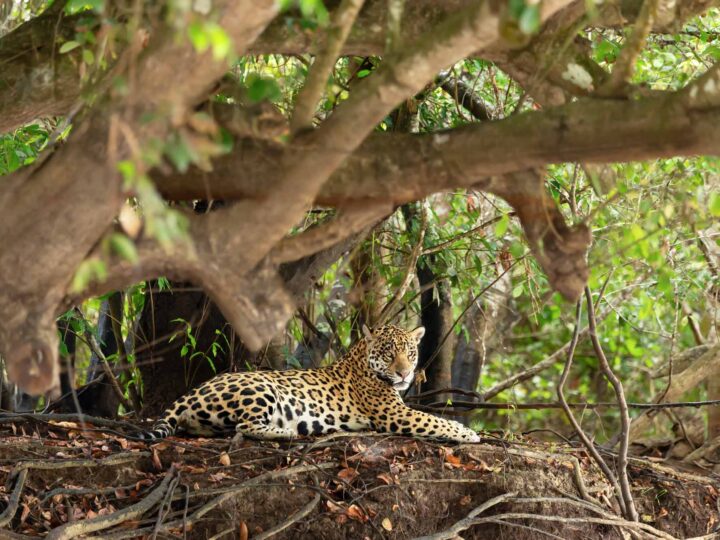
Over 320 bird species are resident here, making it a top destination for birders, while capybara, maned wolves, giant anteaters and even a thriving population of jaguar – reintroduced in 2021 by conservationists – make the Esteros del Iberá one of the best places in Argentina to spot wildlife.
Situated a three-hour journey from the nearest airport, getting here is part of the adventure and explains why it remains such a remarkably untouched and unvisited part of Argentina.
Planning Your Trip to Patagonia?
Save time, stress & money with a customized travel itinerary planned for you by a Patagonia expert
What previous clients have said:
Going to a new and exciting place is an adventure AND has its challenges. Being able to carve out an in-depth plan with someone that has been there and whom you can trust was extremely helpful. We felt comfortable embarking on a six-week backpacking trip with kids ages 8 and 11 with Steph on our team. Her expertise and ability to hear what we wanted gave us a great jumping point for planning. Her advice and wide array of options also allowed us to be flexible. It also gave us peace of mind knowing that we had someone we could call if our plans went awry. Every one of Steph’s recommendations panned out to be incredible pieces of our trips and we would highly recommend her!
2. Appreciate one of the world’s natural wonders, Iguazu Falls
Step aside, Niagara Falls: there’s a much more impressive set of waterfalls awaiting in Argentina. Comprising 275 cascades and spanning an area 2.7 kilometers wide, Iguazu Falls are a remarkable 195 meters high – dwarfing Niagara, which is a measly half the size.
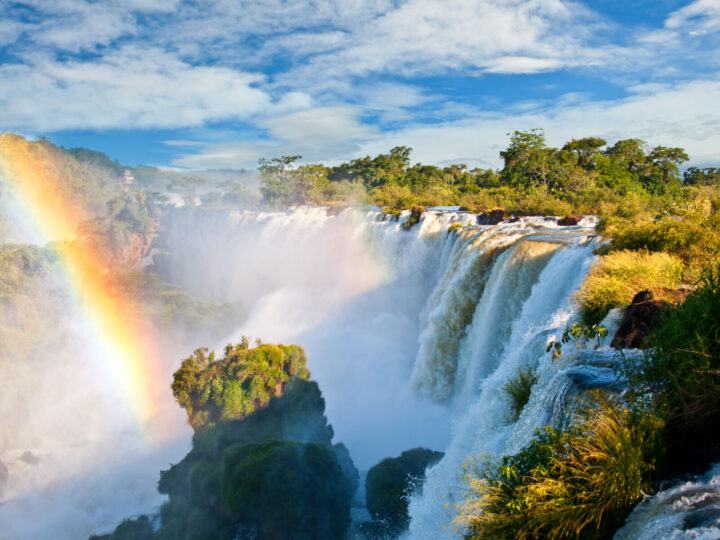
Though you cannot see all of the falls that make up this vast fury of water from the Argentine side – you’ll need to cross into the Brazilian side to tick off them all – visiting Parque Nacional Iguazú (Iguazu National Park) in Argentina will still grant you spellbinding views of these dramatic falls.
Hike through the dense jungle of the national park – where toucan and brown capuchin monkeys might be glimpsed – to the Garganta del Diablo (the Devil’s Throat), where a platform perched above this fall gives you utterly unforgettable views as the water cascades down with a deafening roar.
3. Road trip to the land of “white gold”, Salinas Grandes
Neighboring Bolivia might take the crown for the world’s largest salt flats , but Salinas Grandes in the Argentina puna remains a dreamlike destination and a worthy place to visit in Argentina.
Argentina economy update
The Argentine economy is a huge mess at the moment, with inflation expected to hit 200% this year. Using Argentine pesos can therefore be a nightmare – and mean you lose a lot of money. The blue dollar (an unofficial exchange rate that gives you a better conversion than the official rate) is around, but if you want to avoid carrying lots of cash, you can now pay using your credit card and get an exchange rate similar to the blue dollar rate. You must choose to pay in Argentine pesos (not USD!) to secure this rate.
Both Mastercard and Visa give you what is called the MEP rate, which is almost as good as the blue dollar rate. Mastercard will charge you the official rate but refund you the money a few days later; Visa will charge you the MEP rate from the beginning.
If you do want to have some Argentine pesos for paying in cash (which I highly recommend as you will need them for some restaurants and attractions), it’s best to use Western Union, whereby you send cash to yourself using the Western Union app and then withdraw it in Argentine pesos from one of their branches in Argentina. Bear in mind, those in El Calafate and Ushuaia can run dry of notes, so it can be easiest to do this in Buenos Aires.
Additionally, you can bring USD (unmarked and untorn hundred dollar bills), which you can exchange at “cuevas” (unofficial exchange houses). These will be able to give you the blue dollar rate and any hotel owner will be able to tell you where your nearest one is. Souvenir shops in most parts of the country will be able to give you pesos in exchange for dollar bills – although they might not give you the best rate.
Avoid cash machines. Currently, the maximum withdrawal is the equivalent of $15 USD in Argentine pesos and it will cost you $10 USD in fees.
Spanning more than 500 kilometers and with salt melting away into the distance as far as the eye can see, this curious, high-altitude landscape lends itself to comical perspective photography. Visit by hiring a vehicle or taking a tour from Purmamarca, Jujuy, or Salta; en route, you’ll catch dazzling views of splendid lagoons and walnut plantations.
4. Photograph the rainbow hues of the Quebrada de Humahuaca
Argentina’s northwestern provinces are packed with otherworldly sights and the Quebrada de Humahuaca (Humahuaca Canyon) is no exception. This 155-kilometer-long mountain valley is famous for its vibrantly colored rock formations as well as for its historic, Quechua-speaking villages.
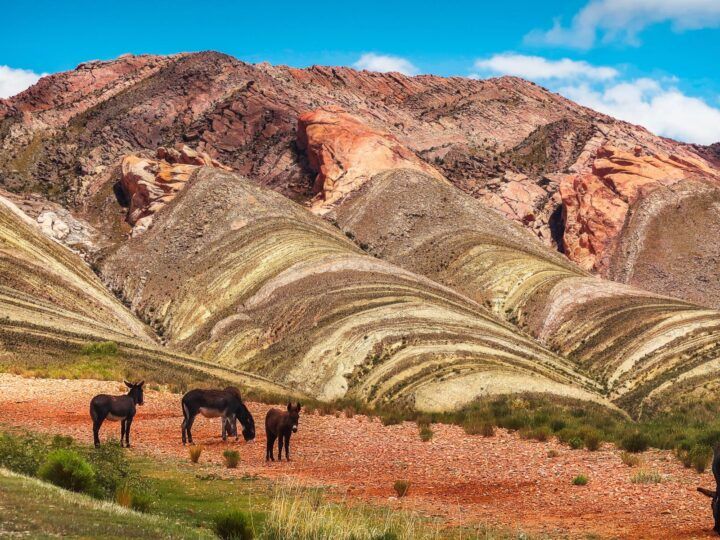
To the south, the Cerro de Los Siete Colores (Hill of Seven Colours) lives up to its name with a magical rainbow of hues caused by the mineral content of the soil and towers over the colonial village of Purmamarca.
Adobe houses rub shoulders with the centuries-old Iglesia de Santa Rosa, while a daily market on the town square makes this an excellent place to purchase sweaters and blankets wove from llama wool.
5. Discover the enchanted village of Iruya
Still within Quebrada de Humahuaca, but miles away from the typical tourist trail, the enchanting village of Iruya lies within the sheer walls of the canyon, with many of its adobe houses built up into the valley sides.
The setting is dramatic; clamber up to the Mirador de la Cruz to appreciate the full magic of this village or head to Mirador del Condor to catch sight of Andean condors, which typically take to the sky around 3pm.
6. Appreciate colonial architecture in Córdoba
As the country’s second-largest city, Córdoba is an easy pick when it comes to choosing the best places to visit in Argentina. You can feel both the pre-Hispanic and colonial influences in much of this pretty city, which houses some of the best-preserved colonial buildings in the whole of Argentina.
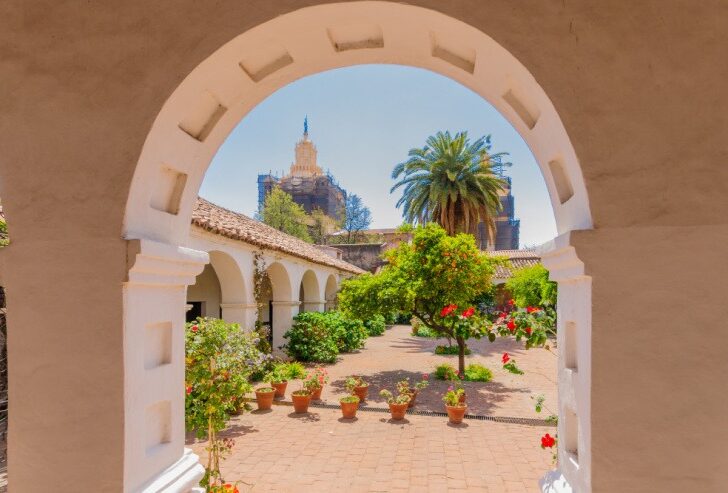
Crowned the Cultural Capital of the Americas in 2006, Córdoba thrives on its blend of old and new. With three universities in the city, it’s no wonder there’s plenty to do here.
Browse one of its four municipal galleries – covering everything from fine art to contemporary work – and spend an evening in the Güemes neighborhood, where independent craft stores and crowded bars attract students and visitors alike.
7. Tour Talampaya National Park in a 4WD
The dusty stone pillars of Parque Nacional Talampaya (Tamlampaya National Park), chiseled away by millennia of rain and wind count as some of the most surreal rock formations you’ll find in Argentina.
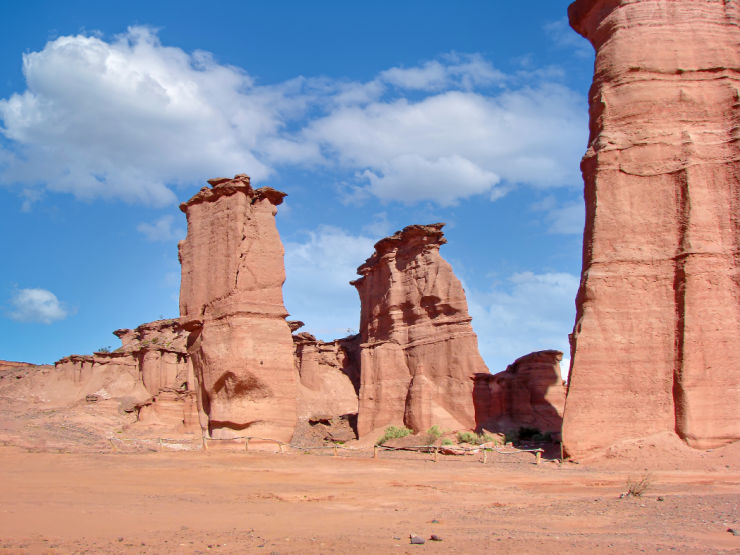
Lying in the eastern province of La Rioja, this desert landscape is best explored by 4WD and you must take a guide; visit Talampaya’s official website to arrange a tour.
Most head directly to the Cañón de Talampaya, where guanaco, rhea, and condors can be sighted, as well as its focal point, the Cajon de Shimpa, a deep gorge with towering, 80-meter-high walls that are only seven meters wide at its base.
8. Learn about Andean cultures in Salta
Much of Argentina’s northwestern regions have more in common with Bolivia than they do Argentina. Salta is a fine example. While its handsome buildings and ornate church, the Iglesia San Francisco, belie its colonial origins, this city is packed with museums dedicated to the pre-Columbian cultures that came before.
One of the best is the Museo de Arequeología de Alta Montaña , which specializes in the Inca and their child sacrifices – with the bodies of three such children discovered on a nearby mountain peak now, controversially, on display in this museum.
There’s so much to see and do in the city, and our comprehensive guide to the best things to do in Salta will see you adding it to your Argentinian itinerary in no time.
Northeastern Argentina
9. get familiar with argentine literature in san antonio de areco.
Located about an hour and a half northwest of Buenos Aires, the town of San Antonio de Areco is the perfect day trip from the capital. Known as the National Capital of Tradition, it’s rich in the history and culture of the Argentine countryside and blessed with a wealth of museums, including the Museo Gauchesco Ricardo Güiraldes .
Dedicated to the author Ricardo Güiraldes, it also covers the culture of the local gauchos, the name for the cowboys who are both a folk symbol and a typical feature of pampas life in Argentina.
10. Drink, dance, and dine in Buenos Aires
Most visitors to Buenos Aires pass a few days in its dazzling capital, home to Parisian architecture and Latin passions.
Unsurprisingly, Buenos Aires is home to many of Argentina’s top and most well-known tourist attractions , and it’s remiss to spend time in this city without dancing in a tango hall ( milongas ), dining like a king in a local steak house ( asado ) or making pilgrimage to the Cementerio de la Recoleta to track down Eva Perón’s grave .
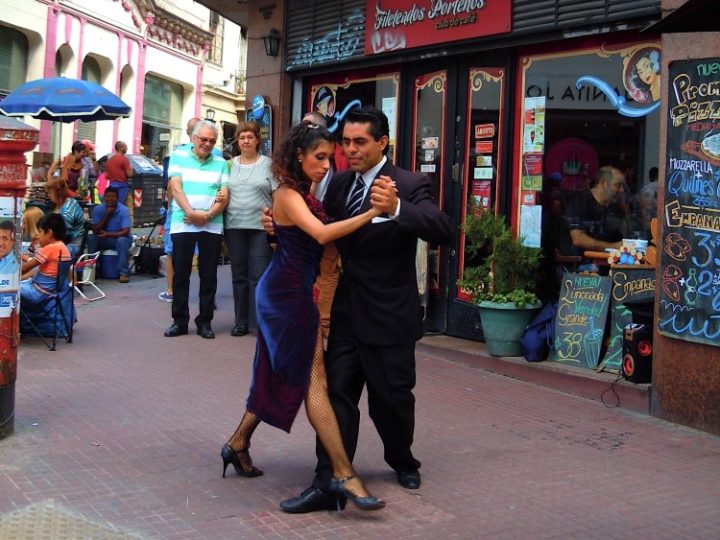
In the south, the working-class neighborhood of La Boca has transformed into a prime tourist destination.
Wander through the open-air museum of El Caminito, where tenement shacks have been transformed with a lick of brightly colored paint, before catching a beautiful game at La Bombonera, where legendary team Boca Juniors play.
For a truly porteño experience, don’t miss the Feria de San Telmo, a weekly Sunday market hosted in one of the city’s prettiest neighborhoods. Craft stalls and tables groaning beneath the weight of countless antiques await, while you can even catch music performances and impromptu tango dancing, too.
11. Surf the waves of Mar del Plata
Mar del Plata, a city 415 kilometers south of Buenos Aires, is a popular escape for porteños during the hot, summer months. With its beachside hotels and 47 kilometers of beaches, it’s got everything for a spot of relaxation – although, during summer, you’ll find it’s got too many other visitors, as well.
However, surfers have found their Mecca, particularly as the best surfing conditions are found between April and October.
Head to Playa Grande for the most consistent breaks and, if you’re new to surfing, sign up with one of the many surf schools to guide you in choosing the location and practicing your moves before you hit the water.
Northwestern Argentina
12. summit the lofty peak of volcán aconcagua.
The highest mountain outside of the Himalayas, Aconcagua invites adventure seekers and adrenaline junkies looking to summit one of the “Seven Summits” – the highest mountains in each continent.
Just a few thousand people try to reach its 6,960-metre peak every year and even the easiest route – the route up the Northwest Ridge – isn’t technical but still poses a real challenge due to the altitude.
All hikers must apply for a permit in nearby Mendoza and travel with experienced trekkers or, better still, a guide, is highly recommended.
13. Go wine tasting in viticulture capital Mendoza
With its vine-slung valleys fed by a clever system of irrigation and backdrop of snowy Andean peaks, Mendoza is itself a remarkable place to visit in Argentina. However, oenophiles from across the globe head here in order to sample the region’s most famous export: malbec.
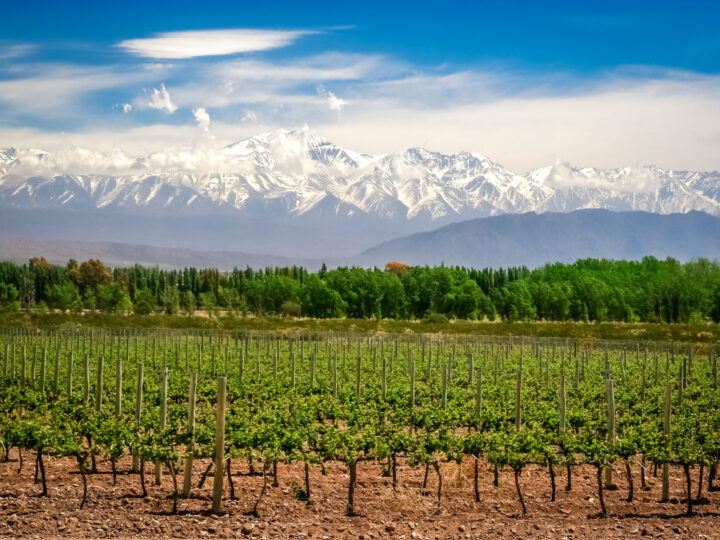
Local wineries abound and those in nearby Maipú can be easily visited either on a wine tour directly from Mendoza or using public transport. Head further afield to the wineries of the Valle de Uco or Luján de Cuyo to encounter those at the forefront of Argentine wine production.
Southern Argentina (Patagonia)
14. conquer the summit of volcán lanín.
Lying in the far west along the ridged backbone of the Andes Mountains, Parque Nacional Lanín (Lanín National Park) is another of Argentina’s most spectacular protected areas .
If you’re keen to summit a volcano but don’t quite have the expertise – of the lungs – for Aconcagua in the north of the country, the perfectly conical Volcán Lanín might be the perfect alternative.
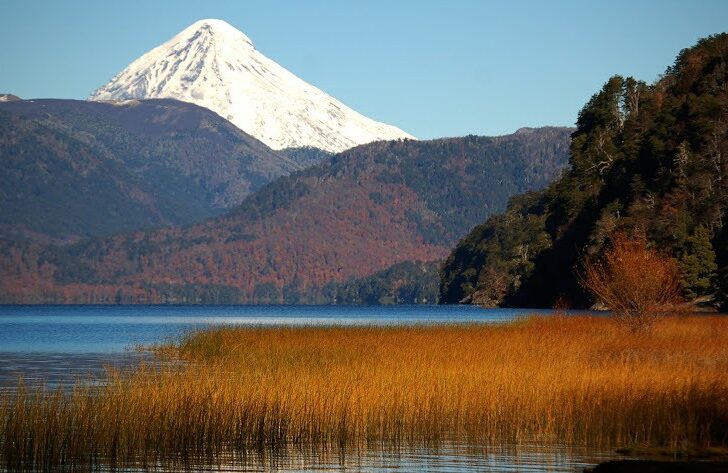
Set within forests of southern beech typical to Patagonia and with other easier hikes available, the route to the 3,776-metre summit of Volcán Lanín normally follows the north face and takes two days.
While it remains a challenging activity and one for which it’s highly recommended to use the services of a local guide, hiking to the top of this mountain – and absorbing the incredible panoramic views of lakes and mountains from its peak – will be utterly unforgettable.
15. Drive the Ruta de los Siete Lagos
Ruta 40, the highway that slices down through Argentina from the very northern tip of the country to the far south, is considered one of Patagonia’s finest road trips . But the section dubbed Ruta de los Siete Lagos (Route of the Seven Lakes) is perhaps the most picturesque of all.
Connecting San Martín de los Andes in the north with Villa La Angostura 108 kilometers south, this drive takes you along the banks of seven shimmering lakes, with the scenery tied to the seasons.
Drive it in summer (December through February) for landscapes vibrant green or travel here in autumn (March and April) when the trees turn burnt umber.
16. Go hiking and biking from Swiss-inspired Bariloche
Sitting at the heart of the Argentine Lakes Region and within the mountain and lake-scattered landscapes of Parque Nacional Nahuel Huapi (Nahuel Huapi National Park), Bariloche (sometimes known as San Carlos de Bariloche) attracts visitors in their droves.
Summer is peak season for visitors, who head to this town on the banks of Lago Nahuel Huapi to enjoy everything this capital of adventure has to offer.
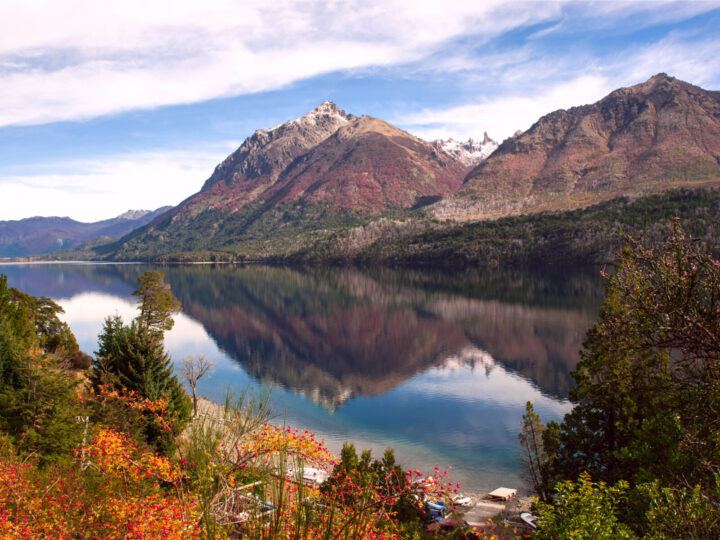
Whether you’re keen to mountain bike on lakeside gravel paths or head up into the snow-dappled peaks of Cerro Catedral (which becomes the region’s most visited ski destination in winter), Parque Nacional Nahuel Huapi has it all.
Best of all, Bariloche, with its Swiss-inspired architecture, surprisingly good craft beer, and even more surprisingly fantastic chocolate, make this a town where you won’t regret whiling away a good few days. Be aware that Bariloche can be packed in the summer months between December and February.
17. Go wildlife watching in Península Valdés
Considered one of the best places to see wildlife in Argentina (and South America), the Península Valdés has been recognized by UNESCO for its abundance of wildlife, which includes everything from sea lions and elephant seals to Magellanic penguins.
But it’s the fact that the waters off this peninsular are the habitat for the largest breeding population of southern right whales in the world is what makes this region so unique.
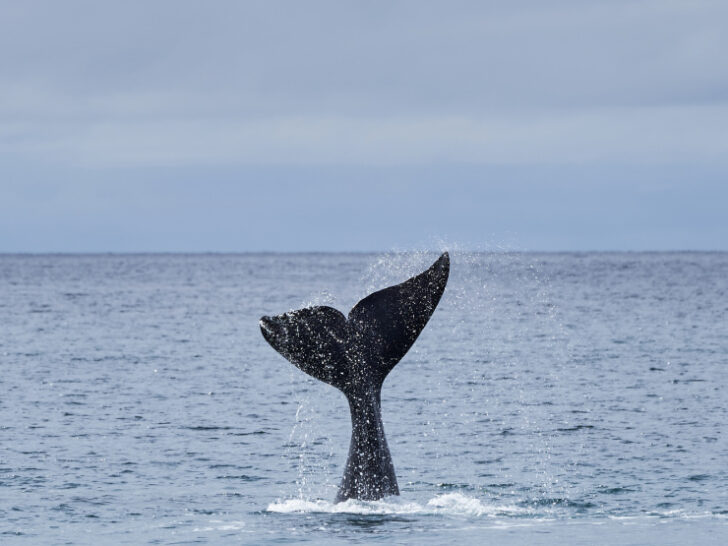
Between June and mid-December is when these mammals arrive to reproduce and the best way to catch sight of them is as part of a boat tour , which can be arranged in nearby Puerto Madryn or on the peninsula itself at Puerto Pirámides. Between mid-February and mid-April, orcas can also be seen at high tide on the beaches snatching sea lions from the shore.
18. Meet Welsh settlers in Gaiman
You’ll likely be surprised to learn that Argentina has the highest number of Welsh speakers outside of the United Kingdom. It’s all down to the Welsh settlements found in the Patagonian steppe, where 153 hardy arrivals from Europe landed on the shores of the Chubert Province in 1865.
Now over a hundred years later, these remain the epicentre of Welsh-Argentine culture. Tours from Trelew (itself an attractive but useful base) take you to quintessentially Welsh Gaiman where you can indulge in a very Welsh activity – afternoon tea – in one of the traditional teahouses dotted around the town.
19. Discover the 10,000-year-old cave paintings at the Cueva de las Manos
Tucked into the recesses of a large cave lie one of Argentina’s most significant prehistoric discoveries. Now known as the Cueva de las Manos – the Cave of Hands – this site is covered by around 800 handprints, which are thoughts to have been marked on the wall around 7370 BCE.
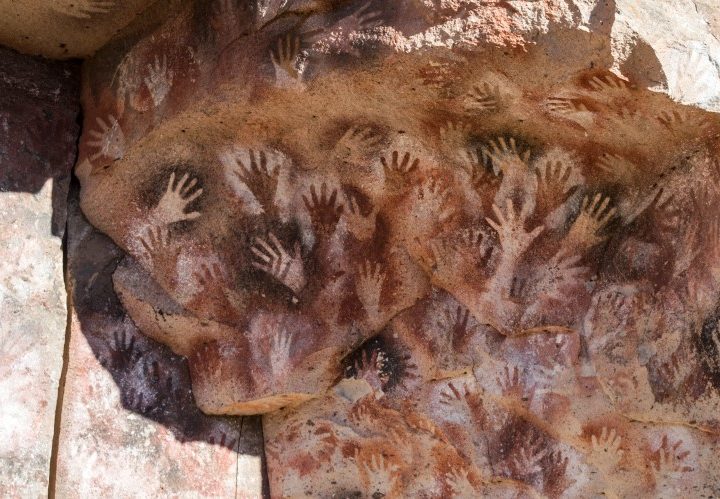
You can take a tour from Perito Moreno or Los Antiguos or drive yourself here with a hire car ; one-hour tours ($12 USD) depart from the entrance to the site.
20. Stretch your legs in Los Glaciares National Park
Those who crave adventure should add Los Glaciares National Park to their Argentine itinerary. Situated deep into Argentine Patagonia near the Chilean border, this national park stretches north to south along the eastern edge of the incredible hielo sur , the Southern Patagonian Ice Field.
In fact, a quarter of this national park sleeps beneath ice, with much of it high above ground level and caught in the granite spires of the mountains that dominate this terrain. It’s one of the most beautiful places in Patagonia and Argentina as a whole.

The most iconic is the 3,405-metre Monte Fitz Roy, beneath which sits the glacier-meltwaters of Laguna de los Tres – and to which hikers make their pilgrimage along a challenging one-day trek. This hike departs from the nearby town of El Chaltén, which is considered the national trekking capital.
Other paths abound for nature lovers and trekkers alike, including the 70-kilometre Huemul Circuit, while visitors will fall swiftly in love with the park’s glorious blend of high-altitude mountains and low-elevation steppe, that’s punctuated by freshwater lakes and rich in wildlife, including Andean condors, rare huemul deer and even pumas.
21. Stay at a traditional Patagonian ranch
Sheep ranching in the late 19th century saw both Argentine and Chilean Patagonia become some of the most important sheep farming areas in the world. Ranches built to house the farmers are some of the only remaining relics of this boom and you can even stay in one of these historic, and often remote, homes.
One of the best is Estancia La Estela , a family-run ranch that sits on the shores of Lago Viedma equidistant between El Calafate and El Chalten and offers horseback riding excursions, as well as traditional lamb barbecues.
22. Catch calving icebergs at the Perito Moreno Glacier
Glacier El Perito Moreno is Argentina’s most famous glacier , sitting within the mountainous terrain of Parque Nacional Los Glaciares (Los Glaciares National Park) in Patagonia and one of the reasons why Argentina is among the best countries in South America for dazzling natural landmarks .
Situated just a short bus journey from the town of El Calafate, this ice giant kneels in the grey-blue water of Lago Argentino – one of Argentina’s most stunning lakes – covers an incredible 25,000 hectares and calves egg-blue icebergs at a remarkable frequency from its frigid tongue.
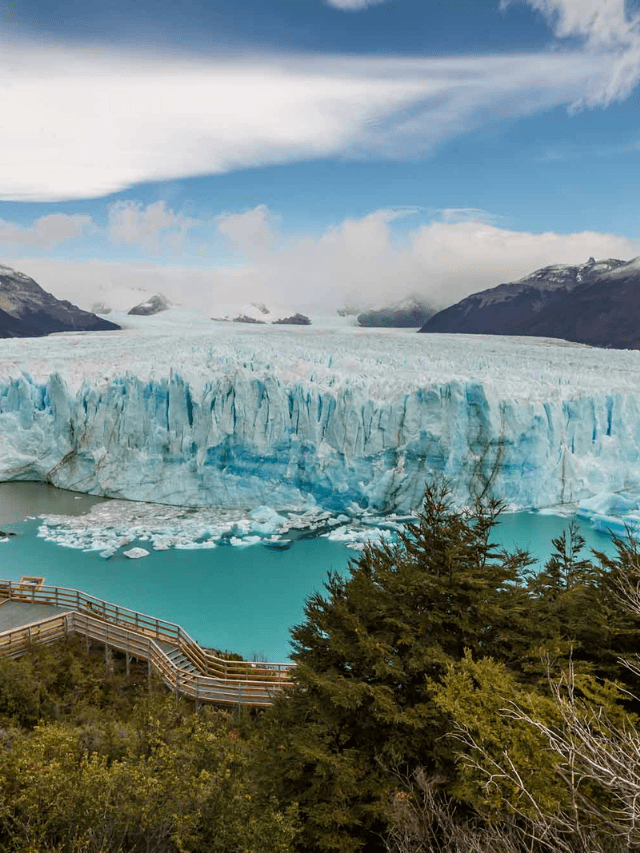
The best way to catch this remarkable phenomenon is from the boardwalks situated a few hundred metres from its snout; late afternoon after the ice has warmed during the day is the most likely time to see it happening.
23. Go to the ends of the earth in Ushuaia
Right at the very tip of the South American continent sits Argentina’s southernmost city: Ushuaia.
Described by many as at the very ends of the earth, Ushuaia has a magical quality, aided no end by its spellbinding scenery: situated at the edges of Tierra del Fuego island, it’s hemmed in by the Beagle Channel in the south and snow-heavy mountains in the north.
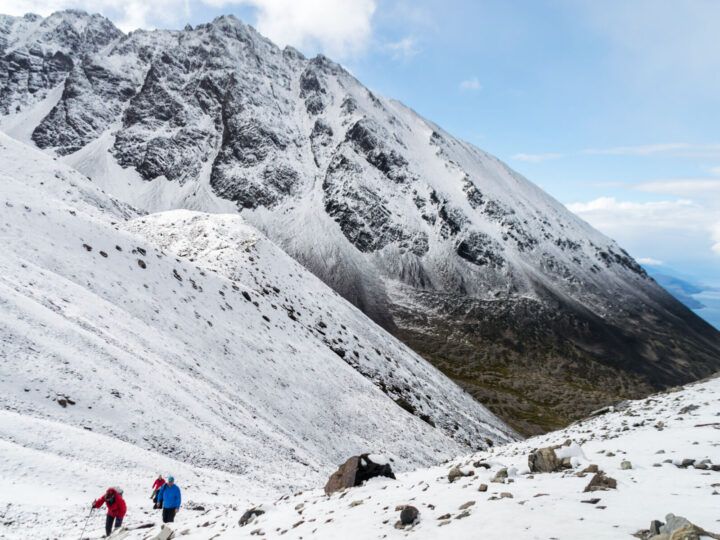
Founded as a penal colony, Ushuaia has a curious history. There’s no better place to learn about it than at the vast and fascinating Museo Maritimo y Museo del Presidio , which is set in the city’s former prison.
Alternatively, head for the White Continent from here to go to the true ends of the earth: expedition cruises to Antarctica leave from here, many of which visit Cape Horn along the way.
Need some advice for choosing an Antarctica cruise? I highly recommend Swoop Antarctica, whose staff have extensive, first-hand experience of sailing to Antarctica and, because they sell cruises for all the well-known companies, can give you handy, impartial advice for choosing the one that best suits you.
Check out their cruises to the Antarctic Peninsula – for a chance to set foot on mainland Antarctica and explore some of the most beautiful parts of the continent – and to South Georgia and the Falklands – for a wildlife bonanza.
We’ve also explored when’s the best time to visit Antarctica – which I highly recommend reading before you start considering a trip. The Antarctica travel season is short and the experiences in different months vary wildly.
24. Hike in the superlative scenery of Tierra del Fuego National Park
West of Ushuaia lies another of Patagonia’s finest national parks. Packed with day hikes that take in stupendous views across dense forests of southern beech and onto the watery depths of the Beagle Channel, Parque Nacional Tierra del Fuego (Tierra del Fuego National Park) is one of the must-visit destinations in Argentine Patagonia.
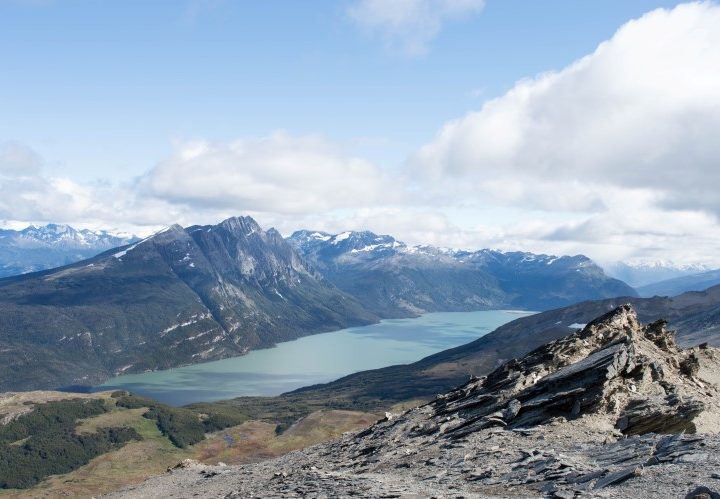
You’ll find plenty of birdlife, including condors and albatrosses, as well as the Southern Fuegian Railway.
Better known as the Train to the End of the World , this 500 mm gauge steam railway was originally used to transport prisoners working to chop timber and now takes you deep into the national park on the final seven kilometers of track. It’s a bit of a tourist trap, but if you love your railways, then it’s a must-do activity.
25. Visit Tierra del Fuego’s first estancia
Founded in 1886 by Anglican missionary Thomas Bridges, Estancia Harberton takes the title of the island’s first ranch. Now operated by Bridges’ descendants, and with the excellent Museo Acatushún that showcases the area’s marine mammals and bird species at its heart, it’s a worthwhile place for a day trip.
Boat tours from Ushuaia take you via the Beagle Channel, the 240-km strait separating Tierra del Fuego from Chile, and where colonies of fur seals, Magellanic penguins, and cormorants can be spotted. Keep your eyes peeled for whales and dolphins in the water.
FAQs about Argentina
What is the most beautiful part of argentina.
Patagonia is arguably the most beautiful part of Argentina. Some would not agree, as much of it is wild and barren, but it’s these qualities that equally make Patagonia so enchanting. In this vast region, you’ll find towering glaciers, vast, unspoiled lakes, and endemic wildlife, with renting a car and taking a road trip around Patagonia , as well as hiking in the region’s national parks , two of the best ways to dive into the region’s beauty.
Is Argentina safe to visit?
Argentina is ranked 68th in the 2021 Global Peace index and third among the safest South American countries . With that said, it’s best to keep some safety considerations in mind. For instance, avoid dark alleys at night and don’t wear anything flashy when wandering the city’s streets. Read our guide to safety in Buenos Aires for more information.
Is Argentina expensive to visit?
On average, the cost of living in Argentina is lower than in the US or Western Europe, meaning Argentina is affordable for travelers. However, flights can be expensive (considerably more so than in neighboring Chile ), with long-distance bus travel often a much more affordable way to cover large distances. Staying on a budget is not impossible here; cooking your own meals, not dining out often, and using public transportation can help trim down your expenses. Learn more about traveling to Patagonia on a budget .
Is English widely spoken in Argentina?
Many people in Argentina speak English, although only a small percentage speak it fluently. In cities familiar with tourism, such as Buenos Aires and Mendoza, you can get by with English as most restaurants provide English menus and museums have English-speaking tour guides. This may not be the case in a small town deep in Patagonia. In that case, we recommend learning basic Spanish so you’ll be able to ask for directions and prices, hire a local guide, or join a group of experienced travelers.
The best time to go to Argentina

Jan 23, 2024 • 4 min read
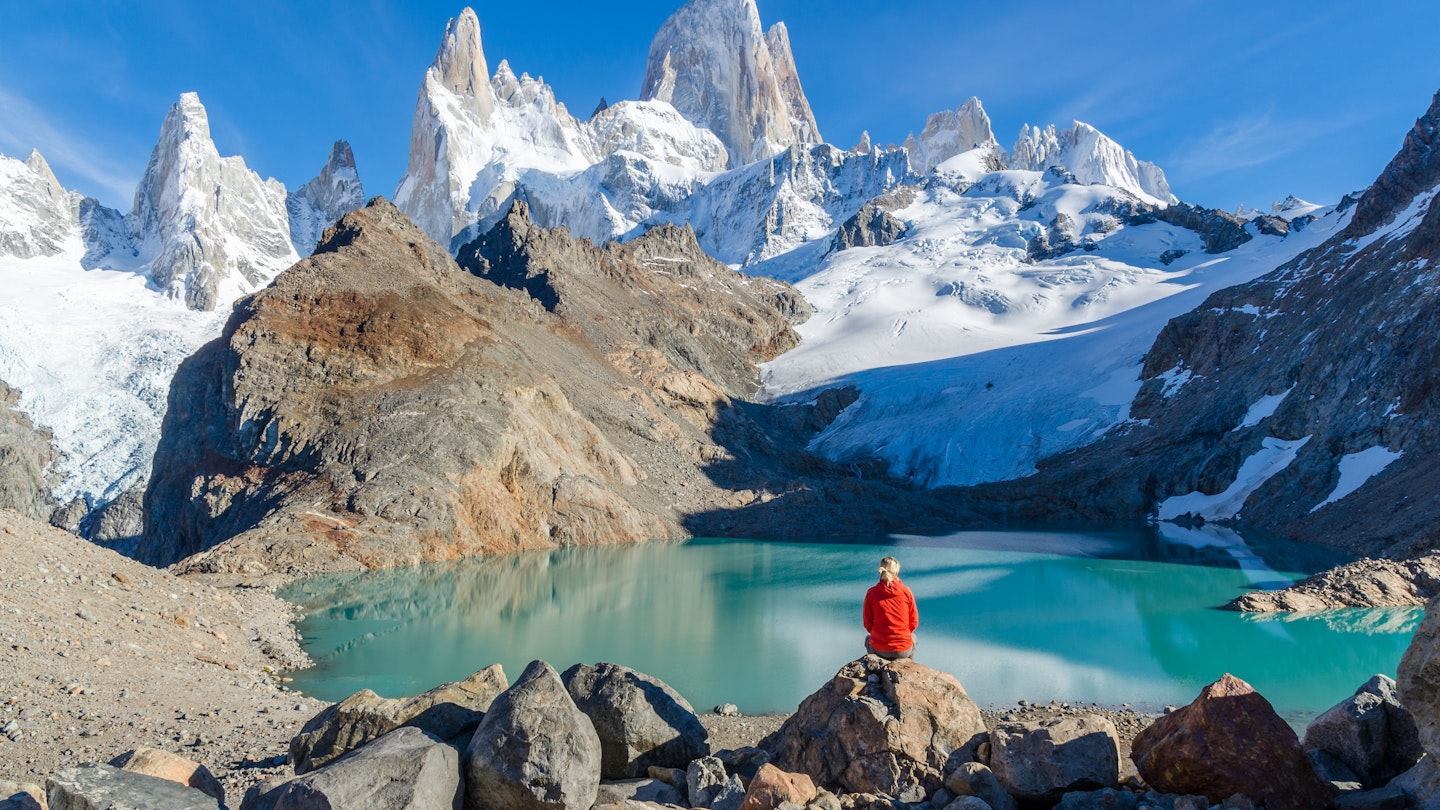
Choose the best time for your visit to Argentina with this seasonal guide © Judyta Jastrzebska / Shutterstock
The eighth-largest country on Earth, Argentina encompasses everything from pancake-flat grasslands to sky-high mountains, humid wetlands to frigid ice fields, emerald forests to rugged coastlines.
In the south, Patagonia provides dramatic scenery and endless horizons, while the dynamic capital Buenos Aires pulses to the rhythms of fútbol (soccer) and tango.
Travelers can visit Argentina throughout the year, but it pays to be aware of the seasonal variations that arise from the country’s sheer size, diverse landscapes, profusion of wildlife and packed calendar of events.
Whether you want to go horse riding with gauchos (cowboys) across the Pampas or spot whales off the Patagonian coast, avoid the crowds on Lake District hiking trails or take part in the grape harvest in the wine region of Mendoza , here’s a guide to the best time to visit Argentina.
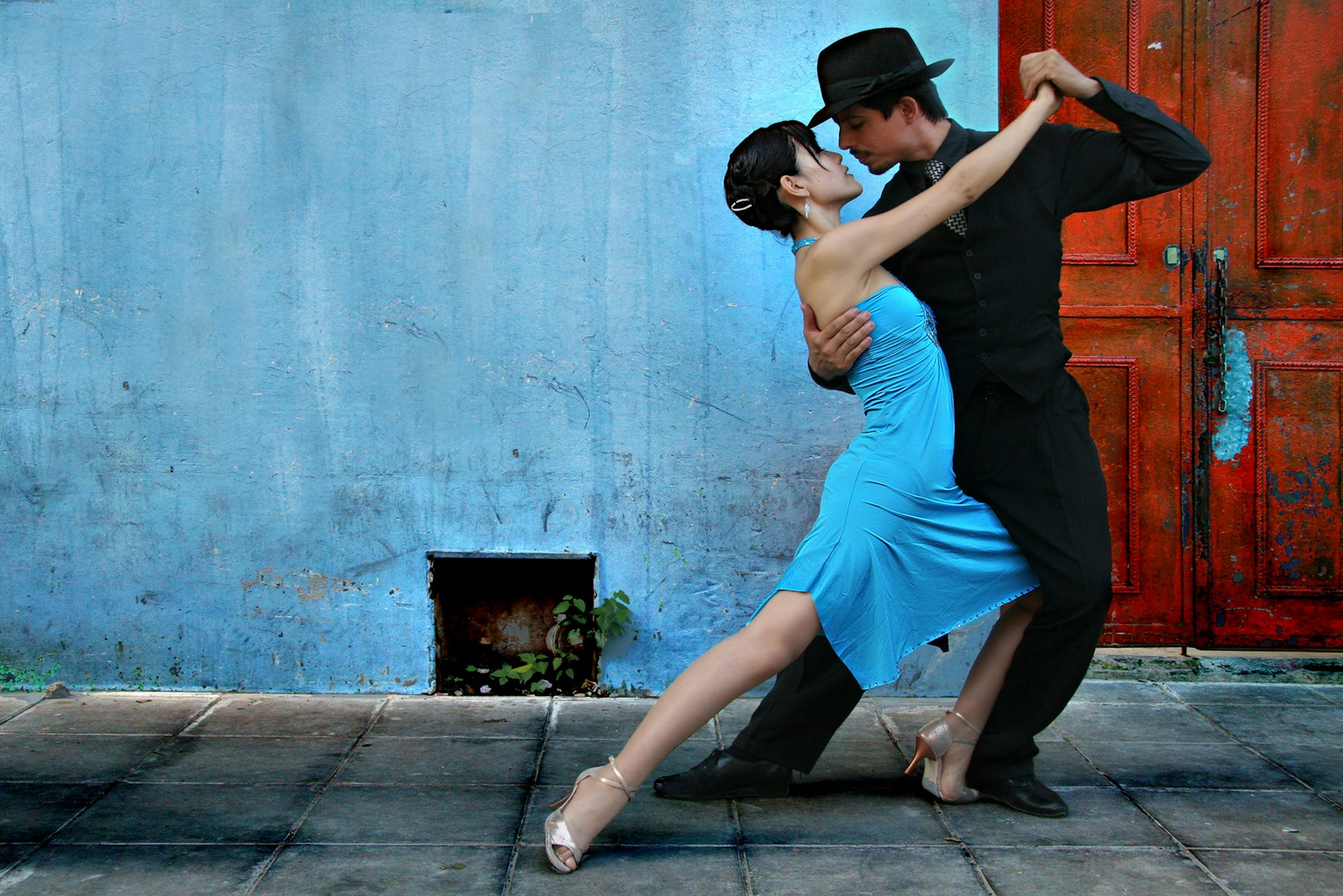
Explore Patagonia and go skiing during the high seasons (December to February and July)
The summer (December to February) is the peak period for international and domestic tourism in Argentina. Buenos Aires is sweltering at this time of year, so many porteños (residents) head off to the beach resorts south of the city, pushing up room rates in the process.
In the north, the Andean desert regions and areas such as Iguazú Falls get extremely hot too. By contrast, the weather conditions are ideal for exploring the national parks of the Lake District, Patagonia and Tierra del Fuego .
Unfortunately, demand for accommodations and prices surge during this period, while key attractions – such as the lakeside city of Bariloche and the trekking hot spot of Parque Nacional Los Glaciares – can be uncomfortably crowded.
A series of notable fiestas take place between December and February, including Carnaval in the northeastern cities of Gualeguaychú and Corrientes, the annual hops festival in the Lake District town of El Bolsón, and the Festival Nacional del Folklore, a major folk music event in Córdoba province.
Meanwhile, July is the peak month for winter sports, with skiers and snowboarders flocking to resorts in the Lake District, Mendoza province and Tierra del Fuego.
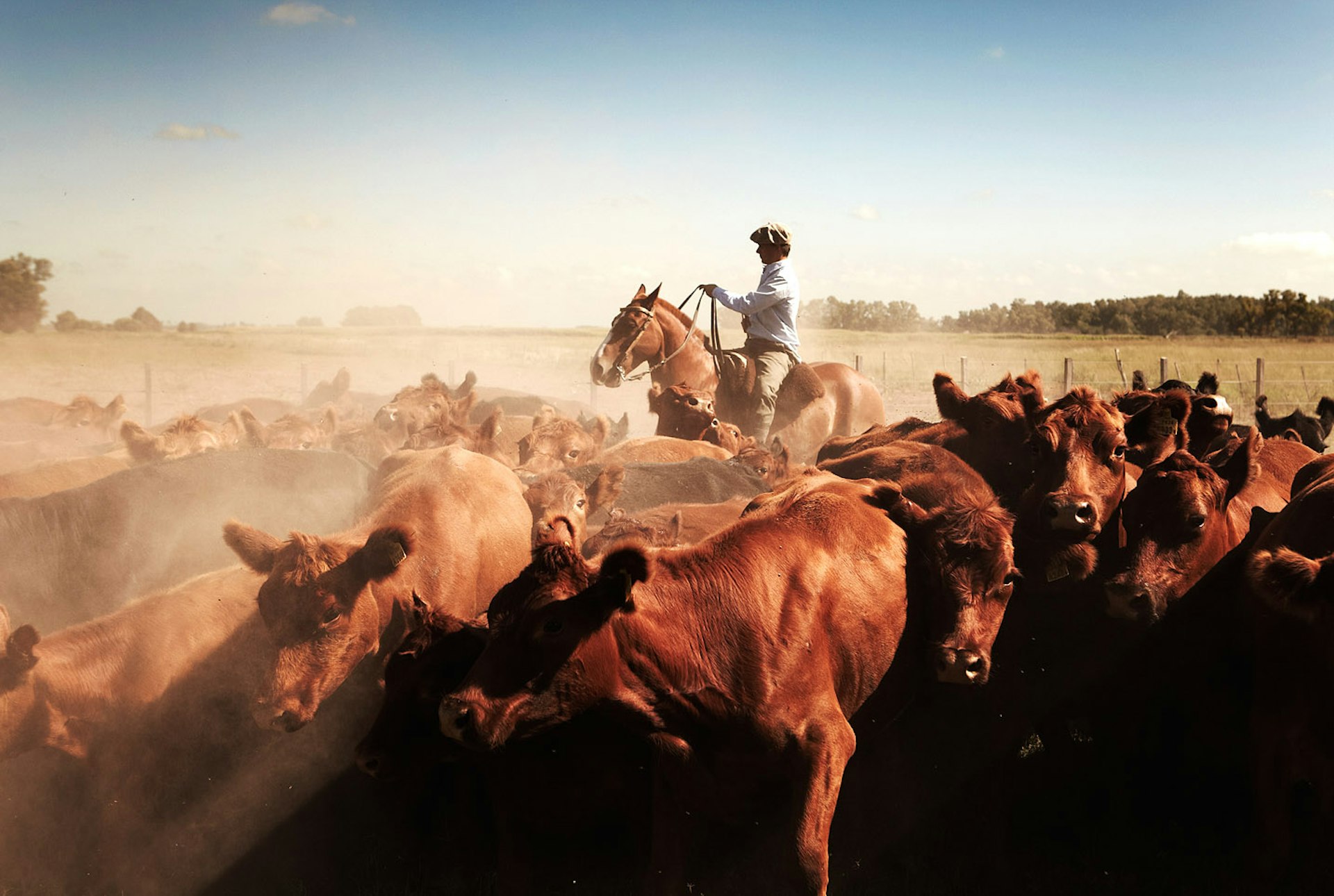
Head to Buenos Aires and skip the hiking trail crowds in the shoulder seasons (September to November and March to May)
The shoulder seasons of spring (September to November) and fall (March to May) offer a winning combination of fewer crowds, lower accommodation prices and generally good weather in Buenos Aires and the surrounding Pampas, central Argentina and the south.
The Lake District is at its most beautiful during these periods, with fall colors and spring blooms, respectively, while hiking trails here and in Patagonia are quieter than the peak summer months.
The September to November shoulder season is also a good time for whale-watching. Between mid-June and mid-December, the waters off Península Valdés in northeastern Patagonia attract hundreds of endangered southern right whales, as well as orcas, elephant seals and myriad marine birds.
Meanwhile, in the northeast, the heat and humidity eases between March and May, which makes visiting places such as the Iguazú Falls a much more appealing prospect.
The shoulder seasons play host to an array of events too. Semana Santa (Easter) is marked across the country, as is the Día de la Memoria (March 24), a public holiday commemorating the victims of Argentina’s military dictatorship.
Over in the wine region of Mendoza, the grape harvest runs from February to April, with the lively Fiesta Nacional de la Vendimia wine festival taking place in the middle of this period. Demand for accommodations grows significantly at this time.
In September (or sometimes August) Buenos Aires hosts the world’s most important tango festival, the Tango BA Festival y Mundial . Following hard on the heels of Oktoberfest in the Germanic town of Villa General Belgrano, November sees a celebration of gaucho culture, the Fiesta de la Tradición, in the Pampas town of San Antonio de Areco , as well as the annual Pride march in Buenos Aires.

Visit the north and save money during the low season (June and August)
Beyond the ski resorts of the Lake District, Tierra del Fuego and Mendoza province, the winter is a quieter and cheaper time to travel in Argentina. June and August are both excellent months for exploring the north, including sites such as the wildlife-rich wetlands of Parque Nacional Iberá , which is warm and relatively dry.
Visiting Patagonia and Tierra del Fuego during the winter is more challenging: aside from the cold, many hotels and hostels close for the season, transport services are reduced and mountain passes are often blocked.
But the lack of crowds (apart from at the ski resorts in Tierra del Fuego) and beautiful snow-covered scenery in the Andean areas are significant draws for intrepid travelers.
Events are thin on the ground during the winter, though on June 21 the far-flung city of Ushuaia in Tierra del Fuego celebrates the winter solstice (the longest night of the year) in style with the memorable Fiesta de la Noche Más Larga.
This article was first published July 2021 and updated January 2024
Explore related stories
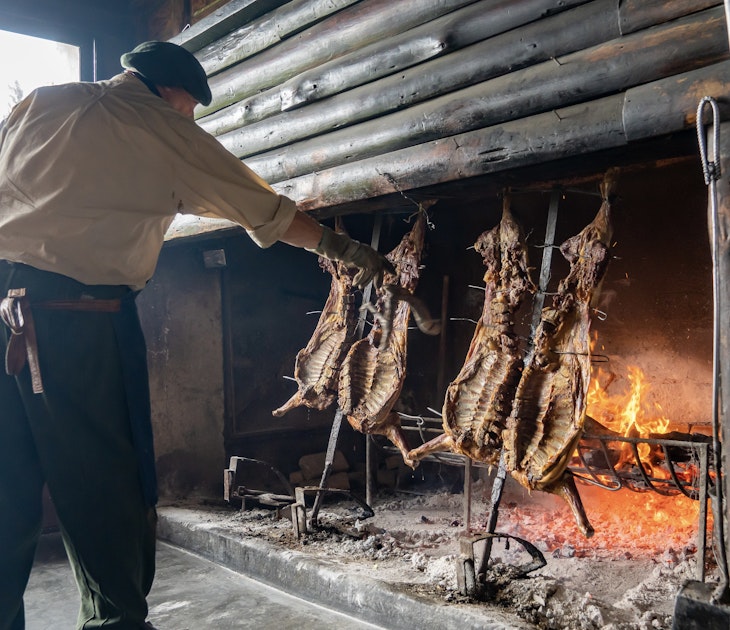
Tips & Advice
Mar 2, 2024 • 8 min read
There’s more to Argentinian cuisine than steak and malbec (though those are both great). Here’s our guide to Argentina’s best food and drink experiences.

Jan 17, 2024 • 8 min read

Dec 15, 2023 • 7 min read

Dec 1, 2023 • 6 min read

Nov 18, 2023 • 7 min read
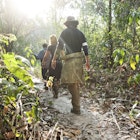
Nov 6, 2023 • 5 min read

Oct 18, 2023 • 5 min read

Oct 6, 2023 • 4 min read

Sep 26, 2023 • 7 min read
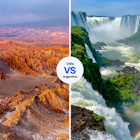
Sep 21, 2023 • 7 min read
Most Popular Cities
Best National Parks
Top Things to Do
Best Places to Hike
Skiing in Argentina
Things to Do in Mendoza
Things to Do in Bariloche
Things to Do in Ushuaia
Guide to Iguazu
Argentina's Glaciers
Every Food to Try
Best Time to Visit
Weather & Climate
Airports in Argentina
Driving Guide
One-Week Itinerary
Top Places to Visit
The Top 15 Places to Visit in Argentina
Buenos Aires is home to cobblestone boulevards, sensual tango halls, century-old cafes, and designer boutiques. If you venture to the east, the Atlantic Ocean offers surfing and the chance to see whales, and penguins. To the north, explore mountains, cactus forests, and lunar landscapes that give way to subtropical jungle, wetlands, and waterfalls. And in the south, Patagonia is filled with the adventure of snow-capped peaks and turquoise glacial lakes. Including both city and countryside, these are the top 15 places to experience Argentina in all of its richness.
Buenos Aires
A cosmopolitan hub that’s both gritty and glamorous, Buenos Aires is a huge city the size of four Chicagos and is composed of many manageable barrios (neighborhoods). San Telmo is the bohemian historical district filled with cobblestone streets, picturesque old bars such as El Federal, and a tango scene with clubs like El Viejo Almacen. Palermo is filled with cute cafes, some lovely vegetarian restaurants (not easily found elsewhere in this red-meat-loving country), shopping, and an abundance of charming boutique hotels such as Fierro and Home Hotel. Recoleta is a refined old-money neighborhood with upscale shops and the ultra-luxury hotels Alvear Palace, Palacio Duhau, and the Four Seasons.
Museums in Buenos Aires are inexpensive or free—art lovers should not miss MALBA, the contemporary art museum. Buenos Aires comes alive at night, with dinners beginning around 9 p.m. and drinks lasting until the early hours of morning. Hit up iLatina restaurant in Chacarita for an exquisite Latin American food experience and follow it up at a speakeasy such as The Harrison or Floreria Altantico.
At the very southern tip of Argentina, Ushuaia is a starting point for most Antarctica trips. A rugged land filled with glaciers and towering mountains, the best of this destination lies outside of the city center. Tierra Turismo is the most reputable guiding company for trips into the National Park, to kayak or to off-road, and for visiting nearby Harberton to see the penguins. Foodies should make a reservation at Kalma , where chef Jorge Monopoli celebrates the native wild foods of the region, or stop into the casual and quirky Volver for local king crab or other fresh seafoods. For even more perspective, travelers can scuba dive the chilly Beagle Channel with Ushuaia Divers or get an aerial view with Heli Ushuaia.
Peninsula Valdes
In what feels like another world from nearby bustling cruise-hub Puerto Madryn, wildlife lovers will appreciate this tranquil haven set on a jutting peninsula where southern right whales, orcas, and penguins can be seen in abundance. Oceano is the go-to hotel in Puerto Piramides, set right on the beach so at certain times of the year guests can laze in bed with coffee and watch whales breaching in the morning. There is a small sandboarding hill, incredible mountain biking through the dunes and along the beach, and scuba diving with sea lions (this is the scuba diving capital of Argentina, after all).
Giving Napa Valley and the wine regions of Italy and France a run for their money, Mendoza is known for its sunny skies, highly Instagrammable vineyards right at the foot of the Andes, and Malbec, Argentina’s national varietal. Horseback ride with Nino Masi from El Viejo Manzano, fly fish with Trout and Wine, or raft the nearby Mendoza River. There’s even hot springs nearby en-route to Aconcagua, South America’s highest peak.
Vineyard tasting rooms range from tiny and cute (Carinae), eclectic and poetic (El Enemigo), homey (Matervini), to large and modern (anything in the Clos de los Siete complex). If budget permits, a stay in a villa at the Vines of Mendoza with dinner at Francis Mallmann’s onsite open-fire restaurant Siete Fuegos is the ultimate Mendoza experience.
Looking more like the Swiss Alps than Latin America, Bariloche is a town in northern Patagonia set on the coast of Lago Nahuel Huapi and bordered by the Andes that are dotted with wildflowers. It is known for its chocolate (here’s looking at you, Mamushka and Rapa Nui!) and its microbreweries (Blest is a local favorite). It’s an outdoor paradise with some great day hikes and multi-day treks, kitesurfing, and Cerro Cathedral for skiing in the winter months of July to September. Bariloche gets crowded with tourism in the middle of summer and winter, so a visit in spring when the wildflowers bloom or in autumn when the leaf colors begin to change is recommended.
Piedra Parada
Still relatively unknown outside of serious rock-climbing circles, Piedra Parada is about an hour and a half from Esquel and a few hours south of El Bolson. It’s Argentina’s sport climbing paradise in the desert of rural Chubut Province and has some of the continent’s best single pitch sport routes going all the way up to 5.14d (very difficult). Nearby climbing hotspots include Cochamo in Chile or Frey in Bariloche, but Piedra Parada has much easier access. There’s a campground, or for more comfort, there is Hosteria Mirador Huancanche in the nearby town of Gualjaina run by a wonderful couple who can not only recommend routes, but can teach about the history, wildlife, indigenous culture, and unique geology that makes this place so special.
El Bolson has one of the most spectacular artist markets in South America (Tuesdays, Thursdays, Saturdays and around half-capacity on Sundays). Drink the local microbrew (the raspberry beer from Cerveceria El Bolson is delicious), or devour Argentina’s most revered gelato at Jauja, where everything is organic and all-natural, with no artificial flavors or colors. Hike the Cajon de Azul, ski the super relaxed and family-friendly Cerro Perito Moreno, or grab a bus or hitch to nearby Lago Puelo where locals flock in the summer to swim in the gorgeous yet chilly lake.
Mar del Plata
Mar del Plata is a modern and developed resort city on Argentina’s Atlantic coast. It is the second most visited city in the country after Buenos Aires, due mostly to its 10 miles of sandy beaches like the wide Punta Mogotes and the popular Playa Grande with its surf breaks. It is a cross between a seaside escape and a bustling city, with museums, an aquarium, and a vibrant nightlife. While Argentina is famous for its red meat, seafood fresh from the ocean rules here. Right around the port there are a ton of reasonably priced restaurants to try the day’s catch. Mar del Plata is family-friendly but also home to a raucous party vibe that enjoys clubbing and drinking until the wee hours of morning, so it definitely has a little something for everyone.
Just an hour by train from the center of Buenos Aires, Tigre is the ideal day trip to get out of the city. This town is home to its delta of hundreds of islands and waterways. There is even a museum of yerba mate, the herbal drink that Argentines are crazy about. The best way to experience Tigre is by small boat or kayak (recommended is Sudeste Paseos), as these can go down the smaller, less traveled waterways where there is a better chance to spot wildlife.
Villa La Angostura
In the picturesque Lakes Region, this is a main town along the Siete Lagos drive. Most activities revolve around the lake, as Lago Nahuel Huapi is a center point here. There’s sunset sailing, fly fishing in Correntoso (the world’s shortest river), and gorgeous hiking in myrtle (arrayan) forests. It is local legend that Walt Disney was so inspired by the magic of the forests in the region that he based the scenery of Bambi on them.
This place is like Avatar, if only the land in the movie Avatar was overrun by tourists with cameras. But no matter how many tourists crowd the walkways, it’s still worth a visit. Iguazu National Park has some of the most stunning waterfalls on this planet, and these are accessible from both the Argentine side and the Brazilian side of the border. There are around 275 falls in total, ranging from gentle trickles to full-on powerhouses like Devil’s Throat. Walk the trails, explore up close and personal from a boat tour, or if there is cash to spare, do a fly-over in a helicopter.
If Argentina has some of the world’s best waterfalls, mountains, and deserts, why shouldn’t it also get a huge glacier that puts on a show every time it calves in thunderous breaks? While the town of El Calafate is overpriced and not that interesting (nearby El Chalten is much more charming), it happens to have the draw of the National Park that has one of the country’s most visited attractions, Perito Moreno glacier. For those really into that sort of thing, there are multi-day boat tours that get to lesser-known and even more stunning glaciers. But for those with the time or budget to just see one, an adventurous trek atop Perito Moreno with crampons is the way to go.
TripSavvy / Maria Ligaya
In the northwest of the country, this is the place to unwind and experience live folkloric music, some of the best empanadas in the country, and local varietals of wine, such as Torrontes, in droves. Salta city is colonial and cultured—take time to see the world’s most well-preserved mummies, the Children of Llullaillaco, on exhibit at the Museum of High Altitude Archaeology. Heading just north of town are laid-back pueblos such as Tilcara and Purmamarca, where the famous seven-colored mountains can be hiked and photographed in all their glory.
Bahia Bustamante
Bahia Bustamante is a private sheep farm in Patagonia sprawling over about 210,000 acres. It welcomes up to 18 guests at a time from August through May, who mostly come for the unique wildlife experience. It's a UNESCO Biosphere Reserve and an IBA (Important Bird and Biodiversity Area) due to its diversity of both seabirds and marine mammals.
In full transparency, the town itself is congested and leaves much to be desired. But it makes the list for one strong reason: dinosaurs. The Ernesto Bachmann Municipal Museum exhibits the remains of Giganotosaurus carolinii (the name means “great lizard of the south”), considered to be the largest carnivorous dinosaur of all times. And the Argentino Urquiza Palaeontological Museum has the most complete Titanosaur in the world. In San Patricio del Chañar, an Aeolosaurus (wind lizard) was discovered during the building of Familia Schroeder Winery. It's currently on display in one of its rooms.
One Week in Argentina: The Ultimate Itinerary
The Glaciers of Argentina
Your Trip to Argentina: The Complete Guide
15 Places to Go Hiking in Argentina
50 Incredible Pictures of Argentina to Inspire Your Next Vacation
10 Amazing National Parks in Argentina
Most Popular Cities in Argentina
10 Top Things to Do in Bariloche, Argentina
Los Glaciares National Park: The Complete Guide
12 Trips Every Traveler Should Take Before Turning 50
Top 10 Reasons to Visit Argentina
The 10 Best Day Trips from Buenos Aires
The Best Time to Visit Argentina
The Best Backpacking Destinations in South America
Nahuel Huapi National Park: The Complete Guide
20 Things to Do in Buenos Aires
- Skip to primary navigation
- Skip to main content
- Skip to primary sidebar
- Skip to footer
TravelAwaits
Our mission is to serve the 50+ traveler who's ready to cross a few items off their bucket list.
14 Wonderfully Warm Places To Visit In March | Enjoy the Warmth in Early Spring

travelwild / Shutterstock
- Activities and Interests
- Australia and South Pacific
- Central and South America
- Destinations
- Mexico and Caribbean
- Middle East
- Seasonal Travel
- Spring Travel
- United States
Note: The Travel Awaits team regularly updates content to provide the latest, and most accurate information to our readers. The updated content in this article may not reflect the views or opinions of the original author.
March is one of the best times to vacation. The March equinox, which occurs around March 20, marks the beginning of spring in the Northern Hemisphere and the beginning of fall in the Southern Hemisphere. For this reason, March tends to be a mild time of year, warmer than the winter months and cooler than the summer months.
March also sees significant celebrations that center on rebirth and growth, like Carnivale, Holi, and Easter. Additionally, flight and accommodation costs tend to be lower between the peak winter season and the summer high season. And since it’s a quarter of the way into the year, March is the perfect time for some much-needed rest and relaxation.
Here are 14 wonderfully warm places to visit in March.
14 Wonderfully Warm Places To Visit In March
You can take a look at quick summary of these 14 wonderful places by looking at the story below, or continue reading to learn about each one in more detail:
1. Destin, Florida

A beach town on the Florida Panhandle, Destin is renowned on the South Coast for its beautiful beaches, warm water, and marine wildlife. At Destin Harbor, you can feed dolphins, take an ocean tour, or lounge on the Crab Island sandbar.
Although high season in Destin begins on Memorial Day weekend and runs through the summer, college students descend on the town during Spring Break, so you’d be better off traveling to the beach town before or after this time. Fewer students and tourists mean you get the crystal blue water and white sand all to yourself! Enjoy warm days on the beach and cozy up near a heater in the evening at HarborWalk Village.
Discover some of the best vacation home rentals in Destin here .
Explore hotels and Airbnbs near Destin, Florida
2. Cancún, Mexico

Cancún’s year-round warm weather attracts many visitors seeking to fly south for the winter. While winter is peak travel season and the summer months are too hot and humid, March is just right, with temperatures fluctuating daily between the low 70s and high 80s.
One of the biggest spring equinox celebrations on Earth occurs at Chichen Itza, one of the great wonders of the world. The Mayans , the ancient civilization that built the city of Chichen Itza, also studied the stars and planets, and the information they gleaned informed their construction. During the equinox, the light shining on the Pyramid of Kukulcan looks like a snake slithering down the temple steps.
Just a 2-hour drive from Cancún, Chichen Itza is an easy day trip that allows tourists to view this phenomenon and to partake in the equinox celebration.
Explore hotels and Airbnbs near Cancún, Mexico
3. Manuel Antonio, Costa Rica

Manuel Antonio is a small beachside town with gorgeous luxury condos and hotels. It’s close to the beach and provides easy access to Manuel Antonio Park, one of the most popular parks in Costa Rica . Although it’s far from the largest national park in the country, it’s known for its biodiversity , which makes it the main attraction in this region.
Best Carry-On Luggage: Top-Rated Pieces Of 2022
Since March is the area’s dry season, you’ll be able to participate in many outdoor activities in the park, including swimming, snorkeling, and hiking. March’s daily temperatures fall in the pleasant range of 62 to 84 degrees, and there’s not much rain. In this mild weather, you’ll be able to see an incredible variety of plants and animals on the trails, including two-toed sloths, squirrel monkeys, and agoutis, among others.
Explore hotels and Airbnbs near Manuel Antonio, Costa Rica
4. Cartagena, Colombia

Colombia has recently made many travel bucket lists, and for good reason! With temperatures hovering between the mid-70s and high 80s in March, the tropical climate of Cartagena is ideal for those seeking to thaw after a long winter.
Rich in history, culture, and colonial architecture, Cartagena’s Old Town streets are full of charm. Since March is Cartagena’s dry season, you’ll have plenty of time to explore city landmarks like Plaza de la Aduana, San Felipe de Barajas Castle, and the Palace of the Inquisition. Since Cartagena is a port city, it’s also close to several spectacular islands and beaches, including Playa Blanca, Isla Tierrabomba, and Playa de Bocagrande.
Explore hotels and Airbnbs near Cartagena, Colombia
5. Lima, Peru

Although Cusco, Peru , is the closest city to the ancient Incan city of Machu Picchu , Lima is just as worthy of visiting. Lima is not only the capital city but also the largest city in Peru, with 10 million people.
Although March is part of the peak tourist season in Peru, the warm weather along the coast creates the perfect conditions to explore the City of Kings. The sprawling urban center is home to a growing entrepreneurship scene, Michelin-star restaurants, and famous museums and art galleries. Modern buildings and trendy neighborhoods like Miraflores stand alongside the historic center recognized as a UNESCO World Heritage site .
Explore hotels and Airbnbs near Lima, Peru
6. Buenos Aires, Argentina

March’s mild fall weather is a relief after the hot and humid Argentine summer. Buenos Aires is known as the Paris of South America for its European-style monuments and architecture, international fare, and arts scene. The sexy Argentine tango originated in Buenos Aires , and can still be seen dancing in the streets — especially during the mild-weather months!
The city’s historic center is brimming with iconic landmarks such as the Teatro Colón opera house, Plaza de Mayo, and Recoleta Cemetery (which contains the tombs of famous Argentinians like Eva Perón, the wife of Argentine President Juan Perón and the First Lady of Argentina from 1946 until her untimely death in 1952).
Explore hot e ls and Airbnbs near Buenos Aires, Argentina
7. Dublin, Ireland

It’s a completely different experience celebrating Saint Patrick’s Day in the country where it originated. The patron saint of Ireland, known for bringing Catholicism to the island, receives five days of celebration during mid-March. The holiday may draw crowds, but there are still fewer people than there are during the summer months.
In between the Celtic festivities, enjoy the medieval architecture, cobblestone streets, and the rich history of Dublin . Wander through the streets during the day and visit Saint Patrick’s Cathedral, the National Gallery of Ireland, and Trinity College. In the evening, the temperatures drop, but that’s nothing a silky Guinness stout can’t fix!
Explore hotels and Airbnbs near Dublin, Ireland
8. Venice, Italy

One of Italy’s most notable cities celebrates Carnevale, or Mardi Gras, in grand style. During several weeks in late February or early March, Venice’s city center is transformed with exquisite costumes, masks, and parades. It’s one of the most joyful, festive times of the year to visit Venice.
March is a great time to visit Venice before the massive crowds of tourists arrive in the summer. The spring weather, however, is rather unpredictable; temperatures are usually in the 60s, and you might encounter rain or even flooding due to rising tides and sinking land.
Explore hotels and Airbnbs near Venice, Italy
9. Melbourne, Australia

In March, the tail end of summer in Melbourne, the city experiences highs in the mid-70s to the 80s. It’s the perfect time to explore one of the largest cities in Australia. Modern buildings stand next to beautiful historic structures including Flinders Street Station , Saint Paul’s Cathedral , and State Library Victoria .
Not only is the climate great for exploring the coffee, food, and art scenes, but it’s also good for getting outside of the city. Spectacular beaches and coastline await in Melbourne , along all 150 miles of the Great Ocean Road.
The mild, dry climate is also perfect for growing grapes. Spend time in Yarra Valley , just an hour outside Melbourne, drinking local wine, eating on green terraces, and shopping. The area is especially known for its flavorful pinot noir!
Explore hotels and Airbnbs near Melbourne, Australia
10. Cape Town, South Africa

Set along a stunning coast and towering mountains, Cape Town is a lovely place to visit at any time of the year. However, the great weather and the city’s international jazz festival make Cape Town one of the best places to visit in March.
Hike Table Mountain, tour vineyards, explore historic sites, attend lively festivals and embrace March’s pleasant weather in South Africa.
The dry heat creates pleasant conditions for wildlife watching while visiting penguin colonies at Boulders Beach, and learning about European colonization, apartheid, and the legacy of Nelson Mandela on Robben Island .
Explore hotels and Airbnbs near Cape Town, South Africa
11. Petra, Jordan

Another wonder of the world on this list, Petra , is an ancient city located south of the Dead Sea. Inhabited for more than 200,000 years, the Rose City — so called for the pink hue of its stone cliffs — is best known for the carved cliff face of the Treasury, which is believed to have been a temple or tomb for a royal family.
The trek to Petra takes several hours, and it can be miserable during the sweltering summer. However, during March, temperatures are generally in the mid-70s, and the highs don’t exceed the low 80s. This weather makes for an enjoyable excursion to Petra during the day, or even at night, when you can see the Treasury lit up by thousands of candles.
Explore hotels and Airbnbs near Petra, Jordan
12. Rishikesh, India

Known as the Yoga Capital of the World, Rishikesh is nestled in the Himalayan foothills along the Ganges River. People looking for enlightenment travel from around India and the world to Rishikesh. Ashrams are open year-round for immersive yoga experiences, but in March, Rishikesh holds an annual week-long International Yoga Festival . It includes yoga classes, cooking classes, and talks by spiritual and wellness leaders.
Already a vibrant country, India becomes even more colorful during the month of March. The famous festival of colors, Holi , symbolizes the victory of good over evil. The celebrations involve dancing, singing, and most notably, different colored powders that participants throw at each other. The celebrations occur across the country, but Rishikesh provides a more intimate place to celebrate than some of the big cities in India.
Explore hotels and Airbnbs near ishikesh, India
13. Canary Islands, Spain
Often called the islands of eternal spring, the Canary Islands offer a delightful dip into Spanish culture paired with gorgeous beaches and breathtaking volcanic landscapes.
With relatively fewer tourists, you can get reasonable prices and great weather for beach holidays and sightseeing.
Imagine yourself surrounded by volcanic terrain, amidst lush greenery and vibrant flora, that offer unparalleled hiking opportunities. March is also adorned with vibrant festivals, most notably the Carnival of Santa Cruz de Tenerife . Whether you’re a beach-goer, an outdoor enthusiast, or a culture lover, the Canary Islands have something for everyone.
Explore hotels and Airbnbs near Canary Islands, Spain
14. Maui, Hawaii
In March, Maui’s beach resorts are way less hot and busy than during summer, but still just as warm and perfect to bask in the sunshine after a bleak winter.
If you are traveling to Maui for the first time, you should visit the black sand beaches, explore the island’s many waterfalls, and book tickets for sunsets at Haleakala. March is ideal for outdoor activities like snorkeling and whale watching , and there are plenty of festivals and events to enjoy unlike in Central America at this time of year.
No matter if you are visiting as a family vacation, a friend group, or even a romantic getaway, this beach destination is an amazing place to visit. Ready to book your getaway?
Explore hotels and Airbnbs near Maui, Hawaii
Where in Europe Is It Warm in March?
The south of Europe is lovely in March, especially the islands. Madeira and the Canary have at least seven hours of sunshine a day and pleasant sea average temperatures of 66°F. Other popular March destinations are Malta, Cyprus, and Greece.
What Country Is Warm and Cheap in March?
Bali in March is extraordinary and prices are lower as the rainy season is on the way out. Cape Town in South Africa is another affordable destination that is scorching in March and perfect for exploring nearby beaches and wineries.
Where’s Warm in March for a Beach Vacation?
With Maui March temperatures in the mid-80s on rain-free days, Hawaii’s beaches are a welcome escape from the gloom of winter. For a more alternative experience, explore Margarita Island or the Los Roques archipelago in Venezuela or discover the Nicoya Peninsula in Costa Rica.
What Are Warm Places to Visit in the US in March?
In the United States, Florida, Texas, and California offer brilliant beach vacations, while Hawai‘i continues to be as reliably sun-soaked as ever. The arrival of Spring brings with it the welcome return of warmer temperatures to many parts of the US.
Is March a Good Time to Travel?
Yes. Whether you’re looking for a fun spring break, a family destination, or a romantic location, taking a trip in March will likely result in lower airfare and lodging rates. So, take advantage of savings and steer clear of crowds by securing your dates as soon as possible.

Hailing from California, Vita travels the world, finding meaning and purpose in each destination, activity, and interaction, while inspiring others to do the same! When she’s not dreaming about the next destination, chasing golden hour, or dancing West Coast Swing, she’s most likely to be found documenting her travels and time spent living abroad in Australia on her blog, My Walk in the World .

The Best Argentina Itinerary: How to Spend 2 Weeks in Argentina
Are you planning your itinerary for Argentina? Looking for the best travel route? You’ve come to the right place!
I’ve visited Argentina 3 times, and on every trip, I discover something new to love about the country.
Whether it’s the landscapes of Patagonia, the malbecs of Mendoza, or the parrillas (steakhouses) of Buenos Aires, Argentina is pretty epic!
If you follow my 2 week Argentina itinerary, you’ll get a taste of what makes the country so unique. And if you have any questions at the end, drop me a message in the comments section, and I’ll be happy to help!
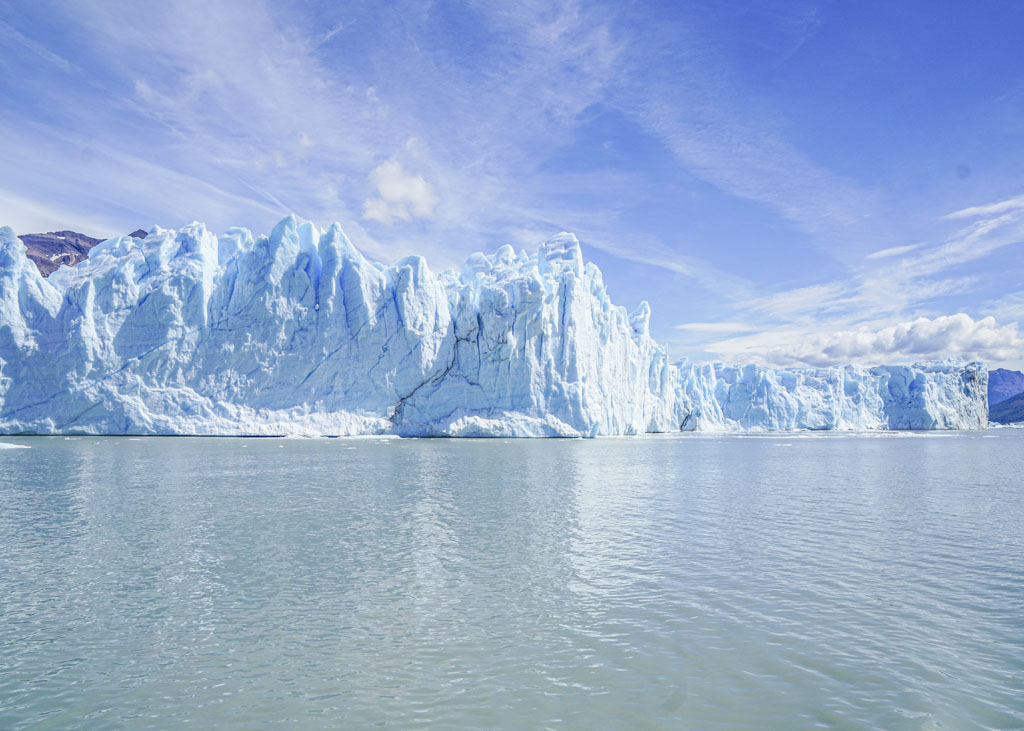
Torn Tackies contains affiliate links. If you make a purchase using one of these links, I may receive compensation at no extra cost to you. See my disclosure for more information.
Quick Navigation
Overview of my Argentina itinerary
Day 1-2: buenos aires, day 3-4: el calafate, day 5-7: el chalten.
- Day 8-10: Mendoza
- Day 11-13: Iguazu
- Day 14: Buenos Aires
Tips for 2 weeks in Argentina
Argentina is a massive country! With only 2 weeks, there’s not enough time to do and see everything. This guide covers the highlights and is a good balance of adventure, culture, cuisine, and nature.
You can customize this Argentina itinerary depending on your budget and the way you prefer to travel.
Here are a few tips before we get started.
- Every Argentina bucket list should include the towns of El Chalten and El Calafate in Argentina Patagonia.
- The distances in Argentina are far! If you only have 2 weeks, air travel is the way to go. You will still have long flights, but unfortunately, there’s no way of avoiding this.
- If you’re not visiting the Brazillian side of Iguazu Falls, reduce your time there to 2 nights and add an extra night in Buenos Aires at the start of your trip. This will give you more time to recover after a long international flight.
- It’s a busy itinerary. You’ll visit all the main attractions and cover a lot of ground. If you prefer to travel slower and minimize flying time, skip Iguazu, the last destination on this route. Instead, add an extra day in Patagonia and Mendoza. This is what I’d do with only 2 weeks in Argentina.

The bustling city of Buenos Aires is the capital of Argentina. Your international flight will most likely arrive here, marking the start of your Argentina itinerary.
Known for its Parrillas (Steakhouses), tango shows, and impressive architecture, Buenos Aires is a fun city to explore.
You only need 2 nights here, giving you more time to explore other places in the country. If you have more than 2 weeks in Argentina, you can stay for 3 nights instead.
How to get to Buenos Aires
Buenos Aires has two aiports. If you’re arriving on an international flight, you’re most likely arriving at Ezeiuza Airport (EZE). This is a 45-minute drive into the city.
The domestic airport is called Aeroparque (AEP). It’s closer to the city and more convenient if you’re traveling within Argentina.
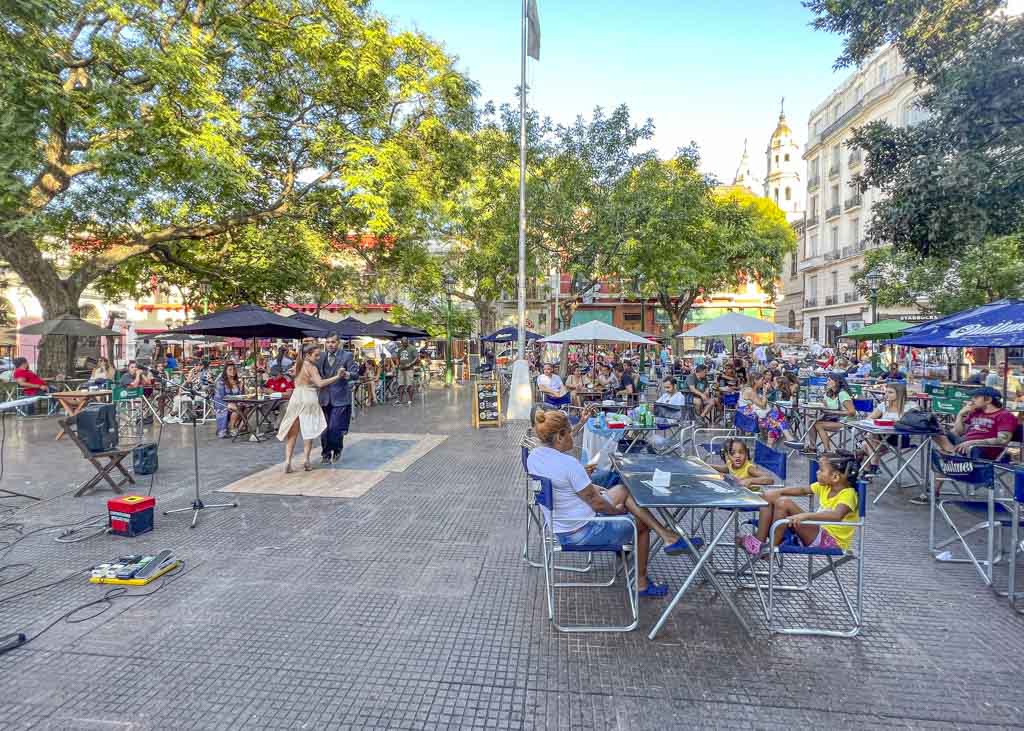
What to do in Buenos Aires
If you arrive mid-morning, head to your accommodation, drop off your bags and get ready to explore Buenos Aires.
Go to a Tango show: You can join a tango show like this one . Or, if you prefer a more relaxed vibe, you can visit one of the many plazas in Buenos Aires instead. From 3 pm, these town squares are bustling with performers dancing and playing music. I went to Plaza Dorrego in San Telmo and enjoyed being outside, drinking a beer under the trees while watching the dancers do their thing.
Do a free walking tour: I did this free walking tour through Recoleta and it’s an excellent option for budget travelers. But there were so many people in the group, and we constantly had to wait for everyone to come together. If you’re looking for a more personal and interactive tour, pay for a smaller group tour. You’ll learn a lot more from a tour like this.
Visit the La Baco neighborhood. Caminito Street is a famous pedestrian street and alleyway in La Boca. It’s known for its brightly painted buildings and street art. It’s become a huge tourist attraction, so expect crowds.
Go to San Telmo Market. San Telmo Market (or Mercado) is a vibrant market in a huge warehouse-type building. There are many restaurants, bars and lots of music. Sundays are the most popular and can get overly busy – I suggest avoiding it on the weekend. I went on a Friday, and it was awesome!
Eat Dulce de Leche. Dulce de leche is a sweet caramel-like sauce or spread popular in Argentinian cuisine. It’s used in various desserts and sweet treats, such as cakes, cookies, ice cream, pastries, and more.
Go for a steak at a Parrilla. Argentina is famous for its world-renowned steaks. I can confirm that they are incredible. The best I’ve had. You’ll need to have a booking as the good ones have limited availability. I went to Grandes Carnicerias del Plata in San Telmo and highly recommend it.
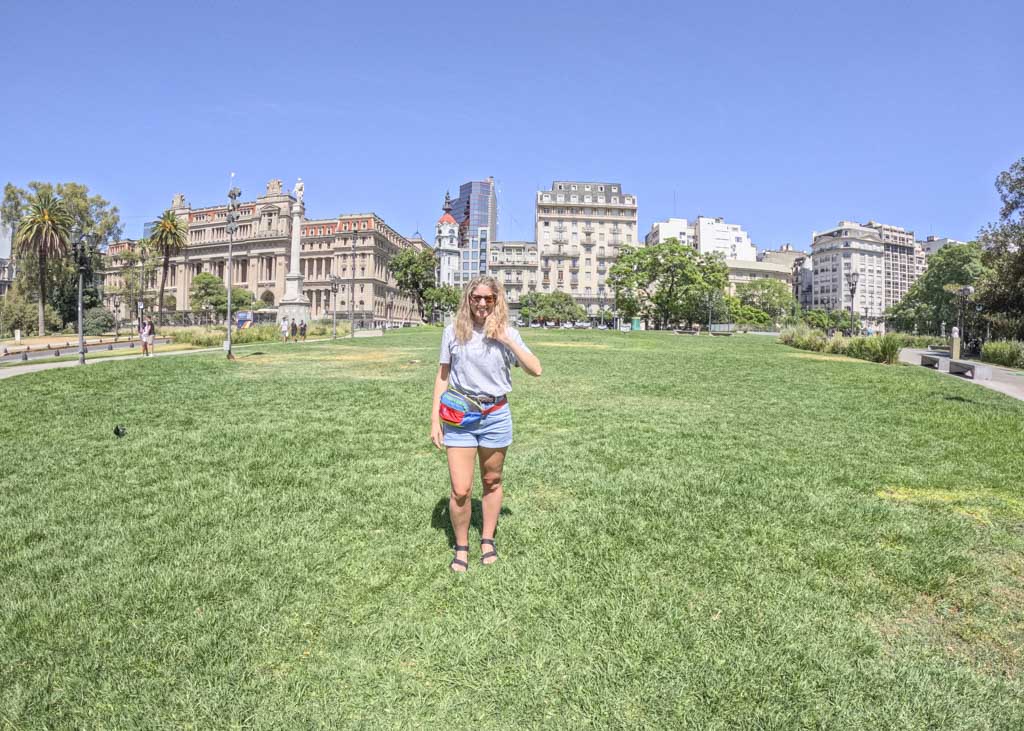
Where to stay in Buenos Aires
I stayed in San Telmo and enjoyed this neighborhood. It’s laid back and authentic, with many locals calling it home. Anselmo Hotel Buenos Aires is a great hotel that is close to many attractions.
Another popular area to stay in is Palermo. It’s the tourist hub and in the heart of the city. These modern and new apartments are a great option that offers fantastic city views. There’s also a rooftop pool!
Today, you’ll leave the hustle and bustle of the capital and head down to the southern tip of Argentina: Patagonia.
It’s a bucket list destination for most travelers, so you can’t skip it! Our first stop will be the town of El Calafate, home to the famous Perito Moreno Glacier.
I don’t suggest more than 2 nights in El Calafate. The glacier is the main attraction in El Calafate, and you’ll need a full day to visit it.
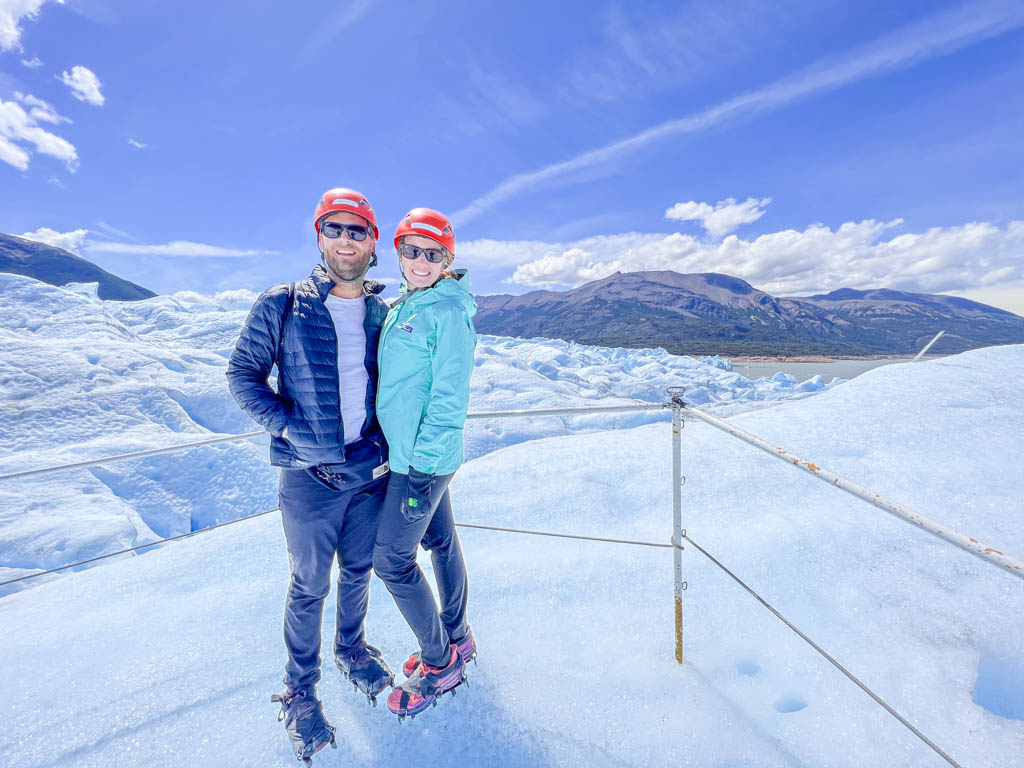
How to get to El Calafate
It’s a 3.5-hour flight from Buenos Aires to El Calafate in Argentina Patagonia. Aerolineas Argentinas, JetSmart, and FlyBondi all service daily flights to the region.
Try to book a morning flight so that you have the afternoon to walk the streets of El Calafate.
Things to do in El Calafate
After landing in El Calafate and checking into your hotel, it’s time to explore the town.
Here are a few things to do if you have the afternoon free. Remember that your second day in El Calafate will be at the glacier, so you won’t have much time (or energy) to do anything after that.
Have lunch at La Zorra Taproom. The beers are magnificent, and their food is equally impressive.
Check out the El Calafate sign. On the hill alongside Plaza de los Pioneros, a wooden walkway leads to the El Calafate sign.
Go for dessert at Viva la Pepa. These were the best crepes I’ve ever had. Indulge in cheese and wine at The Wine Shop. We did a great tasting here and learned a lot about Argentina wine.
Parilla at La Lechuzita. This steakhouse is highly underrated.
Now that your first day in El Calafate is over, it’s time to prepare for the second.

Visit Perito Moreno Glacier
El Calafate is the gateway to the Perito Moreno Glacier . It’s located in Los Glaciares National Park, a 90-minute drive from town.
This glacier is the main attraction in El Calafate. And yes, it’s as impressive in real life as in the photos.
How to explore Perito Moreno Glacier
Planning your trip to the glacier is more challenging than it seems. There are no public buses to and from the park, so you’ll need to rent a car or pre-book a bus or tour; the latter is the most popular option.
What you can do in the park is limited to the below activities.
- Perito Moreno walkways: If you’re on a budget, you can book a bus to Los Glaciares National Park and visit the walkways only. These comprise of 4 km of interconnected paths that offer panoramic views of the glacier.
- Glacier trekking tour: I did this Mini trekking tour , which was well worth the money. Not only do you get to walk on the actual glacier, but it also includes a short boat trip. You’ll have some time to explore the walkways as well.
- Boat around the glacier: The Mini trekking tour sells out fast, so a good backup option is this boat cruise , which allows you to get closer to the glacier.
Regardless of what tour you do, visiting Perito Moreno Glacier will be expensive! But it’s worth every cent.
Book your spot here , as there is limited availability.
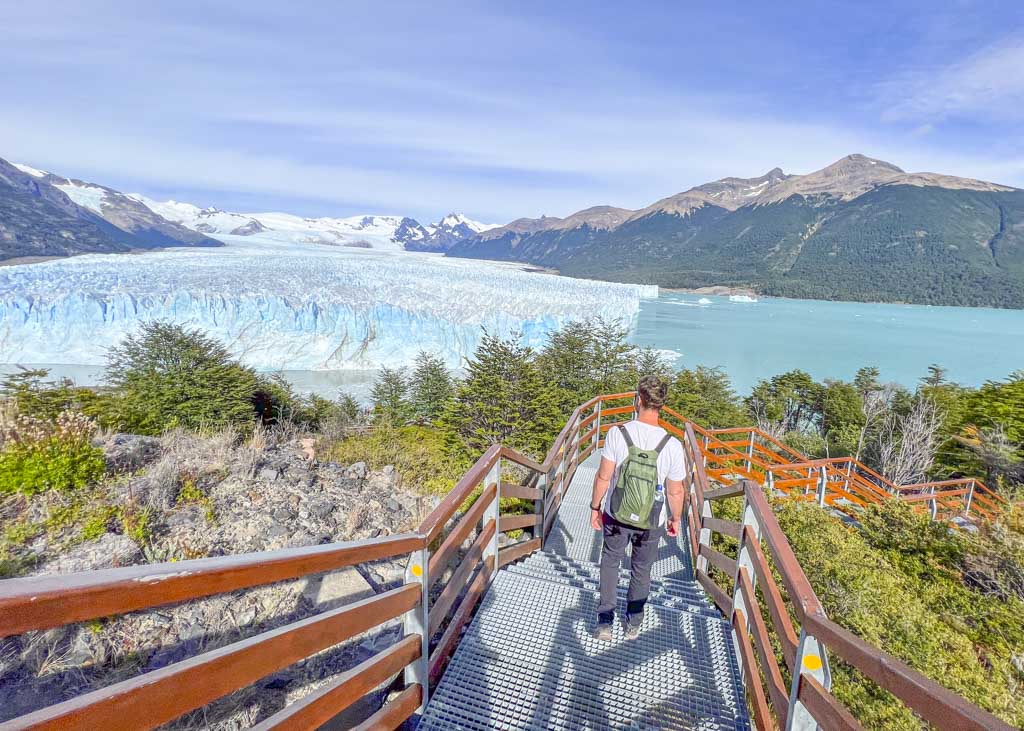
Where to stay in El Calafate
I stayed at Folk Hostel , and it’s a great choice for backpackers. It’s close to the bus terminal, but you’ll have to walk further to the main town center. If you would prefer to be closer to town, you can’t go wrong with
Mirador del Lago Hotel has large, gorgeous rooms with beautiful views. The breakfasts are exceptional and perfect for those looking for a more comfortable and luxurious stay.
El Chalten is the hiking capital of Argentina Patagonia. It’s a charming town, smaller than El Calafate.
It’s also my favorite place in Patagonia, and I suggest spending 3 nights here.
Top tip: Not into hiking? I suggest visiting Bariloche instead of El Chalten if you don’t enjoy hiking. It’s also in Argentina Patagonia. I visited both areas and preferred El Chalten, as the hikes are incredible! But the lake district of Bariloche is equally as beautiful and offers more activities that don’t involve intense trekking.
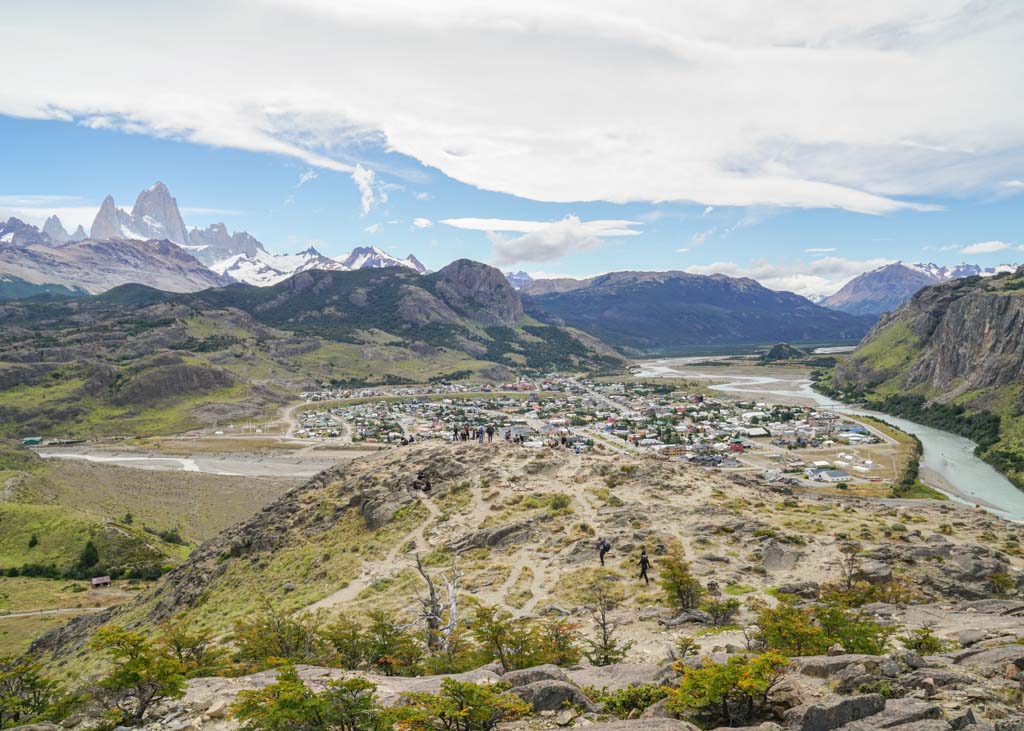
How to get to El Chalten
You’ll need to take a 3.5-hour bus from El Calafate to El Chalten. The journey is incredibly scenic, and the buses are comfortable. I booked my bus through Bus Bud. You can check prices and availability here .
If you’re changing the route of your Argentina itinerary and want to visit El Chalten first, you will still need to go to El Calafate as there is no airport in El Chalten.
Hiking in El Chalten
With only a few days in El Chalten, you’ll have to pick and choose what you get up to. You’ll be able to fit in two of these full-day hikes in El Chalten and a shorter hike on the day you arrive.
Hike Laguna de los Tres
Laguna De Los Tres is the crown jewel of El Chalten. It’s a turquoise blue lake at the base of the famous Fitz Roy mountain and offers picture-perfect views.
It’s a difficult 9-hour return hike to get from El Chalten to Laguna de los Tres. You’ll need to be prepared with food, water, and a lot of energy.
It was the most challenging day hike I did in Patagonia (but so worth it). You don’t need a guide for this hike or others in El Chalten, as the routes are easy to follow and clearly marked.
Read my guide to Laguna de los Tres here.
Top tip: You can also opt for the shorter hike to Laguna Capri. This covers the same trail that leads to Laguna de los Tres but is better suited for children or those looking for a more leisurely hike.
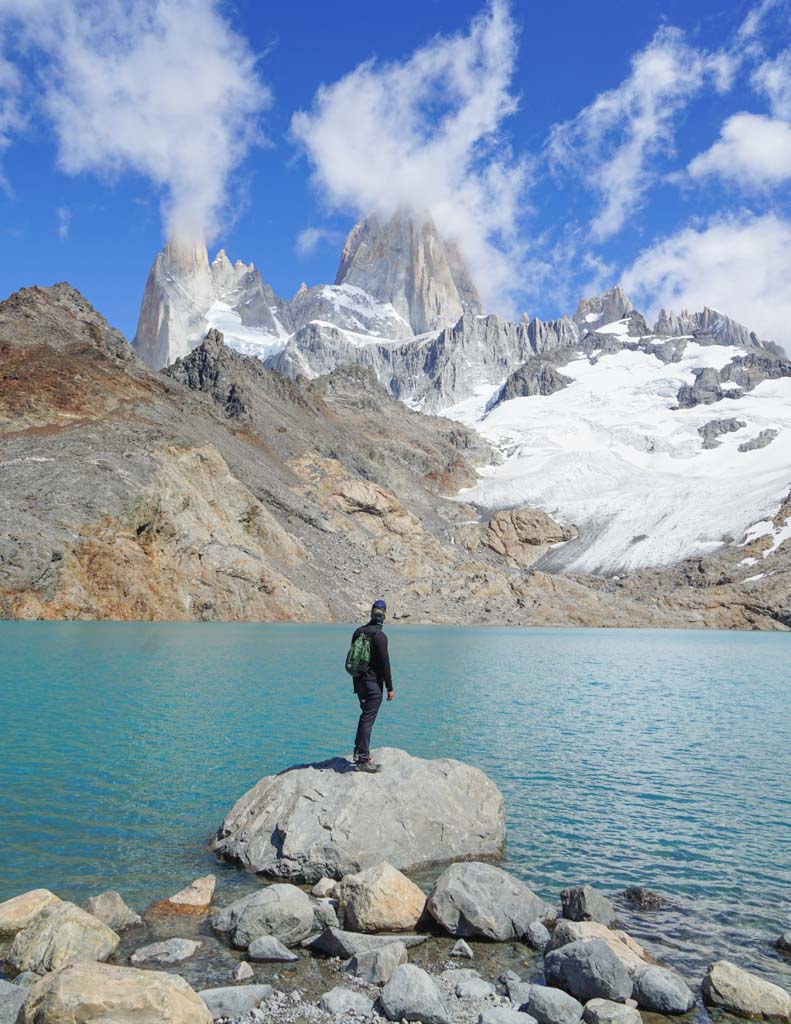

Hike Laguna Torre
Laguna Torre is a huge glacier lake filled with small icebergs. The Cerro Torre Mountain range forms the backdrop and looks like something from a postcard.
The Laguna Torre hike is equally impressive as Laguna de los Tres. The difference? It’s a lot easier! It takes around 6 hours to complete, but most is a flat trail.
Try to start your hike before sunrise to beat the crowds. Alternatively, depending on when you arrive in El Chalten on your first day, you could do this hike then.
Remember, the sun sets after 9 pm in the summer, so you’ll have plenty of time to complete this hike if you leave El Chalten by noon.
Hike Mirador Condores
Mirador de los Condores is one of the best short hikes in El Chalten. You only need 2 hours to complete it.
It’s easily accessible from the town center and starts with a glandular incline to the viewpoint. You’re treated to spectacular views of El Chalten, Fitz Roy, and Cerro Torre from here.
After reaching Mirador de los Condores , you can continue along a flat trail to a second viewpoint, Mirador de las Aguilas.
The views from Las Aguilas are very different from what you would have seen, and it’s a worthwhile addition to your hike.
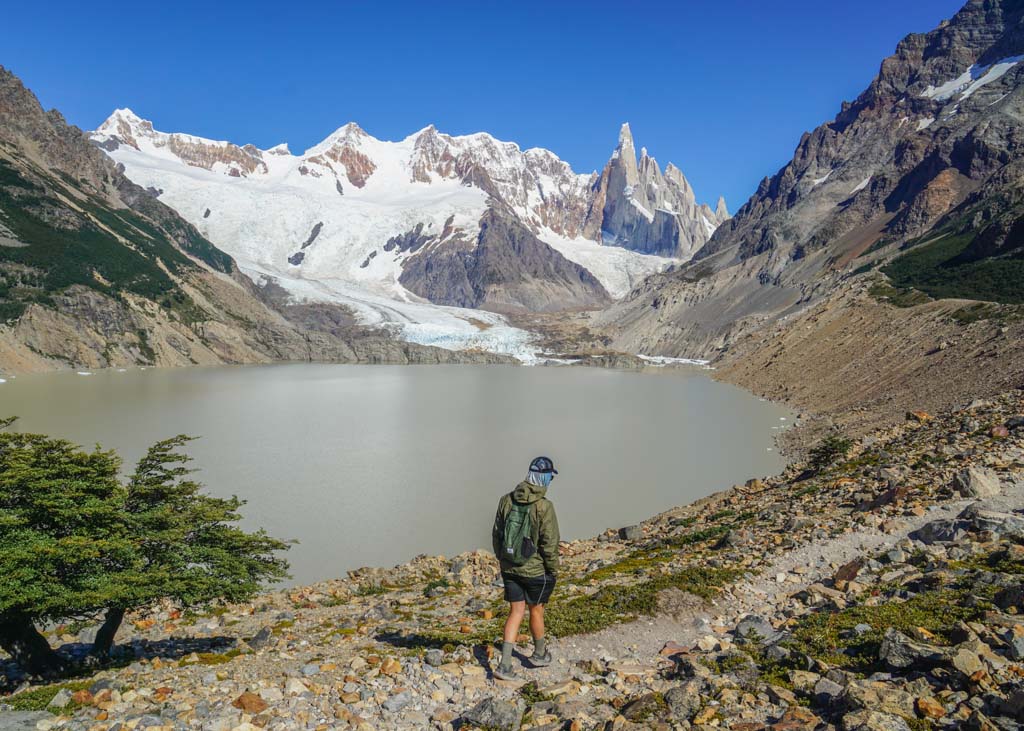
Other things to do in El Chalten
If you need a day off the trails, here are other things to do.
White river rafting: I went river rafting in El Chalten and loved it. The rapids aren’t too intense, but they offer a nice break from all the hiking. Find out more here.
Rent a car and make a day trip to Lago del Desierto: Lago del Desierto is a beautiful lake surrounded by forests with picturesque mountain views.
Visit Glacier Huemul: Glacier Huemul is a beautiful short hike to a glacier behind a turquoise lake. It’s an hour’s drive from town, so you’ll need to rent a car or catch a shuttle to get here.
If you want to explore more of Patagonia, including the Chile side, here’s my guide to the best Patagonia travel route to follow.
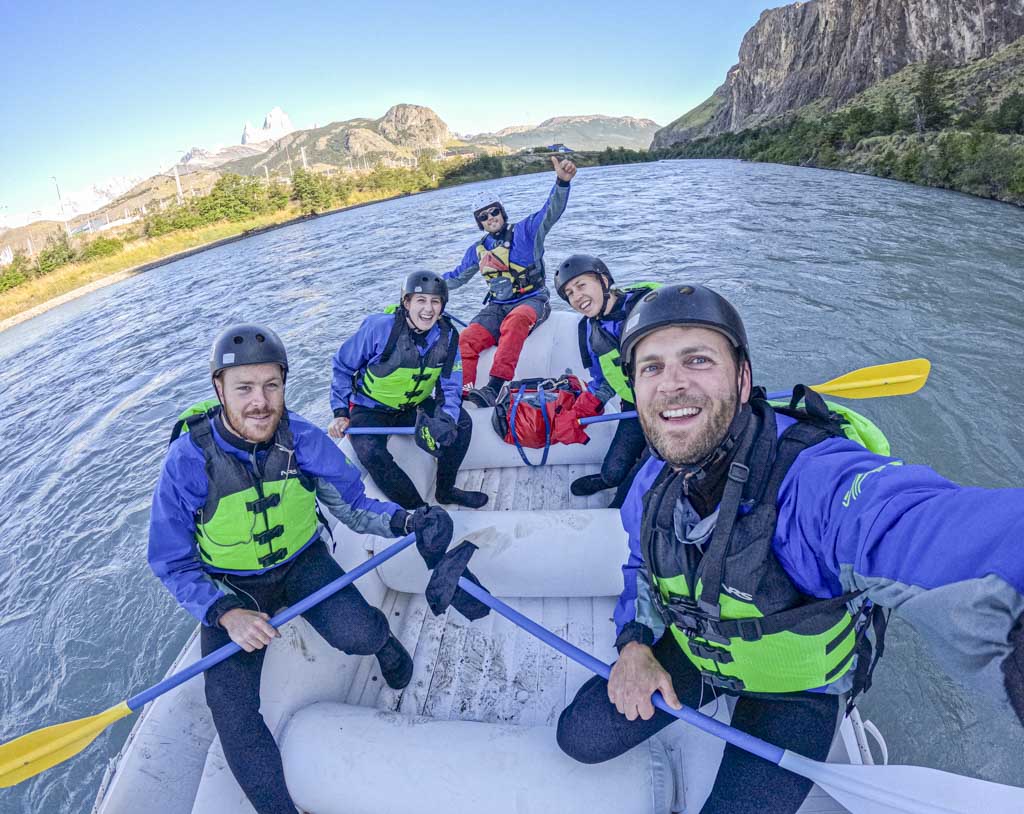
Where to stay in El Chalten
Apart Guillaumet is a basic accommodation option that ticks all the boxes, including an affordable price.
If you’re looking for something more luxurious, you can’t go wrong with Chalten Suites Hotel . There’s an onsite restaurant just a stone’s throw away from the trails.
Day 8 – 10: Mendoza
Did you know that Argentina is one of the leading wine producers in the world? Because I didn’t!
Nestled alongside the Andes Mountains, just a stone’s throw away from Chile, lies Mendoza.
This is where you’ll find the best food and wine in the country! You’ll need (and deserve) to treat yourself after a few busy days in Patagonia, so it’s the perfect addition to your Argentina travel route.
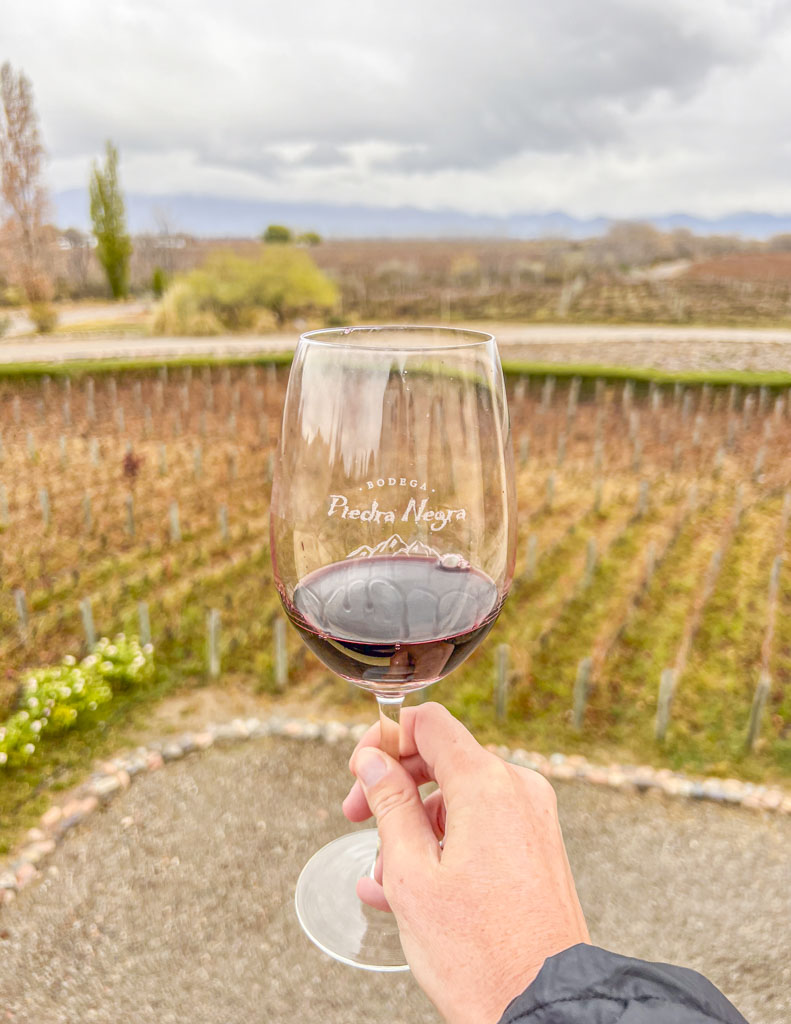
How to get to Mendoza
If you’re following my Argentina 2 week itinerary, take the earliest bus from El Chalten to El Calafate airport .
I struggled to find direct flights between El Calafate and Mendoza. Most have a quick layover in Buenos Aires, so this might be your only option.
Things to do in Mendoza
Mendoza is home to these three high-altitude wine regions : Maipu, Lujan de Cuyo, and Valle de Uco. I visited all of them and had the best time.
You’ll have a few nights here, so I suggest spending 2 days exploring the wineries. In high season, you’ll need to book your wine tours and make restaurant reservations at least a week in advance.
Go biking between the wineries
If you plan on visiting the wineries in Lujan de Cuyo or Maipu, renting a bike for the day and cycling between them is best. The wineries are near each other, and it’s a cheap and fun way to explore the region.
I also did this multi-bike wine tour in Maipu and highly recommend it! The highlight was peddling through the quiet streets, sipping delicious Malbecs while feasting on the most incredible cheese platter.
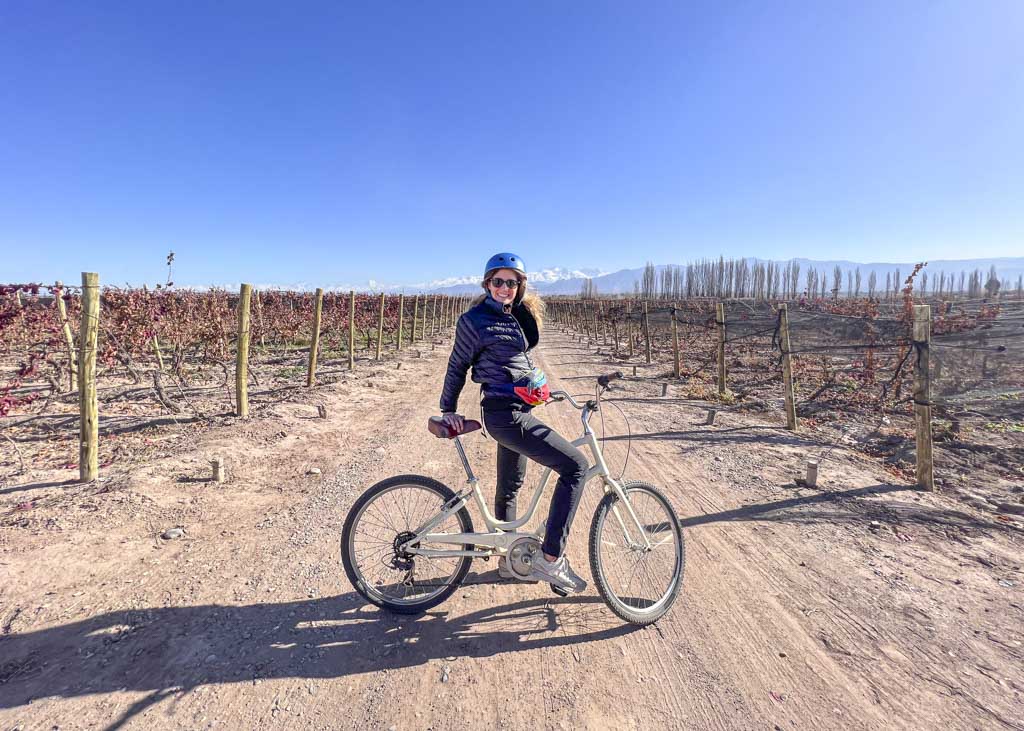
Go on a small wine tour
Plenty of organized tours depart from Mendoza City to all the wine regions.
The best part of booking a group or private tour like this is that all the admin is taken care of. You don’t need to make any bookings for tastings or lunches as it’s all done for you.
This is a fantastic tour that includes wine tastings at three wineries, a gourmet lunch, and return transport.
Most group tours have a maximum of 8 passengers, so you’re still guaranteed to have personal experience.
Bus Vitivinicola: The Best Large Group Tour
If you’re traveling on a budget or looking for the most social way to explore Mendoza, I highly recommend Bus Vitivinicola .
I can vouch for them as I did this tour; it was so much fun! It’s a large group tour that accommodates up to 50 people.
They have daily departures that rotate between all the Mendoza wine regions.
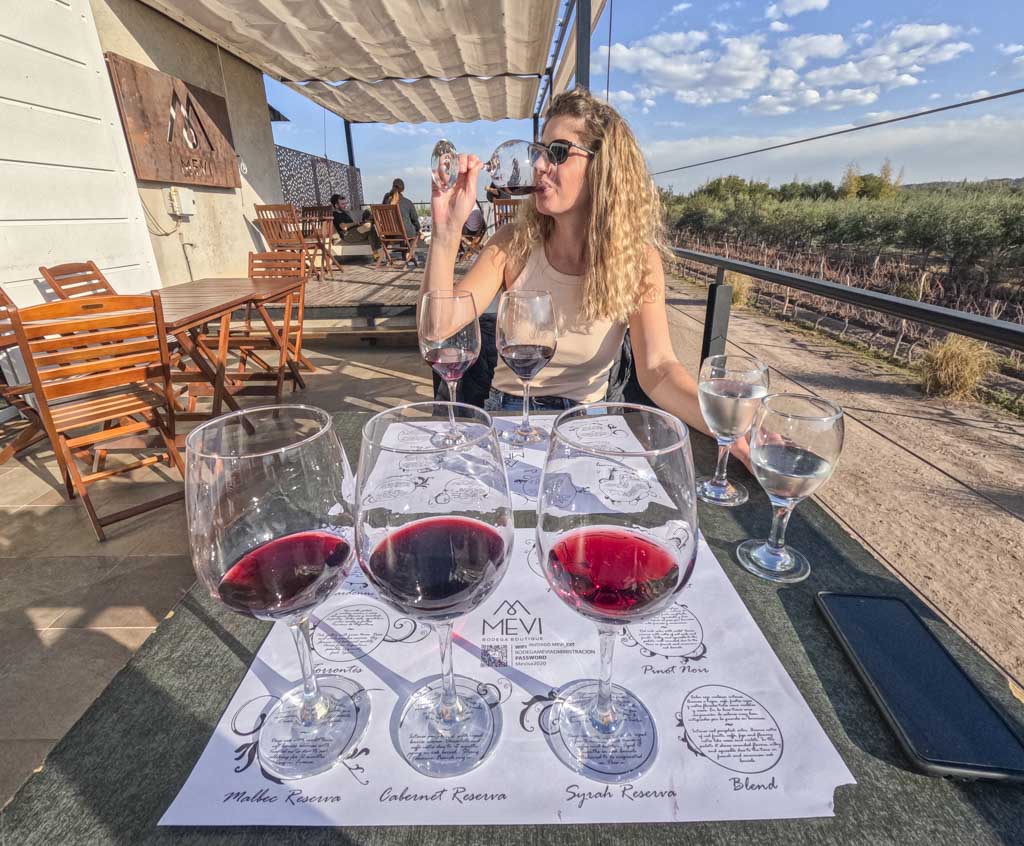
Where to stay in Mendoza
Chacras de Coria is my favorite suburb to stay in Mendoza. It’s a 20-minute drive south of the city but is close to the Lujan de Cuyo wine region . If you’re looking for a quiet getaway, I recommend staying here. Casa de Coria is a charming B&B with spacious and comfortable rooms. Check rates and availability here.
However, you can also stay in Mendoza city and take tours to the wineries. There’s also much more going on in the city, and accommodation options are plentiful, especially if you’re backpacking on a budget.
Here’s my detailed guide on the best places to stay in Mendoza.
Day 11 – 13: Iguazu
Iguazu Falls is one of the largest waterfall systems in the world. It’s classified as a Wonder of Nature and lies on the border between Argentina and Brazil.
As you’ll see, a few variables can affect how much time you should spend in Iguazu during your 2 weeks in Argentina itinerary. These include the arrival time of your flight and whether you have a visa (if necessary) to visit the Brazilian side.
If you’re short on time, then stick to the Argentina side. One full day here is enough, and it’s more impressive than the Brazilian side.
How to get to Iguazu National Park
Iguaza lies north of Argentina, and you’ll need to catch a flight to Iguazu Airport.
There isn’t a direct flight from Mendoza, so you’ll have a connection in Buenos Aires. Another full day of travel!
As you can see, during your 2 weeks in Argentina, you cover a lot of ground. All the long travel and airports can be exhausting, so if you’d prefer to skip one place on this itinerary, I suggest Iguazu Falls. This will give you an extra day in Patagonia and an extra day in Mendoza.
On the other hand, if you’re not into food and wine, then keep Iguazu Falls on your itinerary, but instead, skip Mendoza and spend an extra day or two in Patagonia.
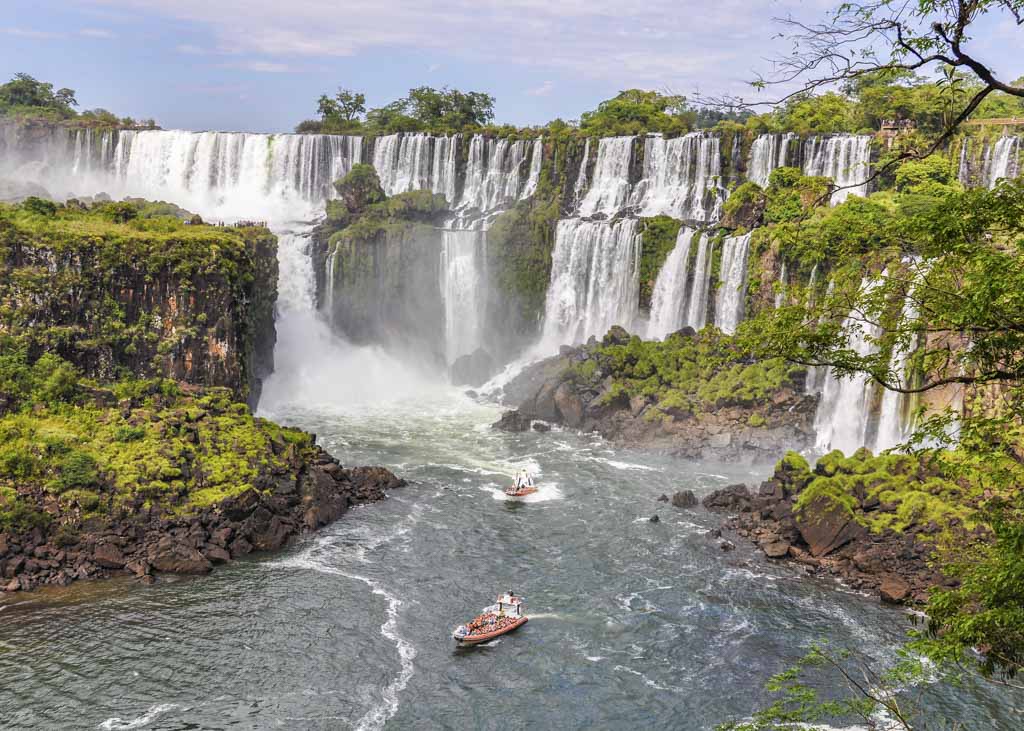
Visit Iguazu Falls: Argentina side
The Argentinian side makes up about 80% of Iguazu Falls.
There are a series of walkways that get close to the waterfall from the Argentinian side. You can also book a tour like this with a boat ride under the falls. It’s a wild ride, and you will get soaking wet – but it will be worth it. Check prices and availability here.
Top tip: If you change up your itinerary for Argentina and arrive in Puerto Iguazu in the morning (or afternoon), you will still have enough time to visit the Argentinian side of the falls on this first day. But if you’re coming from Mendoza, it’s best to see the falls on your second day.
The Brazilian side
The Brazillian side of Iguazu Falls offers the best viewpoints for photos. But you don’t get as close as you would on the Argentina side. Hence, many people choose to skip it if they’re short on time.
Visiting the Brazillian side through an organized tour like this is best as you’ll need to go through passport control. Some nationalities require a visa which has to be arranged before the start of your Argentina trip.
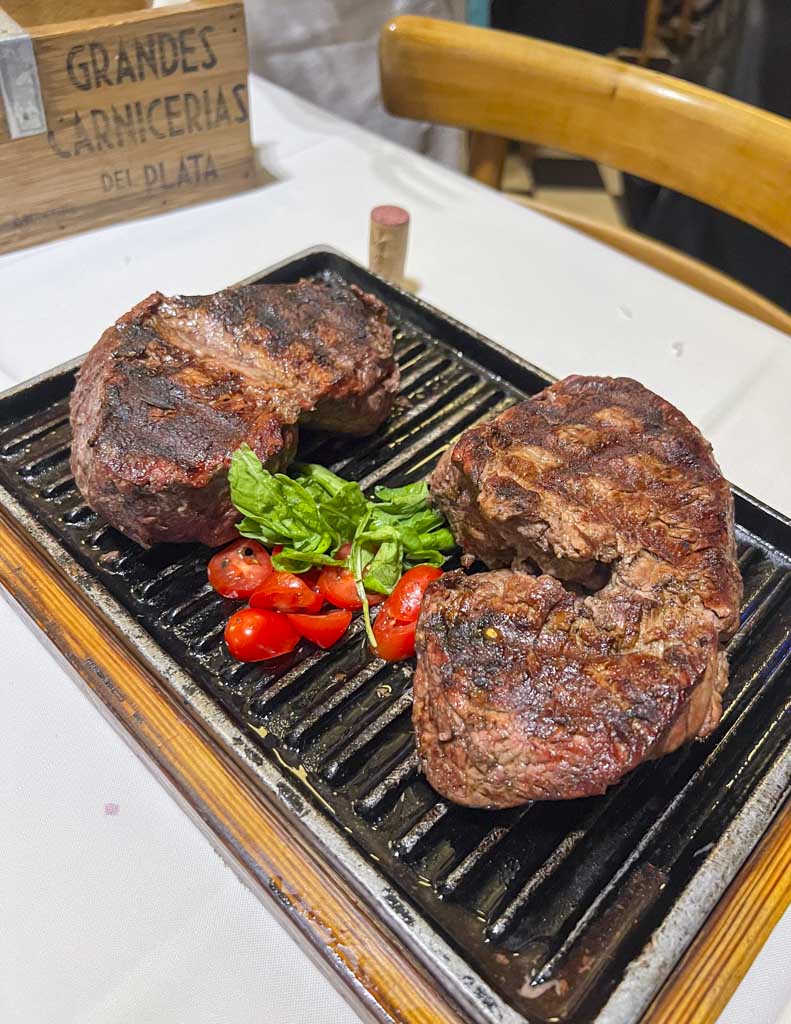
Where to stay in Iguazu Falls
Most accommodation is located in the center of Puerto Iguazu. From here, you can easily get to the Falls by public transport.
If you want to stay inside the National Park, Gran Meliá Iguazú is the perfect option. It’s exquisite! This 5-star property offers a luxurious stay and a stunning location that’s hard to beat.
For something a bit closer to town, you can’t go wrong with O2 Hotel . It’s close to bars, restaurants and public transport. The rooftop pool is an added bonus.
Day 14: Buenos Aires (Departure)
After 2 weeks in Argentina, it’s back to where we started: Buenos Aires
Other places to add to your Argentina itinerary
You might not enjoy hiking (or wine) as much as I do! If that’s the case, here are other places to visit in Argentina.
Bariloche (3 days)
Bariloche is located in Argentinian Patagobia. It’s north of El Chalten, and you’ll need to catch a flight to get here. I spent a few days in Bariloche and enjoyed how different it was from the other regions in Patagonia.
The town boasts stunning lakes and viewpoints and is home to the most delicious chocolates. It’s also the place to visit in winter as you can ski here.
If I had to choose, I prefer Mendoza and El Chalten over Bariloche, and that’s why it’s not on my Argentina 2-week itinerary.
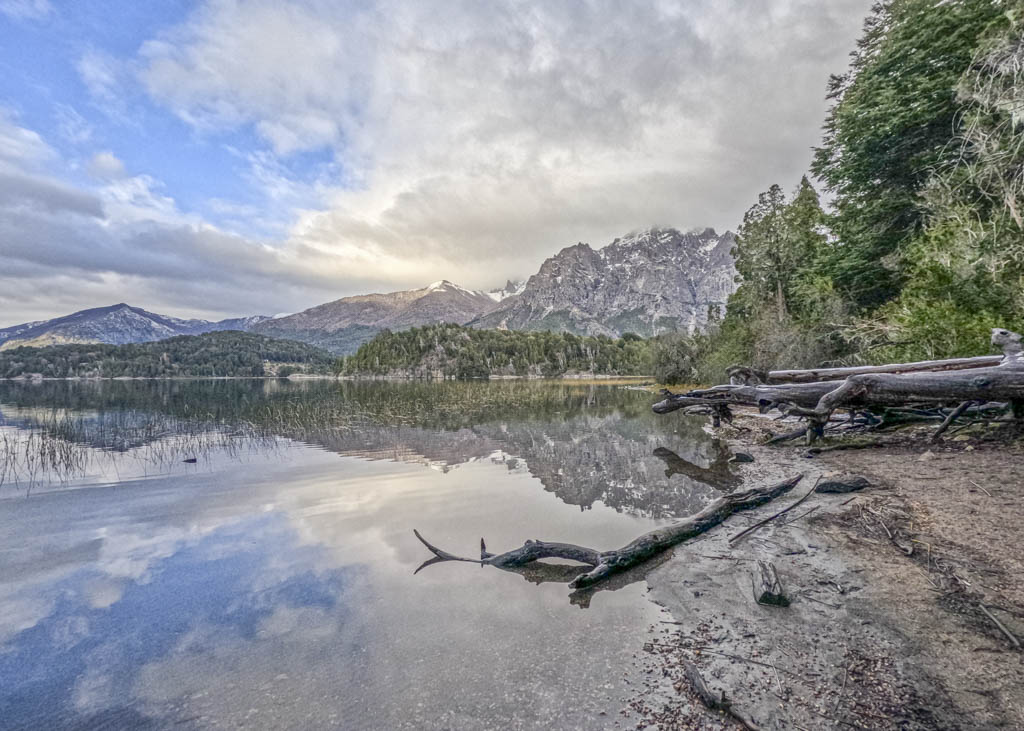
Ushuaia (3 days)
Ushuaia is the southernmost city in Argentina (and the world). It’s the gateway to Antarctica and is a busy port city for Antarctica cruises.
Tierra del Fuego National Park is one of the best places to visit, and the scenery is stunning.
You can fly to Ushaia from El Calafate. But you’d need to skip either El Chalten or Mendoza (which I wouldn’t).
Salta and Jujuy (4 days)
Salta and Jujuy are north of Argentina. You’ll find unique landscapes here that are unlike other destinations on this Argentina itinerary. It’s also hope to a wine region, yet not as impressive as Mendoza.
These provinces are suited for travelers looking for a more cultural experience and historical sites.
But if you only have 2 weeks in Argentina and Salta and Jujuy are on your bucket list, you’ll have to skip one of the other destinations. The attractions in the north are far apart, so you’ll need a car to get around. 3 nights, 4 days is the minimum time you want to spend here.
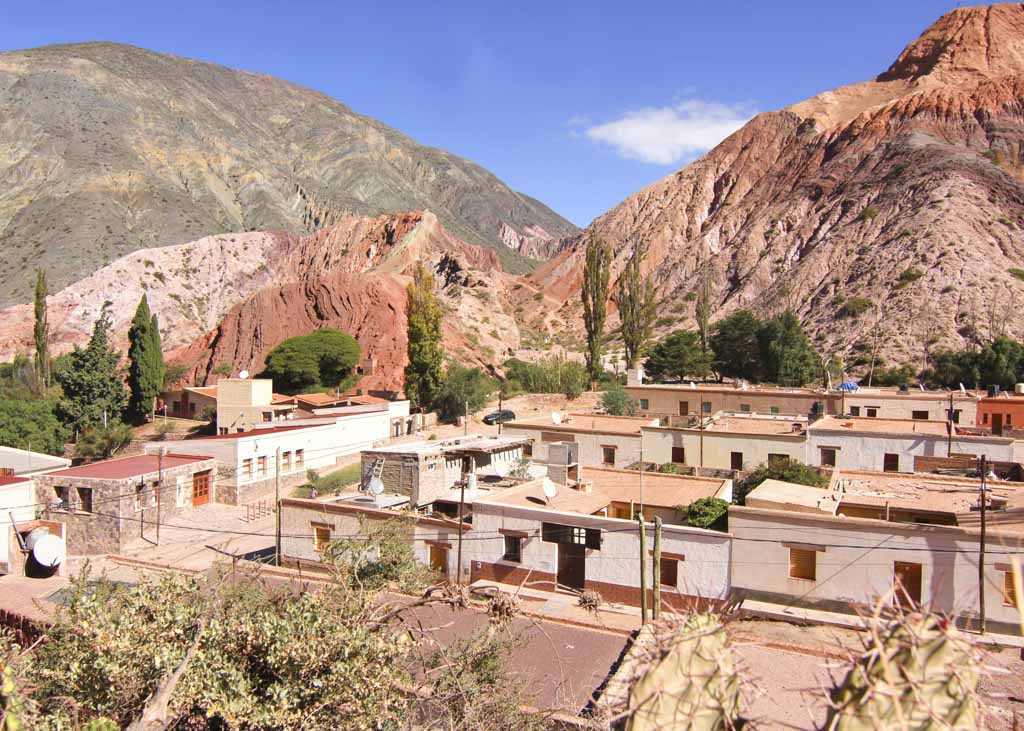
2 Week Argentina itinerary FAQs
How many days do you need to see argentina.
You need a minimum of 10 days in Argentina. But you still won’t get to everything! Distances are far, and there’s a lot of travel, so 2 or 3 weeks is recommended.
What is the best month to visit Argentina?
March is the best time to visit Argentina to avoid the tourist crowd and enjoy the fantastic weather. However, anytime between October and April is considered a good time as the days are long and sunny with great conditions for hiking.
What is the best way to get around Argentina?
It’s best to fly between destinations as distances are far. However, if you have time, you can take a bus. They’re very comfortable and safe to travel with.
Like it? Pin it!
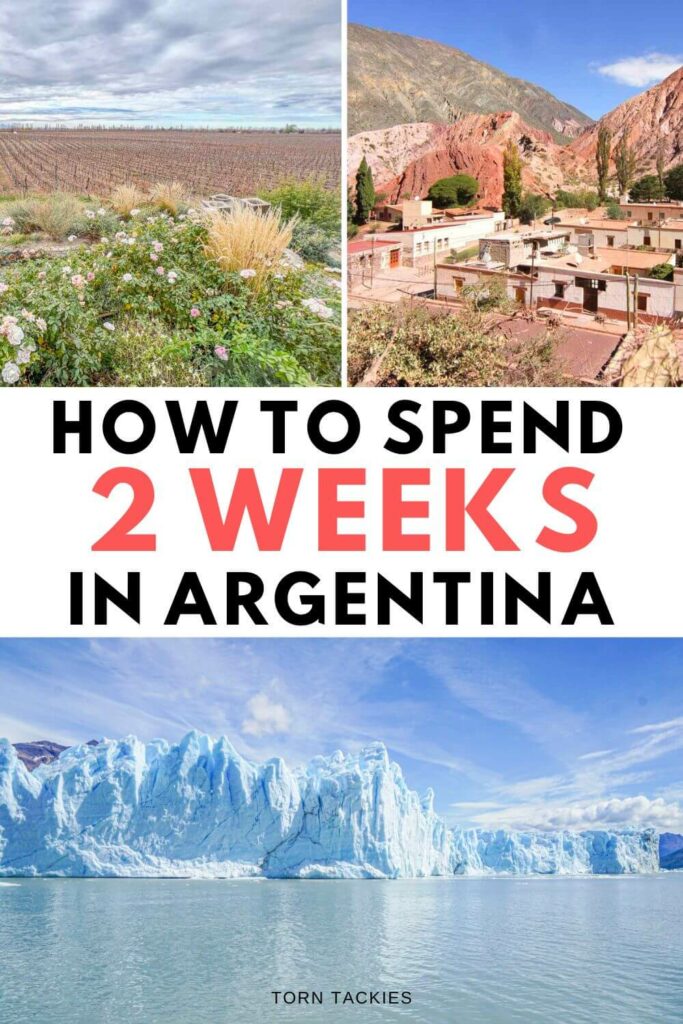
Do you have any questions about this itinerary for Argentina in 2 weeks? Drop me a question in the comments section below!
Looking for more Argentina travel inspiration? Check out my other posts!
- Where to Stay in San Carlos de Bariloche, Argentina Patagonia

Hi, I'm Carryn. I’m an adventure travel blogger trying to figure out my way through life by traveling and exploring. Join me as I share my travel guides and tips for life abroad. Find out more about me here .
The Best Patagonia Itinerary: 7 to 10 Days in Patagonia [Or More]
How to visit maipo valley, chile: the best wineries and tours, leave a comment cancel reply.

- Liechtenstein
- Netherlands
- Switzerland
- Solo Location Guides
- Solo Travel Advice
- Solo Inspiration
- Luxury travel
DESTINATIONS , AMERICA , ARGENTINA
A 2-week argentina itinerary for your first visit.
Putting together a 2-week Argentina itinerary is no mean feat.
Argentina is a BIG country, the 9th largest in the world and around twenty times the size of the UK. Unless you are able to spend months out there, you will need to accept that you will not be able to cover it all in one trip.
You will need to make some tough choices and this is where I can help.
Based on my first-hand experience, I can steer you towards the best places to visit during two weeks in Argentina. Discover the best time of year to visit, where to stay, how to get around the country and solo travel safety tips.
From the romance of the tango cafes of Buenos Aires to the glacial majesty of Patagonia, I’ve got you covered.

Some articles on this website contain affiliate links. This means that I may earn a small commission if you make a purchase through these links. As an Amazon Associate, I earn from qualifying purchases . Read the full disclosure here .
IN THIS ARTICLE
How I Spent 2 Weeks in Argentina
I visited Argentina for two weeks in March. This gave me enough time to marvel at the Perito Moreno Glacier in Patagonia, go hiking in the Lake District , get soaked at the Iguazú Falls , absorb the culture of Buenos Aires and take a side trip to Colonia in Uruguay .

You could complete this itinerary in fewer than 14 days. However, it’s prudent to build in some wiggle room in case of unforeseen incidents and to allow time without a particular agenda.
Too often when travelling, I have fallen into the trap of pinging from one ‘must-see’ site to another. Whilst there will always be places to see and things to do, there’s also a lot to be said for just ‘being’.
14-Day Argentina Itinerary
Day 1 – 2: buenos aires.
I’m going to level with you. However long you spend in Buenos Aires, it won’t be enough.
This most European of South American cities will seduce you with its colonial architecture, its rich history and the romance of tango.
What to do in Buenos Aires
Most international flights land in Buenos Aires late morning or early lunchtime. To get your bearings – and to keep jet lag at bay – why not take a stroll around the city’s Botanical, Japanese and Rose Gardens on the afternoon of your arrival?
But begin your two weeks in Argentina proper by exploring the Plaza de Mayo , the beating heart of Buenos Aires. Surrounded on three sides by iconic buildings – the Catedral Metropolitana , the Cabildo and the Casa Rosada – this is the perfect place to start getting to know the city and its history.
The Casa Rosada is the star turn here. It was from the balcony of this pink government house building that Eva Perón (aka Evita) gave her final speech in 1951.

Take a stroll to Av. 9 de Julio, the widest avenue in the world (although Brazil contends that the record belongs to the Eixo Monumental in Brasilia). In the centre of Av. 9 de Julio is the Obelisk, rising above the oval Plaza de la República like a giant exclamation mark.
This Buenos Aires icon was erected in 1936 to commemorate the fourth centenary of the first foundation of Buenos Aires.

Where to stay in Buenos Aires
I recommend staying in Palermo Soho or Palermo Hollywood . These sub-barrios have more than enough bars and restaurants to satisfy your culinary and drinking needs and felt safe to walk around at night as a female solo traveller.
Duque Boutique Hotel
I stayed at this charming boutique hotel in Palermo Soho. It has a tiny spa, a delightful small garden and terrace and exceptionally friendly staff. There are many great bars and restaurants within walking distance of the hotel.
Duque Boutique Hotel is on Guatemala 4364.
>>> CLICK HERE TO CHECK RATES & BOOK
Here are some other hotels that I have found that may suit different budgets:
Hotel Chemin
This boutique hotel in downtown Buenos Aires has garnered great reviews. Single rooms are available for solo travellers and breakfast is included in the room rate.
The Glu Boutique Hotel
This is where I would have stayed if my budget had stretched a little further. Discerning friends stayed here and highly rated this all-suite Palermo Soho hotel , located three blocks from Plaza Serrano. All suites have either a private balcony or a terrace.
Day 3 – 4: El Calafate / Perito Moreno Glacier
Stretching back as far as the eye can see above the turquoise water of Argentinian Patagonia’s Los Glaciares National Park, the Perito Moreno Glacier is an extraordinary sight. Measuring over 30km in length, 5km across and towering 70 meters above the surface of Lago Argentino, the glacier covers an area of 250 square kilometres.
Although this was easily my most expensive day in Argentina, it is one that I will never forget.
Getting to Perito Moreno Glacier from El Calafate
The small town of El Calafate is the springboard for visiting Perito Moreno Glacier
Reaching the glacier from El Calafate is simple. Multiple tour operators, which line the town’s main street, offer day trips. Alternatively, you can take a taxi, rent a car or take the bus from the bus station. The drive takes about 90 minutes.
I visited Perito Moreno on a day tour . The cost of this excursion was only marginally more than the return bus fare, and I did not have the inconvenience of hiking to the bus station which is now on the outskirts of town. Although we had a guide on the return bus journey, who gave us a useful introduction to the park, once we were inside we were left to our own devices, which suited me just fine.
>>> CLICK HERE TO BOOK YOUR DAY TOUR TO PERITO MORENO GLACIER
What to expect from a visit to the Perito Moreno Glacier
The Perito Moreno Glacier is one of nature’s very best sight and sound shows. Multiple viewing platforms, connected by colour-coded walkways, provide different vantage points, each one seemingly better than the last.

Although it is difficult to tear your eyes away from its beauty, it’s its activity that makes it so spell-binding. As the glacier advances, immense ice chunks break off, plummeting into the lake, a process called calving.
First, there is a low rumble, like thunder. Visitors wait in eager anticipation, cameras at the ready. Then as the ice mass fractures and crashes into the water, there is a collective gasp of awe.
A one-hour boat trip takes you around the base. This is well worth the ticket price, stopping a mere 100 meters from the ice wall. You can almost feel the glacier’s icy breath!
This gives you yet another perspective of the glacier, its jagged peaks reaching skywards like giant icy fingers striated with irregular blue veins.

How much does it cost to visit the Perito Moreno Glacier in 2023?
However you get to Perito Moreno Glacier, you will need to pay the entrance fee on arrival (it won’t be included in any tour that you book). This costs around 25 USD for non-Argentine residents (November 2023 price). However, as inflation is rampant in Argentina, this is likely to be more when you visit. I recommend making a decision about the boat trip on the day. Reportedly, this is only cancelled if the weather is really, really bad.
Where to stay in El Calafate
As El Calafate is the main jumping-off point for visits to Los Glaciares National Park, it is awash with accommodation choices. Cheaper accommodation tends to be within a few blocks of the town’s main street. More luxurious options are located further out with views to match the prices.
Calafate Parque Hotel
I stayed at this comfortable hotel , reminiscent of a ski lodge, which was in an excellent location.
Here are some other hotels that I have found in El Calafate that may suit other budgets:
Trastienda B&B
This centrally-located budget choice offers dorm beds and private rooms with a shared bathroom
Esplendor Hotel
This is where I would have stayed if my budget had stretched a little further.
This four-star boutique hotel is located four blocks uphill from the town’s main road. It has unparalleled views across El Calafate to the mountains.
Day 5 – 7: Bariloche
Bariloche is the gateway to northern Patagonia’s glacial lakes, pine forests and volcanic mountains. A great way to explore this area is by doing some or all of the Circuito Chico.
The Circuito Chico is a spectacular 60km road journey that includes fragrant forests, magnificent mountains and languid lakes and is a must-do if you are in Bariloche. Although having a car makes life a little easier, it is possible to tackle the Circuito Chico by bus #20 from Bariloche.
Highlights of the Circuito Chico
The first stop on the Circuito Chico from Bariloche is the Cerro Campanario. With a cool breeze brushing your face, the chairlift will whisk you through the forest to the mountain’s summit.
At an elevation of just over 1,000 metres, Lake Gutiérrez & Lake Perito Moreno , encircled by pine forests, are clearly visible, as are Cerro Catedral and Llao Llao in the distance.

The next stop is the famed resort of Llao Llao , located between Perito Moreno and Nahuel Huapi lakes. Built in 1940, it resembles an oversized ski lodge.

Walking between 300-year-old arryan trees, your next stop is Playa Moreno on the shores of Lake Perito Moreno.

Leaving Lake Perito Moreno, it’s now time to catch the bus back to Bariloche. Before hitting its many chocolate shops, stop in the main square to admire the statue of General Roca astride his horse.
This celebrates his victory in the 1870s, the Conquest of the Desert, which resulted in the death of more than a thousand indigenous peoples and the displacement of a further 15,000 from their traditional lands.
Little wonder his horse is looking embarrassed.

Where to stay in Bariloche
As the gateway to the Patagonian Lake District, Bariloche does not suffer from a shortage of places to stay. However, as its accommodation options can be a considerable distance from the town centre, check the address carefully before booking.
Hotel Antu Kuyen
I stayed at this exceptionally friendly mid-range guesthouse that has a lakeside location. Book well in advance.
Here are some other hotels that I have found in Bariloche that may suit other budgets:
Patagonia Jazz Hostel
In a superb location close to Bariloche town centre, this friendly hostel offers dorm beds and private rooms with breakfast.
Cacique Inacayal Lake Hotel & Spa
Splash the cash at this 4-star hotel in a prime position on the lakeside but within a kilometre of Bariloche town centre. It has a spa & fitness centre and a private beach.
Day 8 – 11: Iguazú Falls
The thundering Iguazú Falls was one of the most extraordinary sights that I encountered during my 14 days in Argentina. Straddling the border between Argentina and Brazil, these world-famous waterfalls defy superlatives.
What to expect at the Iguazú Falls
You can see the Iguazú Falls from Brazil or Argentina. Try to allow at least two full days here, one for each side of the falls
ARGENTINIAN SIDE (Cataratas Del Iguazu)

Your admission ticket gives you access to five different trails , ranging from 600m to 7km in length.
For an overall panoramic view, follow the green trail from the Visitors Centre, and then take the shortest trail, the upper trail ( Circuito Superior ). The lower trail, Circuito Inferior , is a 1.6km yomp through the forest leading to some of the park’s most spectacular waterfalls, including Salto Ramirez and Bossetti.
Make sure that you build in time to take the train to the Devil’s Throat (Garganta Del Diablo) station. From there, walk on wooden platforms suspended over the churning waters to reach the Devil’s Throat.
Dozens of powerful waterfalls converge in a horseshoe shape, and it is tricky to distinguish mist from water. Multicolour butterflies flutter around your face, vivid against the dazzling opacity of the falls.
BRAZILIAN SIDE (Cataratas Do Iguaçu)
It’s well worth crossing the border for an unforgettable panoramic view.
The Trilha das Cataratas is a 1km trail with sweeping views of the falls leading you right into the Devil’s Throat. Toucans soaring high above your head.

For an extra cost, other activities are available (e.g. kayaking, boat ride, jeep tour through the park).

How to get to the Iguazu Falls
I used the hotel’s transfer service to get to the Argentinian side of the Iguazú Falls.
I also took a taxi to the Brazilian side of the Iguazú Falls. With two sets of immigration to navigate there and back and a very helpful driver to guide me, this was money well spent.
If you are travelling on a budget, there is also a bus from Puerto Iguazú.
Where to stay to visit the Iguazú Falls
You can base yourself in either Foz Iguazu in Brazil or Puerto Iguazú in Argentina to visit either side of the falls.
Compared with other tourist hubs in Argentina, Puerto Iguazú leaves much to be desired. Therefore, do yourself a favour; splash the cash and stay in one of the resort-type hotels in the jungle on the way out to the falls.
La Reserva Virgin Lodge
I stayed at this 4-star property , in a wonderful location in the heart of the Selva Iryapú Jungle. Iguazú Falls were a ten-minute drive.
Here are some other hotels that I have found near Iguazú Falls that may suit other budgets. However, the less expensive properties tend to be closer to Puerto Iguazu.
Marin Apartments
Highly-rated, air-conditioned apartments that are close to the bus station in Puerto Iguazu. From the photos online, these apartments look superb.
La Mulata apartment
A budget accommodation choice in Puerto Iguazu that has glowing reviews.
Day 12: Colonia, Uruguay
Day 12 of your 2-week Argentina itinerary and an opportunity to visit your third country in two weeks: Uruguay.
Colonia, or Colonia del Sacramento (to give it its full name), is a short hop across the Rio de la Plata from Buenos Aires. With its cobbled streets, colonial buildings and a smattering of vintage cars, it is a perfect day trip.
Things to do in Colonia
Colonia is an achingly picturesque and laid-back place to wander around. I found three or four hours in the town were just about right to hit its highlights.
1. Capture that Kodak moment in the Calle de los Suspiros (Street of Sighs)

2. Watch life go by in the main square (Plaza Mayor 25 de Mayo)

3. Climb the 118 steps to the top of the old lighthouse (Faro) for panoramic views over the town

4. Visit the Iglesia Matriz (Church of the Most Holy Sacrament)
This is the oldest church in Uruguay, built between 1695 and 1699.

5. Hunt for vintage cars

How to visit Colonia as a day trip from Buenos Aires
Although a number of tour companies offer day trips to Colonia, it is very easy to get there under your own steam.
Two ferry companies ply the waters between Buenos Aires and Colonia. I used BuqueBus but services run by Colonia Express also make the crossing. The crossing from Puerto Madero takes 75 minutes
I took a taxi to Puerto Madero from my hotel in Palermo Soho. For the return journey, I took the metro. The nearest station is Alem on the B line, around a 10 – 15 minute walk from the ferry terminal.
Day 13 – 14: Buenos Aires
Your two-week Argentina itinerary ends where it started, in Buenos Aires.
More things to do in Buenos Aires
The historic barrio of La Boca is a must-see in Buenos Aires. Its star turn is El Caminito, with its brightly coloured buildings that grace many a postcard, its live tango and art galleries.

As it is easy to veer off the tourist track into some less savoury areas, I recommend exploring La Boca on a guided walking tour.
La Recoleta Cemetery is home to over 6,400 statues, sarcophagi, coffins and crypts, spread over four city blocks. It is an eerily beautiful place.

Although Eva Perón is La Recoleta Cemetery’s most famous resident, the list of its other occupants reads like a Who’s Who of Argentinian history. From presidents to poets, athletes to academics, exploring its mausoleums and memorials gives you a fascinating insight into the country’s past.
Mention Buenos Aires to many people and it is San Telmo that comes to mind. Picture cobbled streets, a lively Sunday market and tango dancers in its main square and you’ve got the measure of the place.

Don’t miss the opportunity to visit the underground labyrinth of El Zanjón , a 19th-century mansion, which is a time machine into San Telmo’s past.
On your final afternoon in Argentina, walk around Palermo Soho which is the epicentre of Buenos Aires’ street art scene. Although you can easily mooch around by yourself, guided street art walking tours are also available.

Plan Your Argentina 2-Week Itinerary
What is the best month to visit argentina.
Although Argentina is a year-round destination, weather patterns vary according to where you are in the country. Therefore, the time of year you visit Argentina will depend on where you want to go and what you would like to do.
Buenos Aires is ideal in autumn (March-May) and spring (Sept-Nov) when temperatures are not so oppressive. If you visit in springtime, the jacaranda trees should be in full bloom, which is a wonderful sight.
Patagonia and the southern Andes are best visited in summer (Dec-March) when days are longer and warmer.
Iguazú Falls is a year-round destination but can be steaming in high summer (Dec – Feb).
Winter (June-Aug) is the best time to visit the Northwest .
Getting to Argentina
Most travellers arrive in Argentina by air. There are direct flights to Buenos Aires from Europe, North America, Australia, South Africa and many South American countries.
Buenos Aires has two airports: Ezezia (EZE) , serving mostly international flights, and Aeroparque (AEP) , which is the domestic hub as well as handling some flights to other South American countries.
Getting around Argentina
For long-distance travel within Argentina, you are looking at buses or planes. When planning your flight routing, be aware that Buenos Aires is the hub for domestic flights. There are no direct connections between many major cities. Buses in Argentina have a reputation for being good and cheap but it can take a very long time to get from A to B. Platform 10 is a popular resource to research routes and timetables. Thanks to government investment, trains in Argentina are now an option. Take a look at passenger routes and timetables here . Considering the size of the country, to maximise your two weeks in Argentina, flying is going to be your best bet. I took domestic flights between the main hubs, using the services of LATAM and Aerolineas Argentinas .
Small group tours of Argentina
Argentina is a relatively easy country to explore independently. However, it is a big country and if you want to fit in a lot in a short space of time, or are nervous about going it alone, why not consider joining a group tour?
As well as being a relatively hassle-free way of travelling, and ideal for the first-time solo traveller , there are many other benefits of a group tour . You’ll have an expertly curated itinerary and you often gain valuable insights into the country, the people and the culture.
Generally, there’s safety in numbers. Finally, if you fear solo travel loneliness , there’s the reassurance of ready-made travel companions.
There are lots of group travel companies out there but two companies that I have used and can recommend are Exodus Travels and Explore! Another company that has been highly recommended is G Adventures .
Here are a few Argentina group tours that are worth taking a peek at:
Adventures in Patagonia (Explore!)
This 2-week tour takes in the epic landscapes of Patagonia, including Perito Moreno Glacier, and is bookended by Buenos Aires.
Wine and Landscapes of Argentina’s Northwest (Explore!)
If arid desert landscapes and cheeky glasses of Malbec are more your thing, take a look at this Argentina itinerary that starts in Mendoza and finishes in the capital. Lots of wine tasting is involved.
Discover Patagonia (G Adventures)
This comprehensive 14-day Argentina itinerary takes in Buenos Aires, Bariloche and Patagonia and includes a tango lesson and a visit to a penguin rookery.
Money in Argentina
The economy in Argentina is complicated and its currency, the peso (ARS), fluctuates wildly, affecting prices. As the cost of goods and services can often change, this can make estimating the cost of any Argentina itinerary challenging, to say the least.
I strongly recommend bringing a decent amount of hard cash, specifically US dollars or Euros. Make sure that these notes are in good condition as you may find that some banks and currency exchanges will not accept those that have marks or creases.
Although you can withdraw pesos from ATMs, there are restrictions on the amount that you can withdraw and the transaction is likely to be subject to a hefty fee. Credit cards are accepted in more upscale restaurants and hotels but don’t rely on them as your sole source of payment.
What to Eat in Argentina
A visit to Argentina is the perfect opportunity to tantalise your taste buds. During your visit, don’t miss these traditional favourites.
- Steak – Argentina is steak lovers’ heaven. I guarantee that even though you will eat some of the best cuts of your life, after 2 weeks in Argentina you will not be able to look another steak in the eye for some time.
- Empanadas – hot, cheap and portable, an empanada is the go-to lunchtime snack. Half-moon-shaped deep-fried pastry parcels, stuffed with a sweet or savoury filling.
- Choripán – the ultimate Argentinean street food, choripán is a grilled chorizo-style sausage served between slices of crusty bread.
- Provoleta – Argentina’s variant of provolone, discs of bubbling, almost-molten pungent cheese, topped with chilli flakes and herbs, served in a cast-iron skillet.
- Dulce de leche – condensed milk is slowly reduced to a sweet and sticky caramel sauce.
- Alfajores – think of these as biscuit (cookie) sandwiches. Alfajores are shortbread-type biscuits glued together with jams, mousses or dulce de leche.
- Asado – Argentina’s asado , also known as parrillada , is legendary. Beef, pork, ribs, sausages, or even a whole lamb or pig, are roasted over an open flame.
Is Argentina Safe for Female Solo Travellers?
As a solo female traveller, I found Argentina a safe country to travel around.
Like any major city, petty theft can be an issue in Buenos Aires, but take the same precautions as you would in your home city.
Don’t make yourself a target. Walk confidently and with purpose, be careful with your belongings, especially smartphones and laptops, and leave your diamond necklace at home. Watch your bag and your belongings and be street smart.
Trust your instincts. Take a taxi when this is a safer option. Seek local knowledge on the safety of areas.
For further tips, check out this advice for keeping safe when travelling alone .
Thank you for reading my Argentina 14-day itimerary
Argentina was a country that exceeded my expectations. Wherever you end up, and for however long, I am sure that you will have a fabulous time. With its enormous diversity of landscapes, fantastic food and wine and warm & generous people, it will be difficult not to.
If you have found this artcle helpful, take a look at my in-depth guide to visiting Buenos Aires .
Happy travels!

About Bridget
Bridget Coleman has been a passionate traveller for more than 30 years. She has visited 70+ countries, most as a solo traveller.
Articles on this site reflect her first-hand experiences.
To get in touch, email her at [email protected] or follow her on social media.

Touropia Travel Experts
Discover the World
12 Best Places to Visit in Argentina

Bright, daring and brilliant, Argentina entices with its energetic cities, passionate culture, and vast selection of natural wonders. The home of the tango, there is more to Argentina than first meets the eye. Along the paved European style streets of bustling Buenos Aires, a captivating cosmopolitan creativity oozes from the numerous cafes and street side hangouts. There’s the city of Cordoba with its selection of Spanish architecture, and Mendoza located deep in Argentina’s wine region.
On a visit to Argentina, wildlife and natural attractions are never too far away. The subtropical north of Argentina is where the impressive Iguazú Falls are located, with the surrounding area ideal for hiking.
Map of Places to Visit in Argentina
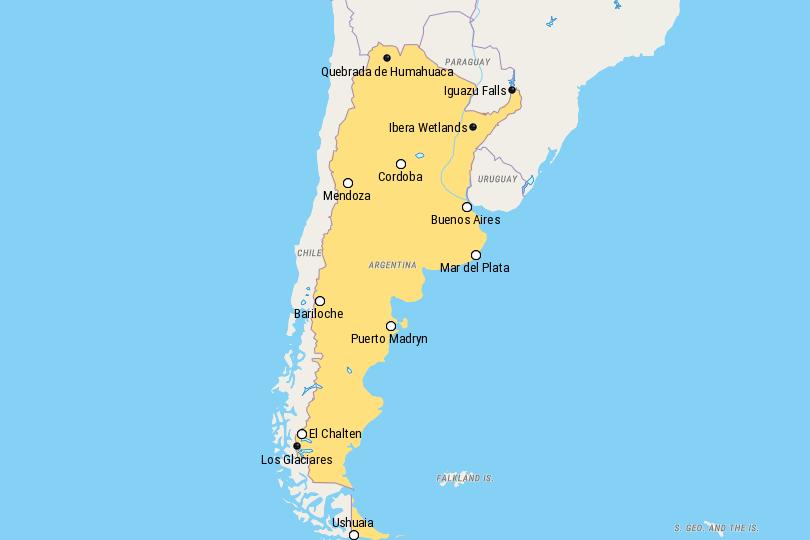
Taking a trip the Los Glaciares National Park in the Patagonia region means the chance to see penguins and graceful glaciers. Visiting the Golfo Nuevo brings the amazing opportunity to glimpse Southern Right Whales. Plan your trip to this delightfully diverse travel destination with our list of the best places to visit in Argentina.
12. Mar del Plata
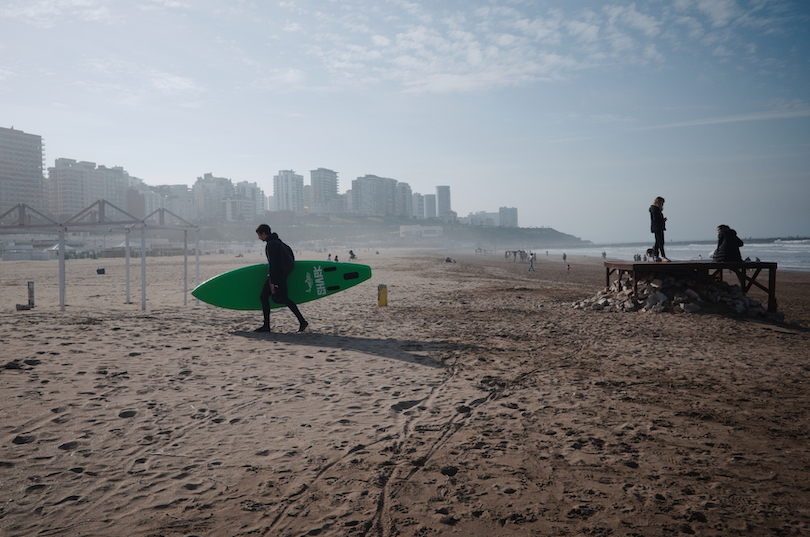
Once a retreat for Argentina’s aristocracy, Mar del Plata today is the country’s top beach resort city. Located on the Atlantic Coast in the Buenos Aires Province, Mar del Plata attracts millions of tourists every year to its sandy beaches and lively culture. During the summer weekends it can get very crowded here but outside the summer months, the city takes on a much more relaxed feel.
Mar del Plata is a beautiful city of both historic and modern architecture from charming Spanish chalets and Victorian homes to high rise hotels and casinos. In addition to a wide range of restaurants, the city also offers an aquarium, zoo, five golf courses and a major sports stadium.
By far, the main attractions in Mar del Plata are its sandy beaches. The most popular beaches are the ones conveniently located near the city center such as Bristol, La Perla and Popular. Other favored choices are Playa Grande and Playa Mogotes.
Although crowded during the summer months between December and March, these beaches offer restaurants, shops, bars and numerous water sports and activities. The Southern Beaches are where young people often hang out with live music and parties.
11. Quebrada de Humahuaca
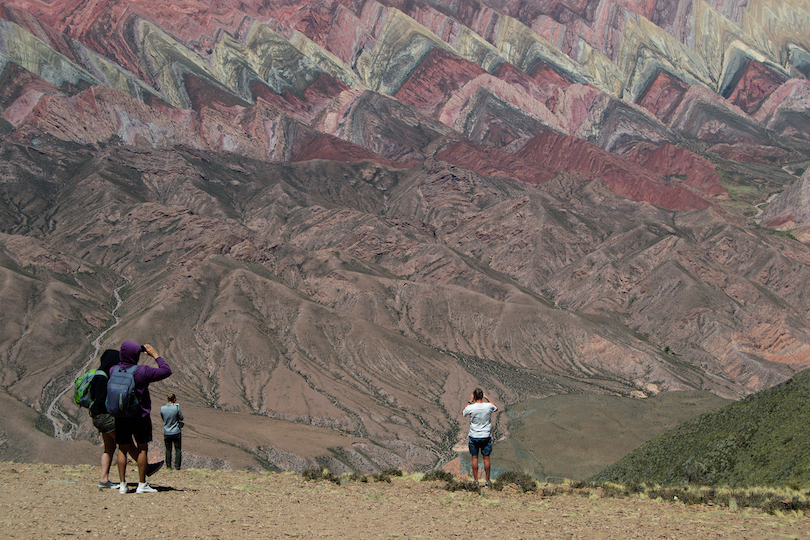
Dating back thousands of years, the Quebrada de Humahuaca is an arid and underrated mountain valley in the Jujuy province of north-western Argentina. During its heyday, it was known for its convenient caravan road that was part of an important ancient trading route during the Inca Empire.
The valley is defined by cacti, lamas, rugged mountains and colorful sandstone escarpments. Authentic little towns are dotted around, such as Humahuaca (the main town the valley is named after) that’s home to just over 10,000 residents, and smaller, lesser-known mountain villages like Iruya and Purmamarca, with its lovely market.
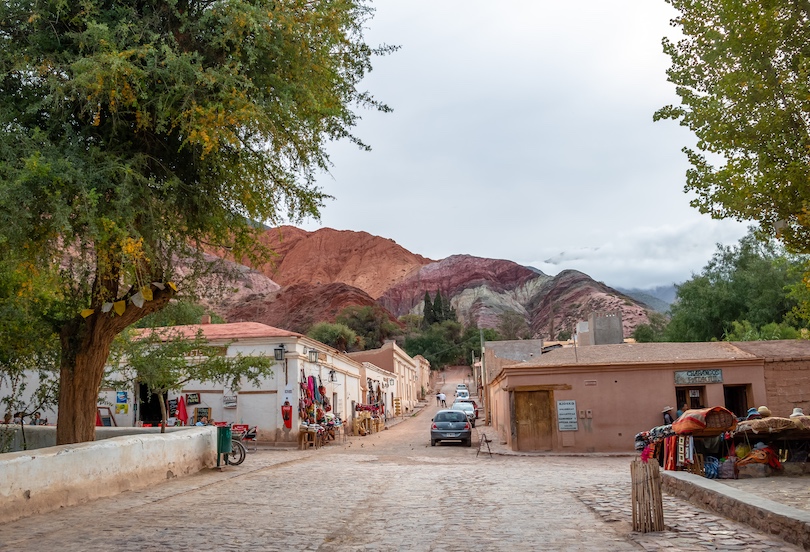
Surrounded by the Sub-Andean hills to the east, the Altiplano to the west, and the Valles Templados in the south, the mountain scenery of the Quebrada (which means ‘broken’) is truly exceptional, particularly the Sierra de Siete Colores with its unforgettable rainbow-colored hills.
For those interested in history, the Quebrada de Humahuaca valley was the site of many bloody battles during the Argentine War of Independence. The historical fortress in Tilcara is also worth a visit. This ancient Incan site has been restored to its former glory.
10. Ibera Wetlands
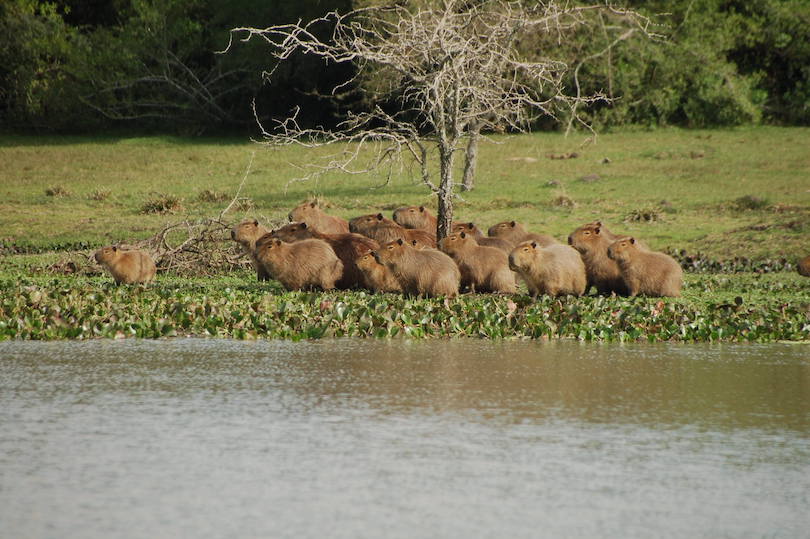
The Ibera Wetlands is a protected natural reserve boasting marshy swamps, moss-covered bogs, and shallow lagoons. It also happens to be one of the largest wetlands on the planet, only surpassed in size by the Pantanal in Brazil.
The wetlands are located in the northeastern province of Corrientes, roughly 400-miles from the capital city of Buenos Aires. Due to its remote location, the Ibera Wetlands have remained virtually untouched by mass tourism, giving visitors the chance to see nature at its most stunning.
The wetlands are the place to go in Argentina to see an abundance of exotic wildlife. Alligators, giant otters, capybaras , monkeys, and anacondas can be found lurking throughout the wetlands. The wetlands are also home to over 350 different species of birds: it’s common to see herons, eagles, magpies, and even the giant, ostrich-like great rheas.
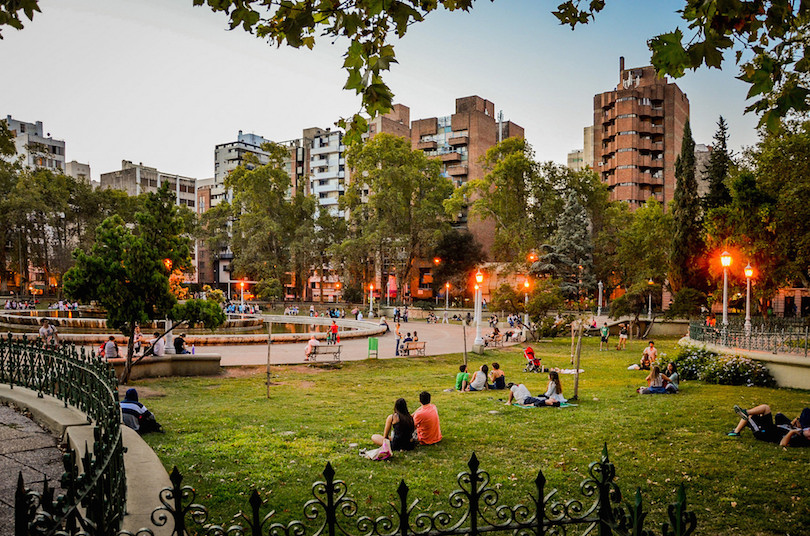
At the geographical center of Argentina is Cordoba, the country’s second largest city . The city is tknown as La Docta (the Learned) because of its abundant colleges and universities.
Surrounded by three mountain ranges and set along the banks of the Primero River, Cordoba boasts a beautiful collection of old colonial architecture juxtaposed by much more modern buildings. Its 17th-century Jesuit churches are a must visit. Because Cordoba is home to more than 200,000 students, there is also a surprisingly good nightlife scene and a social calendar jam-packed with cuarteto music and rally car racing.
One of the best ways to soak up the spirit of Cordoba is by deep diving into its culture. The city is home to a collection of theaters, cultural complexes, and arte bars, so you can pick the experience that suits you.
8. Puerto Madryn
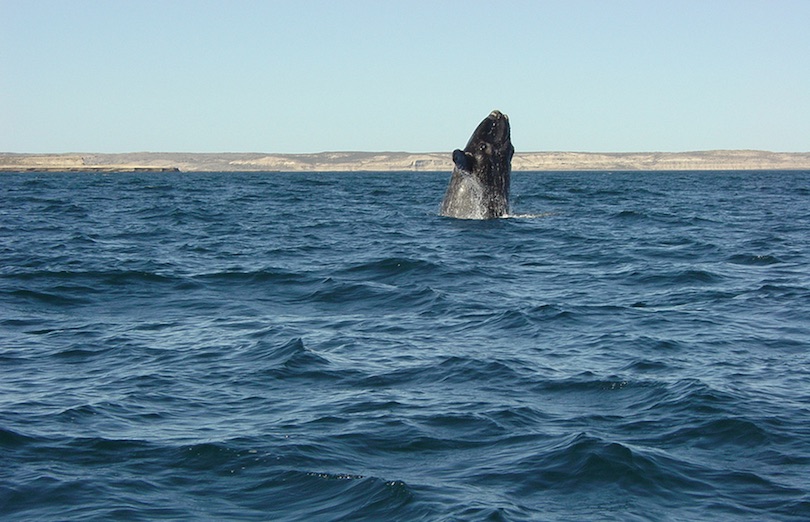
Located on the shores of Gulfo Nuevo, the city of Puerto Madryn is best known as the gateway to Peninsula Valdes . It is also a popular place to visit in summer because of its beautiful beaches although the water can be very cold.
With the explosion of tourism in recent years, Madryn has undergone rapid growth, and the town’s small permanent population swells exponentially during the summer months. Whale Watching tours are also popular as the Southern Right Whale uses the waters of Gulfo Nuevo for breeding and giving birth. From July to September the whales are so close they can be viewed from the mainland.
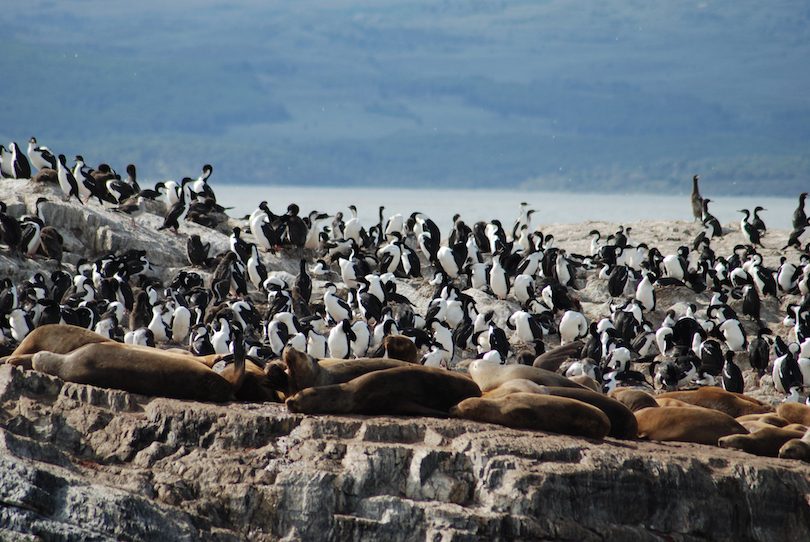
Jutting out into the South Atlantic , the mushroom-shaped Peninsula Valdes is connected to the mainland by a thin strip of land. The peninsula is a breeding ground for a variety of fascinating marine mammals , such as seals, penguins, orcas, and sea lions. The headland is a superb spot for bird watchers as there are over 180 species of birds recorded here. Bring your binoculars and keep an eye out for the migratory Snowy Sheathbill, Patagonian Canastero, Rusty-backed Monjita, and much more.
The only settlements on the peninsula is the small village of Puerto Piramides and a few ranches. The village consists of two main roads, offering a market, souvenir shops and several good restaurants serving fresh seafood. There are also a few bars as well here to enjoy drinks, music and socializing.
It should be noted that Peninsula Valdes is privately owned and visitors are not allowed to explore on their own. All visits to the peninsula should be arranged with tour operators from the nearby city of Puerto Madryn. These operations include bus and boat tours.
7. Bariloche
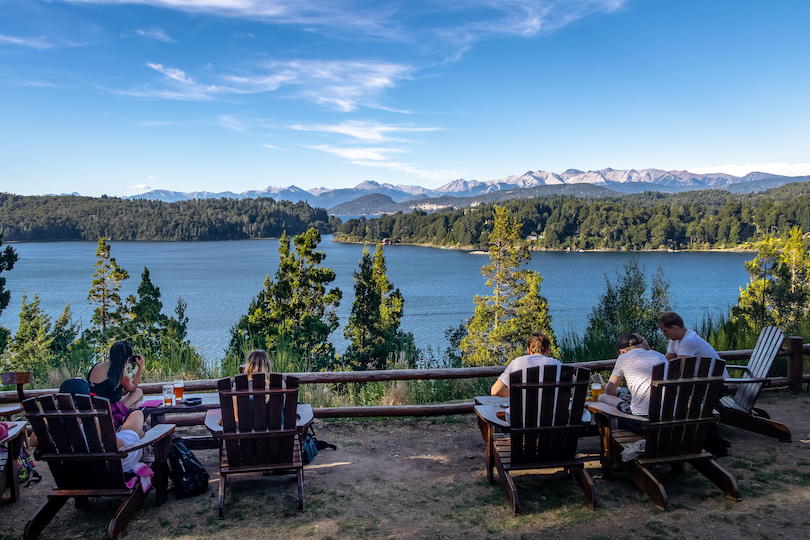
San Carlos de Bariloche, also known simply as Bariloche, can be found nestled on the slopes of Cerro Otto in Argentina’s enchanting lake district. Overlooking the magnificent royal blue lake and avocado mountain slopes of the Parque Nacional Nahuel Huapi , the views from Bariloche are simply sensational.
With prime real estate along the shores of the lake, the town has its own beach, but it’s small, and certainly not the major drawcard . Instead, Bariloche is one of the country’s most popular sporting destinations – tourists descend on this lakeside town to enjoy its skiing, trekking, rock climbing, and water sporting opportunities.
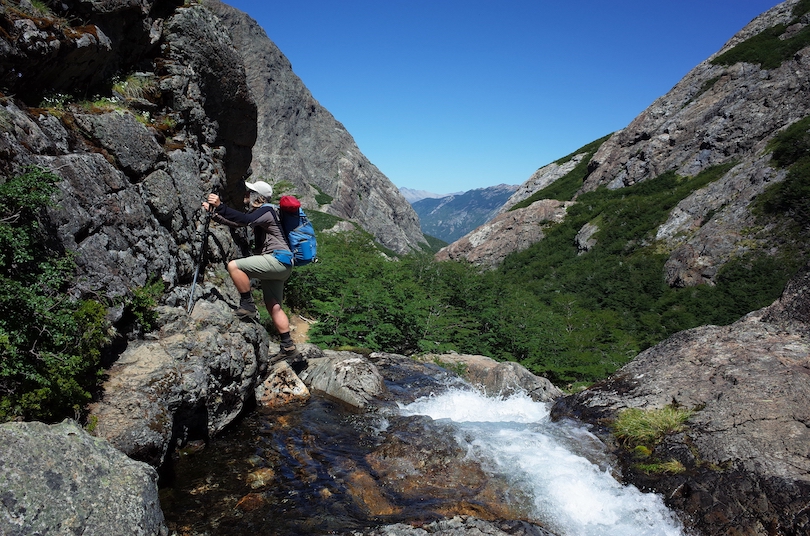
During the winter, the town has the feel of a Swiss ski resort, with plenty to tempt avid skiers and snowboarders. Home to Cerro Catedral ski resort, San Carlos de Bariloche is a winter wonderland, with Argentinian chocolate boutiques and breweries to lure you out of the cold.
West of Bariloche are stunning waterfalls and glaciers near Pampa Lenda while the Seven Lakes Road north of the city offers breathtaking vistas of the lakes and mountains. During the summer, the lakes are excellent for fishing, and the beaches offer swimming, sun bathers and water sports.
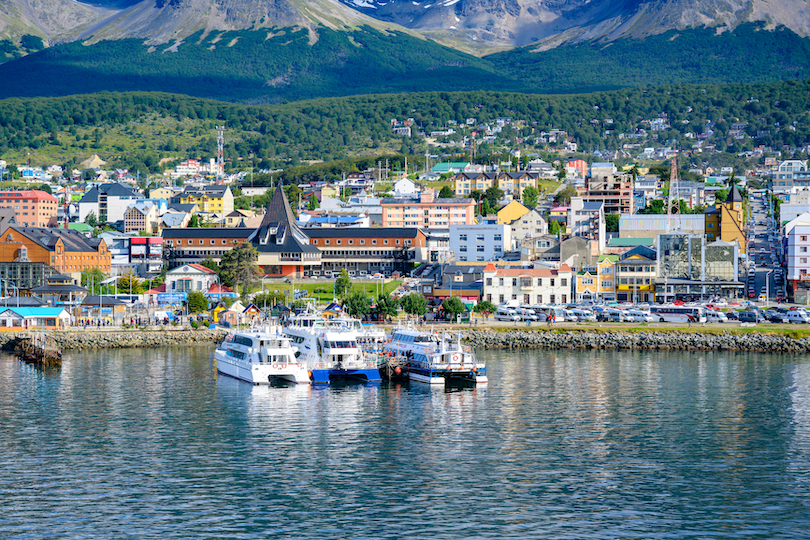
Serving as a popular base for Antarctica cruises, Ushuaia is the largest city in Argentina’s Tierra del Fuego province. Tucked within the Beagle Strait, it’s one of the most southerly-located cities in the world – something that’s earned it its nickname as the ‘ End of the World ’.
Despite its out-of-the-way location, Ushuaia is now a popular resort town and you’d never guess the city’s once dreary history with a glance at its modern-day casinos and upmarket hotels. Dig a little deeper though and you’ll discover the city was once served as an exile prison and an Argentinian naval base.
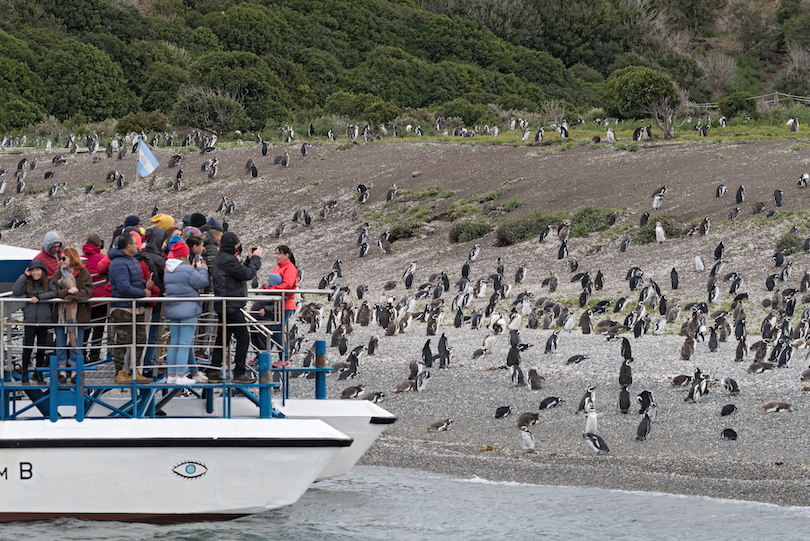
Today, the city’s main tourist attractions are split from east to west: the End of the World Train and Tierra del Fuego National Park can be found to the west while Fagnano Lake and plenty of scenic hiking trails can be found to the east. A visit to the Beagle Channel offers views of sea lions and penguins.
There’s plenty to discover closer to the city center too. Highlights include the chance to explore the Maritime and Old Prison Museum with its eerie prison cells and a hike to the blissfully snow-capped Martial Glacier for a bird’s eye view over the city.
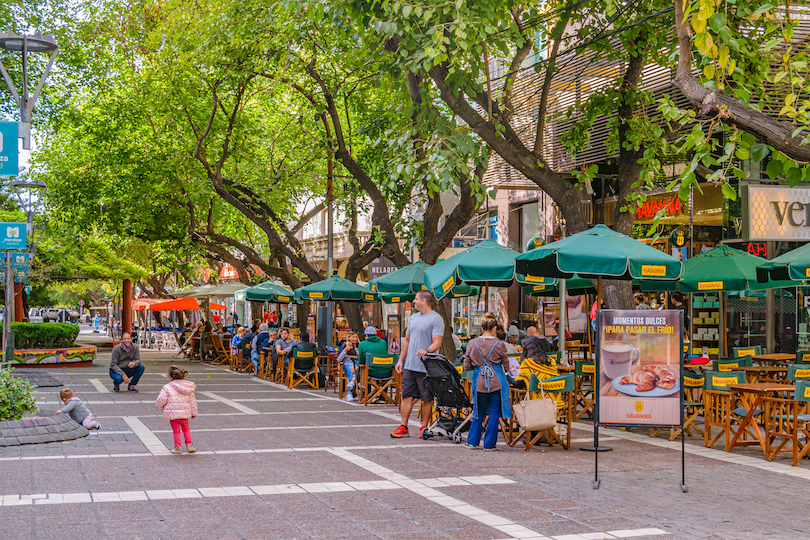
Located in Latin America’s largest wine producing region, Mendoza is a popular tourist destination not only for its wine but also for its proximity to Aconcagua , the highest mountain in the Americas. Furthermore, Mendoza offers access to beautiful scenery and outdoor adventures such as hiking, horse riding, river rafting and more.
At the heart of Mendoza is its main square, Independence Plaza, which is surrounded by restaurants, shops and beautiful buildings that are illuminated at night.
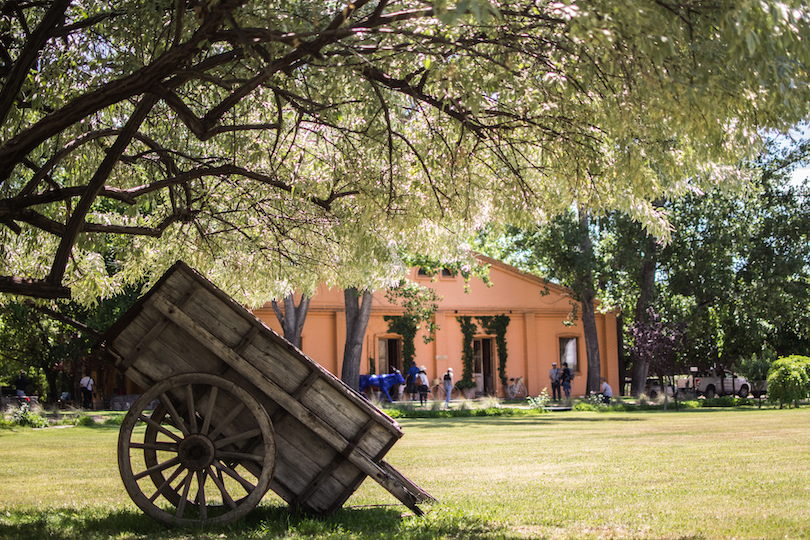
What makes Mendoza such a great spot for wine-making is unusual. Despite being a vastly arid desert region, Mendoza has an interesting irrigation system that keeps the region well-watered. You’ll find these natural waterways on either side of the road, with bridges for pedestrians and cars.
Many of the bodegas (wineries) in the Mendoza region run regular vineyard tours and wine tasting sessions. Each winery offers something a little different for visitors to enjoy, whether it’s private tastings with the estate sommelier or wine tasting by bike.
Whatever time of year you visit, you can likely find some wine events on the social calendar; many offer walk-in tours, so you don’t have to book in advance. However, if you visit Mendoza during March and April, the region’s harvesting season , bear in mind that the wineries are often booked up weeks in advance, so plan accordingly.
4. El Chalten
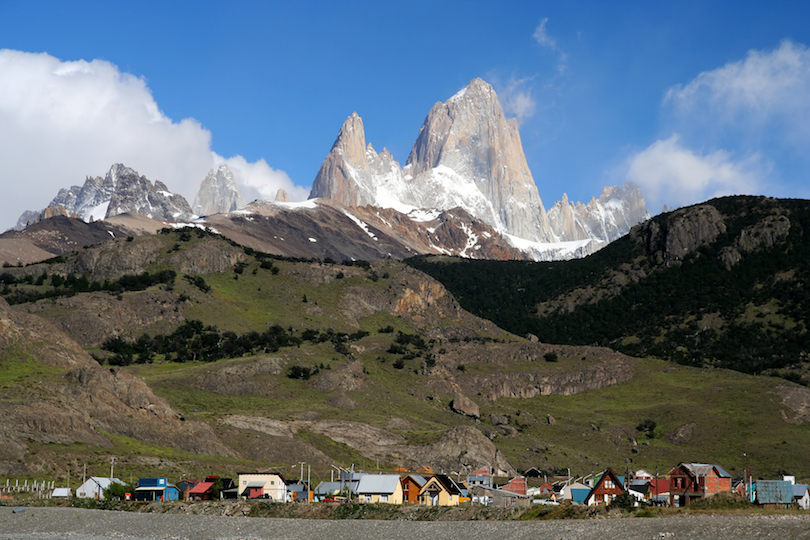
El Chaltén is a delightful frontier town that was initially formed as an outpost in the late 70s in the Patagonian region of southern Argentina. Small it may be, but Mount Fitz Roy and Cerro Torres – two of Patagonia’s most extraordinary peaks – have put this scenic little village on the map for hiking, mountain biking, and trekking adventures. In the summer months, you can expect to find the town heaving with tourists.
Overlooking the northern part of Los Glaciares National Park , the village of El Chaltén is the starting point for an abundance of hiking trails. The one you choose depends on your personal preference.
Popular hikes include the relatively easy trek to the isolated Lago del Desierto , the sunrise spot at Laguna Capri, and the longer, more challenging hike to Laguna de los Tres or Laguna Torre. After a day on the trails, the village’s La Cerveceria local brewery is the go-to hotspot in town for a post-hike thirst-quencher.
3. Los Glaciares
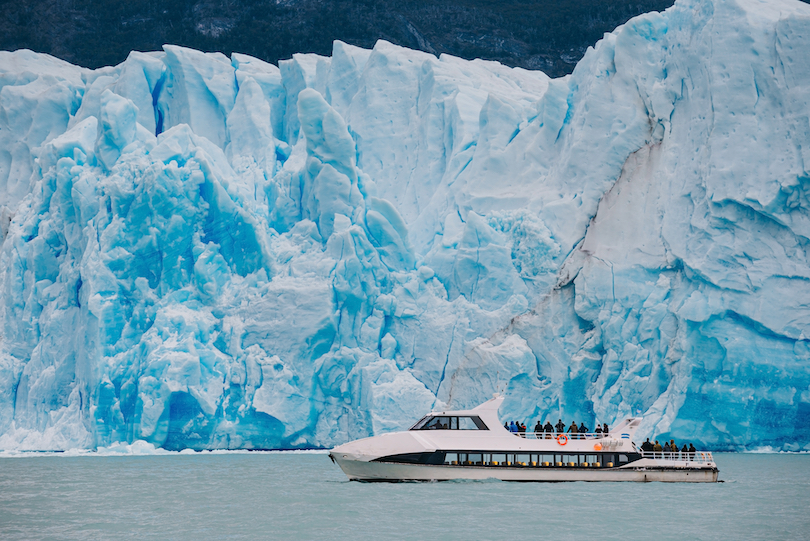
The gorgeous Los Glaciares or Glaciers National Park is Argentina’s second-largest park, and one of the largest and most easy-to-get-to ice fields on the planet. Numerous boardwalks and boat rides allow visitors to view these spectacular displays up close in addition to floating ice bergs of remarkable colors and shapes.
The repeated advancing and retreating cycle of the glaciers presents a never ending show of cracking ice and thunderous booms as giant blocks break away and crash into the lakes with enormous splashes. While the glaciers are located in the southern section of the park, the northern section features majestic mountains such as Mount Fitz Roy , offering hiking and mountain climbing.
Despite the captivating scenery of turquoise lakes and forest-clad slopes, Glaciers National Park is most famous for the Perito Moreno Glacier , which draws trekking and rock climbing enthusiasts from far and wide. Its continual movement causes sheets of ice to plunge dramatically into the water below, which is truly a sight to behold.
2. Buenos Aires
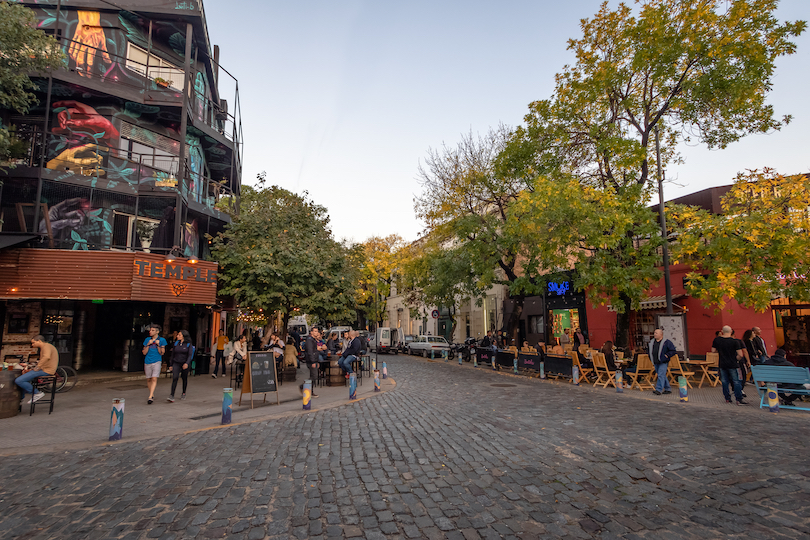
Pulsating with vitality and seductive charm from colorful European architecture to animated neighborhoods, sensational shopping and sizzling nightlife, it is no wonder that Buenos Aires gave birth to the captivating tango dance . Located off the southeastern coast of South America, Buenos Aires is the capital city of Argentina and one of Latin America’s largest cities.
Within the sprawling cityscape, with its French and Italian-style architecture, there is plenty to tempt tourists, from theater shows and glitzy bars to stylish art galleries and an exciting party scene. Everything happens late here – from dinner to late-night clubbing – so if you want to do it all properly, don’t expect to get a lot of sleep in Buenos Aires.
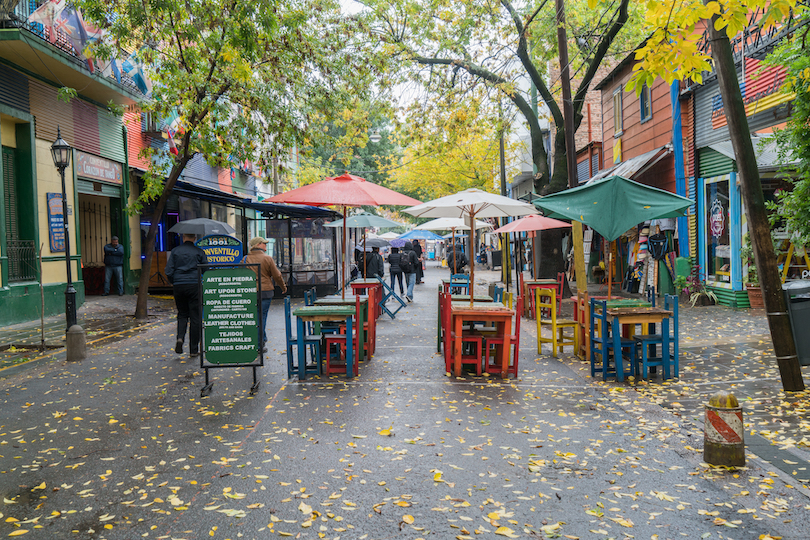
The vibrant cosmopolitan city is composed of several districts called barrios . Some of the most visited of these barrios include the Microcentro where The Obelisco is located. San Telmo is popular for its flea markets while La Boca ’s multicolored architecture and tango street dancing make it a world famous district.
Overflowing in museums, art galleries and world class theaters, the city boasts one of Latin America’s most active cultural scenes. One of the most popular things to do in Buenos Aires is attending the tango dances frequently performed in various streets and venues.
1. Iguazu Falls
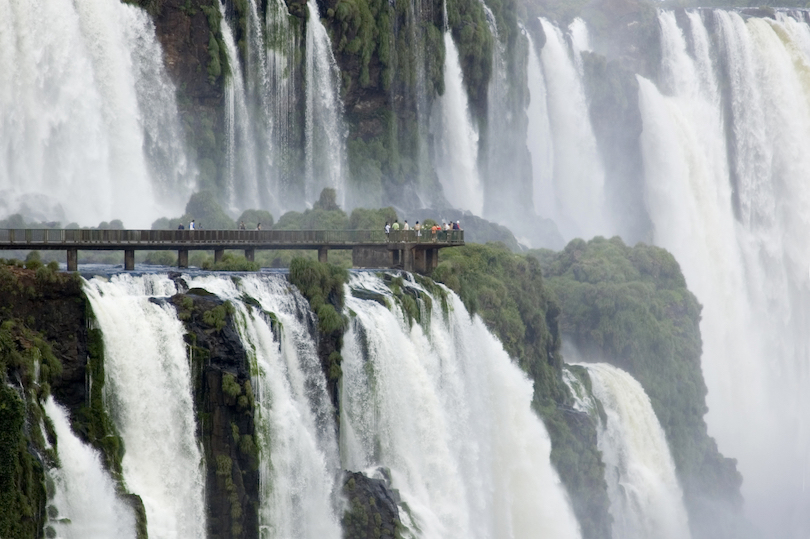
The thundering Iguazu Falls (meaning ‘Big Water’) is one of the largest and most powerful waterfalls in the world. Straddling the border between Brazil and Argentina, these massive waterfalls are made up of hundreds of individual cascades.
Interestingly, the tallest waterfall, known as Devil’s Throat , is almost double the height of Niagara Falls! The falls in and of themselves are a breathtaking spectacle, but their beauty is all the more enhanced by the surrounding lush forest teeming in exotic wildlife.
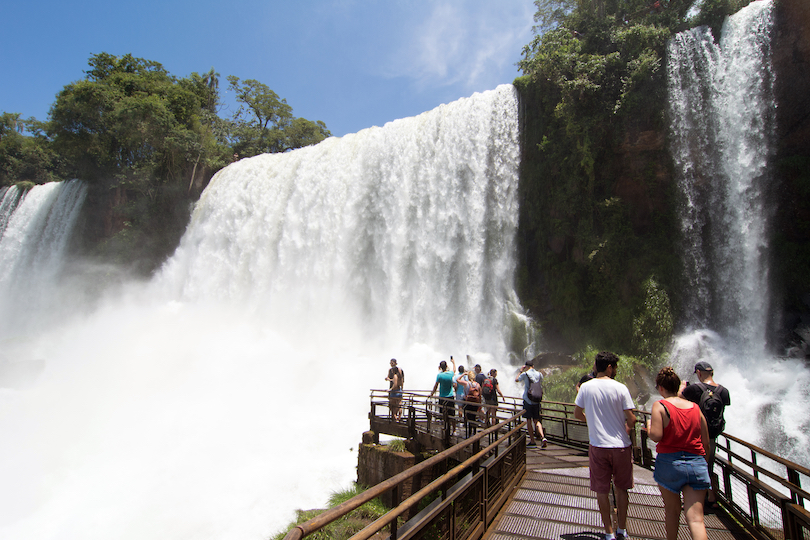
The waterfall is located within its own national park near Puerto Iguazu – Parque Nacional Iguazú – that’s filled with some fantastic flora and fauna, including some of the last surviving Atlantic rainforests on Earth. The park features many excellent walkways while boat rides are available which take people close enough to the falls to get wet from the spray.
But while Iguazu Falls are undeniably the main attraction here, a fascinating array of wildlife is another major lure to Iguazu. On a jungle safari through Iguazu National Park, you can see howler monkeys, giant anteaters, jaguars, ocelots, caymans, and over 2,000 species of plants.
Argentina Travel Video
Share this post:.
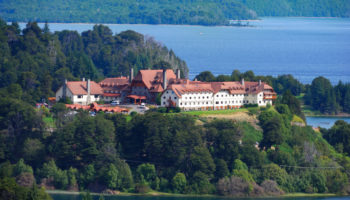
9 Most Awesome Places to Stay in Argentina
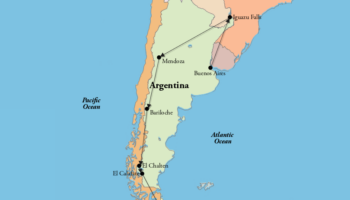
How to Spend 3 Weeks in Argentina: DIY Itinerary
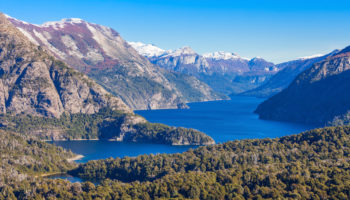
23 Top Tourist Attractions in Argentina
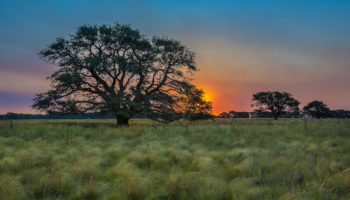
7 Most Beautiful Regions in Argentina
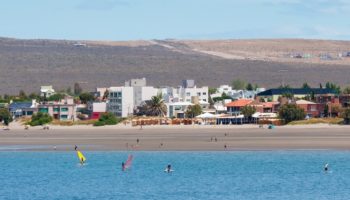
15 Best Cities to Visit in Argentina
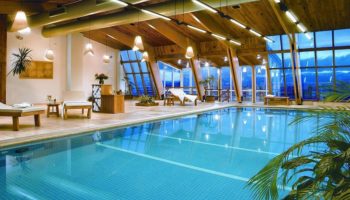
Where to Stay in San Carlos de Bariloche: 8 Amazing Hotels
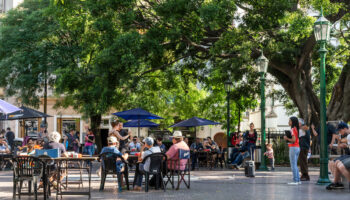
23 Top Attractions & Things to do in Buenos Aires
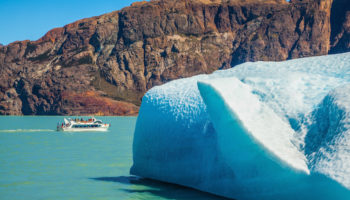
See What Makes Los Glaciares National Park So Incredible
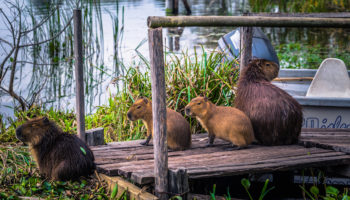
10 Best Places to Visit in Mesopotamia, Argentina
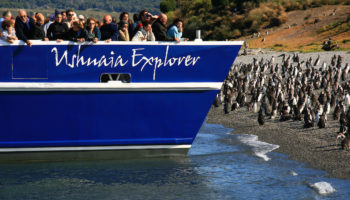
10 Top Things to Do in Ushuaia, Argentina
Reader interactions.
March 5, 2020 at 5:23 am
YOU guys don’t mention the NORTH. Best area of Argentina, amazing landscapes and hotel. Impressive
July 22, 2019 at 9:43 am
the city, 9 julio ave, and the Momuments were beautiful – a bustling downtown area full of life
October 5, 2016 at 2:25 pm
There´s a special corner of our country, not well know yet, therefore visitors are few, but the destination is well worth a visit. I am talking about Mocona Longitudinal Falls, located only aprox. 260 km from Iguazu most magnificent waterfalls, and who doesn´t visit that place!?? If you visit Iguazu, and you want to see real nature, real jungle, more butterflies than ever in your life, and hundreds of species of birds, this is the place. Book a Lodge in the jungle (and there are many!!) and start enjoying the real power and energy of nature and wildlife. I suggest a place called La Perla de la Prelva Lodge. Great food, merged in the jungle, and most relaxing spot ever.
November 10, 2014 at 10:36 pm
Also Capilla del Monte from Córdoba province is a great place to visit if u luv mountains, adventure tourism and of course … the ufo sightings.
February 27, 2014 at 5:09 pm
Since El Calafate is just a town close to the Perito Moreno Glacier, I would drop it from the list to include the beautiful North-West: Salta and Jujuy. I would also rename Bariloche as Lake District, given that there are several beautiful towns in the area, such as Villa La Angostura, San Martin de Los Andes and Esquel. Travellers should know that it’s impossible to know the whole country in just one trip.
September 8, 2013 at 9:56 pm
Iguazu Falls is simply stunning, Definitely a place to visit when you where in Argentina.
Leave a Reply Cancel reply
Your email address will not be published. Required fields are marked *
This site uses Akismet to reduce spam. Learn how your comment data is processed .
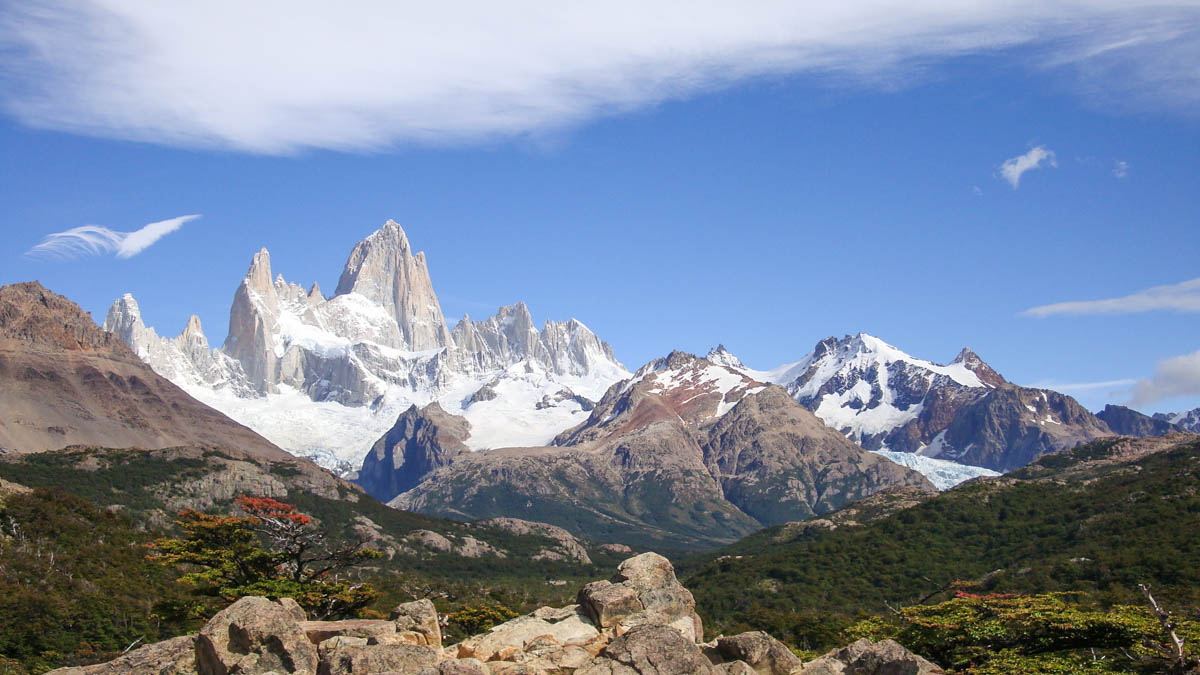
The Best Places to Visit in Argentina: A 3-Week Itinerary for Your First Trip
Some links on this page may be affiliate links. That means if you follow one, see something you like, and purchase it, I may receive a small commission at no cost to you. For more information, see this site's disclosures .
This three-week Argentina itinerary takes in all of the country’s highlights, from the incredible Iguazú Falls to the mountains of Patagonia.
Argentina is one of those countries that has it all. A world class city, jungle waterfalls, desert landscapes, wine country, mountain lakes, and snow-capped peaks… and that’s really just the beginning.
This itinerary will introduce you to the best of Argentina, but keep in mind that it’s a large country. Hitting every stop on this list in three weeks will require a relatively quick tempo. It will be a fantastic first visit, but the only way to do it is with a bunch of overnight buses or internal flights. The distances are just too great to see all of Argentina’s highlights without them.

Some of the bus journeys required take a full 24 hours or more. If you plan to travel by bus (or rent a car), you’ll need to do some combination of skipping some places on this list or shortening your time in each one.
If you have more time, I definitely encourage you to take it! In the north of Argentina, you can break up the long journeys with stops in some of Argentina’s smaller cities. In Patagonia, you might want to weave in and out of Chile as you make your way south.
With that said, let’s jump right into the best places to visit in Argentina for first timers!
Buenos Aires: Argentina’s city that never sleeps (3-4 days)
Of course, no visit to Argentina would be complete without a visit to its largest metropolis. Buenos Aires has beautiful architecture, fantastic nightlife, amazing street art, and so many diverse neighborhoods to explore.
Three days is really the absolute minimum amount of time I would recommend for your first trip to Buenos Aires. The classic must-see sights will take you at least two days, and that’s at a run.

These include the colorful Caminito in La Boca, the cobblestone streets of San Telmo (try to visit for the Sunday fair if you can), Plaza de Mayo (site of some of Argentina’s most important historical events), and the famous Recoleta Cemetery. You’ll probably also want to spend some time exploring the leafy, trendy barrio of Palermo. There are museums, markets, and parks – not to mention the fantastic food scene.
For suggestions on what to do and see, I’ve written a suggested 4-day itinerary that includes the main highlights plus a few extras. Have a read and choose the sights that interest you most for your time in the city.
Iguazú Falls: One of the world’s natural wonders (1-2 days)
These waterfalls, situated on the border between Brazil and Argentina, are one of the most spectacular sights you’ll ever see, especially if you time your visit for the rainy season. (Yes, it’s uncomfortably hot and sticky, but you came for the waterfalls, right? Well the rainy season is, unsurprisingly, when they’re at their most impressive! Rainy season at Iguazú also coincides with the best season for hiking in Patagonia, so that’s convenient for trip planning.)

The area surrounding the waterfalls is a national park, and it has extensive walking paths with dozens of excellent lookout points over the falls. Some give you a panoramic perspective, while others lead you close enough to the rushing water to get completely drenched by its spray. (Bring a dry bag!)
There is also a train to take you a bit further afield to arguably the most impressive viewpoint of all – the Devil’s Throat. From the train station, a 1-kilometer long platform over the river ends with an up-close view of a legitimately awe-inspiring (and deafening) torrent of water, as well as the numerous rainbows that form in the surrounding spray.
You can also take short boat tours on the Iguazú River for a different perspective on the base of the falls. The speedboats don’t take you right under the water, but you still get much closer than you can by walking. It’s a bumpy, wet, fun ride and worth the money. (Again, you came all the way here!)

One full day is enough to see the Argentinian side of the falls pretty thoroughly. I know it can feel like a waste not to stay longer, seeing as you came all the way here to the middle of the jungle. If you want to explore the Brazilian side of the falls as well, I recommend spending another day here.
How to get to Iguazú Falls
To visit Iguazú Falls on the Argentinian side, most people stay in the little town of Puerto Iguazú. The town is about 20 kilometers away from the falls, and buses run there several times per hour.
By far, the easiest way to reach Puerto Iguazú is to fly from Buenos Aires. There are many nonstop flights each day from both Jorge Newbery Airport (locally referred to as simply “Aeroparque”) and Ezeiza. The trip takes just under 2 hours and usually costs less than $100 USD if you purchase tickets a month or so in advance.
Unfortunately, the alternative is… not great. If you want to travel by bus, it will take 17-20 hours and might cost just as much as the flight.
Northwest Argentina: Colorful mountains, salt flats, and wine tasting (3 days)
The northwest is probably not what most people picture when they think of Argentina. The desert landscape is completely different from the rest of the country. Here you can visit dramatic salt flats, go wine tasting, and explore the UNESCO-recognized Quebrada de Humahuaca.

North of Jujuy: Quebrada de Humahuaca and the Salinas Grandes
If you’re coming all the way up here, you definitely shouldn’t miss the Quebrada de Humahuaca, a valley characterized by colorful rock formations, adobe houses, and Quechuan villages. In the small town of Purmamarca, you can do an easy one-hour walk to take in the red, orange, and purple hues of the Cerro de los Siete Colores. Half an hour away, the small town of Tilcara – set in the same beautiful valley – has a reconstructed 12 th century settlement overlooking the mountains.
There are also salt flats – perhaps not quite as impressive as those a bit further north in Bolivia, but still an interesting place to see and take some fun photos.
You can visit these as part of a day trip from either Salta or San Salvador de Jujuy (usually referred to as simply Jujuy). You’ll cut down on your driving time to the Quebrada de Humahuaca and the salt flats considerably if you base yourself in the latter, but I’d argue Salta has a bit more to see and do. It also has more frequent direct flights to other parts of the country. If you don’t mind moving around, you could stay in both, or you could spend a night in one of the small towns. (This would require renting a car, as most tours will just take you out for the day.)

Jujuy is about two hours north of Salta. From there, it’s about an hour north to Purmamarca, and another half an hour to Tilcara. The Salinas Grandes are about an hour west of Purmamarca. Many companies combine the salt flats and Purmamarca into one (long) day, which I think is a good option if you also want to visit Cafayate and/or Cachi. (See next section.)
South of Salta: Cafayate and Cachi
Three hours in the other direction from Salta is Cafayate, a popular wine tasting destination. Since Mendoza, Argentina’s most famous wine region, is the next stop on this itinerary, I think you can sleep soundly saving Cafayate for another trip. If you’re up for it, though, Cafayate is set in a beautiful valley, and many winery tours will include opportunities to explore the stunning rocky gorges and canyons as well. (You’ll do the outdoor activities first, don’t worry!)
If you’re renting a car, you could do a loop including Cachi, a small colonial town that is also about 3 hours from Salta. (Unfortunately, it’s not really on the way to Cafayate, but the drive itself is beautiful and part of the appeal.)
And if you prefer being driven, you can also book a separate day tour to Cachi and Los Cardones National Park.
(One last option is to stop in Cafayate on your way to Mendoza if you plan to travel by bus. You’d have an additional 20 hours or so with a transfer in San Miguel de Tucumán.)
How to get to Argentina’s northwest
Aerolíneas Argentinas usually has four direct flights per week from Puerto Iguazú to Salta and two per week from Puerto Iguazú to Jujuy. The flight takes two hours.
Traveling by bus will take at least 24 hours, and there is no direct bus at the time of writing. You’ll likely need to transfer in Posadas, Corrientes, or Resistencia.
Mendoza: Wine tasting at the foot of the Andes (2-3 days)
Mendoza is best known for its wineries and the ever-popular bicycle tours of its vineyards.
Many people don’t realize that Mendoza is also a major hub for adventure sports. Looking at a map, it makes perfect sense – it’s right next to the Andes. However, with so many popular hiking and outdoor activities available further south, Mendoza’s can often get overshadowed.

It’s true that a lot of the hikes aren’t quite as accessible as those in Patagonia. (You’re not going to walk out the door and up a mountain.) Still, there are a lot of great day tours that will get you out into nature – an especially nice counterbalance if you’ve spent the previous day drinking malbec from noon until night!
The most popular activities are riding horses , whitewater rafting , ziplining, paragliding , and of course, trekking .
How to get to Mendoza
Once again, you’re faced with the choice between a few hours in the air and 20 hours on a bus.
There are direct flights from Salta to Mendoza four days per week and from Jujuy to Mendoza twice per week. The other days, you’ll need to connect in Córdoba or Buenos Aires.
Or grab some headphones and/or a good book, and settle in for that long overnight trip!
Bariloche: Argentina’s capital of outdoor adventure, extreme sports… and chocolate (2-3 days)
The next stop on your itinerary is Argentina’s unbelievably, jaw-droppingly gorgeous lake district. There are a number of beautiful small towns in the region where you can base yourself to explore its genuinely magnificent mountains, rivers, and lakes.

The best and easiest place, though, especially if this is your first visit to Argentina, is San Carlos de Bariloche. Sitting on the southern shore of Nahuel Huapi Lake, it is a major tourist center and transportation hub. Accommodation is plentiful, there are frequent connections to other parts of the country, and public transit is available to take you to trailheads, beaches, and other places of interest.
The great outdoors in Bariloche
If you’re a hiker, I recommend tackling one or two of the phenomenal day hikes in the Bariloche area. (Since we’re trying to fit a lot into three weeks in Argentina, we’ll save the multi-day treks for your next trip.) If you have to pick just one, I highly recommend the ridgeline hike to Refugio Frey .
And even if you’re not much of hiker, you can still reach some really lovely viewpoints by cable car. These include Cerro Campanario, Cerro Otto, and Cerro Viejo.
Adventure sports enthusiasts can go river rafting, mountain biking, rock climbing, kitesurfing, or paragliding. Fly fishing and horseback riding are great options for people looking to enjoy nature without the adrenaline rush.

Other popular activities in Bariloche
Even if you’re more about the indoor life (or if you’re just unlucky with the weather), there is a lot to love about Bariloche. In addition to the excellent wine you’ve probably come to expect in Argentina, Bariloche has a flourishing craft beer industry. It is something of a foodie destination, with a lot of renowned restaurants serving traditional Patagonian cuisine.
If you’re a history buff, check out one of the excellent historical walking tours in Bariloche. One highly rated tour introduces visitors to the indigenous history of the region. Another focuses on the legacy of immigration from Germany to Argentina, and specifically the Lake District, after World War II.
Finally, don’t miss the dozens of excellent chocolate shops dotting the downtown streets. Bariloche’s long history of chocolate production (dating to the post-World War II era) has earned it a reputation as Argentina’s “capital of chocolate.” Save some room!
How to get to Bariloche
If you’re coming here by bus, be prepared – this is another long one. (Are you noticing a theme here?) Most buses leave Mendoza in the evening (around 6:30 p.m.) and arrive in Bariloche around lunchtime the following day. (The trip takes about 18-19 hours.)
There are nonstop flights from Mendoza to Bariloche a few times per week. The flights take a little under 2 hours and, once again, are frequently cheaper than the bus. (I’ve often seen tickets for $60 USD.)
El Chaltén: The highlight of any hiker’s Argentina itinerary (3 days)
Let’s start by establishing that El Chaltén is for hikers. It’s a hiker’s paradise. A mecca! The “Argentine capital of trekking” !
If you’re not a hiker? I’d probably skip it and add some extra days somewhere else in your itinerary. There isn’t all that much else to do!

Ok, so hikers: There are two very famous treks here, and for good reason. And then there is another one that doesn’t seem to be all that famous but is, in my opinion, even better. There are also shorter hikes to waterfalls and viewpoints as well as multi-day treks if you’re so inclined.
The number one trek on virtually everyone’s list is the hike to Laguna de los Tres. A close second is Laguna Torre. Of the two, Laguna de los Tres is longer, harder, and more impressive (that’s a close one though), so that is probably the one to prioritize.
That said, if it were me , and if it were a clear day, I would prioritize a completely different hike. It’s called the Loma del Pliegue Tumbado , and I am baffled by how completely and utterly underrated it is. In fact, I’m a little worried I’m breaking some kind of unspoken rule about this hike – are we keeping it a secret, or something? I hardly see it mentioned, and it’s alllll the way down at #7 on AllTrails, and… yeah, that just makes no sense to me.

Unfortunately, there is a decent chance the weather won’t cooperate with you for three full days. This is just the nature of Patagonia. If that’s the case, there are some easier hikes closer to town that only require a few hours. (Consider the Chorillo del Salto, for example.)
How to get to El Chaltén
Bariloche to El Chaltén takes a good 24 hours by bus – at best. You’ll travel along the famous Ruta 40, which runs the length of Argentina parallel to the Andes. (Unfortunately this stretch of it is not particularly interesting.)
I’ve done it myself (and I should note that it took 33 hours), but this is another one of those times when I certainly understand the choice to fly. Aerolíneas Argentinas runs nonstop flights from Bariloche to El Calafate (see the next section) once a day in the summer months and a few times per week in the shoulder season.
If that’s what you choose to do, you’ll just have to travel the roughly three hours from El Calafate to El Chaltén by bus. (And that route is, luckily, pretty spectacular!)
El Calafate: Gateway to the incredible Perito Moreno Glacier (2 days)
Next up on the itinerary is El Calafate. This little town is the gateway to one of the most magnificent sights on this big blue Earth: the Perito Moreno glacier. This is one of the most accessible glaciers in the world, and it is genuinely a sight to behold. Pictures often don’t do it justice, failing to effectively convey just how enormous it is, or how beautiful it is in the changing light.

There are a number of ways to experience the Perito Moreno, from kayaking through its floating icebergs to ice trekking over the glacier itself . The most budget-friendly option is to just admire the glacier from the walkways and various viewing platforms on the other side of the lake. (I spent hours doing this when I visited the glacier, and it never once got old. I truly felt like I needed that time to fully appreciate it.)
As you stand gaping in awe, there is a good chance a chunk of ice the size of 5-storey building will break off of and crash into the lake below. You’ll usually hear a loud crack before it does – a second or two of a heads up to see how fast you can get your camera out.

El Calafate itself is a small town in a beautiful setting on the southern shore of Lago Argentino. You can go horseback riding, visit another glacier a bit further afield, or just take a stroll near Laguna Nimez to check out the resident flamingos.
How to get to El Calafate and the Perito Moreno Glacier
As mentioned above, there are daily flights to El Calafate from Bariloche in the summer. If you’re just coming from El Chaltén, it’s a very manageable 3-hour trip by bus along a beautiful stretch of highway.
Buses head to the Perito Moreno from El Calafate every morning. The trip takes about an hour and a half.
Ushuaia: Hiking and wildlife at the end of the world (2-3 days)
Our final stop on this three-week Argentina itinerary is Ushuaia, generally considered the southernmost city in the world. I’m including it on the list for anyone who has an extra couple of days (or who cut out some of the long, 24-hour bus trips with domestic flights). It’s a scenic place with some great treks and nice opportunities to spot wildlife, and it’s cool to stand at the so-called ends of the Earth.

Wandering around the harbor, you’ll see ships bound for Antarctica. With a bit of lucky timing, you might even spot one on its way there from one of the nearby hiking trails.
That said, don’t lose sleep if you took some night buses to save the planet and have run out of time to visit Ushuaia. Bariloche, El Chaltén, and El Calafate are the real Patagonian must-sees on your first trip to Argentina. Ushuaia is a nice bonus. (If your heart is set on Antarctica someday, you’ll probably be back anyway.)
Ushuaia is a great place to hike, as you’ll find the trails much less crowded than the ones in El Chaltén or nearby Torres del Paine in Chile. The most recommended treks are Laguna Esmerelda, Cerro Guanaco in Parque Nacional Tierra del Fuego , the Vinciguerra Glacier, and the Martial Glacier.

For a chance to spot some incredible wildlife (potentially including whales, dolphins, and sea lions!), check out boat tours through the Beagle Channel. If you, like me, can’t get enough of adorable Patagonian penguins, look for tours that include Isla Martillo . (Note that Piratour is the only company currently authorized to let visitors disembark and walk around the island.)
How to get to Ushuaia
If you’re combining your Argentina itinerary with some time in Chile, it makes the most sense to visit Torres del Paine National Park in between El Calafate and Ushuaia.
*Note that if you want to hike the famous W trek (or the longer O that includes it), you have to either plan wellll in advance or get very lucky in order to secure accommodation along the route.
Getting to Ushuaia from Puerto Natales in Chile
Buses between El Calafate and Puerto Natales typically take between five and six hours, including the border crossing. (Once in Puerto Natales, you can rent any gear you need and book transportation to Torres del Paine.)
After your trek, you can take a bus from Puerto Natales to Ushuaia, which takes about 13 hours. (You might think heading to Punta Arenas will shorten the trip, but in reality the trip from Punta Arenas to Ushuaia takes almost as long because of the way the Strait of Magellan is shaped. I loved my trip to Isla Magdalena from Punta Arenas, but you can see penguins in Ushuaia, too. My humble opinion is that it’s not worth going out of your way to Punta Arenas unless it’s time to go home and you need to fly to Santiago.)
Getting to Ushuaia from El Calafate
If you’re not visiting Torres del Paine on this trip, you can fly directly from El Calafate to Ushuaia in about 75 minutes. Aerolíneas Argentinas has several direct flights per day, but they can be pretty pricey if you don’t grab them early. (Again, a lot of people are coming here to go to Antarctica, so they book many months in advance – and the price is kind of a drop in the bucket in comparison.)
There is no direct bus, so you’ll have to transfer in Río Gallegos if you go that route. Again, I’ve done it, and honestly I just slept a lot and did a lot of processing of all of the amazing things I’d seen on my adventure. But I was time rich and money poor, and it did take a solid 18 hours.
Getting back to Buenos Aires
As you’ve probably guessed by now, taking the bus back to Buenos Aires will take over 48 hours. If you’re going to do that, at least give yourself a break in the middle in Puerto Madryn. This small city on the east coast is best known for whale watching from June to December, but it has some nice rocky beaches and is a great place to see other wildlife throughout the year.
Heading into Chile
As mentioned above, if you have more than three weeks for your trip, you might have already decided to zigzag between Argentinean and Chilean Patagonia. Chile is an absolutely amazing country , and I highly recommend spending some time there if you have it.
From Puerto Natales, consider taking the Navimag ferry (if it’s within your budget) through the Chilean fjords and up to Puerto Montt. From there, you can easily travel to beautiful Chiloé Island or the lovely lakeside town of Puerto Varas (kind of like Chile’s answer to Bariloche).
More on Argentina
How to hit all the Buenos Aires highlights in 4 days
Calle Lanín: A colorful street off the beaten path in Buenos Aires
The 5 best day hikes in Bariloche
Hiking to Refugio Frey from Cerro Catedral in Bariloche
3 days in El Chaltén: Where to hike (and where to eat afterward!)
The most underrated hike in El Chaltén: Loma del Pliegue Tumbado
Similar Posts
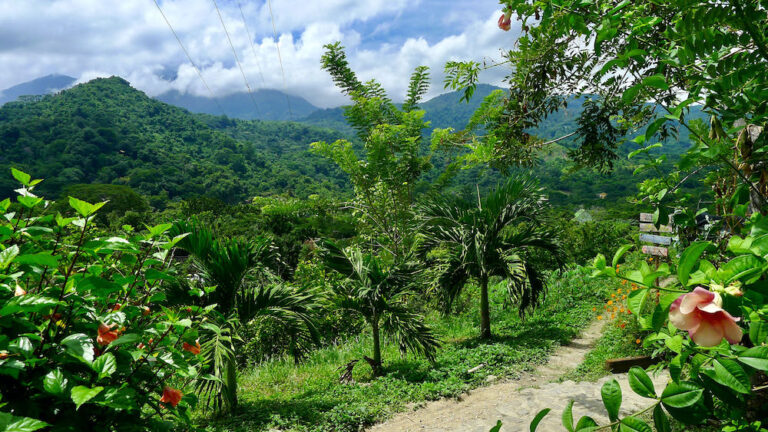
Minca, Colombia: A Change of Scenery
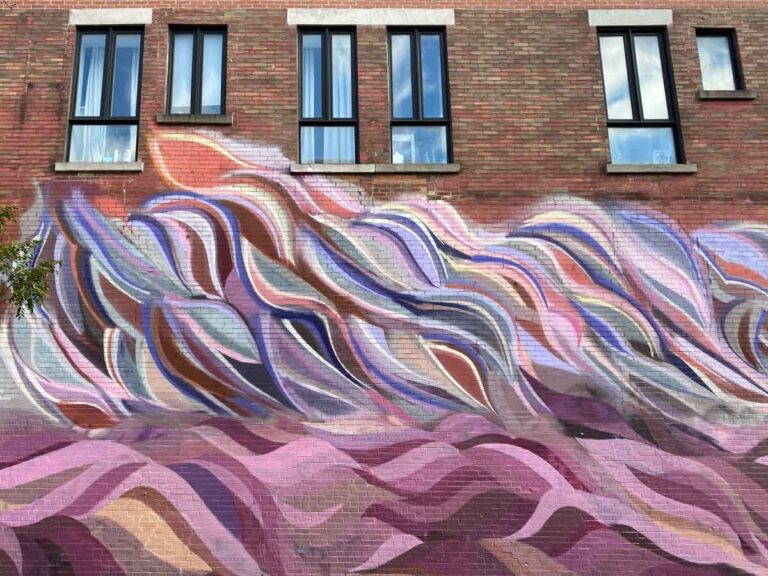
The Best Neighborhoods in Montreal: Where to Stay, Eat, and Explore

The best beaches in Colombia: A Caribbean coast itinerary

Mount Royal lookout points: How to find the best views in Montreal

El Nido diving: Much better than island hopping!

An Alicante itinerary for 1, 2, or 3 days: Heart of the Costa Blanca

12 Best Places to Visit in Argentina
Updated on: December 3, 2023

Argentina is a country that offers a combination of excitement, boldness, and intelligence. It captures attention through its vibrant cities, rich culture, and abundant natural beauty. Beyond its reputation for the tango, Argentina has much more to offer than meets the eye.
In the bustling streets of Buenos Aires, one can feel a captivating and cosmopolitan energy as they explore the numerous cafes and hangouts. Cordoba boasts beautiful Spanish architecture, while Mendoza is nestled deeply within the country’s renowned wine region.
When visiting Argentina, one can always find opportunities to immerse oneself in nature and encounter wildlife. The northern region, with its subtropical atmosphere, is home to the magnificent Iguazú Falls, surrounded by an area perfect for hiking and exploration.
12. Puerto Madryn

Puerto Madryn is a city located on the shores of Gulfo Nuevo and is mostly known as the entrance to Peninsula Valdes. It is a popular place to visit during summer because of its beautiful beaches, even though the water can be quite cold.
The city has seen significant growth in tourism lately and its population drastically increases during the summer months. One of the main attractions is whale watching, as the Southern Right Whale comes to the waters of Gulfo Nuevo to breed and give birth.
It is possible to see the whales from the mainland between July and September. Peninsula Valdes, which sticks out into the South Atlantic, is connected to the mainland by a narrow strip of land.
The peninsula is a breeding place for various intriguing marine animals like seals, penguins, orcas, and sea lions. It is also a great spot for bird enthusiasts, as there are over 180 bird species that have been observed there.
The only settlements on the peninsula are the small village of Puerto Piramides and a few ranches. In Puerto Piramides, there are two main roads with markets, souvenir shops, and good seafood restaurants. There are also a few bars for enjoying drinks, music, and socializing.
It’s important to note that Peninsula Valdes is privately owned, and visitors are not permitted to explore it on their own. All visits to the peninsula need to be arranged through tour operators in Puerto Madryn, who offer bus and boat tours.
11. El Chalten

El Chaltén is a small and charming town located in the Patagonian region of southern Argentina. It was originally established as an outpost in the late 70s.
The town has become famous for its incredible peaks, Mount Fitz Roy and Cerro Torres, making it a popular destination for hiking, mountain biking, and trekking adventures. During the summer, the town gets crowded with tourists.
El Chaltén overlooks the northern part of Los Glaciares National Park and serves as the starting point for numerous hiking trails. The choice of trail depends on your personal preference.
Some popular options include the easy trek to Lago del Desierto, the beautiful sunrise spot at Laguna Capri, and the more challenging hikes to Laguna de los Tres or Laguna Torre.
After a day of hiking, many visitors head to the local brewery called La Cerveceria, which is a popular place to quench your thirst and relax.
10. Ibera Wetlands

The Ibera Wetlands is a protected area filled with marshy swamps, moss-covered bogs, and shallow lagoons. It is one of the largest wetlands globally, second only to the Pantanal in Brazil.
You can find these wetlands in the northeastern province of Corrientes, about 400 miles away from the capital city of Buenos Aires. Being far from popular tourist spots, the Ibera Wetlands have remained untouched and offer visitors the chance to witness breathtaking nature.
Argentina’s wetlands are famous for their diverse wildlife, including alligators, giant otters, capybaras, monkeys, and anacondas.
Moreover, there are over 350 bird species inhabiting the wetlands, including herons, eagles, magpies, and even the enormous great rheas, resembling ostriches.

Ushuaia, located in Argentina’s Tierra del Fuego province, is a popular starting point for Antarctic cruises. It is the largest city in the province and is situated in the Beagle Strait, making it one of the southernmost cities in the world.
This is why it is often referred to as the ‘End of the World’. Despite its remote location, Ushuaia has transformed into a sought-after resort town with modern casinos and luxurious hotels.
However, if you look deeper into its history, you’ll find that it served as an exile prison and an Argentinian naval base in the past. Nowadays, Ushuaia’s main tourist attractions are divided between the east and west.
To the west, you can find the End of the World Train and Tierra del Fuego National Park, while to the east, there are Fagnano Lake and various scenic hiking trails. If you visit the Beagle Channel, you can witness sea lions and penguins.
Additionally, there are plenty of interesting things to explore in the city center. Highlights include the Maritime and Old Prison Museum, where you can see prison cells with a haunting atmosphere, and hiking to the picturesque Martial Glacier for a panoramic view of the city.

Mendoza, located in the largest wine producing region of Latin America, is a popular tourist destination because of its wine and its close proximity to Aconcagua, the highest mountain in the Americas.
In addition, Mendoza offers the opportunity to enjoy beautiful scenery and outdoor activities like hiking, horse riding, and river rafting.
The main square in Mendoza, called Independence Plaza, is the heart of the city and is surrounded by restaurants, shops, and illuminated buildings at night.
Mendoza’s unique irrigation system keeps the arid desert region well-watered, with natural waterways and bridges on both sides of the road.
Many wineries in the Mendoza region offer vineyard tours and wine tasting sessions, each with their own unique offerings such as private tastings with a sommelier or wine tasting by bike.
Throughout the year, there are wine events on the social calendar that often have walk-in tours, but if you visit during the harvesting season in March and April, it’s important to plan ahead as wineries are often fully booked weeks in advance.
7. Buenos Aires

Buenos Aires is a lively city with vibrant culture and charming European architecture. It is known for its lively neighborhoods, fantastic shopping, and exciting nightlife. The city is proud to be the birthplace of the captivating tango dance.
Located in Argentina, it is one of the largest cities in Latin America.Buenos Aires offers a variety of attractions for tourists, such as beautiful theater shows, trendy bars, and sophisticated art galleries.
The city is always bustling, with late-night dining and clubbing being the norm. If you want to experience everything Buenos Aires has to offer, be prepared for limited sleep.The city is divided into neighborhoods called barrios.
The Microcentro, where The Obelisco is located, is a popular district to visit. San Telmo is known for its flea markets, and La Boca is famous for its colorful architecture and tango street performances.
Buenos Aires is also rich in cultural experiences, with numerous museums, art galleries, and theaters.One of the highlights of visiting Buenos Aires is attending tango dances, which are regularly performed on the streets and in various venues.

Cordoba, located at the center of Argentina, is the country’s second largest city. It is called “La Docta” because it has many colleges and universities. The city is surrounded by three mountain ranges and is situated along the Primero River.
You can see a mix of beautiful old colonial buildings and modern ones in Cordoba. Don’t miss the 17th-century Jesuit churches when you visit.
Cordoba has a vibrant nightlife and hosts various events like cuarteto music and rally car racing because it is home to over 200,000 students.
To truly experience Cordoba, immerse yourself in its culture by visiting theaters, cultural complexes, and art bars that cater to different preferences.
5. Bariloche

Bariloche, a town located on the slopes of Cerro Otto in Argentina’s beautiful lake district, provides breathtaking views of the royal blue lake and avocado mountain slopes of Parque Nacional Nahuel Huapi.
Despite having a small beach, the town’s real attraction lies in its popularity as a sports destination. Visitors flock to Bariloche for skiing, trekking, rock climbing, and water sports.
In winter, it resembles a Swiss ski resort with its Cerro Catedral ski resort and enticing options such as chocolate boutiques and breweries.
West of Bariloche, you can find stunning waterfalls and glaciers near Pampa Lenda, while the Seven Lakes Road to the north offers breathtaking vistas of lakes and mountains.
During summer, the lakes are ideal for fishing and the beaches are perfect for swimming, sunbathing, and water sports.
4. Iguazu Falls

The Iguazu Falls is a very large and powerful waterfall located between Brazil and Argentina. It is made up of many smaller waterfalls. The tallest one, called Devil’s Throat, is almost twice as tall as Niagara Falls.
The surrounding forest is also very beautiful and full of different kinds of animals. The waterfall has its own national park called Parque Nacional Iguazú, which has a lot of unique plants and animals, including rainforests.
There are walking paths in the park and you can also take a boat ride near the falls. Besides the waterfall, there are also many interesting animals to see in the park, such as monkeys, anteaters, jaguars, and more than 2,000 types of plants.
3. Mar del Plata

Mar del Plata used to be a place where wealthy people from Argentina went to relax, but now it is a popular beach resort city. It is located on the Atlantic Coast in the Buenos Aires Province and attracts many tourists every year.
The city has sandy beaches and a vibrant culture. It can get very busy here on summer weekends, but outside of summer, it is more peaceful.
In Mar del Plata, you can see beautiful buildings with both historical and modern architecture, such as Spanish chalets, Victorian homes, high-rise hotels, and casinos.
There are also many restaurants to choose from, as well as an aquarium, zoo, golf courses, and a sports stadium. The main attraction in Mar del Plata is its sandy beaches. The most popular ones, like Bristol, La Perla, and Popular, are conveniently located near the city center.
There are also other great beaches like Playa Grande and Playa Mogotes. These beaches can get crowded between December and March, but they have restaurants, shops, bars, and many water sports and activities.
The Southern Beaches are especially popular among young people, who often gather there for live music and parties.
2. Quebrada de Humahuaca

The Quebrada de Humahuaca is a mountain valley in north-western Argentina that has a long history dating back thousands of years. It used to be an important trading route during the Inca Empire and had a convenient caravan road.
The valley is characterized by its dry climate, cacti, llamas, rugged mountains, and colorful sandstone hills. There are several small towns to explore, including the main town of Humahuaca with a population of over 10,000 people.
Other lesser-known mountain villages like Iruya and Purmamarca also offer unique experiences, such as a lovely market. The valley is surrounded by different types of hills and mountains, and the scenery is truly exceptional.
One must-visit spot is the Sierra de Siete Colores, known for its hills with rainbow colors. In addition to its natural beauty, the Quebrada de Humahuaca valley has historical significance as it witnessed many battles during the Argentine War of Independence.
For history enthusiasts, the Tilcara fortress, an ancient Incan site, has been restored and is worth exploring.
1. Los Glaciares

Los Glaciares National Park, also known as Glaciers National Park, is the second-largest park in Argentina and has one of the largest ice fields in the world.
There are many boardwalks and boat rides that allow visitors to get close views of the beautiful ice bergs in various colors and shapes.
The glaciers in the park constantly advance and retreat, creating a mesmerizing display of cracking ice and loud booms as huge blocks break away and fall into the lakes with enormous splashes.
In the southern part of the park, you can find the glaciers, while the northern section offers breathtaking mountains like Mount Fitz Roy, perfect for hiking and mountain climbing.
However, the most famous feature of Glaciers National Park is the Perito Moreno Glacier, which attracts adventurers who enjoy trekking and rock climbing.
The glacier’s continuous movement causes massive sheets of ice to dramatically plunge into the water below, creating a truly awe-inspiring sight.
Leave a Comment Cancel reply
Save my name, email, and website in this browser for the next time I comment.
most recent

12 Best Beaches in Texas
| march 5, 2024.

18 Best Things to do in Tulum, Mexico

17 Best Things to Do in Birmingham, AL
| february 26, 2024.

14 Best Things to do in Stowe, VT
| february 19, 2024.

12 Best Things to Do in Idaho Falls

10 Best National Parks in Texas
| february 18, 2024.
© 2024 The Travel area. All rights Reserved.

The Perfect 2-Week Argentina Itinerary
From the thunderous sight of Iguazu Falls to the ice-clad mountains of the Andes, Argentina is a destination that never fails to awe. This is the second-largest country in South America, and with an impressive area of over 100,000 square miles to explore, you’re in for an action-packed 2 weeks in Argentina.
With just 14 days to spare, you’ll never be able to see all the best places in Argentina. That’s why our itinerary aims to show you the absolute highlights and bucket-list sights that everyone should see at least once in their life.
This trip is designed for first-time travelers to Argentina who want to start by immersing themselves in the culture and history of Buenos Aires and who have always wanted to tango the night away in La Boca after one too many glasses of Malbec.
Equally, our 14-day Argentina itinerary is designed for the outdoor enthusiast who loves scaling mountains and hiking to glaciers. You’ll visit stunning natural attractions like the Perito Moreno Glacier, you’ll be amazed by the vast landscapes of Patagonia, and you’ll leave Bariloche wonderfully refreshed by the alpine air and German pilsners.
Yes, there’s a lot of travel involved as you visit both north and south Argentina, but trust us when we say the early morning starts and red-eye flights are going to be totally worth it. This is one destination you’re not going to forget in a hurry, so keep reading as we present to you our perfect 2-week Argentina itinerary!
Disclaimer: This post may contain affiliate links. If you make a purchase or booking through one of our links we may earn a small commission (don’t worry, it’s at no extra cost to you).
Two Weeks in Argentina
The best time to visit argentina.
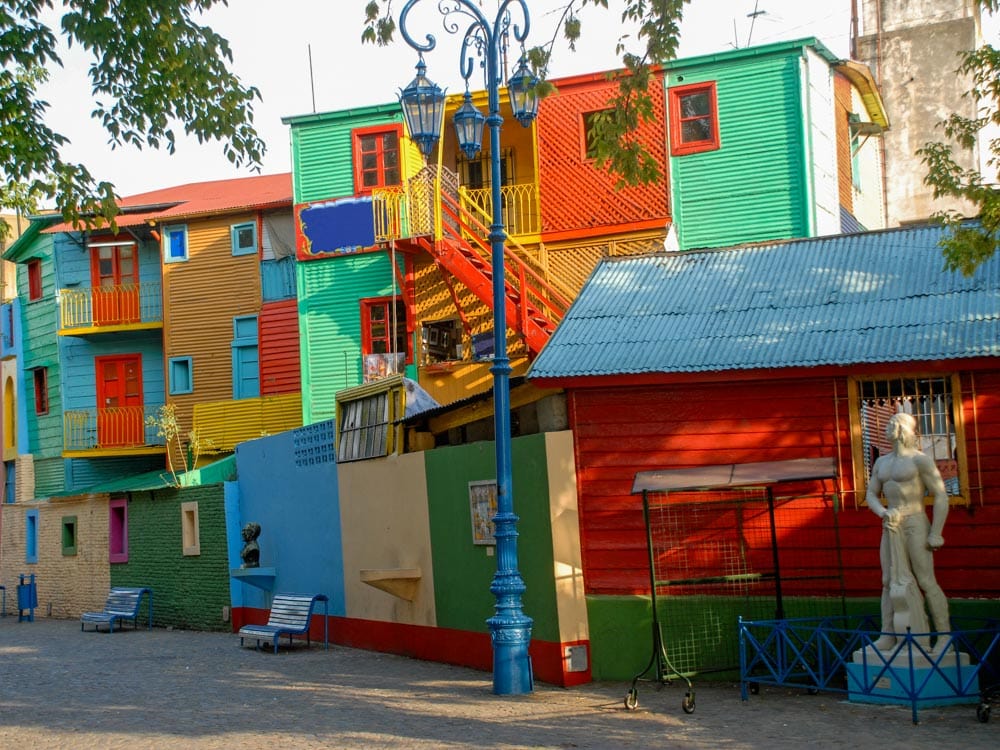
If you’re from the Northern Hemisphere, the first thing to account for when planning your Argentina adventure is the reversed seasons. If you’re from the Southern Hemisphere, then just carry on as normal!
December to February is summer in Argentina, while June to August is winter. Given the vast size of the country, though, you’ll find that the climate can vary massively even within the same province.
In general terms, summer is the best time to visit Argentina if you’re looking for hot weather and constant sunshine. Temperatures in Buenos Aires in December typically reach into the high 60s Fahrenheit (20s Celsius), while in Patagonia, you’re guaranteed excellent hiking conditions.
In the north, the same summer months can bring high rainfall in the tropical regions. If you want to see Iguazu Falls at its peak flow, though, summer is when the waterfall is at its most powerful!
Summer is busy, and if you’d like to avoid the crowds, then spring and autumn still offer great hiking weather in Patagonia. Winter is a good time to visit the north, but Patagonia and the Andes Mountains are difficult to travel around when the weather is cold and icy, particularly if you’re at altitude.
If you love a bit of culture, then December is a great time to experience the festive Argentinian Christmas spirit combined with the height of the summer sun. Semana Santa (the week leading to Easter) is a sacred, spiritual event, while in Buenos Aires, the annual calendar is filled with music, film, and tango festivals, so check out what’s happening when you’re in the city!
Things to Know Before You Go
Immigration.
There are a few important things to know when you’re planning your 2 weeks in Argentina. First up is immigration. If you’re a citizen of most South American countries, then you have the freedom of movement to enter and exit Argentina as you like.
Citizens of the majority of North American and European countries don’t need a visa and are granted 90 days of visa-free access to Argentina on arrival. The same goes for citizens of Australia, New Zealand, South Africa, Thailand, Malaysia, and several other countries. If your country isn’t on the list, then you’ll need to source a visa from your nearest Argentinian consulate.
Spanish in Argentina
The second most important thing to know about is the language. Argentinians speak Spanish. However, the Argentine dialect is heavily influenced by Italian and other European languages brought in by immigrants.
The pronunciation can be difficult to understand compared to other Spanish dialects you might be used to, while the heavy use of slang makes things even more difficult. English isn’t that widely spoken, so bring a Spanish phrasebook to help!
Money in Argentina
The other thing you need to specifically plan for is the economic situation in Argentina. Unfortunately, massive inflation has resulted in the Argentinian peso devaluing in recent years. Official exchange rates haven’t kept pace with black market exchange rates, so you’ll find your foreign currency is worth more, or less, depending on how you pay for things.
The official rate for 1 USD is around 220 Argentine pesos at the time of writing. This is the rate you’ll be given at some banks and hotels, including when you use your card to pay for transactions.
The “Blue Dollar Rate,” as the unofficial exchange rate is called, is almost double this, with 1 USD typically being valued at around 400 Argentine pesos. You can secure this unofficial rate (it’s not illegal to do so) by visiting cambios and Western Union offices, where you can exchange dollars, or other foreign currency, for pesos. You can also wire money to these exchange offices, while increasingly, shops and restaurants will also allow you to pay by card using this unofficial rate.
Getting Around Argentina
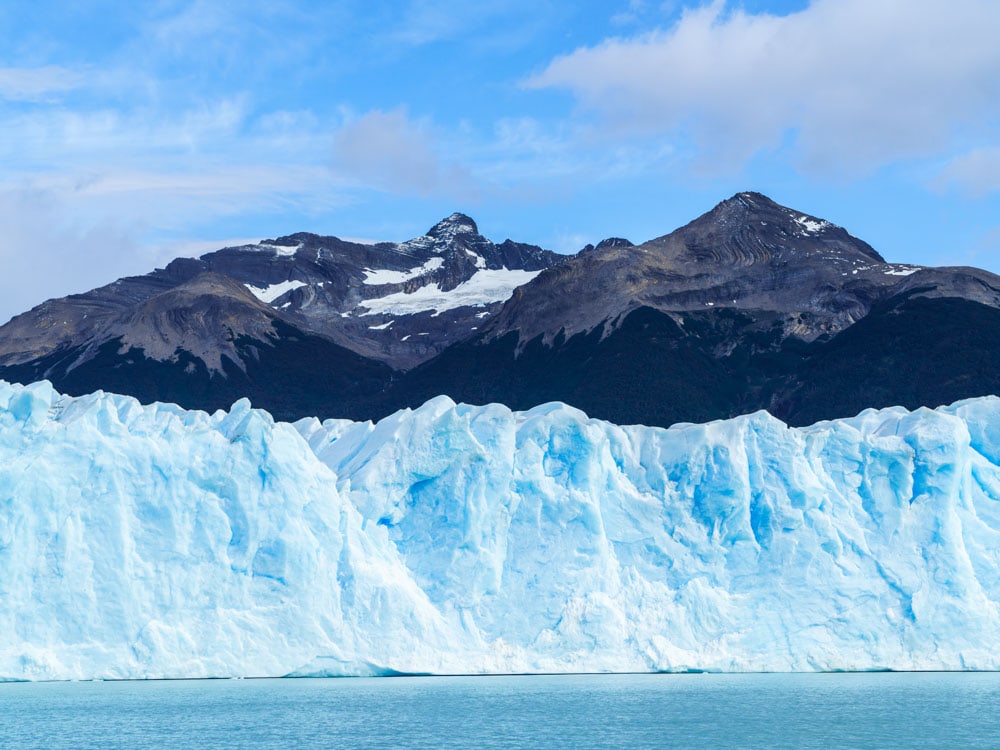
Argentina is sparsely populated and not always that well connected. Almost all international flights arrive and depart from Ezeiza International Airport in Buenos Aires. There are direct connections to most major capital cities in South America, North America, and Europe, with some direct flights to African and Asian countries too.
If you’re flying domestically, you’ll likely need to make your way to Jorge Newbery Airport in Buenos Aires. While there are regular domestic flights from the capital to most Argentine cities, traveling between different cities other than Buenos Aires is often not an option. More often than not, you’ll find yourself flying back to Buenos Aires and transferring to another flight to get to your next destination.
Our itinerary covers a lot of ground, so we’ve planned it around taking domestic flights. However, if you have more time, you can try getting around overland. Because domestic flights can be expensive for Argentinians, the long-distance bus network is well-connected and surprisingly good value given the distances involved.
You can find regular services between all major cities, with night buses offering a long but interesting way to see the country. For the ultimate freedom, why not rent a car or campervan and road trip Argentina?
Argentina Itinerary: 2 Weeks to Explore the Highlights of the Country
Buenos aires – 2 nights.
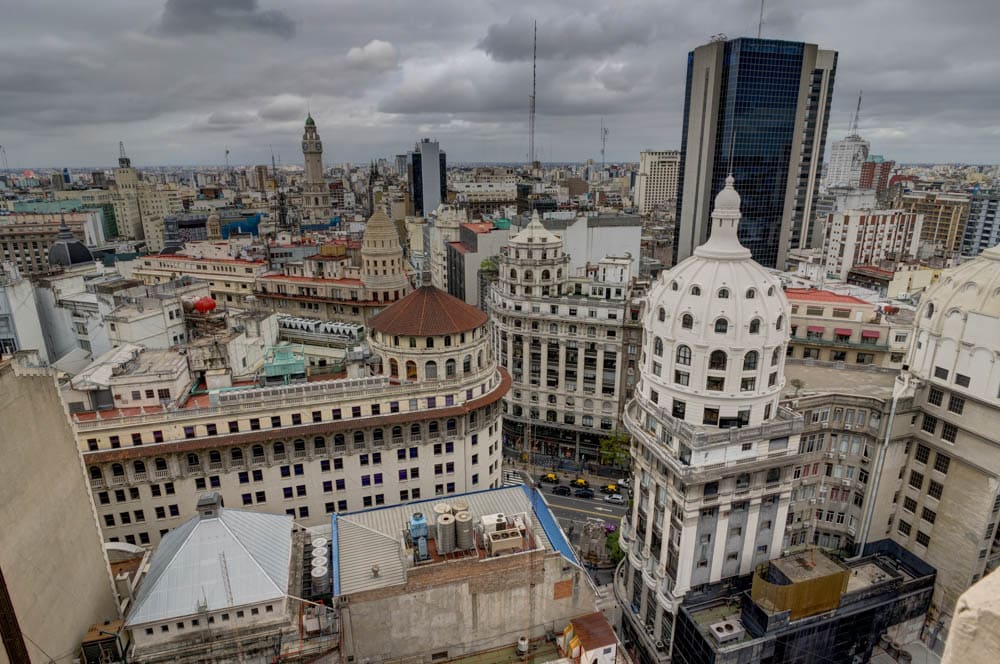
Where else could your Argentinian escape begin, other than the eclectic capital city? If you’ve always had a burning desire to tango, then Buenos Aires will fill your soul with joy because few other cities in South America can match the Argentine capital for its flair and penchant for the good life.
Hop On, Hop Off City Bus Tour
Plaza de Mayo
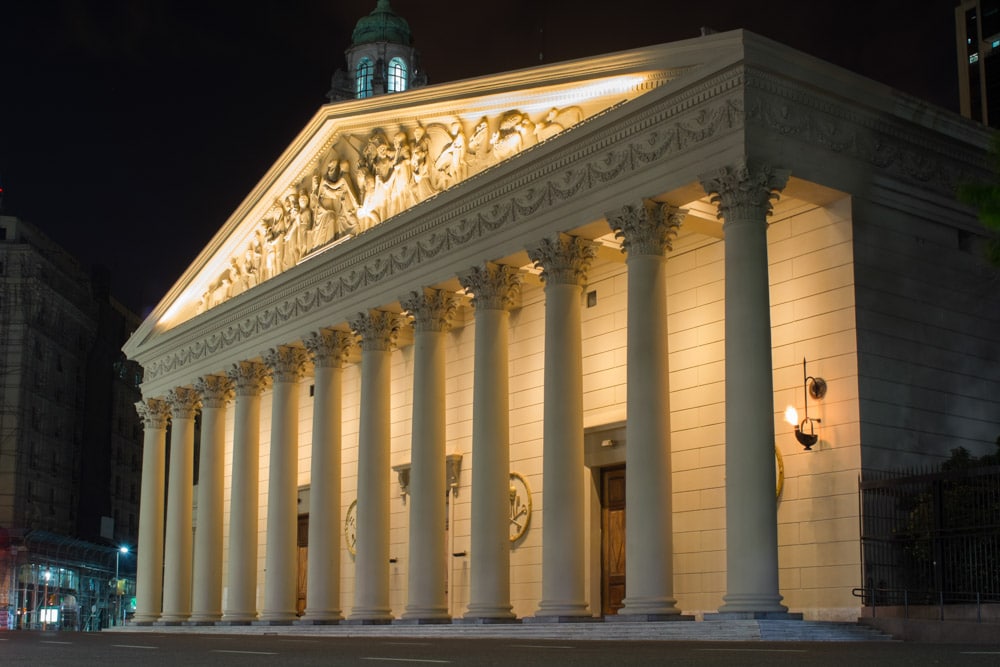
We hate to break it to you, but with so many more places to see in Argentina, you’ve only got time to see the highlights in Buenos Aires. You’ll want to start downtown, where the Plaza de Mayo is at the heart of the capital’s history and contemporary politics.
Visit the Major Sites in Buenos Aires
Here you’ll find the Metropolitan Cathedral of Argentina , the Pirámide de Mayo, and the Casa Rosada (the pink residence of the sitting president). There are grand avenues and plazas to explore, and we recommend taking a walking tour to learn more.
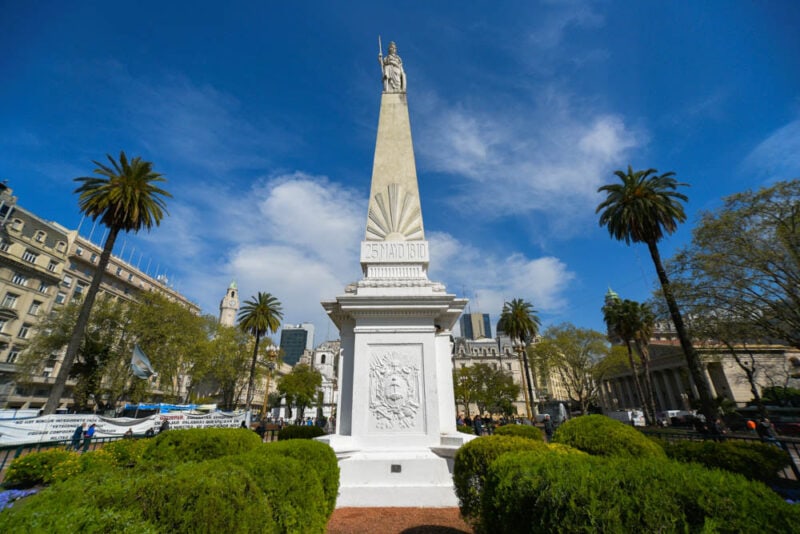
Buenos Aires is packed with culture, and art lovers will want to save time for a tour of the National Museum of Fine Arts . The Teatro Colón is one of the finest theaters in the world, and you can join daily tours that delve into its beautiful interiors, while El Ateneo Grand Splendid is another spectacular theater that’s been repurposed into an unmissable bookshop.
Enjoy Access to Teatro Colón
Visit Recoleta Cemetery to experience the extravagance of Argentina’s elite families, who have vast crypts and vaults within the city’s most prestigious burial ground. Take a tour of the cemetery to bring Argentinian characters to life, then explore the rest of Recoleta, an affluent part of the city that’s known for its high-end, Parisian-style architecture.
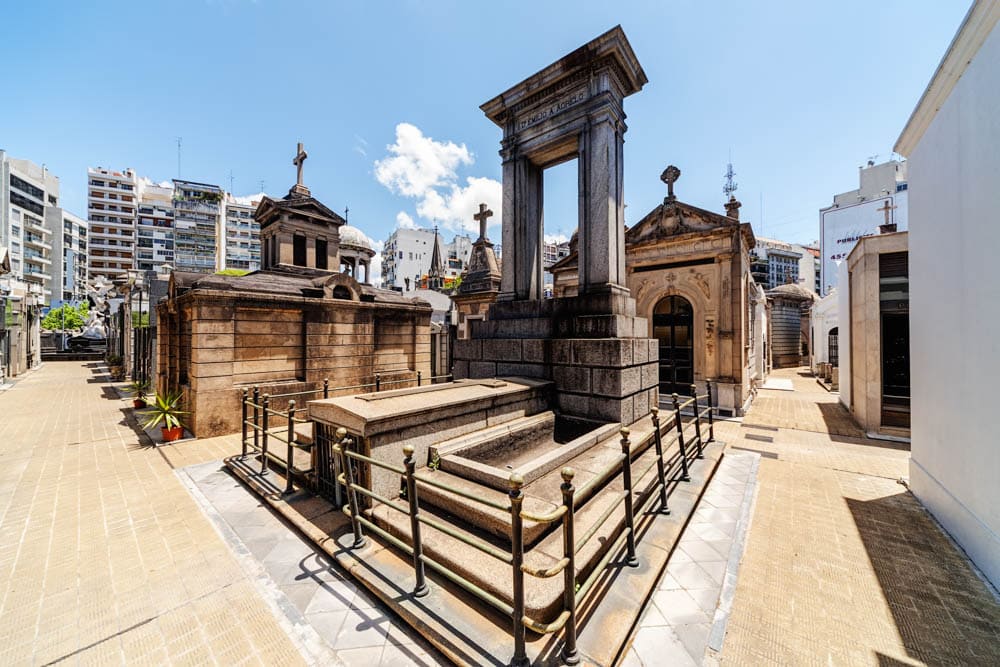
Appreciate the Artwork in Recoleta Cemetery
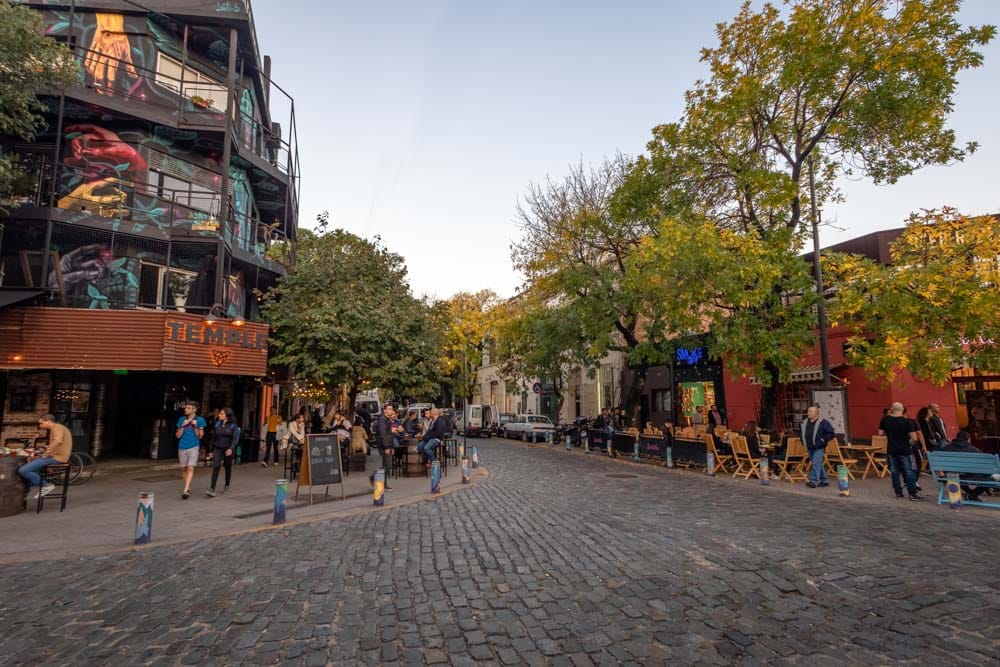
You’ll want to devote at least one afternoon or evening to Palermo. This is the hippest district in Buenos Aires, and you can spend hours walking through leafy suburbs and plazas, stopping for craft beers or wine tastings as you stroll.
Soccer fans can’t miss a trip to La Boca, the fabled home of Boca Juniors (especially given Argentina’s win in the 2022 World Cup Finals!). La Boca is a traditionally working-class district that’s become a tourist magnet in recent years, being home to colorful streets and quirky art museums.
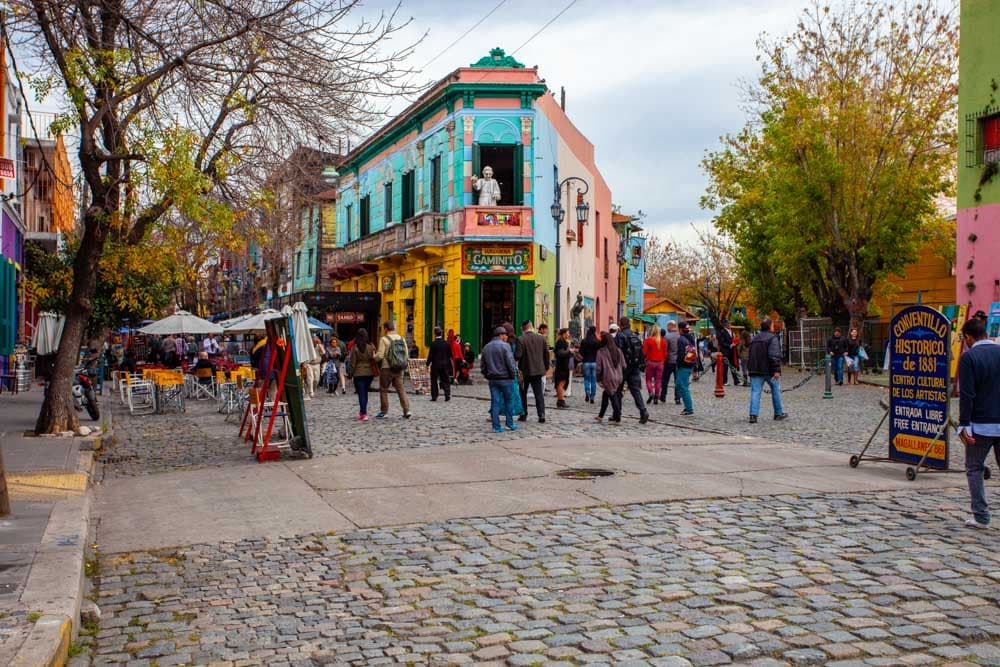
And, of course, you can’t miss out on a night of tango when you’re in Buenos Aires. In fact, the tango is thought to have developed in La Boca, where you can catch open-air tango performances every evening on La Caminito. There’s a World Tango Museum to visit in Buenos Aires, or you could get yourself into the rhythm with a few expert-led lessons while you’re in the capital.
Tour Around La Boca
Iguazu Falls – 2 nights
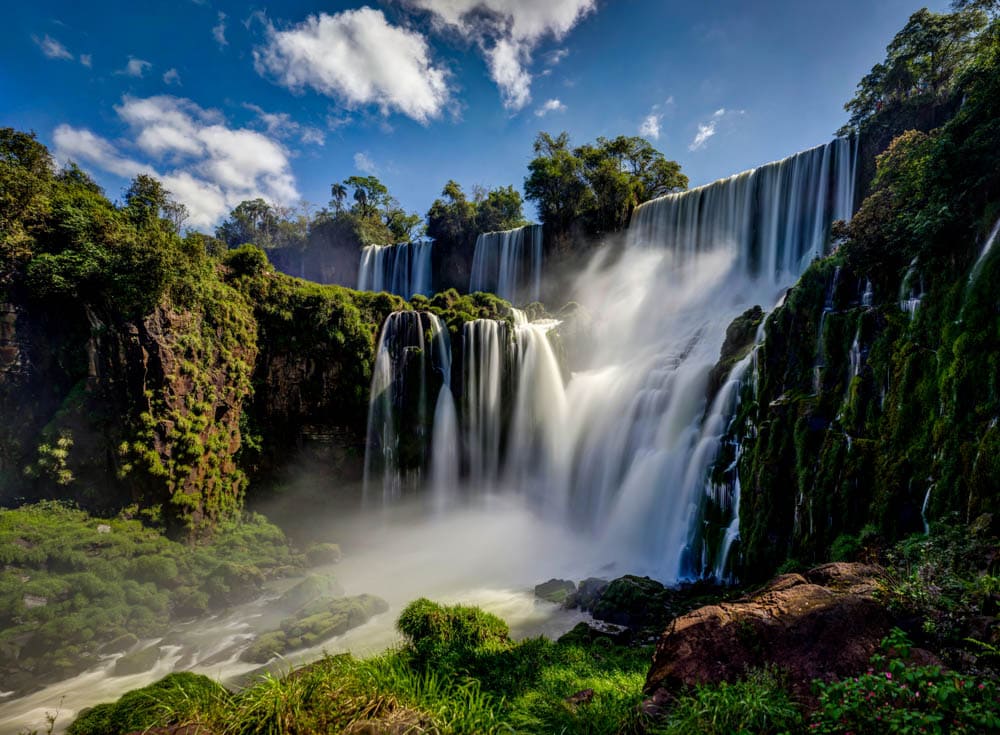
Your next stop is one of the top places to visit in Argentina: Iguazu Falls. This thunderous natural sight is considered to be the largest waterfall in the world; so large, in fact, that it marks the border between Argentina and Brazil.
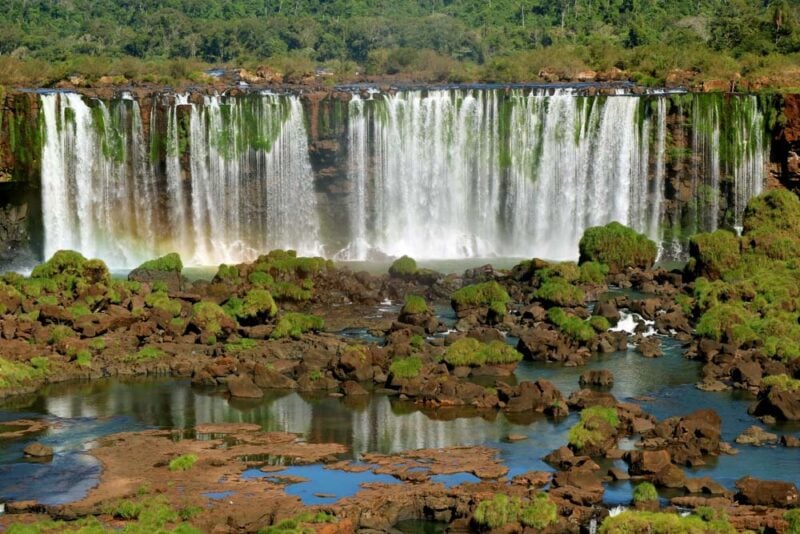
It’s a two-hour flight north from Buenos Aires, and you’ll be based for the next two nights in Puerto Iguazu on the Argentinian side of the waterfall. This area forms a tri-point between Argentina, Brazil, and Paraguay, and from Puerto Iguazu, you can see where all three countries meet (it’s a great place to visit if you love your geography trivia!).
Iguazu Falls is divided into upper and lower sections, and while the tallest drop is a mere 269 feet high, the different tiers extend horizontally for around 2 miles in total. You’ll want to start by exploring the Argentinian section of the waterfall, including the iconic “Devil’s Throat,” which is easily the most powerful drop on the river.
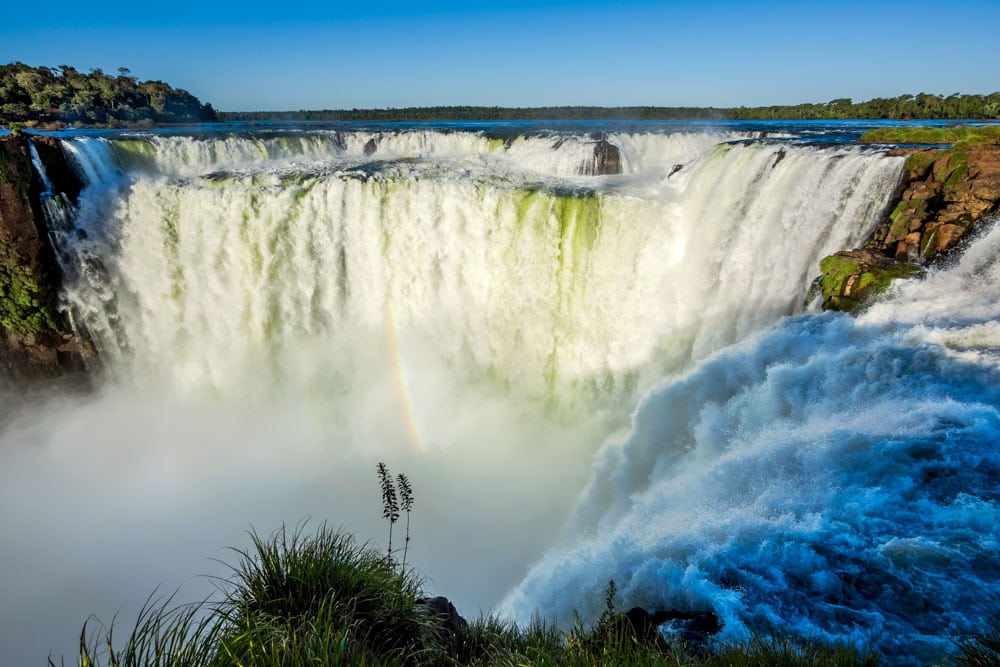
Take the quirky “Rainforest Ecological Train” from Puerto Iguazu, which winds through the jungle to hiking trails and viewpoints overlooking the waterfalls. You can also join a tour from Argentina to Brazil, giving you the chance to see Iguazu Falls from another international perspective.
Enjoy a Boat Ride in Iguazu Falls
Salta – 2 nights
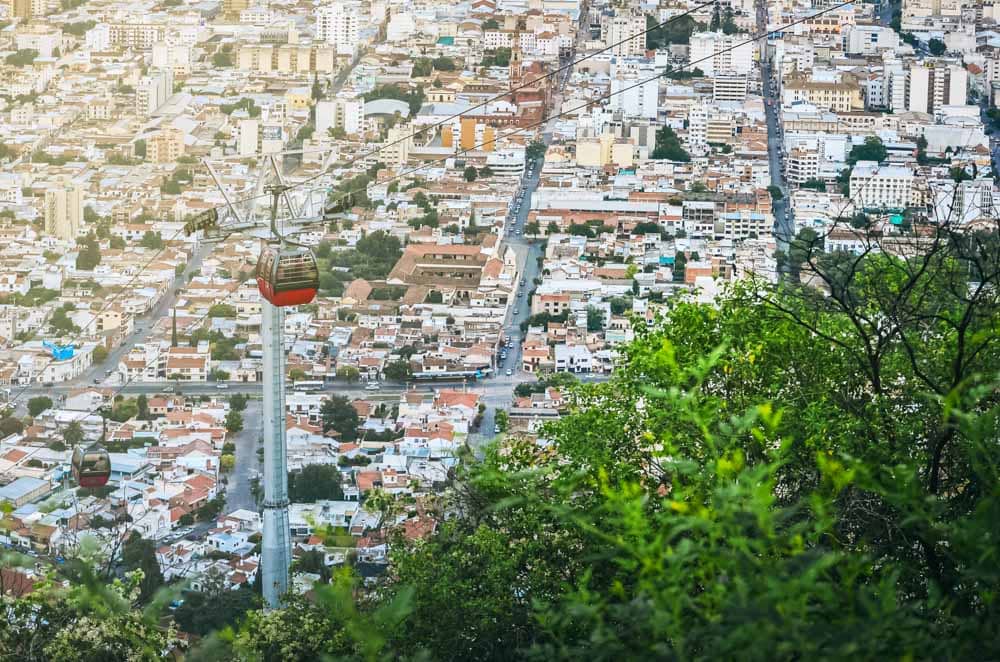
Your next stop is Salta, a colonial-style city dating back to the late 16th century that’s in Argentina’s northwest. There are several direct flights a week from Puerto Iguazu to Salta, and you’ll prefer the short hop on a plane to the 20-hour drive.
Salta’s drier climate is a sharp change from the tropical jungles of Iguazu Falls, and the province is best known for its desert-like scenery and stark mountain ranges. Take a historical tour of the city first, where you can learn about the Spanish founding in 1582 and the Inca culture that existed here long before Europeans arrived. In the excellent Museum of High Altitude Archeology , you can even see the eerily well-preserved remains of Inca mummies found in the Andes.
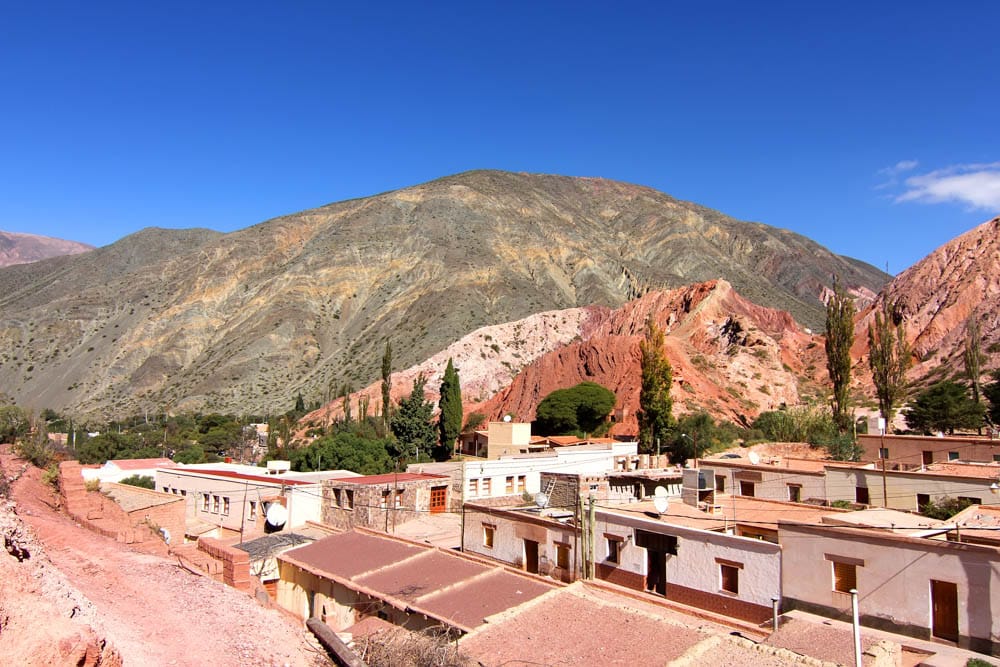
See the Historical and Natural Sights of Salta
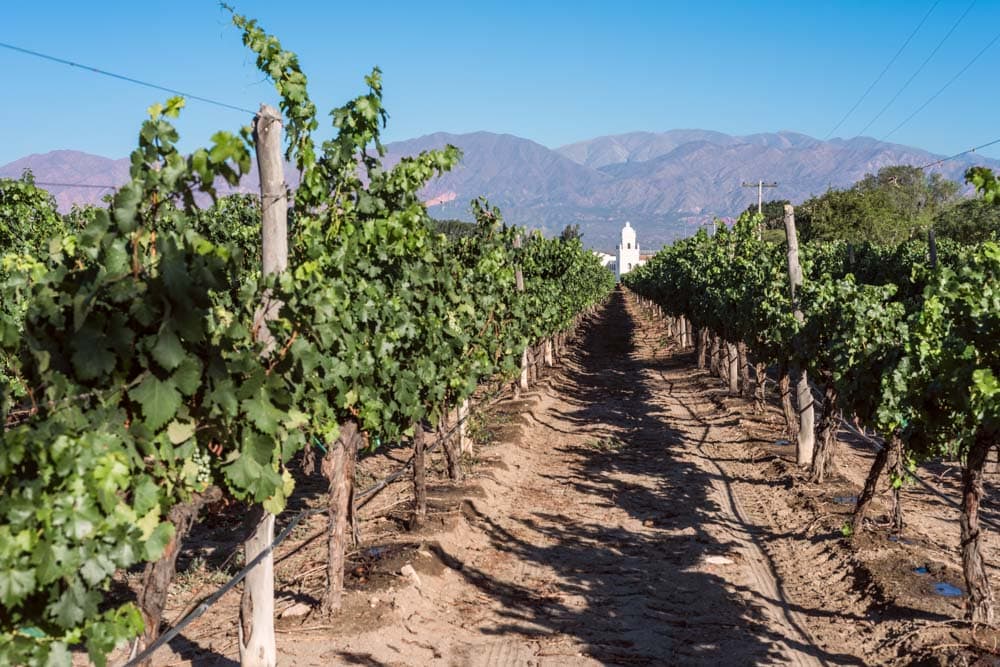
With limited time, you’ve now got to make a choice. Salta is famed for both its wine and its salt flats, but you’ll only have the chance to see one unless you can extend your 2-week trip to Argentina. To the south, you’ll find Malbec-growing wineries in Cafayate. The beautiful valleys and ranches are the quintessence of Gaucho culture, and the scenery is almost as stunning as the wine and food.
Taste the Best Wines from Salta
To the north, you’ve got the Salinas Grandes, the third-largest salt flats found anywhere in the world. With the Inca culture and salty scenery, this part of the country is more like Bolivia or Chile than Argentina, but it’s easily one of the most astounding sights you can add to your Argentina itinerary. Nearby, you can also visit the unusually colorful mountains of Quebrada de Humahuaca, which is best described as a rainbow in the desert.
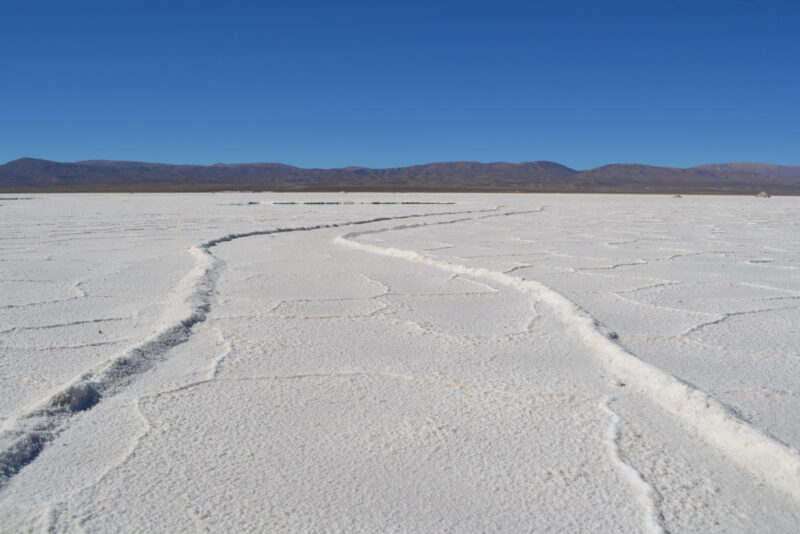
Explore Salinas Grandes & Quebrada de Humahuaca
Mendoza – 2 nights
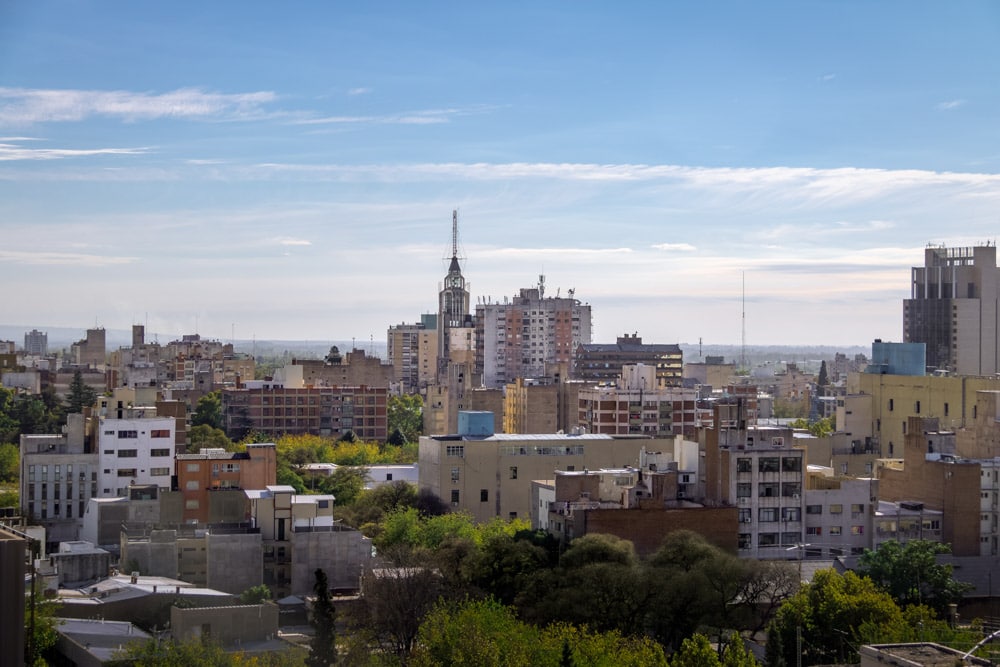
For wine and food lovers, Mendoza is one of the best places to visit in Argentina. This is Argentinian wine country, and for the next two days, you’ll have little time for anything other than eating and drinking!
Discover the City of Mendoza
Museums and Galleries
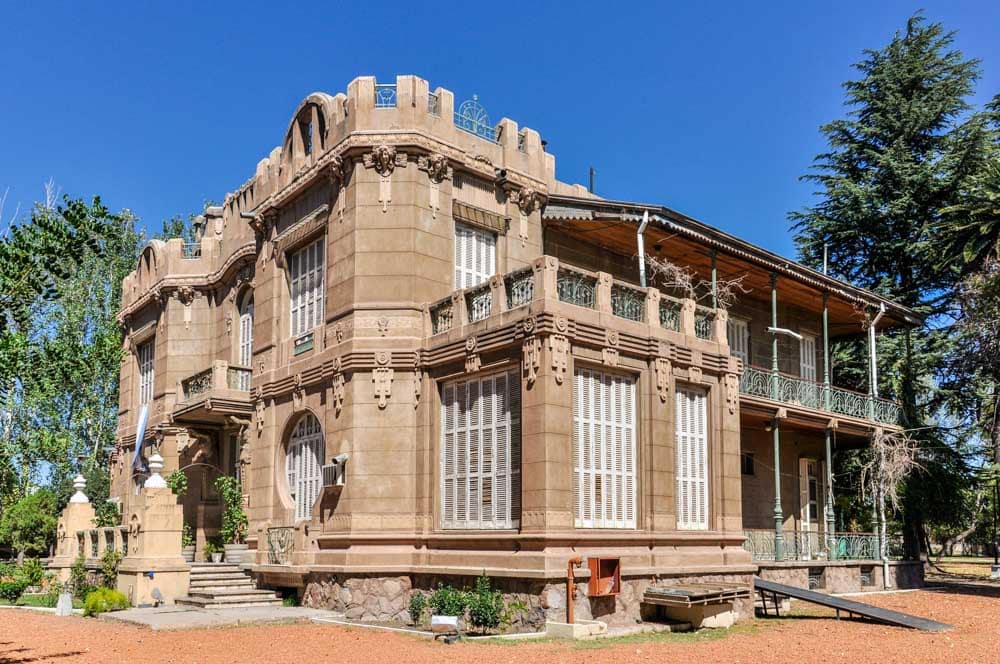
Founded by the Spanish in 1561, Mendoza is one of Argentina’s oldest cities. The colonial-era architecture still dominates the city center, and you can learn more about Mendoza’s history by visiting the Museo de Área Fundacional or the Museum of Natural Sciences and Anthropology. In Maipu, just outside the city center, you can also visit the excellent Museo Nacional del Vino , where you’ll delve into the long history of wine production in Argentina.
Wine Route of Mendoza
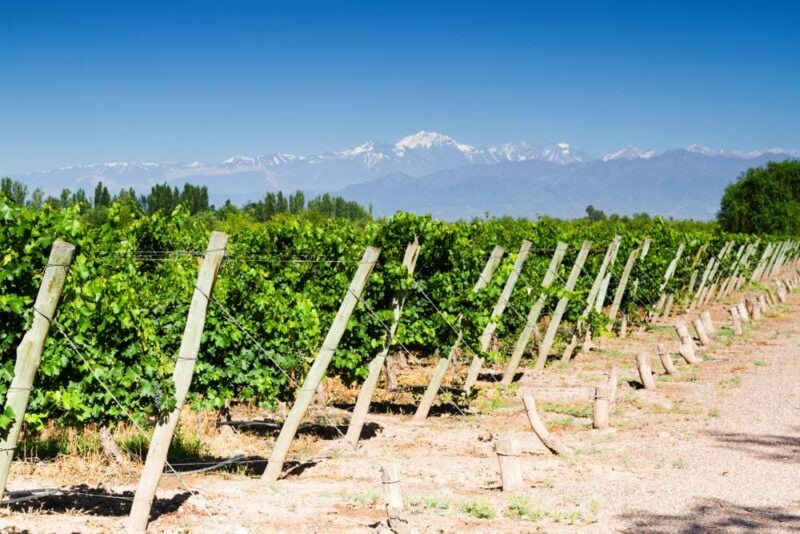
This museum is a great introduction to Mendoza’s wine scene, but nothing beats the real thing. In the city proper, you can join a tour of the best bodegas and wine bars but save space for a trip along the Wine Route. The best wineries are renowned for their Malbecs, and there are many to choose from, including The Vines of Mendoza , Botega Catena Zapata , and El Enemigo .
Taste the Best Wines of Mendoza
Cerro Aconcagua
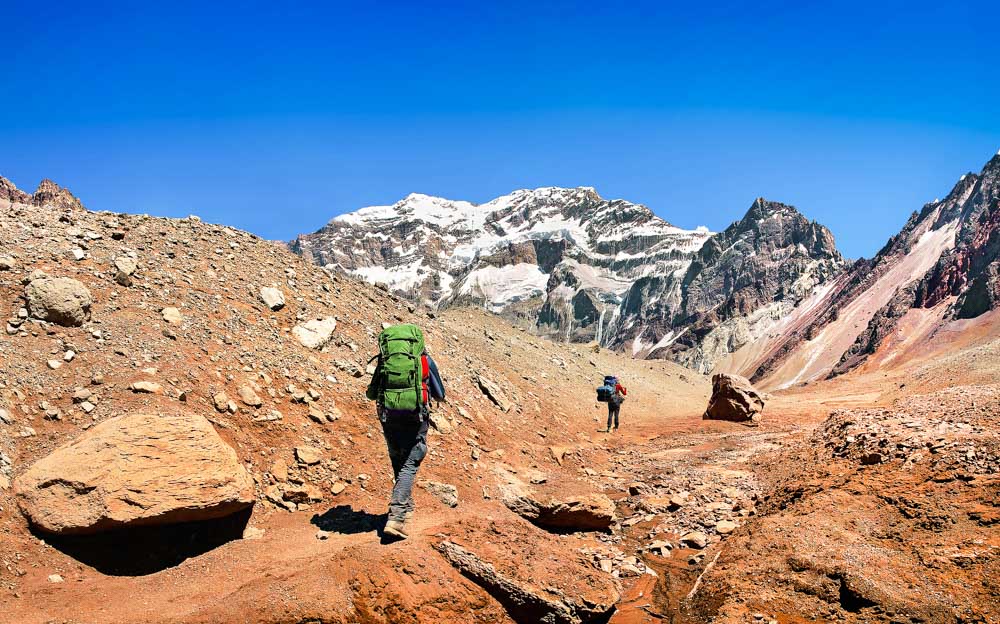
Mendoza is also located in the foothills of the Andes, which means there’s plenty of excellent hiking nearby. You won’t have time to climb it on this trip, but Mendoza is the launch pad for mountaineers tackling Cerro Aconcagua, the tallest mountain in South America. You can visit Parque Provincial Aconcagua on a day trip, though, for a glimpse of the peak on the Chilean border.
Enjoy Views of Aconcagua
San Carlos de Bariloche – 2 nights
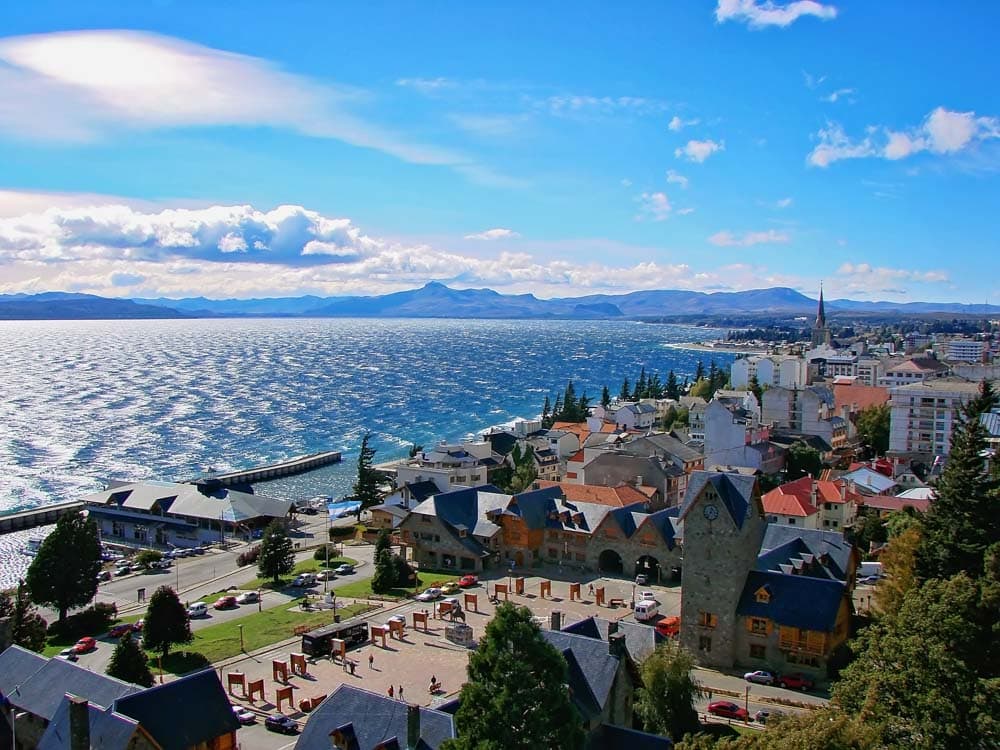
After overindulging in red wine and red meat in Mendoza, you’ll appreciate the replenishing mountain air of San Carlos de Bariloche, the next stop on your 14-day Argentina itinerary. Bariloche (as the locals prefer to call it) is found in Rio Negros province, and given it’s a 20-hour bus ride south of Mendoza, you might prefer to fly via Buenos Aires!
Tour the Road of the Seven Lakes
Lago Nahuel Huapi
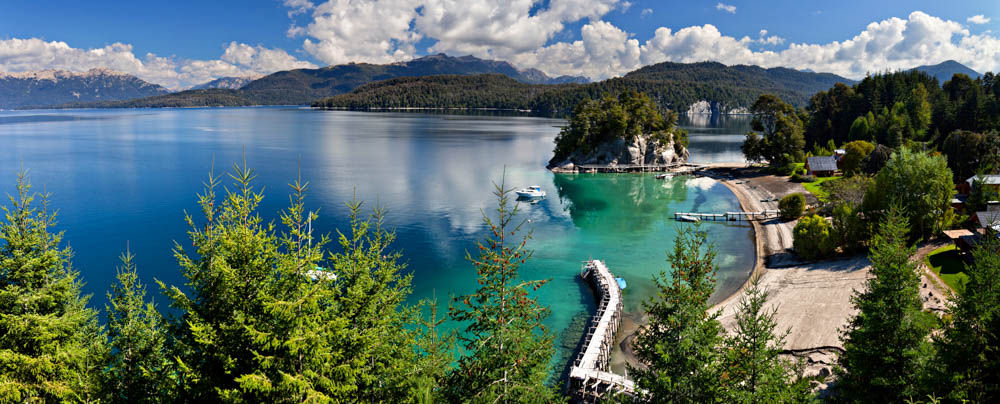
Bariloche is where Argentinian Patagonia really begins, and you’ll love the alpine climate, the lakeside location on the banks of Lago Nahuel Huapi, and the small-town vibes of this provincial city. Bariloche is known for being beautifully nestled on the slopes of the Andes, and the mountainous scenery and Swiss-inspired architecture ensure that you’ll often hear it referred to as Argentina’s Switzerland.
Throw in some fantastic chocolatiers – including Rapa Nui , which was established here by Italian immigrants in the early 1900s – excellent cafes, and authentic pilsner beers brought in by German settlers, and there’s a seriously European feel to Bariloche.
Sail Down the Nahuel Huapi Lake
Isla Victoria
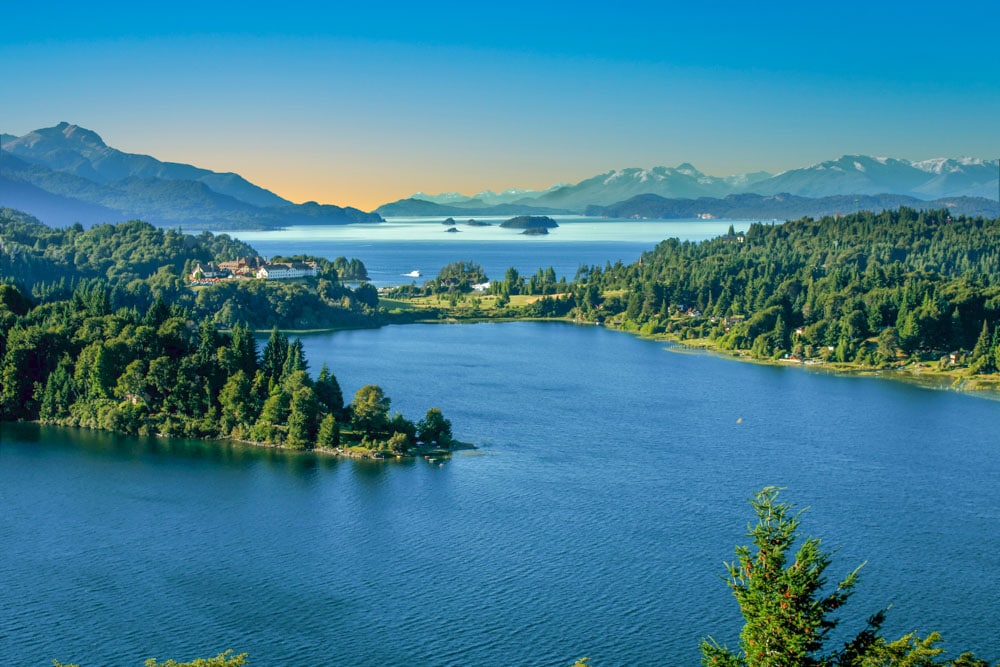
On the other side of history, though, you can learn more about the indigenous Mapuche culture at the Museo de la Patagonia or by joining a fascinating “Indigenous Peoples in Patagonia Walking Tour.” Visit Isla Victoria, and you can even see millennia-old cave paintings made by Patagonia’s first inhabitants.
Take a Boat Tour on Isla Victoria
Parque Nacional Nahuel Huapi
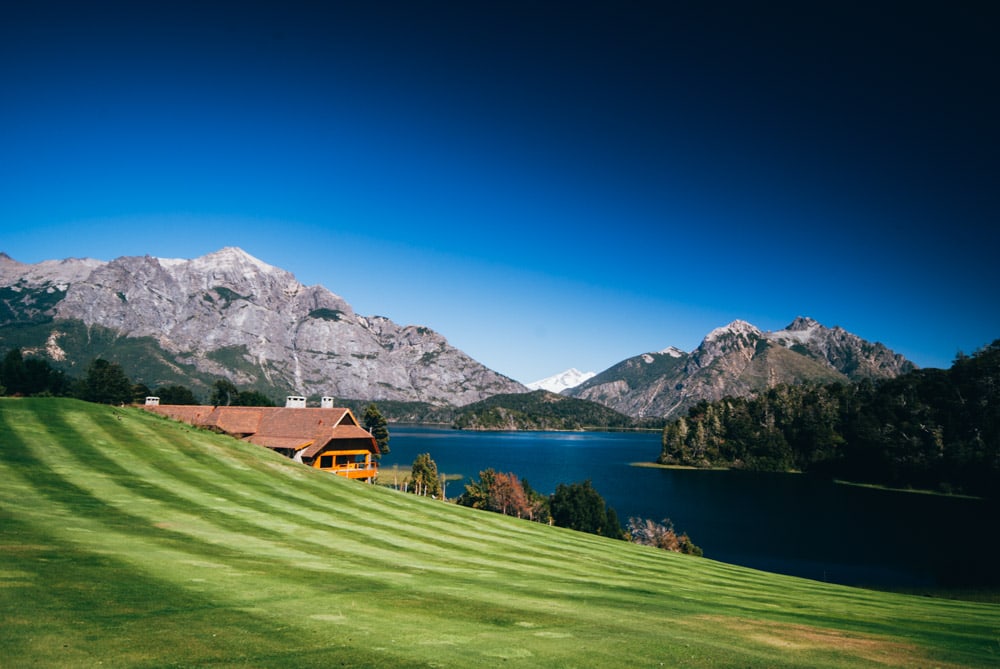
While you could spend the next 2 days eating chocolate and drinking beer, Bariloche is also a wonderful place for your first taste of Patagonian nature. Parque Nacional Nahuel Huapi protects the spectacular glacial lake you’ll see from Bariloche, and there are fantastic opportunities for hiking, mountaineering, and, in winter, skiing.
El Calafate and El Chalten – 3 nights
El calafate.
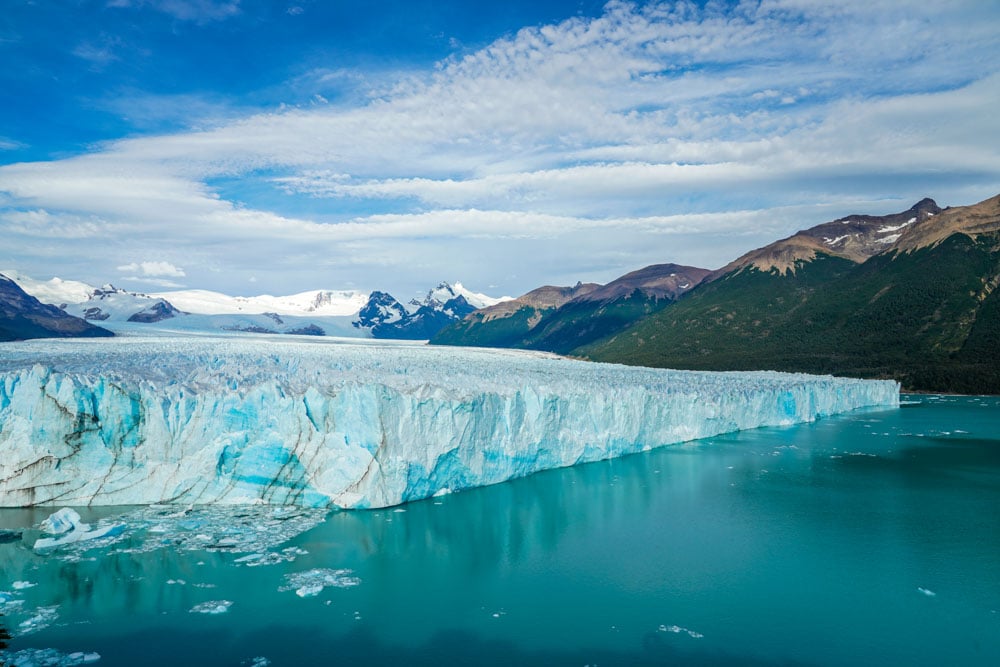
Your Argentinian journey now takes you south, and we mean far, far south because your next stop is Patagonia. From San Carlos de Bariloche, you’ll need to hop on a flight to Buenos Aires, then transfer to another flight in order to reach El Calafate.
Located in southern Santa Cruz Province – right on the border with Chile – El Calafate is your gateway to the classic mountain peaks and glaciers of the Andes. This is Argentinian Patagonia at its best, and the only negative is that you’ve only got 3 days to enjoy it!
Discover the Beauty of El Calafate
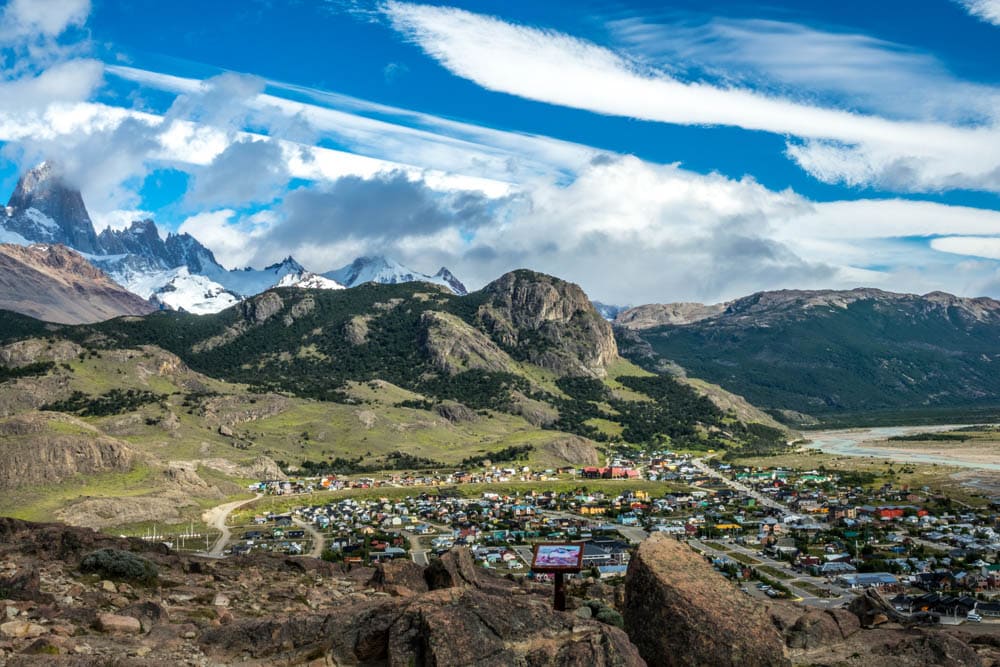
You could spend weeks hiking in Patagonia, but without the luxury of time, you’ll want to make straight for the highlights. First up is El Chalten. It’s a 3-hour car ride from the airport at El Calafate, which takes you along the banks of Lago Argentino and then Lago Viedma and into the heart of Los Glaciares National Park.
Enjoy a Day Trip to El Chalten
Your next 2 days are all about absorbing the spectacular mountain scenery, and there are hikes and tours from El Chalten that are suitable for all ages, abilities, and levels of fitness. The icy jewel in Patagonia’s crown is Mount Fitz Roy, a distinctive peak that rises high above El Chalten.
The tough Monte Fitz Roy Trek takes you to beautiful viewpoints at Laguna de los Tres and can be tackled in a long day. The easier Cerro Torre Trek takes around 6-8 hours and offers spectacular views of the distinctive peak from further away.
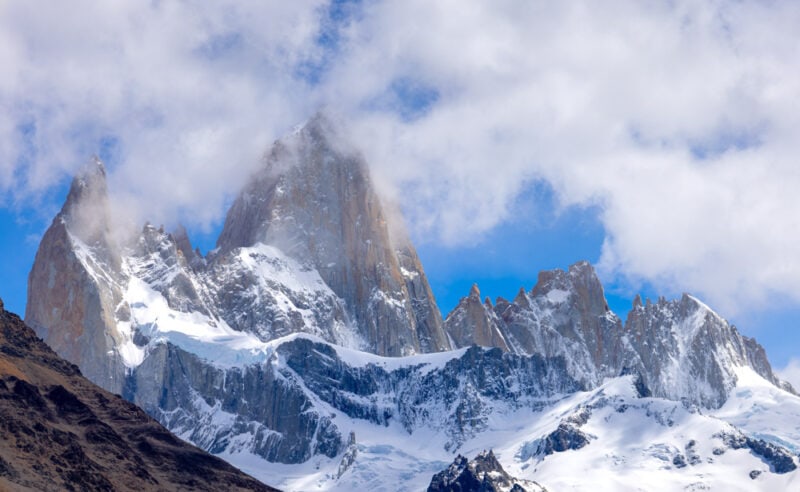
Head back to El Calafate once you’ve had your fill of the hiking in Los Glaciares National Park. From El Calafate, you’ll then join a tour of the Perito Moreno Glacier, one of the ultimate must-see places in Argentina. This huge, rumbling glacier straddles the border with Chile and is the focal point of the Perito Moreno National Park. You can sign up for a boat tour, or you can book a “mini-trekking tour,” which takes you onto the ice itself.
Join a Trekking Tour
Buenos Aires – 1 night
Tierra del fuego.
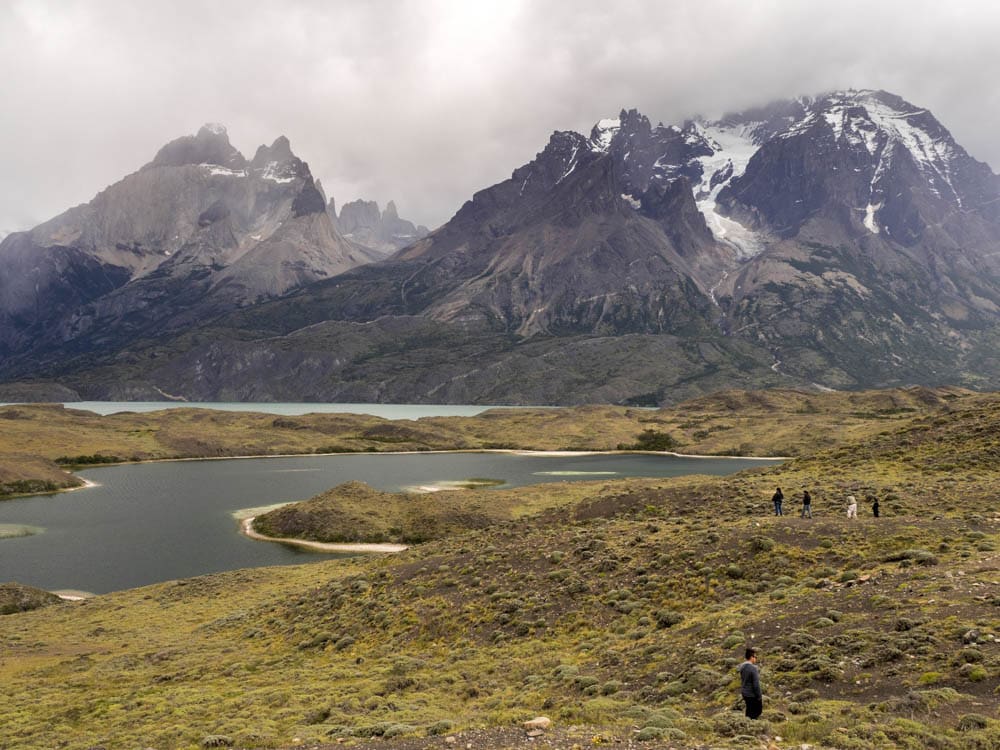
El Calafate is a long way south of Buenos Aires, but if you’ve got a few extra days to spend in Argentina, then you’re in a prime position to extend your trip by visiting Tierra del Fuego. Literally translated as the “Land of Fire,” this is the southern extremity of Argentina. Beyond this, there’s nothing but churning ocean waves until you reach Antarctica.
Tour Tierra del Fuego National Park
Puerto Madryn
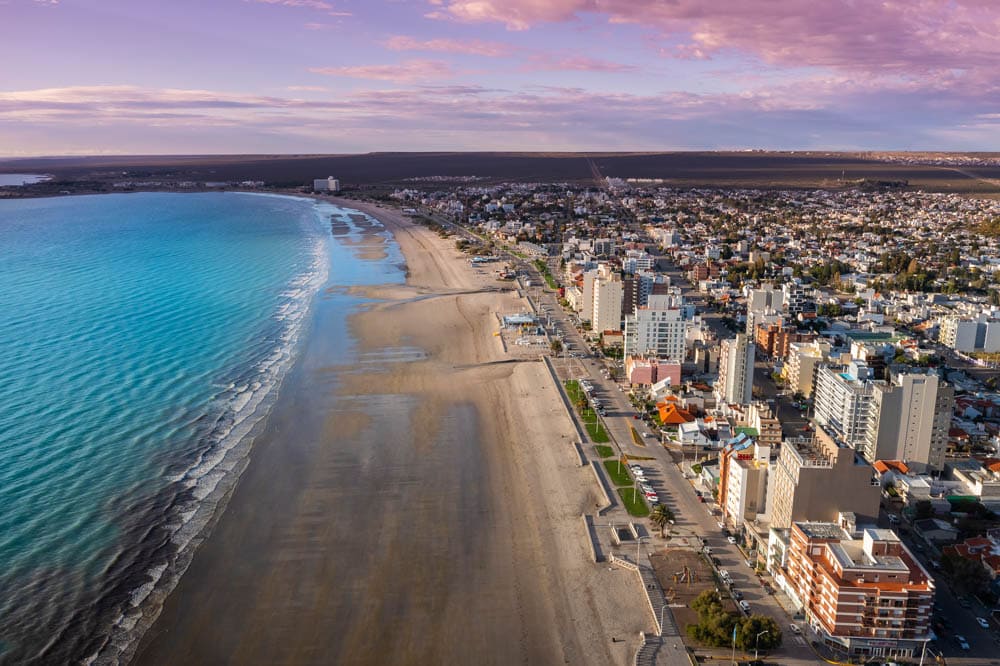
You could also visit Puerto Madryn on the coast of Chubut Province for penguins, whales, and sea lions, see the beaches of Mar del Plata, or road trip through the Patagonian Steppe in northern Santa Cruz.
Whenever your trip draws to a close, we always recommend spending at least one extra night in Buenos Aires before flying home. That’s because Buenos Aires’ international airport is located some drive away from the domestic airport, and you can’t always count on flights arriving on time. So rather than cutting it close with short connections, why not just spend an extra evening tangoing in Buenos Aires?
Explore Puerto Madryn
There you have it! That’s our perfect 2-week Argentina itinerary. Where will you be traveling during your trip to Argentina?
Planning a trip to Argentina? Check out our favorite books and travel guides!
SHARE THIS ON PINTEREST
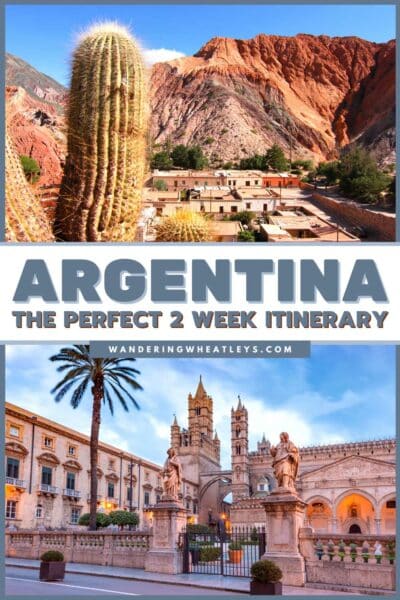
About the Author:

Richard is an award-winning travel writer based in Southwest England who’s addicted to traveling off the beaten track. He’s traveled to 75 countries and counting in search of intriguing stories, unusual destinations, and cultural curiosities. Richard loves traveling the long way round over land and sea, and you’ll find him visiting quirky micronations and breakaway territories as often as he’s found lounging on a beach (which is a lot). When he’s not writing for BBC Travel, National Geographic, or Lonely Planet, you can find Richard writing for the Wandering Wheatleys or updating his off-beat travel blog, Travel Tramp.
View all posts
Related Posts
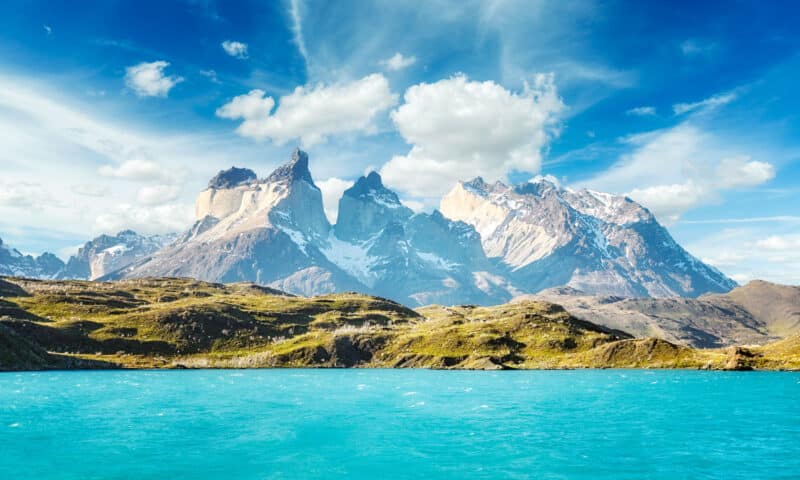
The 15 Best Vacation Destinations in December (2023)

16 Things Football Fans Must Do While Visiting Buenos Aires
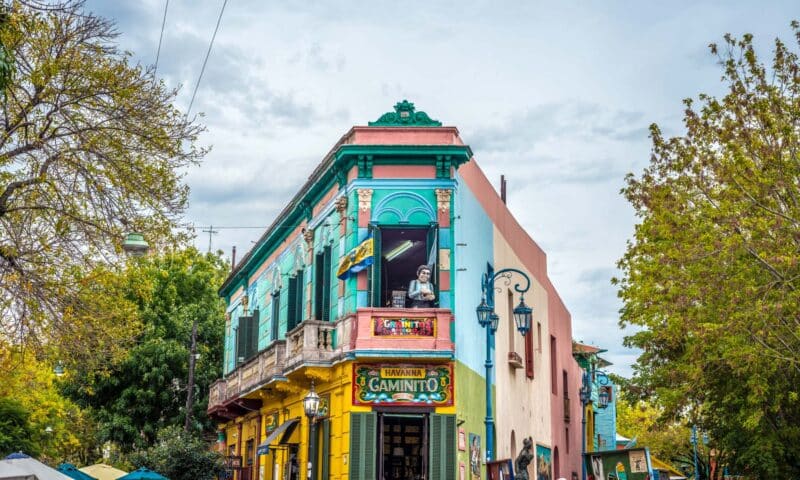
The 12 Coolest Boutique Hotels in Buenos Aires, Argentina
Leave a comment cancel reply.
Your email address will not be published. Required fields are marked *
Protect Your Trip »
Best places to visit in march 2024.
Traveling in spring certainly has its perks. If you can brave cooler temperatures and the occasional rain shower, you'll likely be rewarded with fewer crowds and lower travel rates in many popular destinations, ranging from palm-fringed beaches to cities big and small. U.S. News considered factors like affordability, things to do, must-visit attractions, overall appeal and more to determine the best places to visit in March. Don't forget to cast your vote below to have a say in next year's ranking.
Iguazu Falls
Cinque terre, vancouver, canada, galapagos islands, big bend national park, luang prabang.

Visiting during Barcelona's shoulder season has its perks, including smaller crowds and lower rates on airfare and accommodations. Plus, average temperatures hover near the low 60s in March, so you won't overheat while exploring must-see sights such as Barri Gòtic (Gothic Quarter) and Park Güell, a whimsical park designed by Antoni Gaudí. What's more, you can explore other popular Gaudí landmarks like Casa Batlló and Basílica de la Sagrada Família without hordes of tourists blocking your view. When you've worked up an appetite, venture to the quiet Gràcia neighborhood to sample authentic Catalan cuisine on a food tour.

Straddling the border of Argentina and Brazil, Iguazu Falls is one of the largest waterfall systems in the world. While the natural beauty of the falls will take your breath away year-round, travelers who plan a trip in March enjoy the added bonus of fewer crowds, pleasant temperatures and cheaper accommodations. Remember to set aside time in your schedule for Iguazu's most dramatic feature, Garganta del Diablo (Devil’s Throat), a semicircular chasm fed by 14 of Iguazu's waterfalls.

Although March falls within Maui's peak season, its excellent weather (think: average daytime temps in the high 70s and low 80s) and prime conditions for water sports and wildlife viewing make it a superb time to visit. Experienced surfers can head to popular surf spots like Ho'okipa Beach and Pe'ahi (dubbed "Jaws") to hang ten, while beginners stick to the waves at Kaanapali Beach. Meanwhile, animal lovers can look for migrating humpback whales during a whale watching cruise. To save some coin, book your Maui hotel and airfare at least a few months in advance.

These five towns on the Italian Riviera are beautiful any time of year, but there are a few benefits to visiting in March. The cooler weather (think: average temperatures sit in the high 50s) makes it a perfect time to hike Cinque Terre's famous trails, although rain may cause some of the trails to close at times. Additionally, many local shops reopen after closing for winter. Since spring is one of Cinque Terre's shoulder seasons, you'll find fewer tourists this time of year, allowing you to comfortably explore the area on foot or by boat.

March marks the end of Cape Town, South Africa's busy summer season, when temperatures begin to drop and crowds thin out. Tourists who plan a March vacation will be rewarded with cheaper rates and pleasant temps in the mid-70s, perfect for exploring top sights like Table Mountain and Camps Bay Beach. Plus, fall kicks off Cape Town's wine harvest, which makes it a great time to explore the world-renowned Constantia Valley wine region . Many festivals and events are also held throughout the month, including the Cape Town Carnival.

Situated between two of Utah 's five main national parks, Moab is an outdoor adventure hub known for its awe-inspiring red rock formations. Travelers can admire them during visits to Arches National Park (where the world's densest concentration of natural sandstone arches resides) and Canyonlands National Park (which is the largest national park in the state). Travelers who time their trip for the beginning of the month will have the best chance of avoiding crowds while still enjoying comfortable weather in the 50s and 60s. Other must-do March activities include hiking, rock climbing, off-roading and camping.

Whether you're enjoying a show at the Vancouver International Dance Festival or admiring cherry blossoms in Queen Elizabeth Park, there are plenty of reasons to visit Vancouver in March. Spend your time on a walking or biking tour of popular neighborhoods like Granville Island and Yaletown, then ride the Skyride gondola to the top of Grouse Mountain for breathtaking views of the city. March temperatures in this Canadian vacation destination are mild in the low 50s, and although you'll likely experience some rainfall, this is a great time to score big on hotel deals.

The reasons for traveling to this German city in March are multifold. Although you'll have to deal with some chilly weather (average temperatures sit in the high 40s), visiting during this shoulder season means fewer crowds and lower prices. March also brings the city's annual Starkbierfest event, a traditional Bavarian beer festival, and St. Patrick's Day, one of the largest cultural events in Munich. When you're not engaging in the festivities, spend the rest of your time sightseeing at famous attractions like St. Peter's Church and the Munich Residenz, the largest city palace in Germany.

While you can spot wildlife in the Galápagos year-round, March is nesting season for animals like green sea turtles, iguanas and red-footed boobies. Keep an eye out near the water, too, as sea lions are known to hang on the beaches. And though March falls within the wet season (you'll want to bring an umbrella), there should still be ample warm, sunny days to enjoy the beach, particularly toward the end of the month.

Boasting 150-plus miles of hiking trails, Big Bend National Park in southwest Texas appeals to travelers with an affinity for the outdoors. Observe wildlife (including more than 450 species of birds), kayak along the Rio Grande or explore Big Bend while horseback riding. Keep in mind that spring is the park's busiest season, so you won't be the only one admiring the spectacular mountain views. Plan accordingly by allotting extra time for waiting in lines and booking your trip accommodations far in advance.

One of Cozumel, Mexico's biggest draws is its abundance of aquatic activities. The country's largest Caribbean island is one of the best places to scuba dive thanks to its clear water and proximity to the world's second-largest barrier reef. To get in the water, head to Chankanaab Adventure Beach Park to dive, snorkel or swim with dolphins. If you'd rather stay dry, sign up for a glass-bottom boat tour or lounge on one of the island's white sand beaches. Because March is outside the Atlantic hurricane season, you'll enjoy plenty of warm, dry weather.

While the northern half of the world is entering spring, Southern Hemisphere destinations like Sydney are just beginning their fall season. This means travelers will encounter pleasant weather in March (average temperatures hover in the high 70s) that is perfect for taking in some of Sydney's most iconic landmarks, such as the Sydney Harbour Bridge and the Sydney Opera House. Other must-do activities include surfing and sunbathing at Bondi Beach and strolling through the Royal Botanic Garden Sydney, Australia's oldest botanical garden.

Visit Punta Mita, Mexico, in March if you want to relax while on vacation. This former fishing village in western Mexico's Riviera Nayarit area is now renowned for its opulent resorts, world-class golf courses and beautiful white sand beaches. Punta Mita's warm weather and clear blue water also make it an excellent place to go scuba diving, surfing and Jet Skiing. What's more, March is one of several months when humpback whales migrate through the region, so you'll want to save time for a whale watching excursion.

March falls within this Laotian city's dry season, meaning you can participate in top outdoor activities like climbing Mount Phousi and taking a boat tour to the Pak Ou Caves without the threat of rain. Plus, the warm weather in the 80s and 90s makes cooling off in the turquoise waters of Kuang Si Falls even more enjoyable. No trip to Luang Prabang would be complete without exploring some of the city's ancient Buddhist temples – Wat Xieng Thong and Wat Wisunarat are two can't-miss sites.

Although March ushers in some of Jamaica's lowest temps, this time of year is by no means cold. Daytime highs comfortably sit in the mid-80s in March, making Jamaica an appealing destination to spring breakers and those in search of a warm-weather holiday. Vacationers can climb to the top of Dunn's River Falls or hike through Blue and John Crow Mountains National Park. Those looking for a more relaxing getaway can lounge on a variety of white sand beaches or unwind at one of the island's luxurious all-inclusive resorts .
Vote to Add these Destinations to the Rankings

Yosemite National Park

Haleakala National Park

Colorado Springs

Williamsburg

You May Be Interested In

Best Places to Visit in February 2024

Best Places to Visit in Spring

Best Spring Break Destinations

Best Places to Visit in April 2024

Best Inexpensive Spring Break Destinations

Best U.S. National Parks for 2024
If you make a purchase from our site, we may earn a commission. This does not affect the quality or independence of our editorial content.
Recommended
The 50 Best Hotels in the USA 2024
Christina Maggitas February 6, 2024

The 32 Most Famous Landmarks in the World
Gwen Pratesi|Timothy J. Forster February 1, 2024

9 Top All-Inclusive Resorts in Florida for 2024
Gwen Pratesi|Amanda Norcross January 5, 2024

24 Top All-Inclusive Resorts in the U.S. for 2024
Erin Evans January 4, 2024

26 Top Adults-Only All-Inclusive Resorts for 2024
Zach Watson December 28, 2023

Solo Vacations: The 36 Best Places to Travel Alone in 2024
Lyn Mettler|Erin Vasta December 22, 2023

26 Cheap Beach Vacations for Travelers on a Budget
Kyle McCarthy|Sharael Kolberg December 4, 2023

The 50 Most Beautiful White Sand Beaches in the World
Holly Johnson December 1, 2023

The 26 Best Zoos in the U.S.
Rachael Hood November 16, 2023

44 Cheap Tropical Vacations That Feel Expensive
Holly Johnson|Alissa Grisler November 10, 2023


Places to Visit in Argentina: 15 Can’t-Miss Destinations in 2024
Wondering where to go in Argentina? Here, I’m sharing my absolute favourite places to visit in Argentina, researched over two years of living there.
Argentina is a country of stunning diversity. Think cosmopolitan cities, snow-capped mountains, rushing waterfalls, moon-like landscapes, delicious wines and crystal-clear lakes.
While you’re inevitably going to end up in Buenos Aires – spoiler alert, it’s number one on this list of Argentina destinations to visit – you also have to get out of Buenos Aires and head to some of the other incredible places across the immense landscape of the world’s 8th largest country.
So, from cities to natural wonders, from Patagonia to the desert, here are 15 of my favourite places to visit in Argentina. This list has been curated after living in the country for two years and travelling extensively from top to bottom. I encourage you to have a look through and think about which places you’ll be adding to your Argentina itinerary .
This blog post may contain affiliate links, meaning if you book or buy something through one of these links, I may earn a small commission (at no extra cost to you).
Map of the best places to visit in Argentina
What's in this article (Click to view)
1. Buenos Aires
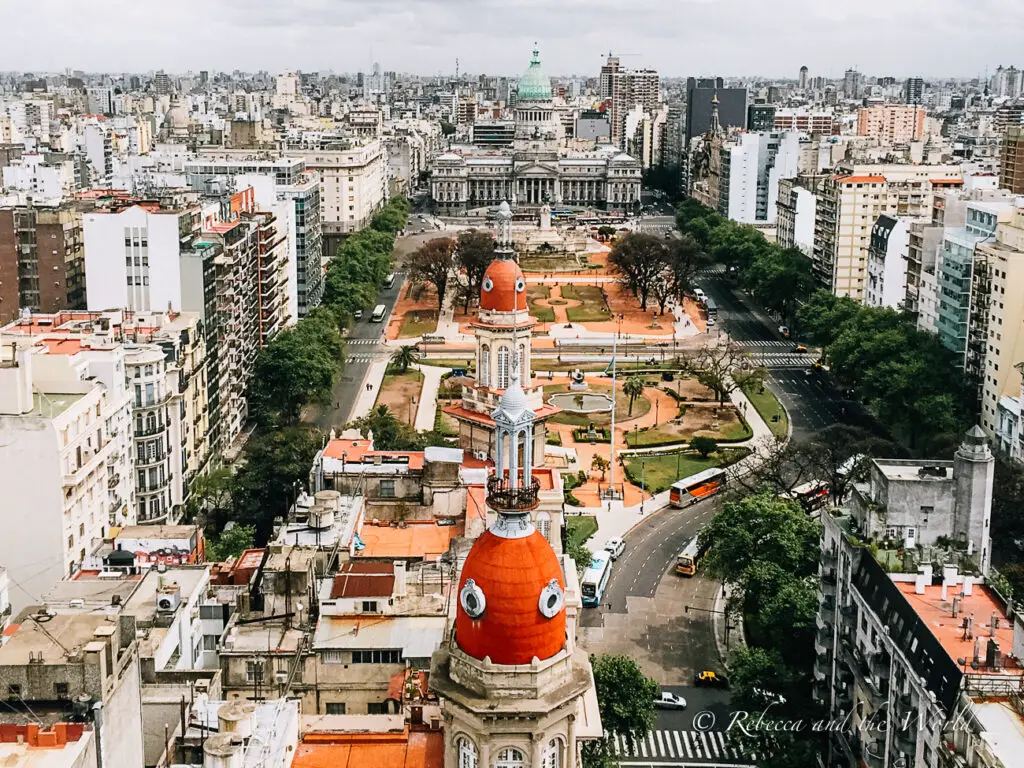
The seductive capital of the country and the most European of all the cities in South America, it’s easy to fall under Buenos Aires’ spell. Start your Argentina trip here to explore stunning architecture, eat juicy steak, drink full-bodied wines and watch an intimate tango show.
For a day-by-day Bueno Aires itinerary , follow my checklist for 3 days in Buenos Aires .
The architecture in Buenos Aires is dazzling, and just walking along the streets will make you gasp in delight. Head inside historic buildings like Palacio Barolo , Teatro Colón and El Ateneo Grand Splendid . Consider booking a guided tour so you can squeeze in all the key sites.
Buenos Aires’ love of art and culture is on display in many of its museums, including the Museo Nacional de Bellas Artes and the Museo de Arte Latinoamericano de Buenos Aires .
Step back in time in the antique shops that line San Telmo’s cobblestoned streets. Every Sunday the entire neighbourhood comes alive with a huge street market. Plan your visit so that you have a Sunday in Buenos Aires just so you can experience this market.
If you want a custom leather jacket made, stop in at one of the many tailors in Buenos Aires (check out my guide here to the best shopping in Buenos Aires ). Do this at the start of your trip, as a leather jacket can usually be turned around in a rapid 48 hours.
No Argentina visit is complete without food, and the city is full of restaurants for all budgets as well as many secret bars. To learn about the culture of Argentina, sign up for a food experience with The Argentine Experience . Or, take a food tour that explores the city’s famous parrillas .
End the night with a tango show . I recommend Bar Sur for its intimate setting. The lavish Faena Hotel has a raunchy Rojo Tango performance – and the hotel itself is worth checking out for its eccentric design.
- Where to stay in Buenos Aires
The city has plenty of places to stay, including:
- BE Jardin Escondido by Coppola was once Francis Ford Coppola’s house and is now a cosy boutique hotel in the trendy Palermo neighbourhood. | Check rates and book online with Booking.com or Expedia
- The rooms at Hotel Club Frances , in the heart of Recoleta, are spacious and some have a sauna and spa bath. | Check out the latest rates at Booking.com and Expedia
Here’s more Buenos Aires inspiration:
- Buenos Aires bucket list: 101+ things to do
- Where to eat in Buenos Aires
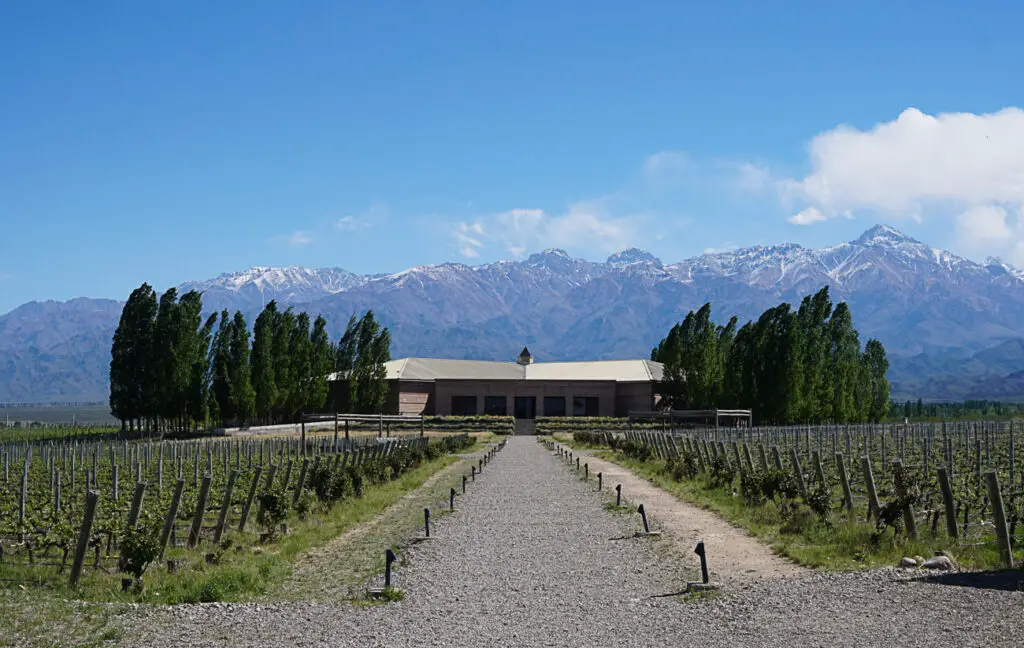
If you like wine, then one of the best places to visit in Argentina is Mendoza. Home to Argentina’s famous Malbec varietal, in a few days you can easily visit several wineries, many of them set against the beautiful backdrop of the Andes.
There are three different wine regions: Maipú , Luján de Cuyo and Uco Valley . Maipú is the closest to Mendoza city and therefore easier to visit, but it’s well worth going out further to taste wine in the stunning Uco Valley.
To explore the wineries, you can rent a bike, hire a private driver ( this tour with driver includes a 3-course lunch! ) or your own car (drink responsibly!) or grab a ticket for the hop-on, hop-off Bus Vitivinicola . We had fun doing a guided winery tour by bike .
When wine gets too much (but does it ever?), Mendoza is also one of the top Argentina destinations for adventure, and there’s rafting, climbing, horseback riding and other outdoor adventures. Or you can explore the city’s museums, churches and plazas. Outside of the city, there’s the famous Puente del Inca (Incan bridge) and hot springs .
Foodies will delight in the many options available, including two restaurants owned by Francis Mallmann, South America’s most well-known chef.
Where to stay in Mendoza
Bohemia Hotel Boutique is located in the quiet residential streets of Mendoza, yet still close to the main areas. | Book your stay on Booking.com or Expedia
3. Bariloche
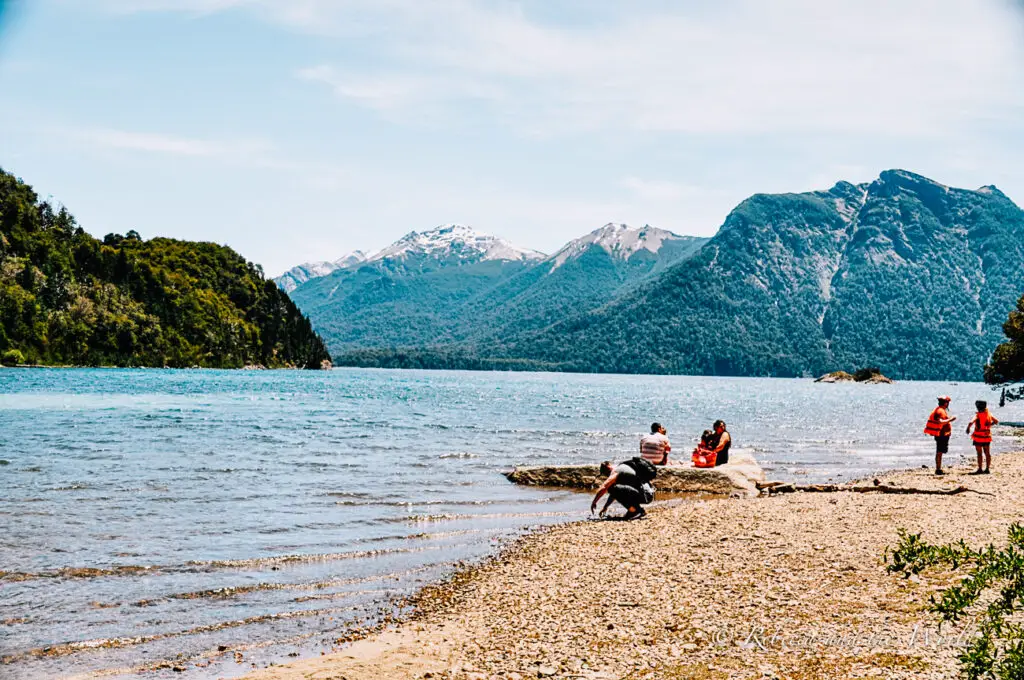
Located in northern Patagonia, Bariloche is popular year-round, with visitors flocking here for skiing, mountain biking, hiking and fishing.
If that all sounds a little too adventurous, Bariloche is also one of the best places in Argentina for chocolate, and it’s easy to spend hours tasting the various chocolates and ooh-ing and ahh-ing over the imaginative window displays. Rapa Nui , Argentina’s most popular chocolate brand, is a must, and I dare you not to bring home boxes of chocolate.
Base yourself here and rent a car to drive the Ruta de los Siete Lagos (Road of the Seven Lakes). The 110 kilometre route is a spectacular journey that winds through – you guessed it – seven lakes. Renting a car in Argentina is straightforward and a great way to see the country.
Just two hours by bus from Bariloche is El Bolsón , a hippy town where you can taste local craft beers and sample vegetarian and vegan food.
Where to stay in Bariloche
Design Suites Bariloche has spacious rooms with views of the lake and the surrounding mountains. | Book a room online today with Booking.com or Expedia
4. San Martín de los Andes
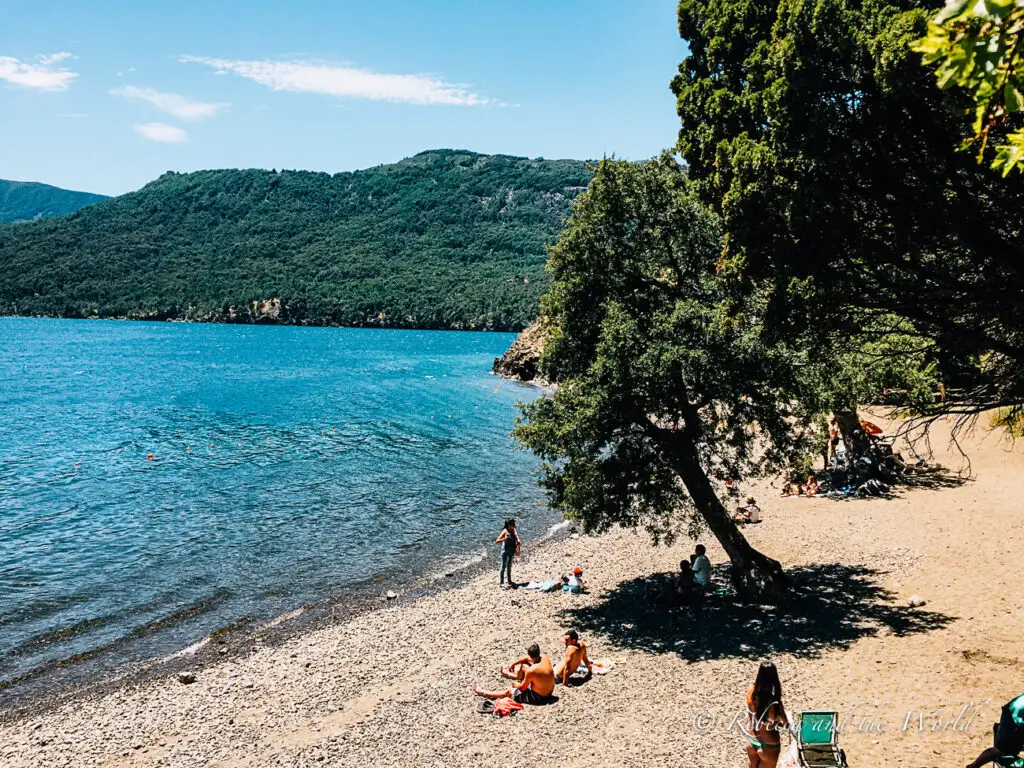
You could be forgiven for thinking you’d somehow stumbled into a quaint Swiss ski village when you turn up in San Martín de los Andes. It’s one of the most unexpected places to visit in Argentina!
Wander around town, take a boat trip on Lago Lácar, go bike riding or head to Playa Catritre and spend the afternoon at the beach alongside Lago Lácar.
Where to stay in San Martín de los Andes
We had a comfy stay at Hosteria La Posta Del Cazador . It’s in a great location, just a hop, skip and jump from Lago Lácar. This Alpine-style hotel is family-owned and operated, and has a snack bar available all day. | Check rates and availability at Booking.com online now
5. Ruta de los Siete Lagos
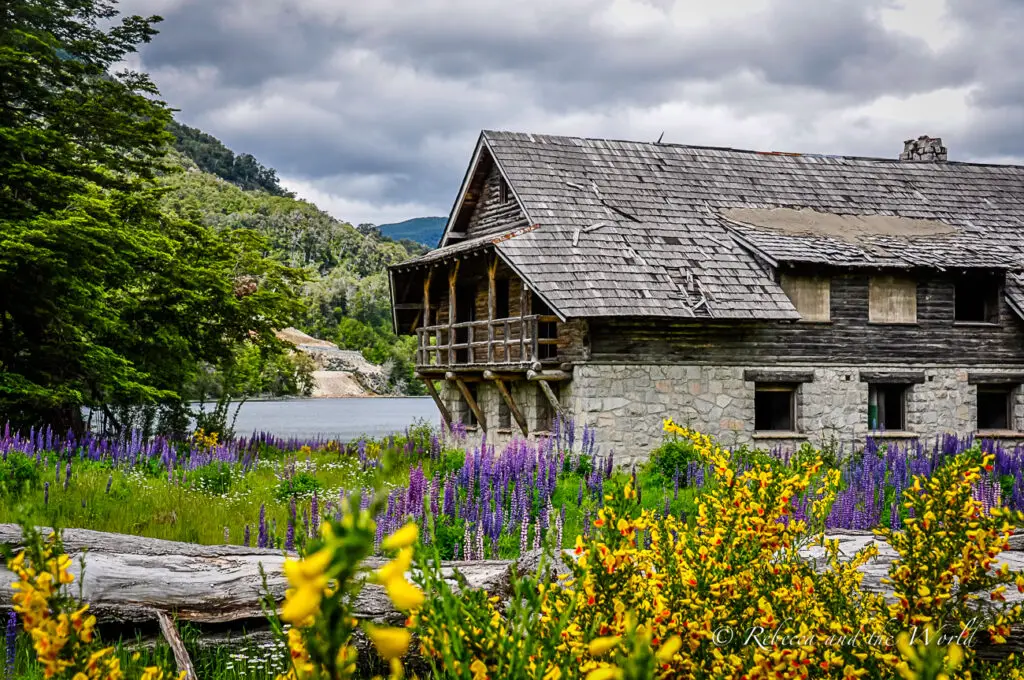
One of the best road trips in Argentina is the Ruta de los Siete Lagos. Stretching a stunning 110 kilometres between Villa La Angostura (near Bariloche) and San Martín de los Andes, this scenic route winds through a series of lakes, each a shade of teal or turquoise that have to be seen to be believed.
Spend a day driving the route, take a guided tour or get a bit more adventurous like we did and bike the Ruta de los Siete Lagos in a couple of days!
Where to stay on the Ruta de los Siete Lagos
You can start the route in Villa La Angostura/Bariloche and end in San Martín de los Andes or vice versa. See suggested accommodation in those sections above.

Head on down to the end of the world – literally. Ushuaia is the southernmost populated city in the world and is the jumping off point for boats headed to Antarctica. Surrounded by natural beauty, it’s a great city for adventure with plenty of Argentina tourist attractions given the tourism appeal of this small city.
There are so many things to do in Ushuaia . Boats crisscross the Beagle Channel , where you’ll see birds and seals sun-baking on guano -covered islands of rocks. On land, you can go 4×4 adventuring into the forests and around the lakes, and visit penguin colonies. It’s a great place to visit in Argentina to get active and outdoors.
Don’t forget to try the enormous king crabs!
Where to stay in Ushuaia
The 5-star Los Cauquenes Resort and Spa will be hard to leave. With only 55 rooms it doesn’t have the feel of other large resorts. The resort has a Jacuzzi, indoor pool, sauna and Turkish steam bath. | Check the latest rates and book a room at Booking.com or Expedia
7. Perito Moreno Glacier
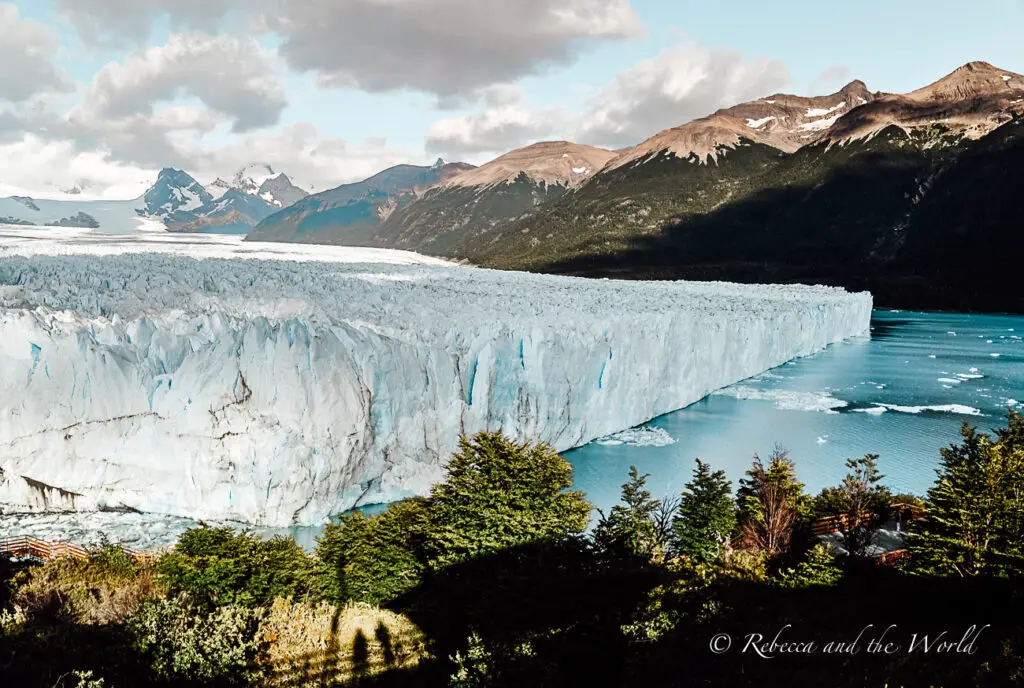
One of the reasons to visit Argentina is to experience nature at its best.
And one of the most impressive, once-in-a-lifetime experiences in Argentina is the chance to walk on a glacier . Strap on some crampons and make your way across the thousands-of-years-old Perito Moreno Glacier . What’s unique about this glacier is that it is advancing up to 2 metres a day.
Trekking on the glacier is one of the coolest things to do in Argentina . It can only be done on an organised tour ( book online here ), but you can visit the national park on your own and wander through the well-maintained walkways with their impressive views of the glacier. There are also great boat tours that take you up close to the glacier.
At the glacier, you’ll witness the roaring crack of the ice “calving” (breaking off) and the subsequent boom as chunks of ice the size of small cars hit the icy waters below.
Back in El Calafate, the town closest to the glacier, the city has a glaciarium that shows how glaciers are formed and an ice bar serving drinks in ice glasses to coat-swaddled guests. At certain times of the year, you can spot flamingos on Lake Argentina.
Where to stay in El Calafate
We loved staying at Hostería La Estepa with its stunning sweeping views over Lago Argentina. | Check rates for this and other hotels in El Calafate on Booking.com
8. El Chaltén
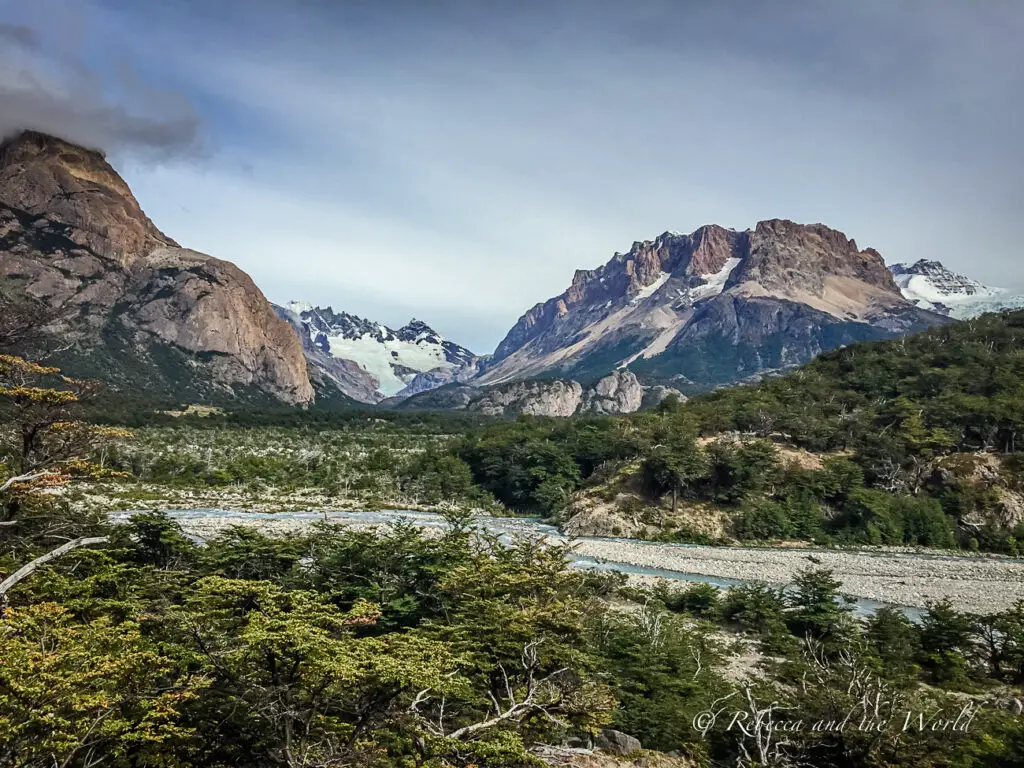
El Chaltén, in Argentine Patagonia, is the base for hiking to the Fitz Roy and Torre mountains. There are a number of different hikes in the area, ranging from easy to strenuous to those that require technical skills to attempt.
Your hotel can provide a map of the various hiking routes in El Chaltén , but always check in with the park rangers for the latest conditions. The best (and busiest) time to visit is December to February; from May to September most places shutter up as icy winds and snow descend.
The small town may not have great wifi or telephone service, but what it lacks in technology it makes up for with a great food and craft beer scene. Both of which you’ll need after a long day of hiking!
Where to stay in El Chaltén
The spacious, padded dome tents at Patagonia Eco Domes have amazing views of the surrounding mountains. There’s no mobile phone coverage or internet, and each dome is powered by solar energy. | Book online at Booking.com or Expedia
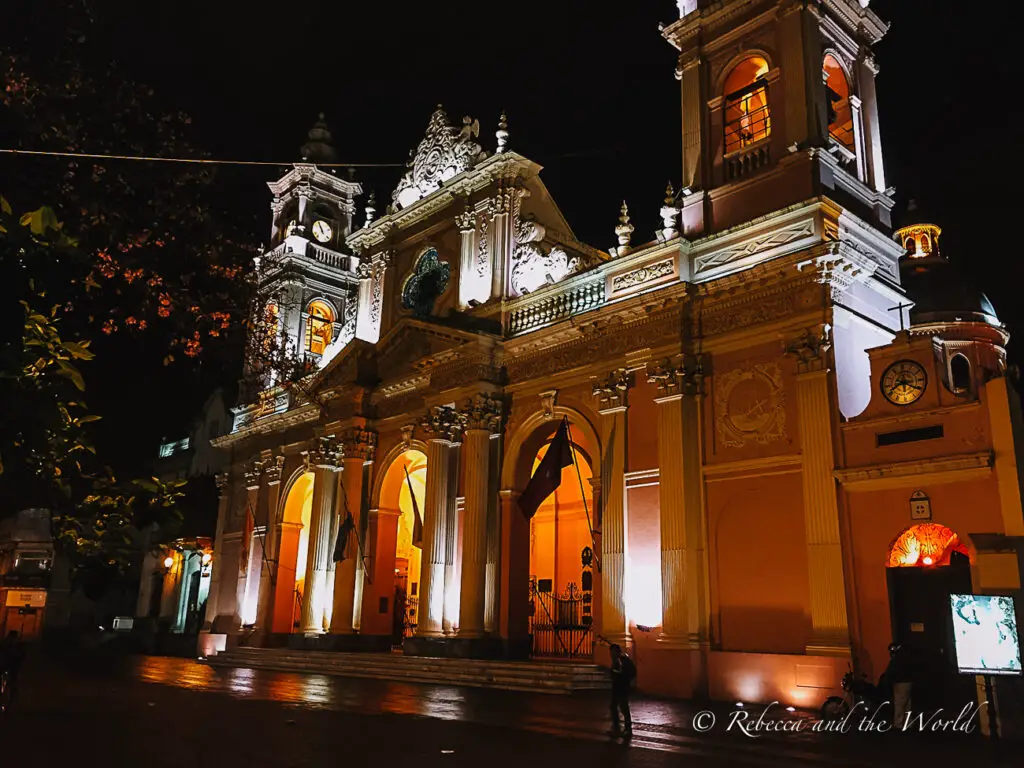
Known as Salta La Linda (the pretty one), Salta is a great city to visit in Argentina both for its own beauty and as a base for exploring Argentina’s vast northern region .
The Museo de Arqueología de Alta Montaña offers a fascinating insight into Incan culture. The highlight of the museum are the mummified bodies of three children who were sacrificed on a nearby mountaintop. Their features are eerily frozen in time. The three bodies are rotated every few months to ensure they are carefully preserved.
You can take a guided walking tour or wander the city by yourself, admiring its well-preserved colonial architecture and churches. Don’t forget to sample the region’s famous empanadas salteñas : pastries filled with vegetables and meat. Ask for them fried (rather than baked).
Where to stay in Salta
Design Suites Salta (where we’ve stayed when we visit Salta) is a modern hotel with spacious bedrooms. It’s located within walking distance of the main area of the city. | Book your stay today on Booking.com or Expedia
10. Purmamarca
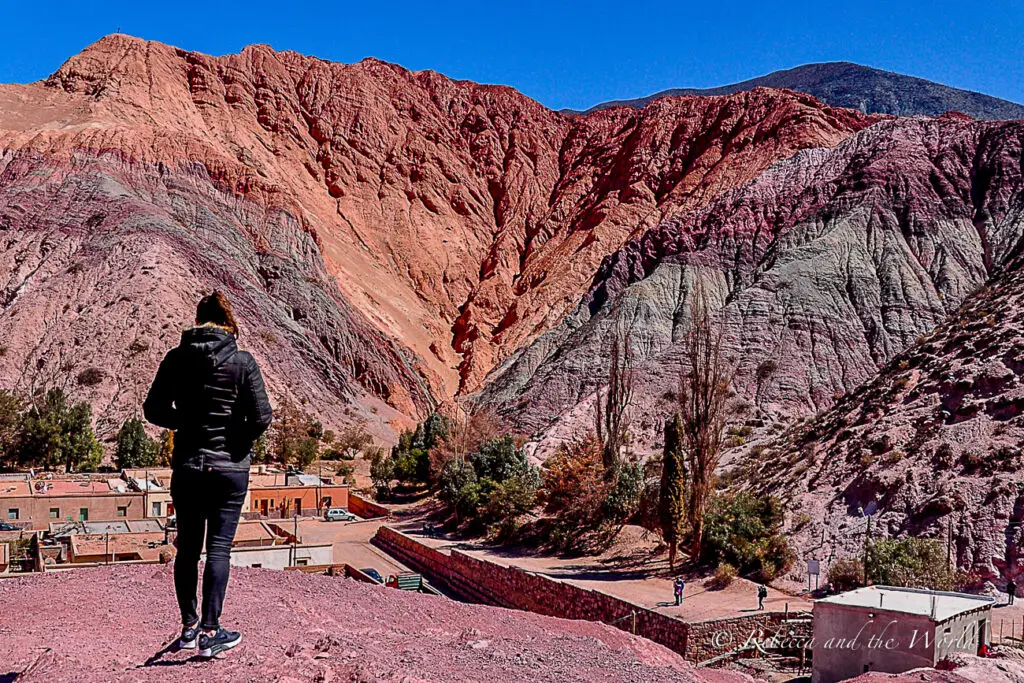
Way north, 160 kilometres from Salta, lies the stunning Cerro de Siete Colores , a layering of pinks and purples and oranges like you’ve never seen. It’s one of the most stunning Argentina sights. You can base yourself in this tiny town with a population of a few hundred people and explore the surrounding region.
It’s a popular town to pick up local crafts including colourful blankets and hand-sewn llama dolls.
Nearby day trips include visits to the equally tiny towns of Tilcara and Humahuaca or to the Salinas Grandes , the second largest salt pan in the world.
Where to stay in Purmamarca
At the foothills of the Cerro de los Siete Colores, El Manantial del Silencio is designed like an old estancia . Rooms are decked out with wrought-iron beds and terracotta tiled-floors. It’s such a beautiful place to stay. | Check the latest rates on Booking.com or Expedia
11. Cafayate
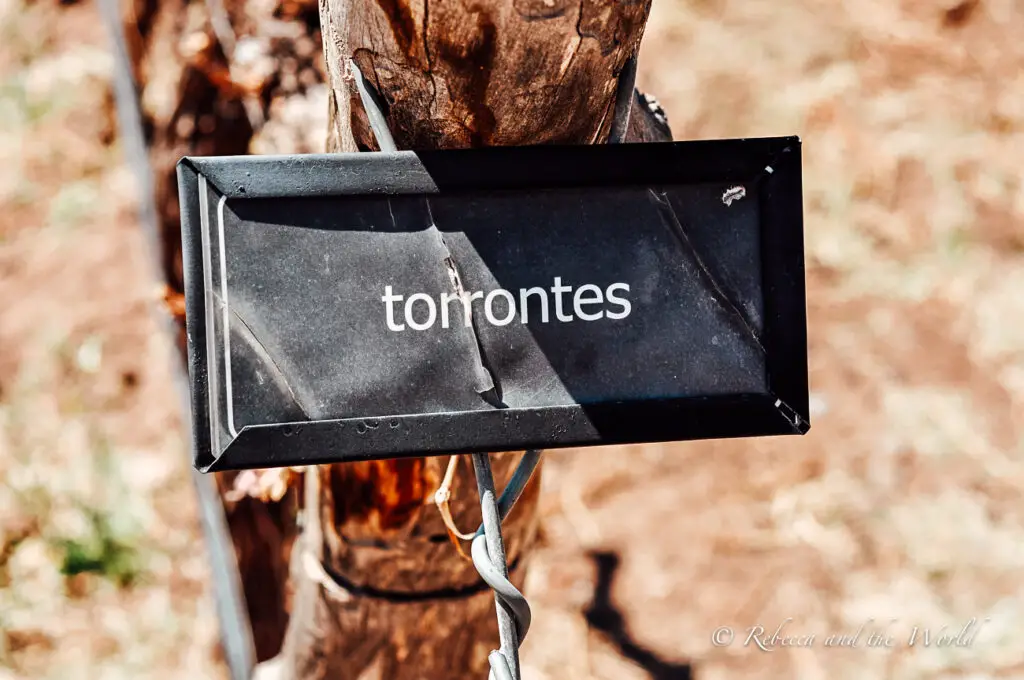
While Mendoza may be most well-known for Argentina wine production, Cafayate offers a different wine experience. Here, you can try the region’s Torrontés variety, a dry white wine that is one of my favourites. It’s easy to spend a few days in Cafayate , driving or biking to the dozens of wineries around the area.
Wine tasting is inexpensive and at most places it’s not necessary to book in advance. San Pedro de Yacochuya , Piattelli and El Porvenir are wineries all close to the town centre.
Wine is in everything here. Try a scoop of Malbec or Torrontés-flavoured ice cream from one of the stores surrounding the town’s main plaza.
Where to stay in Cafayate
Just a few minutes outside the wine town of Cafayate, the rooms at Grace Cafayate have huge bathtubs and great views over the vineyards. | Check rates at Booking.com
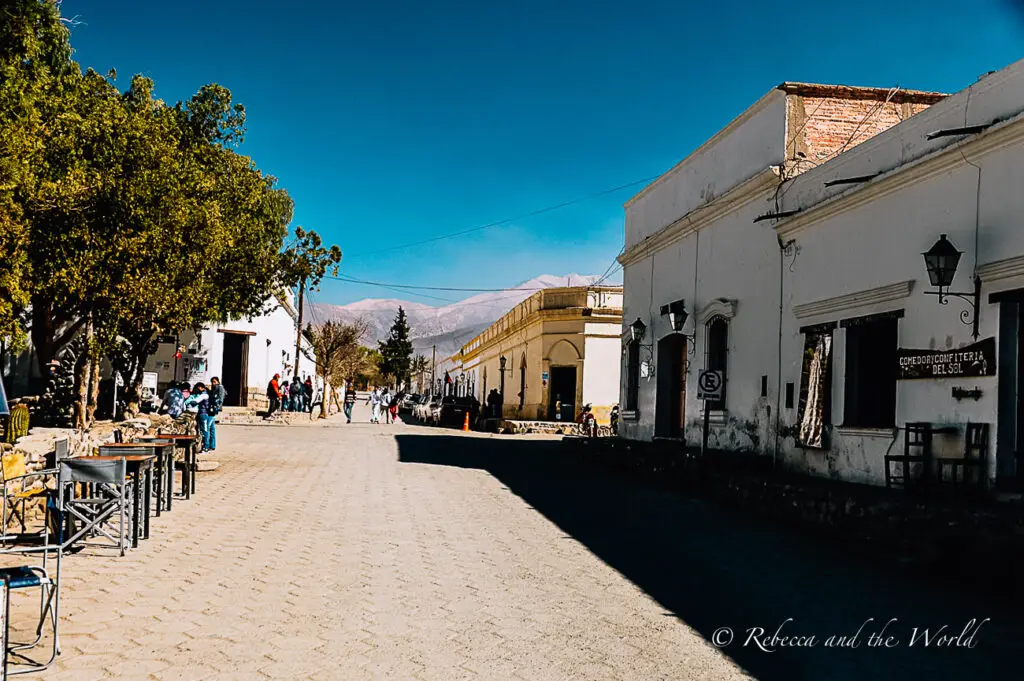
Cachi is a charming village in the country’s north. It’s one of the best places in Argentina to visit to chill out, relax and wander the streets, but if you’re after something more adventurous, local companies offer hiking and biking trips; ask around.
Head out to Miraluna (7 kilometres from Cachi in the small village of La Aguada) for a tour of the bodega. It’s one of the highest wineries in the world. Take a bottle (or two) of their great Malbec back to your hotel to enjoy with a picada plate (Argentina’s version of charcuterie).
We spent a few days here on our North Argentina road trip, but I could have easily relaxed here for a week.
Where to stay in Cachi
La Merced del Alto is a white-washed adobe building with ceramic-tiled floors. The service is detailed and attentive. | Book your stay online with Expedia
13. Iguazú Falls
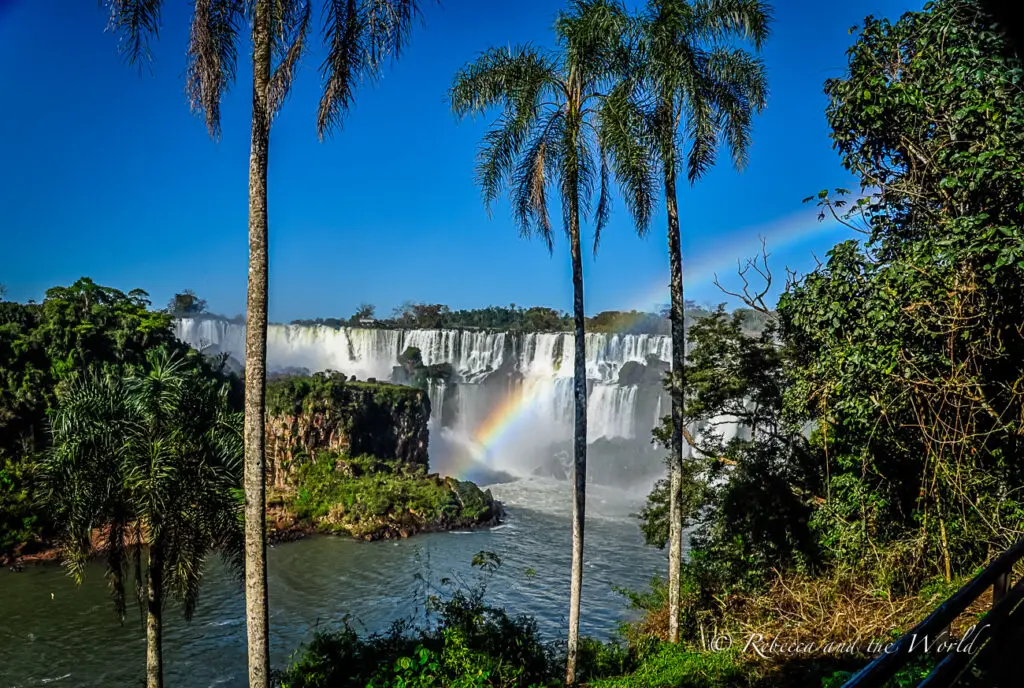
Imagine three kilometres of waterfalls, some up to 80 metres high, some you can get right underneath, another one a wild, gushing spiral that’s so powerful you can’t see the bottom. That’s Iguazú Falls – the largest waterfall system in the world and one of the most beautiful places to see in Argentina.
Straddling the Argentina and Brazil borders, it’s possible to visit the waterfalls on both sides.
On the Argentina side, there’s a series of well-maintained catwalks that get you up close to the thunderous waterfalls. You can do it yourself or book a guided tour that includes a boat ride that zips right under the waterfalls – it’s wild fun and you will get drenched!
The biggest and most spectacular sight of the falls is the Garganta del Diablo (Devil’s Throat). Standing over this gaping hole, listening to the roar of the water, you will appreciate the power of Mother Nature. You can take the train to Garganta del Diablo or walk 2.5 kilometres along a flat dirt road.
Where to stay in Puerto Iguazú
If you want to be located only a stone’s throw from the falls, then choose Gran Melia Iguazú . This is where my husband and I stayed when we visited Iguazú Falls. | Book a stay online at Booking.com or Expedia
14. Córdoba
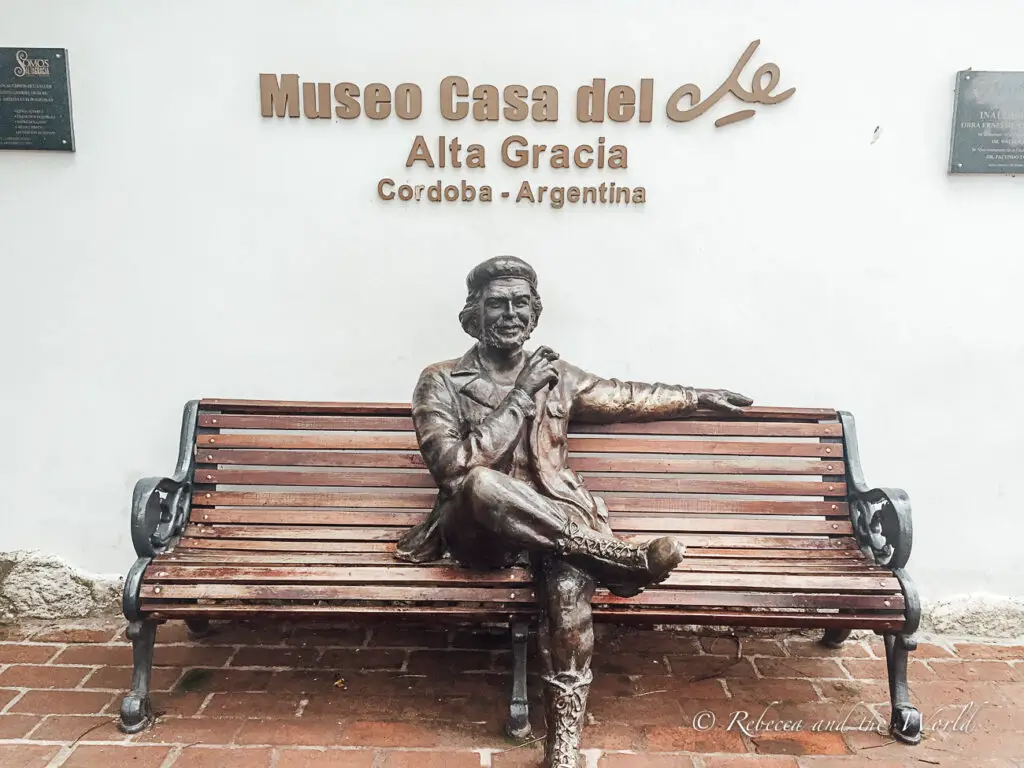
Córdoba is just a short flight from Buenos Aires, and is famous for its Spanish colonial architecture.
Explore the beautiful cabildo and cathedral in the city centre, or have a picnic in Sarmiento Park and watch local families spending time together on the weekend. One of the best things to do in Argentina is to spend an afternoon in a park people watching! Argentines love spending time with friends and family.
In the nearby village of Alta Gracia is the Che Guevara Museum , housed in his childhood home.
If you visit Córdoba around Oktoberfest , join in the celebrations in nearby Villa General Belgrano . It’s a really fun day out with plenty of beer (we still have our huge wooden stein) and entertainment.
Where to stay in Córdoba
The very hip Azur Real Hotel Boutique has a rooftop splash pool and deck and some seriously stylish interiors. It’s located right in the heart of the city. | Check prices and book a room on Booking.com or Expedia
15. San Antonio de Areco
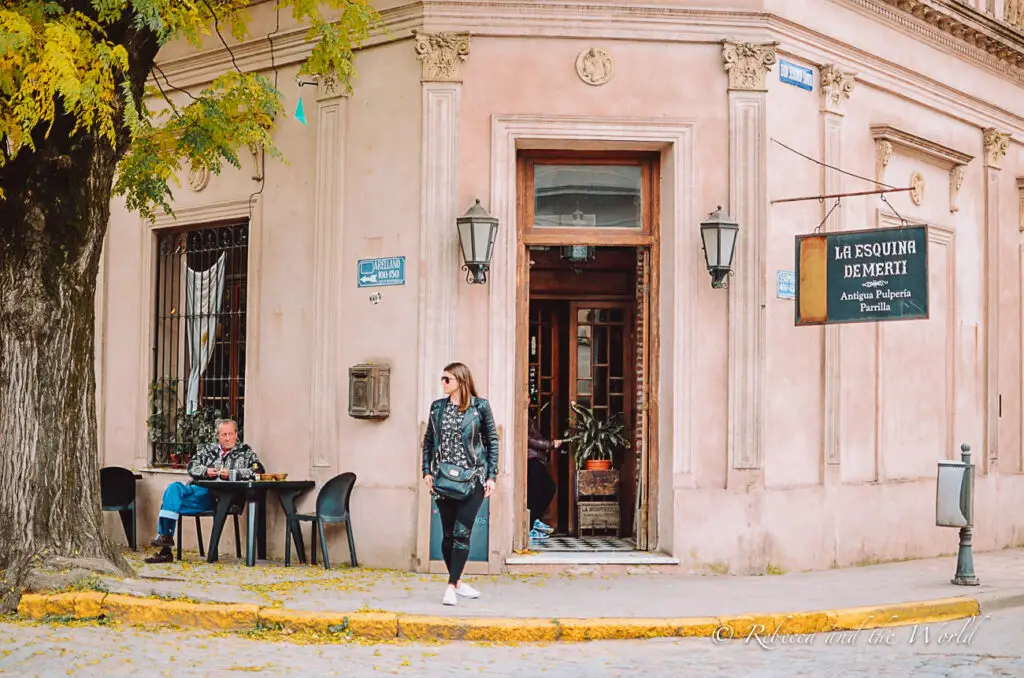
One of the best day trips from Buenos Aires is a visit to the sleepy town of San Antonio de Areco .
Escape the city to gaucho territory, and you can learn more about these Argentine cowboys, go horse riding or shop for handcrafted leather goods. Chow down on an asado and then digest by wandering around the peaceful village square. This tour is a good day trip option .
Where to stay in San Antonio de Areco
Stay at one of the area’s beautiful estancias and experience the charms of rural life in Argentina. Estancia El Ombu is a historic estancia in Argentina. The huge property has plenty of outdoor activities, including horse riding, a swimming pool and asados (barbecues). | Check out the latest rates at Estancia El Ombu online
Final thoughts: Places of interest in Argentina
Argentina’s diversity is well-known, which is why this country is so exciting to visit. With so many different landscapes, cities and natural wonders, it’s a country that appeals to everyone. While Buenos Aires is a must-visit, get outside the city to explore more of Argentina’s incredible destinations. This guide has given you plenty of ideas for discovering why this country is so amazing!
Argentina destinations: FAQs
What are the most beautiful places to visit in argentina.
The beauty of Argentina is hard to contain in a few sentences! The most beautiful places in Argentina have to be Perito Moreno Glacier, Iguazu Falls and the north of the country – places like Salta and Purmamarca. For architecture lovers, Buenos Aires and Córdoba are must-visits. No matter where you go in Argentina, you’ll find something beautiful.
What are 5 things Argentina is known for?
Argentina is known for its delicious food , world-renowned wine, passionate tango dances, fanatic football fans and its stunning natural wonders like the Andes Mountains and Iguazu Falls. Each region of Argentina offers something different, from Buenos Aires’ historic architecture to the colourful hills of northern Argentina and the icy glaciers in Patagonia.
When is the best time to visit Argentina?
Argentina can be a year-round destination, depending on what you want to the do. The best time to visit Argentina is the spring (September to November) and autumn (March to May) months for milder temperatures and fewer visitors.
Is Argentina expensive to visit?
Argentina can be both expensive and affordable, depending on the type of experience you’re looking for. Accommodation is quite affordable in smaller towns and cities, while food at local restaurants often costs around half of what you’d pay in other large Latin American countries. Budget travellers can expect to pay around $50-$75 per day, while those seeking something more luxurious should expect to pay around $150-$200.
- Is Argentina safe to visit?
Yes, Argentina is a safe and enjoyable destination to visit . Like any large country, travellers should exercise the typical precautions, however, most tourist destinations are considered safe, and you can explore the country’s beautiful natural landscapes or vibrant cities without worry.
Did you find this article helpful? Consider buying me a coffee as a way to say thanks!
How many of these amazing places to visit in Argentina have you been or want to go to?
Related posts
Before you go… you might like these other Argentina travel blogs:
- How to plan the perfect 2 weeks in Argentina
- 50 best things to do in Argentina
ARGENTINA TRIP ESSENTIALS
- Book your flight to Argentina online with Skyscanner . I like how this site allows you to find the cheapest days.
- Find a great hotel in Argentina. Check prices on Booking.com and Expedia online.
- Check out the huge range of day tours throughout Argentina on GetYourGuide or Viator . There’s something for everyone.
- Keep those bottles of wine you’ll be buying safe in these wine bags .
- A copy of the Lonely Planet guide to Argentina will be handy. Also pick up a Spanish language guidebook to help you navigate your visit.
- One thing I always purchase is travel insurance ! Travel Insurance Master allows you to compare across multiple policy providers, while SafetyWing is great for long-term travellers and digital nomads.
PIN IT FOR LATER:
If you’ve ever wondered what to do in Argentina, then save this guide to the best places to visit in Argentina to Pinterest so you can plan your trip later!
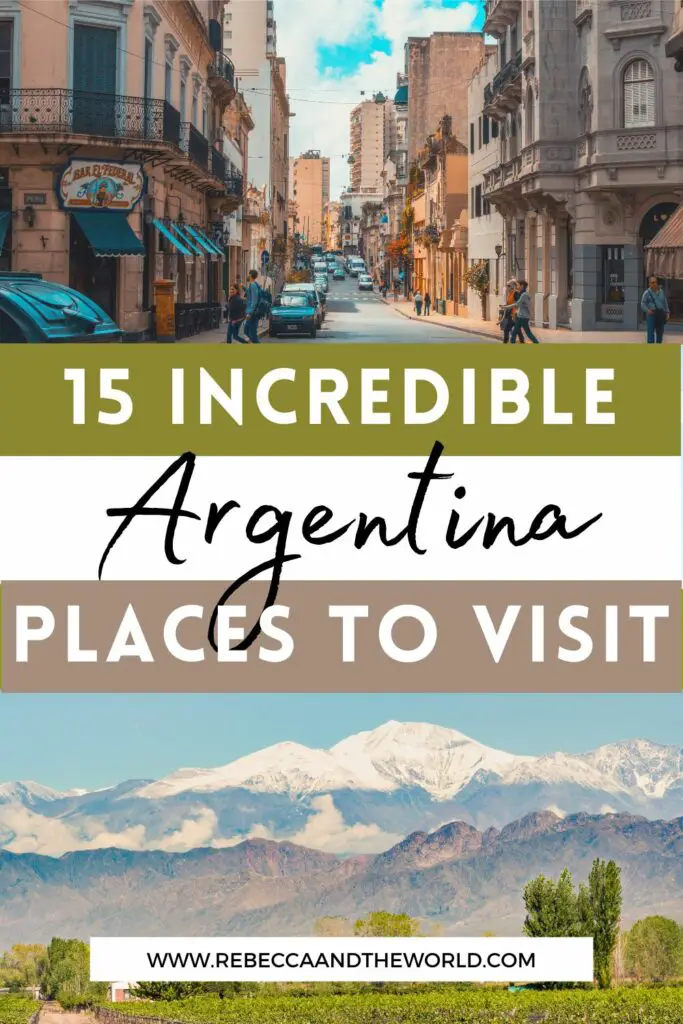
About REBECCA
I'm a travel junkie who started dreaming about seeing the world from a very young age. I've visited more than 40 countries and have a Master of International Sustainable Tourism Management. A former expat, I've lived in Australia, Papua New Guinea, Argentina and the United States. I share travel resources, tips and stories based on my personal experiences, and my goal is to make travel planning just that bit easier.
2 thoughts on “Places to Visit in Argentina: 15 Can’t-Miss Destinations in 2024”
Hi! Great post! Couldn’t agree more with the places you have chosen for this list! There are so many interesting places to visit in Argentina. Hugs, Becci
Hi Becci, thanks for stopping by! My heart is certainly in many of these places still!
Leave a Comment Cancel reply
MORE INFORMATION
ABOUT WORK WITH ME CONTACT PUBLISHED WORK
AFFILIATE DISCLOSURE
AS AN AMAZON ASSOCIATE I EARN FROM QUALIFYING PURCHASES
© 2024 REBECCA AND THE WORLD
Privacy Policy
I ACKNOWLEDGE THE WURUNDJERI AND BOON WURRUNG PEOPLE OF THE KULIN NATION AS THE TRADITIONAL OWNERS OF THE LANDS AND WATERWAYS OF THE AREA I LIVE ON. I PAY MY RESPECTS TO ELDERS PAST AND PRESENT AND CELEBRATE THE STORIES, CULTURE AND TRADITIONS OF ALL ABORIGINAL AND TORRES STRAIT ISLANDER PEOPLE ACROSS AUSTRALIA.

- Privacy Overview
- Strictly Necessary Cookies
This website uses cookies so that we can provide you with the best user experience possible. Cookie information is stored in your browser and performs functions such as recognising you when you return to our website and helping our team to understand which sections of the website you find most interesting and useful.
Strictly Necessary Cookie should be enabled at all times so that we can save your preferences for cookie settings.
If you disable this cookie, we will not be able to save your preferences. This means that every time you visit this website you will need to enable or disable cookies again.
We've detected unusual activity from your computer network
To continue, please click the box below to let us know you're not a robot.
Why did this happen?
Please make sure your browser supports JavaScript and cookies and that you are not blocking them from loading. For more information you can review our Terms of Service and Cookie Policy .
For inquiries related to this message please contact our support team and provide the reference ID below.

IMAGES
VIDEO
COMMENTS
Temperature. The average high temperature in the northern city of Buenos Aires is 26°C in March, with an average low of only 18°C. In the southern Patagonia region, the average high is 24°C and the average low is 11°C, and temperatures in the central parts of the country tend to be even hotter, with average highs of around 28°C.
Get Started. March is a great time to travel to Argentina as summer turns its head towards autumn. This is when crowds and prices beginning to taper off, especially in Patagonia and the Atlantic coast. Travelers heading north to Iguazú Falls will also find less humidity towards the end of the month. Read on to.
Discover events happening in Argentina in March and activities that are perfect for a March trip to Argentina. ... Definitely recommend to visit this place! Michael vd Berg — Google review. A truly beautiful and awe-inspiring part of the world. Take your time to stroll around the park to really take in the sights and admire the flora and fauna.
Here is the weather in Argentina in March, categorized by geographical region: North Argentina. In March, northern Argentina experiences a gradual change from the tropical warmth of the summer months. In the northern provinces like Salta and Jujuy, March temperatures range from 20°C to 30°C (68°F to 86°F).
Ushuaia. Ushuaia is another of the best places to go in Patagonia in March. As one of the southernmost cities in the world, it is blessed with highs of 50℉ during March and a mild average of 48℉. Fondly referred to as the End of the World, the port town is in a tremendously remote and picturesque location.
Some areas of Patagonia become totally inaccessible in winter months, so going now—during the beginning of shoulder season—is a smart move, especially after the summer winds die down. Ushuaia, Patagonia's southernmost city, sees highs in the mid-50s during March while towns further north see highs in the mid-60s.
12. Parque Nacional Los Glaciares. Best for awesome glaciers. Spanning more than 5956 sq km (2300 sq miles) of iceberg-filled lakes, jagged Andean peaks and - most notably - gigantic glaciers, this park in southern Patagonia is one of Argentina's signature tourist attractions.
In Buenos Aires, the temperature hovers between 22°C to 24°C, with lows around 16°C and occasional highs hitting 26°C. Precipitation is moderate, with an average of 10-days of rainfall over the month. The weather is chillier further south. In Patagonia, temperatures average around 8°C to 12°C but can go as low as 4°C, especially if it rains.
As most of the activities in this itinerary are outdoors, going in the fall will be ideal, particularly in March when the weather is warm and crowds scarce. ... The Top 15 Places to Visit in Argentina The Glaciers of Argentina 10 Amazing National Parks in Argentina Los Glaciares National Park: The Complete Guide ...
San Antonio de Los Cobres - Tren a Las Nubes. The Tren a Las Nubes is definitely one of the most unique things to do/ places to visit in Argentina. It's one of the highest altitude train rides in the world at over 4200m elevation, and goes through some watercolored highlands and a magical viaduct.
15. Ski powder in the Lake District. Between June and September, Nahuel Huapi - Argentina's largest national park - transforms into a playground for winter sports enthusiasts. The towering peaks that overlook the lakeside city of Bariloche attract skiers and snowboarders from across South America and beyond.
15. Salta. Ending this list of the best places to visit in Argentina on a high with a hidden gem - Salta. This capital city of the province of the same name is absolutely beautiful and best of all because it's off the beaten tourist path, it's uncrowded, peaceful, and offers an authentic Argentinian experience!
Northwestern Argentina. 12. Summit the lofty peak of Volcán Aconcagua. The highest mountain outside of the Himalayas, Aconcagua invites adventure seekers and adrenaline junkies looking to summit one of the "Seven Summits" - the highest mountains in each continent.
Visit the north and save money during the low season (June and August) Beyond the ski resorts of the Lake District, Tierra del Fuego and Mendoza province, the winter is a quieter and cheaper time to travel in Argentina. June and August are both excellent months for exploring the north, including sites such as the wildlife-rich wetlands of ...
The Top 15 Places to Visit in Argentina. Buenos Aires is home to cobblestone boulevards, sensual tango halls, century-old cafes, and designer boutiques. If you venture to the east, the Atlantic Ocean offers surfing and the chance to see whales, and penguins. To the north, explore mountains, cactus forests, and lunar landscapes that give way to ...
Here are 14 wonderfully warm places to visit in March. ... Buenos Aires, Argentina scrollah / Shutterstock. March's mild fall weather is a relief after the hot and humid Argentine summer. Buenos Aires is known as the Paris of South America for its European-style monuments and architecture, ...
Ushuaia (3 days) Ushuaia is the southernmost city in Argentina (and the world). It's the gateway to Antarctica and is a busy port city for Antarctica cruises. Tierra del Fuego National Park is one of the best places to visit, and the scenery is stunning. You can fly to Ushaia from El Calafate.
Day 12: Colonia, Uruguay. Day 12 of your 2-week Argentina itinerary and an opportunity to visit your third country in two weeks: Uruguay. Colonia, or Colonia del Sacramento (to give it its full name), is a short hop across the Rio de la Plata from Buenos Aires.
After a day on the trails, the village's La Cerveceria local brewery is the go-to hotspot in town for a post-hike thirst-quencher. 3. Los Glaciares. The gorgeous Los Glaciares or Glaciers National Park is Argentina's second-largest park, and one of the largest and most easy-to-get-to ice fields on the planet.
This three-week Argentina itinerary takes in all of the country's highlights, from the incredible Iguazú Falls to the mountains of Patagonia. Argentina is one of those countries that has it all. A world class city, jungle waterfalls, desert landscapes, wine country, mountain lakes, and snow-capped peaks… and that's really just the beginning.
Uyuni, Bolivia. Uyuni is a fantastic spot to visit in March because this is one of the cheapest places in South America. You can expect some great accommodation deals that can really save you money! It is one of the best places in South America to visit in March. The weather in Uyuni typically ranges from 67°F to 65°F.
Besides the waterfall, there are also many interesting animals to see in the park, such as monkeys, anteaters, jaguars, and more than 2,000 types of plants. 3. Mar del Plata. Mar del Plata used to be a place where wealthy people from Argentina went to relax, but now it is a popular beach resort city.
Your next stop is one of the top places to visit in Argentina: Iguazu Falls. This thunderous natural sight is considered to be the largest waterfall in the world; so large, in fact, that it marks the border between Argentina and Brazil. ... The Top 10 Places to Visit in March. The 15 Best Vacation Destinations in December (2023) Leave a Comment ...
Maui. #3 in Best Places to Visit in March 2024. Although March falls within Maui's peak season, its excellent weather (think: average daytime temps in the high 70s and low 80s) and prime ...
9. Salta. Known as Salta La Linda (the pretty one), Salta is a great city to visit in Argentina both for its own beauty and as a base for exploring Argentina's vast northern region. The Museo de Arqueología de Alta Montaña offers a fascinating insight into Incan culture.
Listen. 1:22. Monthly inflation in Argentina slowed more than expected in March, cooling for the third straight print as President Javier Milei 's austerity hurts consumer spending. Consumer ...